

Best Portable Carbon Monoxide Detector to Keep You Safe During Travel
Electronics , LUGGAGE
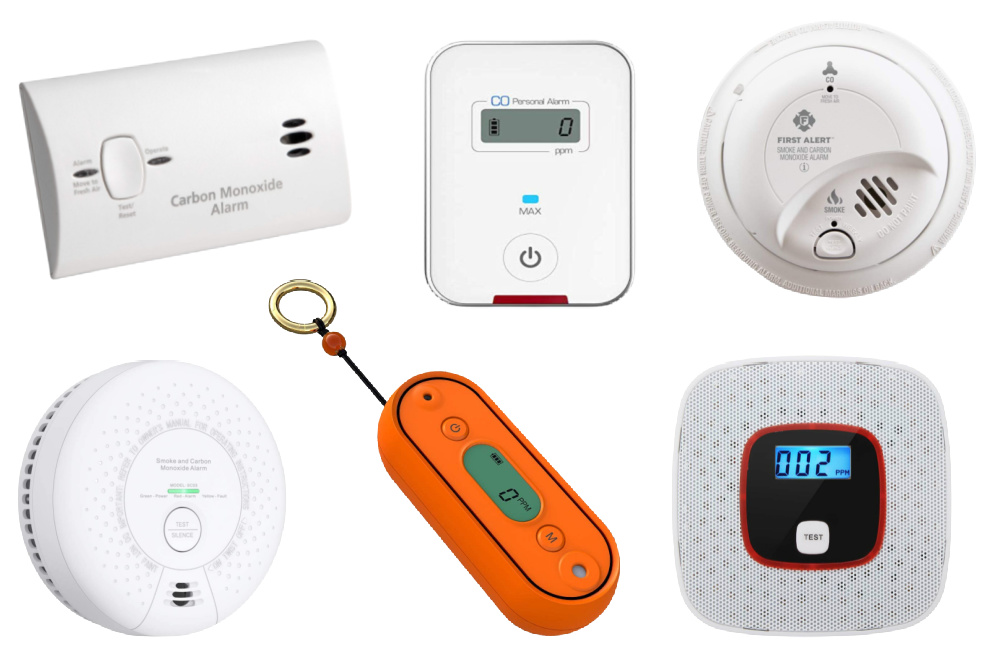
Support TFG by using the links in our articles to shop. We receive a small commission (at no extra cost to you) so we can continue to create helpful free content. We earn from qualifying purchases made to the featured retailers. Thank you, we appreciate your support!
You’ve heard stories about people suffering the ill effects of carbon monoxide poisoning while on vacation. The only way to stay safe is to be prepared. Our readers share the best portable carbon monoxide detector to take with you so you can relax and enjoy your trip without worry!
Best Travel Carbon Monoxide Detector
Written By: Michelle Nati
Table Of Contents
You may not have thought of bringing a travel carbon monoxide detector with you on a trip, but if you’ve seen the news, it may be something you’re now considering taking with you. Carbon monoxide is a colorless, odorless, tasteless gas that is created through burning wood, charcoal, propane, or any other fuel. It can accumulate to dangerous and often fatal levels when a home or car is improperly ventilated.
Not everywhere you stay will have their own carbon monoxide or smoke detector, but you can carry one with you. A portable unit is fairly inexpensive, easy to pack, and can save your life. When it comes to carbon monoxide, it’s better to be safe than sorry. Our readers offer a helping hand by sharing reliable brands that can give you peace of mind.
Portable Carbon Monoxide Detector Reviews by Readers
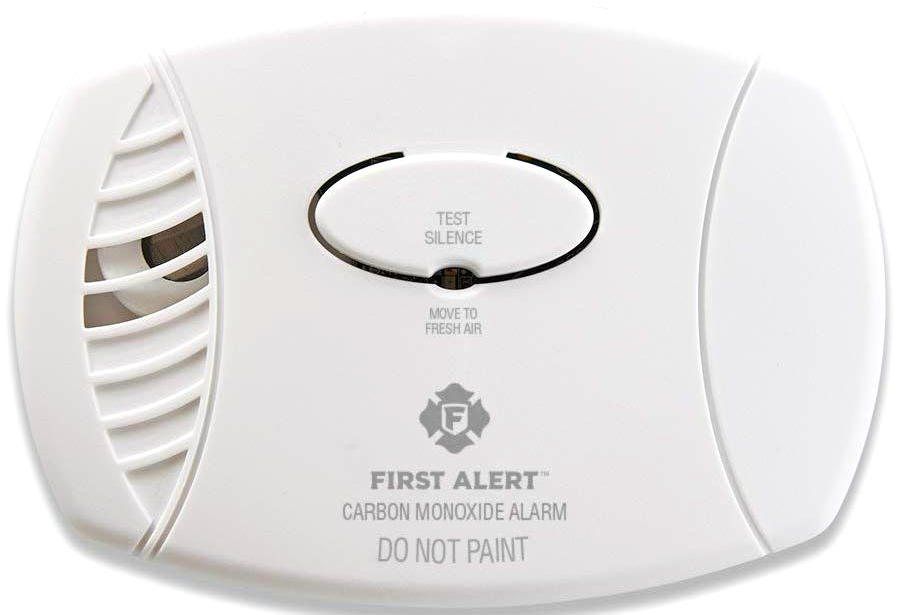
First Alert CO605 Alarm
Best Travel Gas Detector: First Alert CO605
When powered, the First Alert CO605 monitor’s red light consistently glows but blinks when your battery gets low. It can be placed just about anywhere and will beep when it senses unacceptable levels of CO. One reader says, “We took one on our last trip to Ireland . It fits perfectly in the bottom of my suitcase between the handles.”
Find out which reading device is best for you!
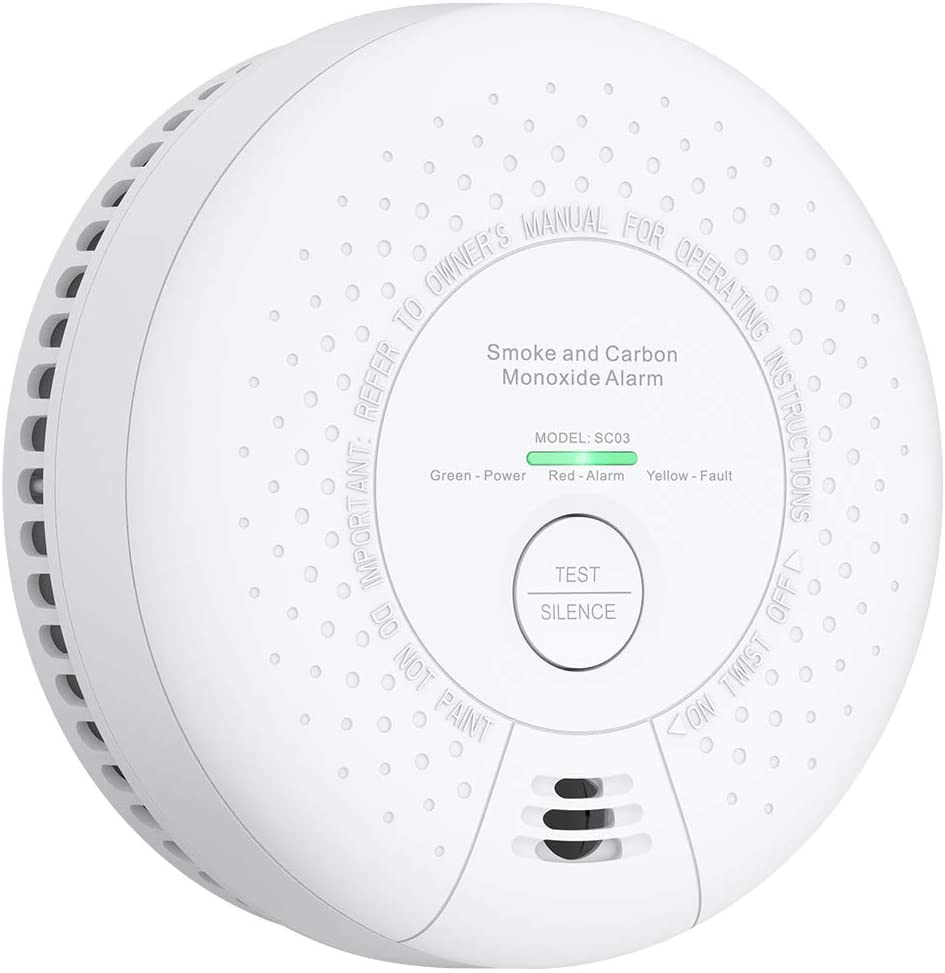
X-Sense Smoke and Carbon Monoxide Detector
Best Travel Carbon Monoxide Alarm: X-Sense
This battery-operated detector by X-Sense will set off a loud, repeated beep when the room begins to fill with high levels of gas or smoke. With a built-in lithium battery; provides continuous monitoring of smoke and CO levels, even if there’s a power failure; an end-of-life signal will let you know when it’s time to replace the unit for safety. The unit has an easy to read LCD display that tells you the level of CO in the air. One reader who swears by this product says simply, “I travel with this one.”
Check out more great travel gadgets for your next trip!
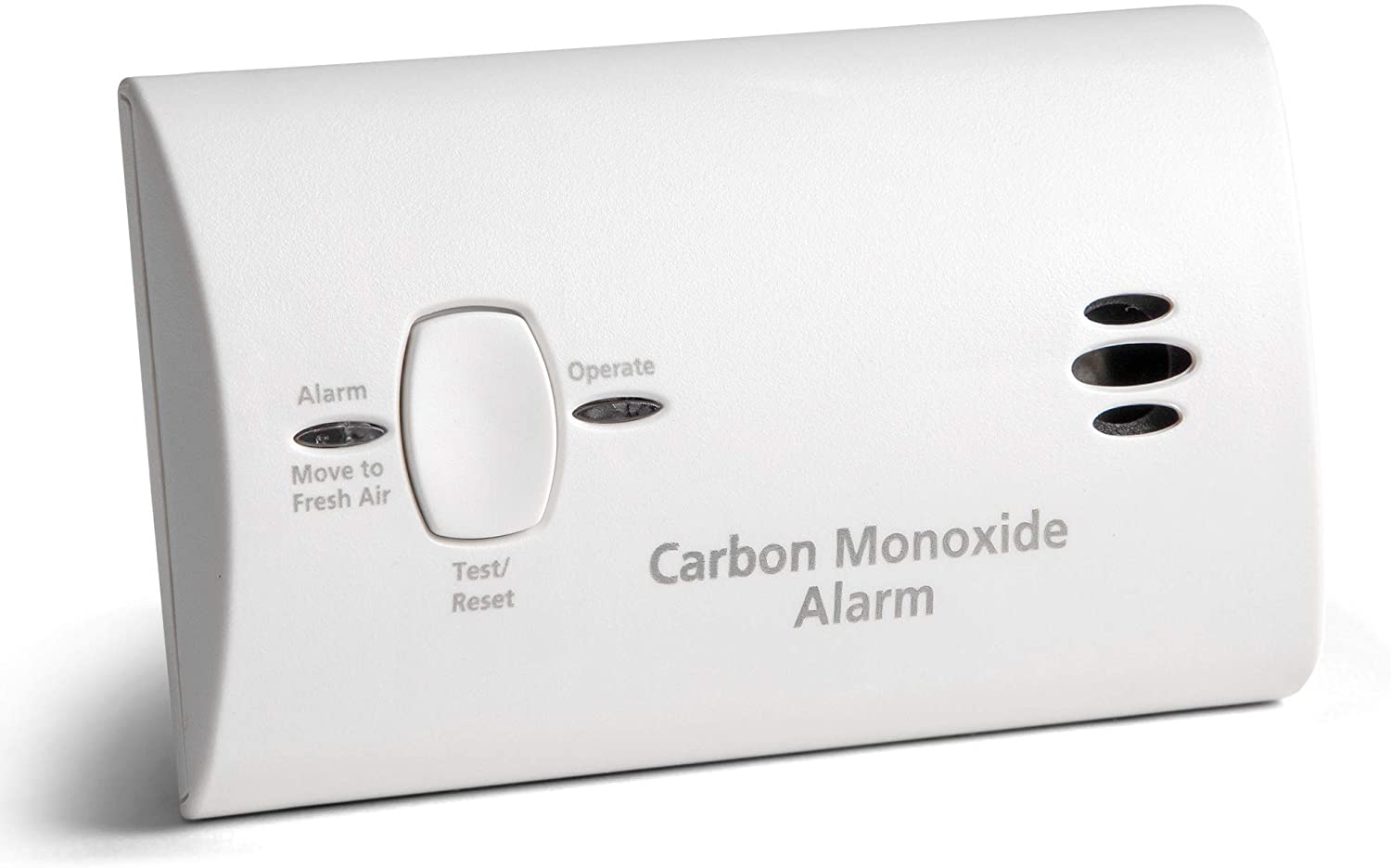
Kidde Carbon Monoxide Alarm
Best Portable Mini Carbon Monoxide Detector: Kidde
Pros who fix gas furnaces often suggest the Kidde as their go-to carbon monoxide detector because they say it’s the most accurate on the market and has a reputation for being reliable. It’s easy to set up, has a loud (but not annoying) alarm, and a bright LED display. One reader tells us she’s sold, saying, “I am buying this one for my next trip to Italy .”
Stay connected with these travel electronics !
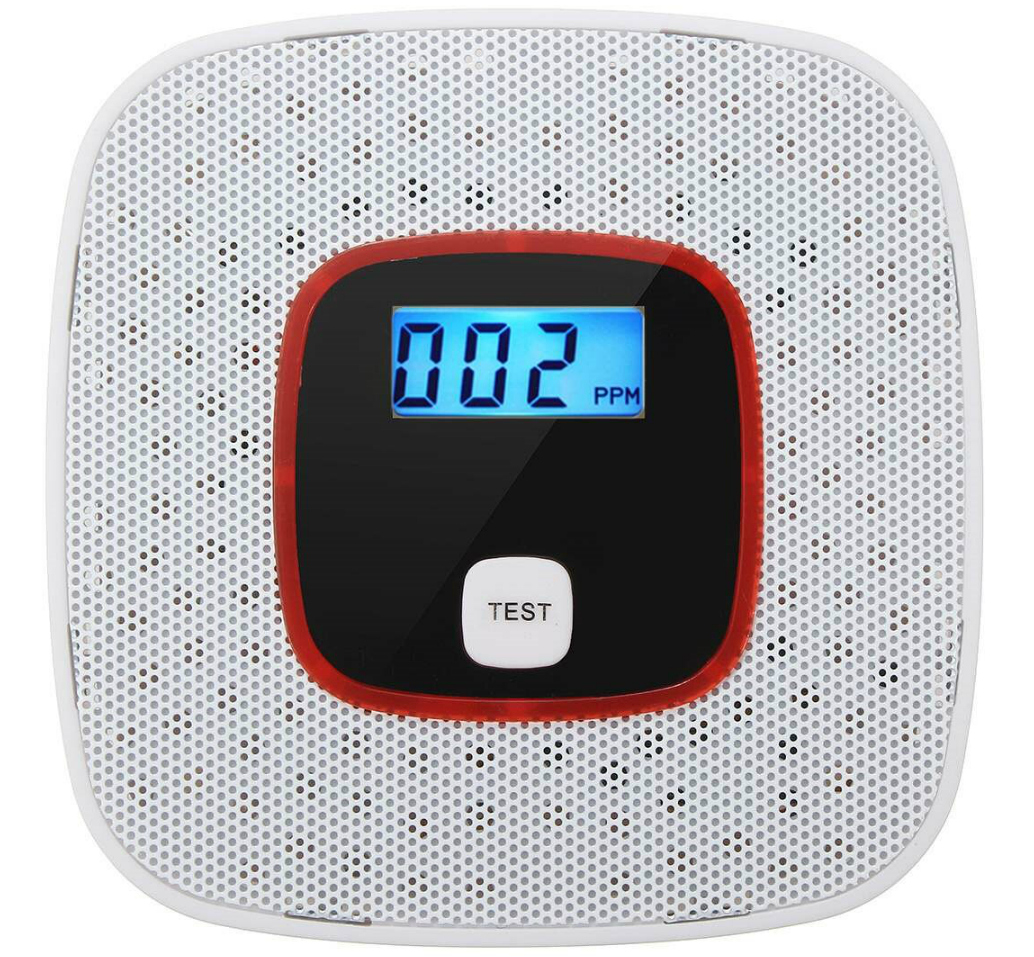
Alert Pro Carbon Monoxide Alarm Detector
Best Personal Carbon Monoxide Detector: Alert Pro
This Alert Pro detector has a light on its face that blinks every so often to let you know that it’s powered and doing the job it’s supposed to do. It also has a large, easy to read LCD display that lets you know levels of carbon monoxide wherever you are.
One reader rates this detector among her favorite travel accessories. She says, “It’s small and lightweight, and gives me peace of mind. I’m glad I’m not the only one who is afraid of carbon monoxide poisoning.”
Bring one of these mirrorless cameras to capture memorable moments!
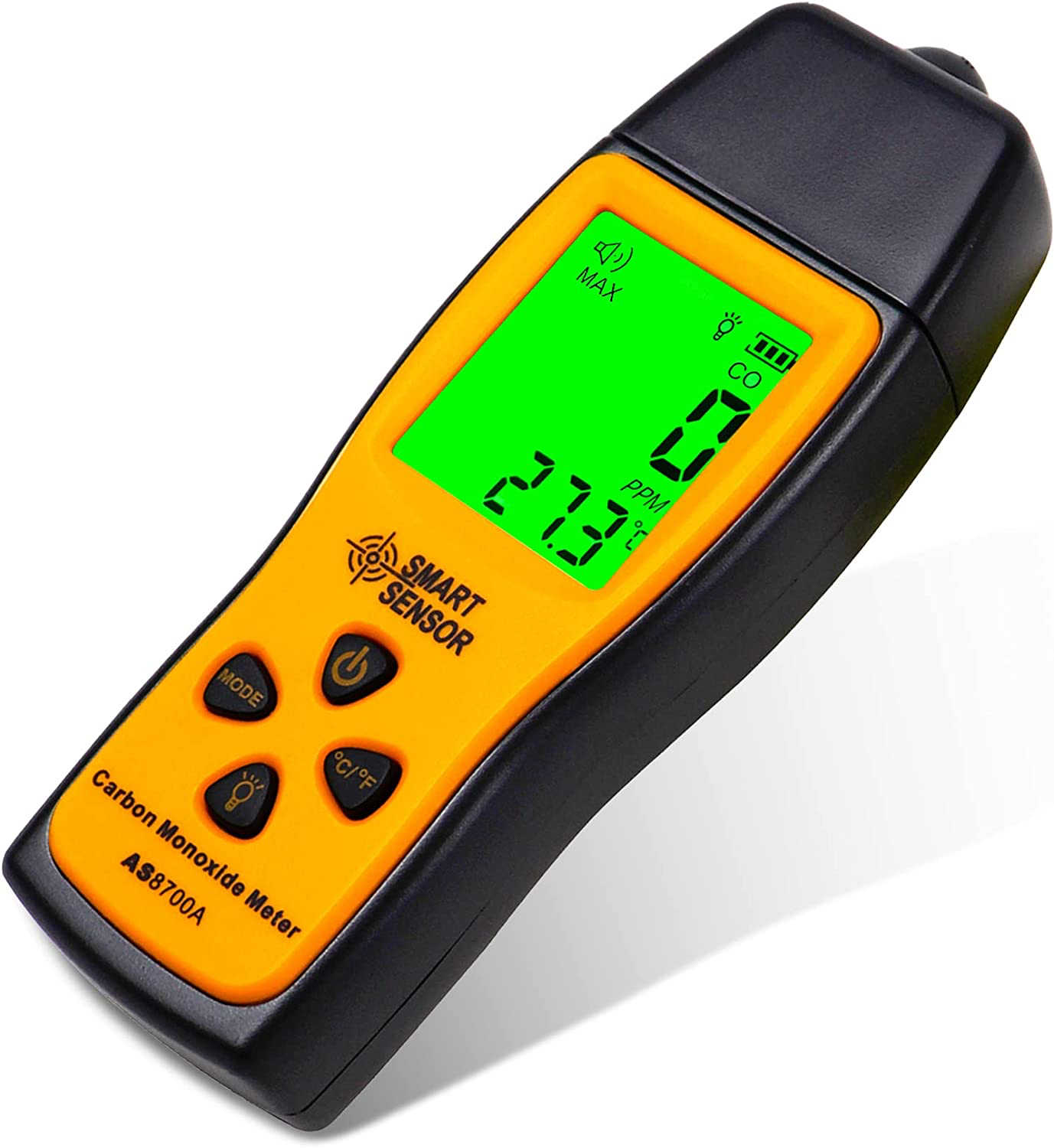
Lunarlipes Portable CO Detector
Best Handheld CO Detector: Lunarlipes
This handheld carbon monoxide monitoring device by Lunarlipes offers great comfort in a small package. Handheld and packing a powerful alarm to warn you of dangerous carbon levels, it’s battery operated, and is compact enough to pack in your carry-on!
Use this electronic trip checklist for your next trip!
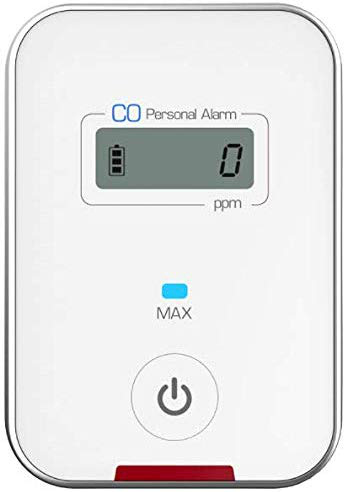
Forensics Travel CO DETECTOR
Best Travel CO2 Detector: Forensics
“Small and handy” is how one reader describes this carbon monoxide detector by Forensics , which looks more like a computer accessory than it does a monitor. It’s higher priced but has multiple alarms for various exposure levels, a one-year warranty, and is very packable, It gets the job done for the traveler who enters unknown, indoor spaces with questionable ventilation.
Take a look at this post on how to block out snoring noise!
Portable Carbon Monoxide Detector Comparison Chart
Should carbon monoxide detectors be placed high or low.
Carbon monoxide is lighter than oxygen, so greater concentrations of it will be higher. Therefore, detectors are most effective when they are placed higher in a room. The best thing to do with your detector while on vacation is to place high, like next to your bed.
Does Carbon Monoxide Make You Sleepy?
It can. As a matter of fact, sleepiness is one of the symptoms of carbon monoxide poisoning. Headaches, nausea, and fatigue are also symptoms and sometimes can be mistaken for flu-like illnesses. Remember, carbon monoxide is odorless, colorless, and tasteless, so if there is too much of the gas circulating, you may not know it without the assistance of a detector.
Overexposure to high levels of carbon monoxide can cause brain damage or even death. If you believe you’ve been exposed, move to a source of fresh air immediately.
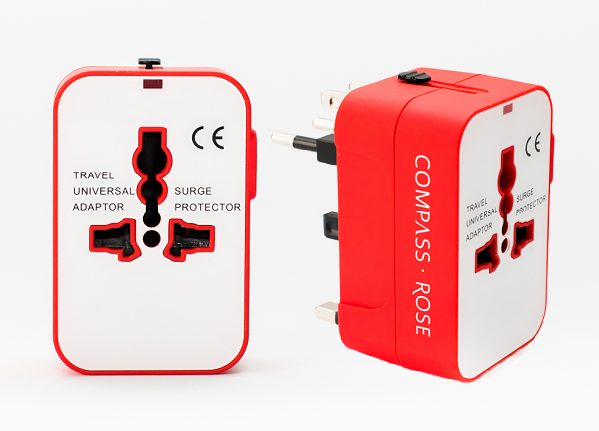
Compass Rose International Universal Travel Adapter
How to Power a Small Carbon Monoxide Detector
Most travel carbon monoxide detectors will be battery operated, but you might choose one that plugs into an outlet. For a trip overseas, you’ll need to bring a travel adapter , and in some cases a converter to account for different voltages, dependant on all the electronics you end up packing.
Determine whether you need a travel adapter or a converter in this video !
In order to understand the difference between an adaptor and converter, watch the video above to learn more. A simple way to remember it is, an adapter fits the outlets and a converter changes the electrical current so your electronics don’t blow a fuse!

Compass Rose Packing Cubes (Left: Medium Cubes | Right: Slim Cubes)
Packing a Carbon Monoxide Detector
Who says packing cubes are limited to clothing? Many of our readers use them to pack much of what they bring on their trips, as they allow you to organize by number and color, so you know what’s in each bag.
Not only do these handy cubes allow you to keep your things organized and compact, but they can also be used to store electronics and other necessary accessories such as travel carbon monoxide detectors and batteries! Padding such items with clothing and slipping them into a packing cube ensures nothing gets rattled during your journey.
The Compass Rose Packing Cubes are offered in two sizes: slim and medium. The slim size cubes measure 13” x 5” x 2.8”, and the medium size cubes measure 2.8” x 13” x 8.5”. Both fit an international carry-on suitcase. Users say the medium size is great for bulkier items!
We put together a five-part YouTube series showing the different methods to use packing cubes for travel. If you use this specific packing strategy, packing cubes can also compress your belongings. This is the secret to traveling carry-on only!
What’s your favorite portable carbon monoxide detector? Share and comment below!
For more ideas on travel gadgets, please read:
- What are the Best Noise Canceling Headphones for travel?
- Best Portable Power Bank Chargers for Travel
- Stop Tangled Electronic Cables with these Travel Cord Organizer Options
- Best Travel Kettle Will Help You Start Your Day Right
LIKED THIS POST? PIN THIS PIC TO SAVE IT!
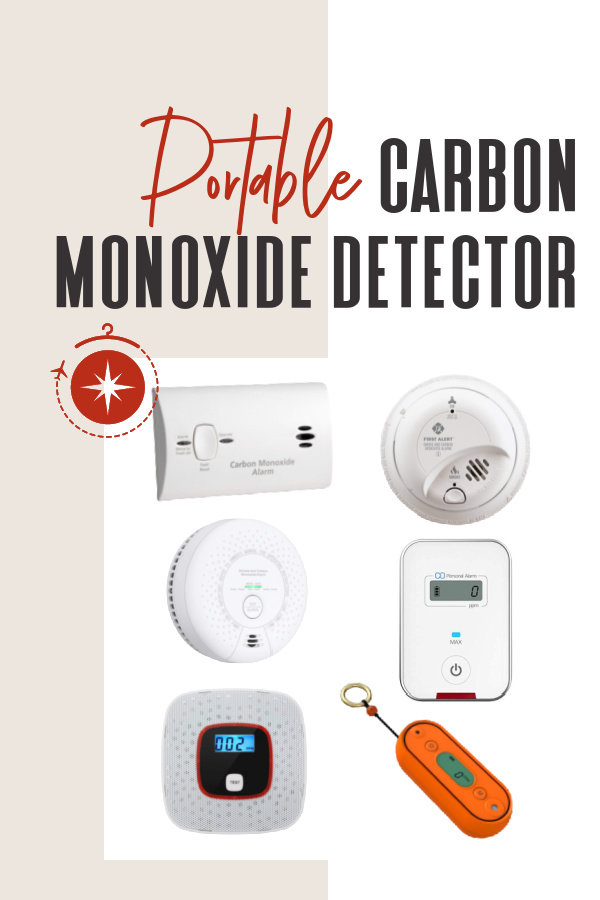
We hope you liked this post on the best portable carbon monoxide detector for travel. Please share with your friends on Facebook, Twitter, and Pinterest. Thanks for reading!
This was an eye-opener for me. I had not considered it…but I will look into one of these devises.. Especially when we’re traveling in the winter. Or is less developed countries – though I knew a couple here in our town who died of it. so it’s not limited to what I would consider high-risk areas.
One of the things that I looked for was removable batteries. The last thing I wanted was an alarm going off mid air due to a faulty battery. I purchased the Kidde brand
Never thought about this, but have been seeing this topic come up quite a bit in recent years.
Thanks for the breakdown. It’s really helpful.
I would assume the X-Sense detector or any other with an integrated battery shouldn’t go in checked luggage, but should be in your personal carry on.
I believe this is very important and I have ordered one.
Submit a Comment Cancel reply
Your email address will not be published. Required fields are marked *
Save my name, email, and website in this browser for the next time I comment.

Prime deals: Best portable carbon monoxide detectors to pack for your next trip

In an ideal world, travel should be fun, safe and hassle-free — but we know that's not always the case. Flight delays, bad weather and overbooked hotels can always put a damper on a vacation, and it's best to be prepared for the worst so you can mitigate any potential travel snafus.
One gadget — which is cheap and compact enough to easily travel with, but often overlooked — is a portable carbon monoxide detector. Having one can help ensure that your accommodations are safe and habitable.
For some, that might sound extreme, but in recent years, there have been a number of incidents at hotels and other accommodations in popular vacation destinations related to carbon monoxide poisoning — including one last year at a luxury Hyatt resort in Mexico that resulted in two fatalities. To us, that is reason enough to pack one of these handy, compact devices in your suitcase.
Related: Travel gear and packing tips to help you avoid rising checked bag fees
Carbon monoxide is nearly impossible to detect without assistance from a detector. At home, we sleep safely, knowing carbon monoxide detectors are working in the background to keep us safe. In some destinations abroad, hotels are not required to install carbon monoxide detectors in rooms, so it's a good idea to have your own — just in case.
According to the U.S. Centers for Disease Control and Prevention , "Carbon monoxide (CO) is an odorless, colorless gas" that can kill and is produced by furnaces, gas ranges, grills, stoves, fireplaces, lanterns and engines. It affects people of all ages, but certain groups — including infants, elderly people, those with breathing problems and those with heart disease — are more at risk of getting sick.
Be sure to keep an eye out for the symptoms of carbon monoxide poisoning, especially if you (or someone in your party) is especially tired, drunk or intoxicated — this is when people are most vulnerable to carbon monoxide poisoning, since they will likely be unaware of the symptoms they're experiencing. The CDC says the most common symptoms of carbon monoxide poisoning include:
- Upset stomach
Andrea Rotondo , travel expert and TPG's director of content operations, explained why she brings a carbon monoxide detector when she travels:
Not all destinations have the same robust building codes or safety measures that we enjoy here in the U.S. I try to be hyperaware of my surroundings and potential safety issues. When I heard about several tragedies involving carbon monoxide deaths in hotels and vacation rentals in the Caribbean and Mexico, I knew I needed my own plan to keep my family safe. Now, on every trip, I carry a lightweight, portable carbon monoxide detector. It's small enough that there's always room for it in my carry-on, so there's no reason not to bring it along for peace of mind.
With all of that in mind, you can feel comfortable and safe on your next trip by ordering one of the best carbon monoxide detectors.
Best portable carbon monoxide detectors
Kidde portable carbon monoxide detector.
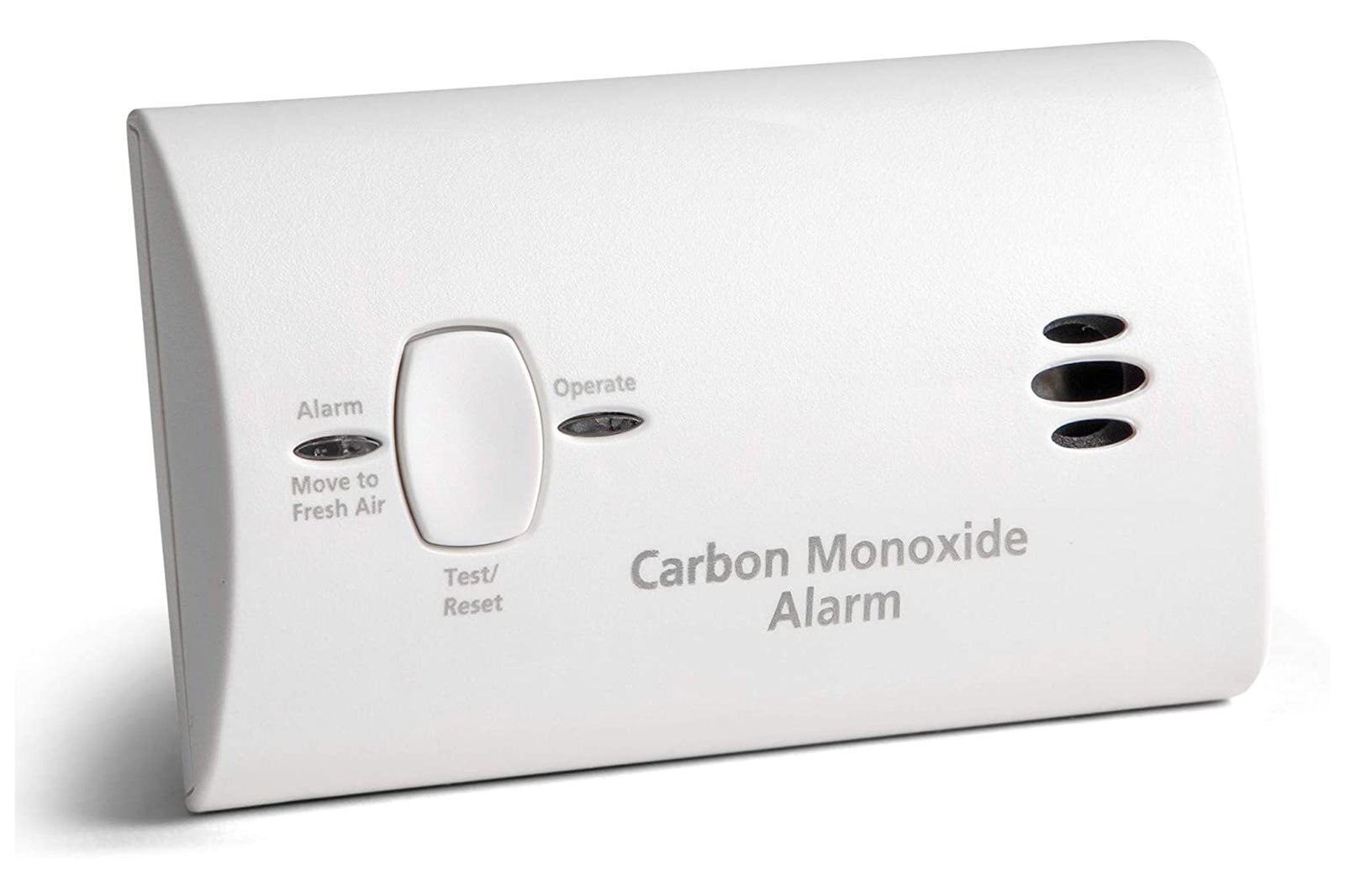
Running on two AA batteries and small enough to slide into your favorite suitcase, this simple Kidde carbon monoxide detector is affordable and weighs only half a pound. It can easily sit on any tabletop at a hotel or Airbnb and has thousands of five-star reviews on Amazon. If the device detects carbon monoxide, an 85-decibel alarm will sound, and a red LED indicator will light up, providing both audible and visual cues that something isn't right.
"It's super lightweight," said Nick Ewen , TPG's director of content. "Since the batteries can be popped out and put back in, there's no need to worry about it going off in a suitcase if the test button is accidentally pushed."
To buy: Kidde portable carbon monoxide detector , $19.88 (normally $27.99)
First Alert CO710 carbon monoxide detector
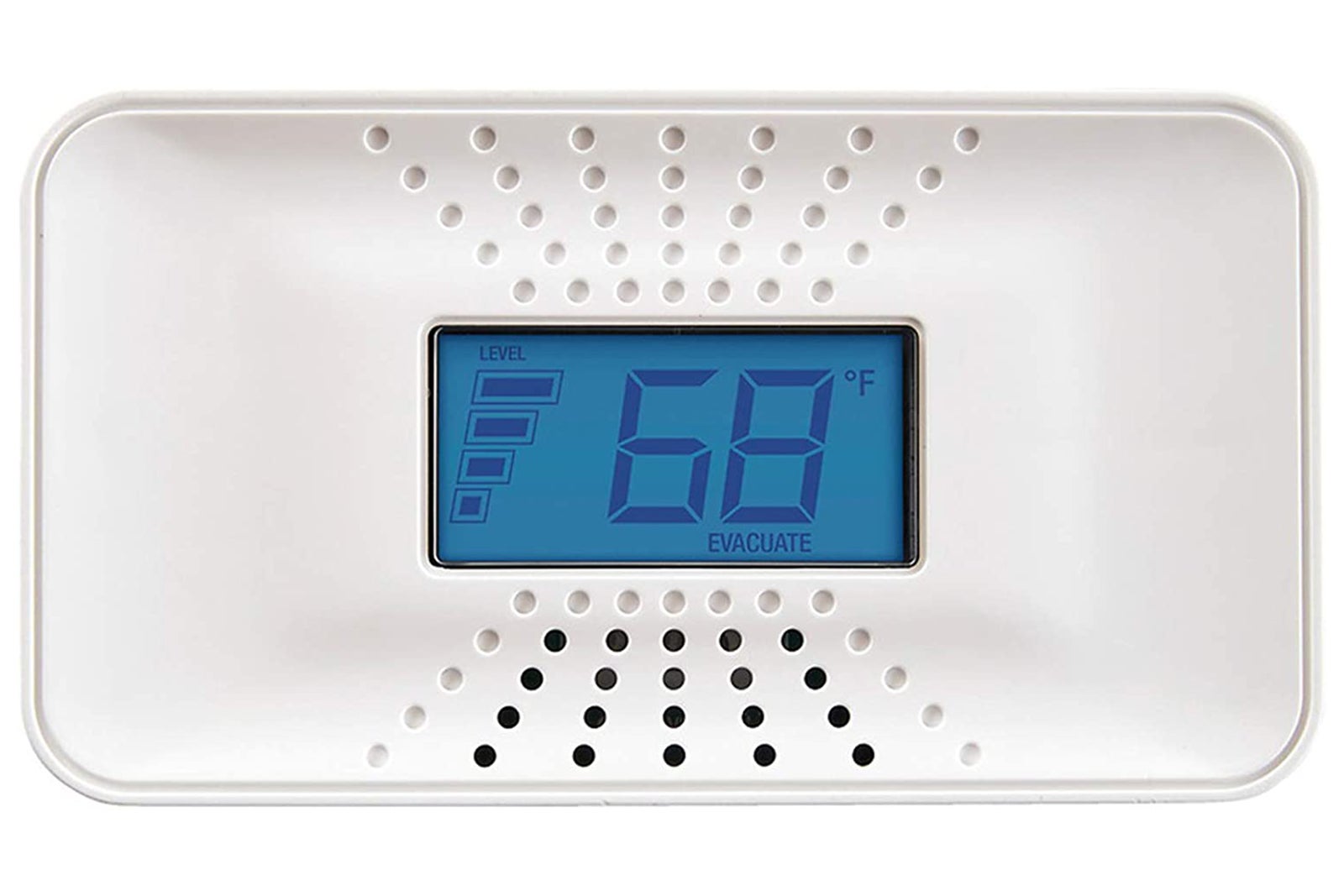
With a built-in battery that has a 10-year lifespan, this First Alert carbon monoxide detector is a no-hassle option that can live in your suitcase for years. It features an LED screen that indicates both the temperature and carbon monoxide levels. The machine will alert people with an 85-decibel alarm if carbon monoxide levels are dangerously high. And when that 10-year battery starts to die, a chirping noise will indicate that it's time to replace the system.
To buy: First Alert CO710 carbon monoxide detector , $29.75 (normally $40.41)
Gzair travel carbon monoxide detector
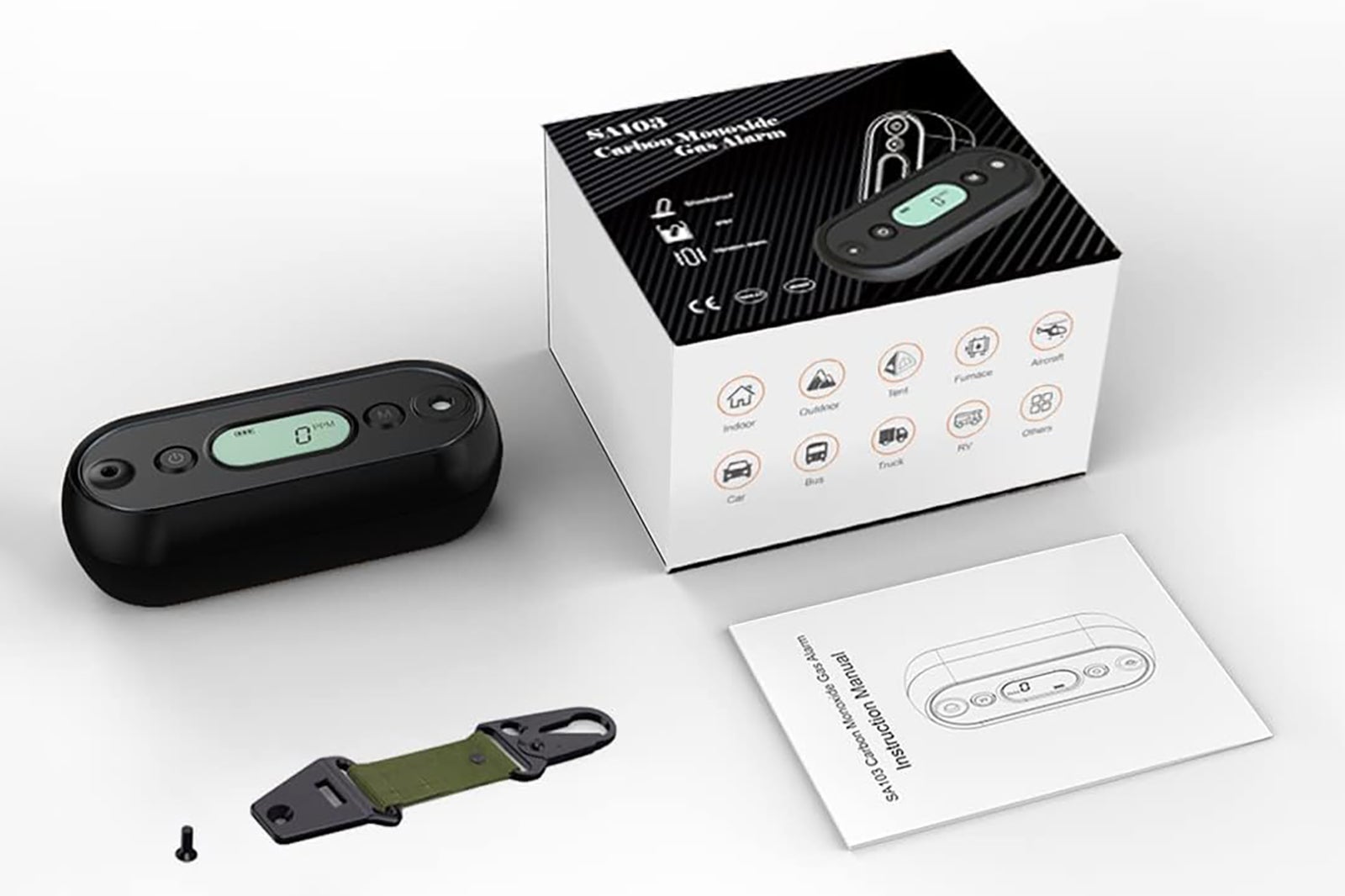
One easy way to ensure you never forget a portable carbon monoxide detector is to purchase one that can easily clip onto your bag like a keychain. Luckily, this one made by Gzair has an attached lanyard. This handy device comes with a preinstalled battery that doesn't need to be changed for two years. It also has a backlit screen that shows real-time carbon monoxide levels. To alert travelers of unsafe conditions, it emits a 90-decibel alarm, vibrates and has a flashing red light.
To buy: Gzair travel carbon monoxide detector , $92.80 (normally $116)
Cekkiena 3-in-1 portable carbon monoxide detector
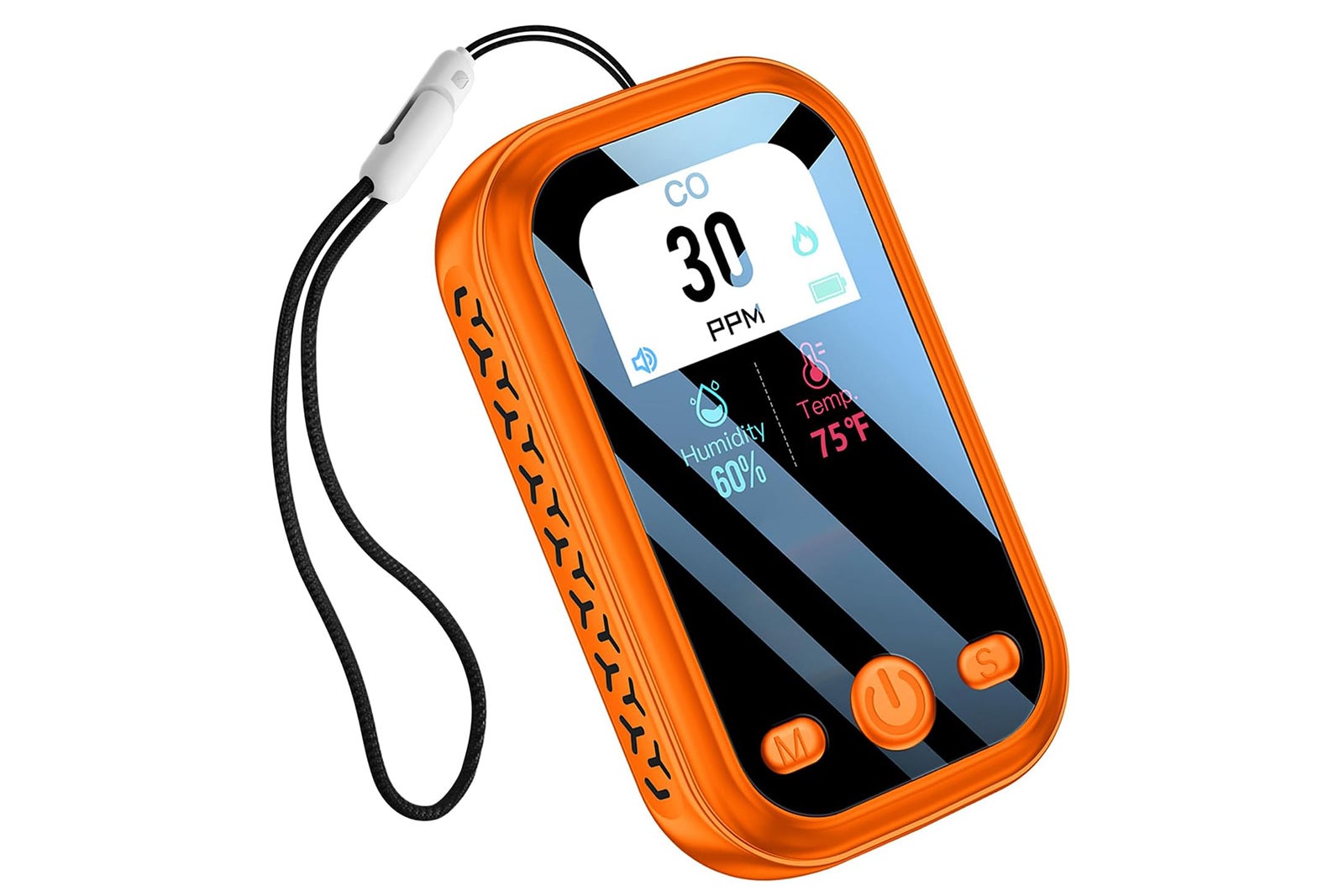
Another solid portable option with a lanyard is this orange carbon monoxide detector by Cekkiena, which measures carbon monoxide levels in real time and also keeps track of temperature and humidity. You don't need to replace the batteries with this device. Instead, this carbon monoxide detector can be charged via a USB-C cord and has a 50-hour battery life — just don't forget to make sure it's juiced up before traveling. In the event that carbon monoxide levels get dangerously high, the device issues audible alerts.
To buy: Cekkiena 3-in-1 portable carbon monoxide detector , $28.79 (normally $35.99)
Related reading:
- The most anticipated hotel openings of 2024
- Key travel tips you need to know — whether you're a first-time or frequent traveler
- 9 travel packing tips to save space in your luggage
- 7 tips to avoid overpacking
- South Africa
- Turkmenistan
- South Korea
- Philippines
- Timor Leste
- Afghanistan
- Saudi Arabia
- United Arab Emirates
- Northern Ireland
- Isle Of Man
- Bosnia and Herzegovina
- North Macedonia
- Liechtenstein
- Netherlands
- Switzerland
- Czech Republic
- Antigua And Barbuda
- British Virgin Islands
- Cayman Islands
- Dominican Republic
- Puerto Rico
- Saint Barthelemy
- Saint Kitts and Nevis
- Saint Lucia
- Saint Martin & Sint Maarten
- Trinidad And Tobago
- Turks And Caicos
- US Virgin Islands
- Falkland Islands
- French Guiana
- El Salvador
- United States
- New Zealand
- Papua New Guinea
- Cook Islands
- French Polynesia
- Accessories
- Bags & Backpacks
- Horseback Riding
- Photography
- Maintenance
- Airport Hotels
- Bed & Breakfast
- Budget Hotels
- Business Hotels
- Family Friendly Hotels
- Gay Friendly Hotels
- Luxury Hotels
- Pet Friendly Hotels
- Pool Hotels
- Romantic Hotels
11 Best Portable Carbon Monoxide Detectors to Keep You Safe During Travel
- Travel Gear
- 11 Best Portable Carbon Monoxide…
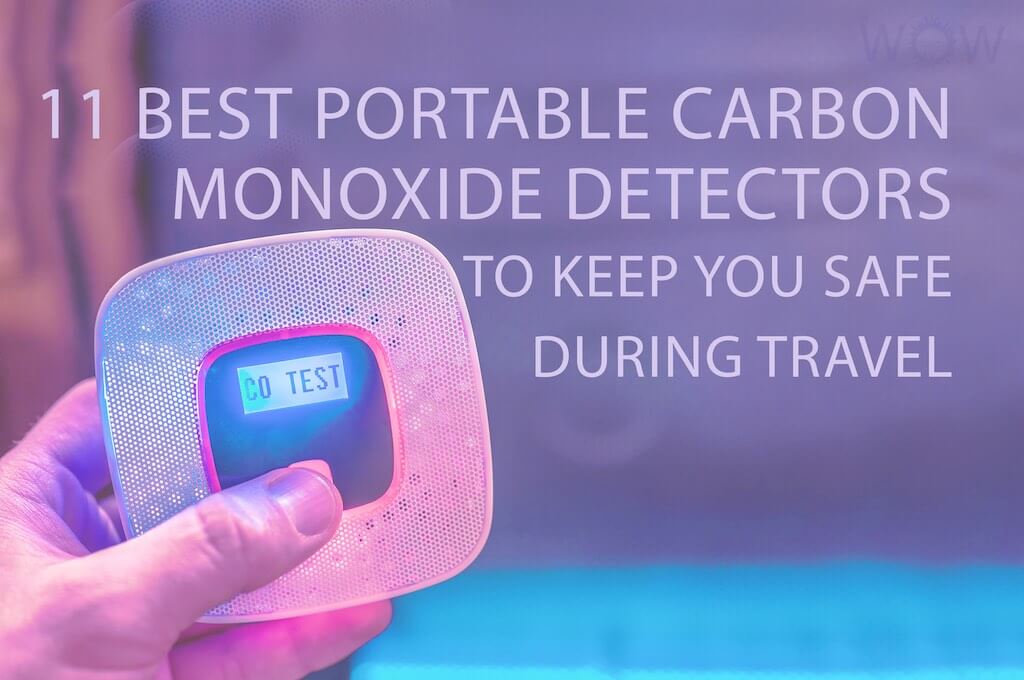
Carbon Monoxide is a silent killer that often catches people unawares while they’re asleep or on a long drive. If you’re someone always on the go, it’s important to have the best portable carbon monoxide detector for travel installed in your vehicle. The danger with this gas is that it is colorless, odorless and tasteless so you’ll never know if the CO levels have reached dangerous levels without a detector.
That’s one of the reasons why some governments mandate the use of CO detectors in factories, hospitals, and homes. To maintain a level of safety, a CO detector should be added to your list of must-have accessories for the ultimate road trip . You can be sure with the best portable carbon monoxide detectors to keep you safe during travel, your road trip will be a stress-free one.
What to Look for In a CO Detector
Although most CO detectors come with a battery some that run on electricity may not have the option. It’s always a good idea to have a battery backup in case there is a power failure.
Digital Display
A good digital display gives you first-hand information about the CO levels. When you have a display you can not only view the CO levels, but you’re also certain that your device is working.
Audible Alarm
There’s no point in purchasing a detector with a soft alarm. The alarm needs to be loud enough to wake you from your sleep.
Certification
Make sure that the device you’re purchasing is certified for quality and safety. A cheap CO detector that has no certification will put you in more danger.
One more thing that you need to bear in mind when buying a CO detector is to look out for the date of manufacture. Very often a device that has a long shelf life may already be well past the date because of the manufacturing date.
First Alert CO600 Plug-In Carbon Monoxide Detector
Some of the best portable carbon monoxide detectors are from First Alert. However, unlike the other carbon monoxide detectors from First Alert, the CO600 has a plugin option. You can plug it into a 120-volt power outlet. It also has a battery back up for continuous monitoring in the event of a power failure.
A loud 85-decibel alarm will sound if the carbon monoxide reaches dangerous levels. Four beeps and a pause indicates the detection of carbon monoxide. Although the CO detector has a 7-year warranty, it also comes with an end of life notifier that informs you when you need to replace the device.
- Portable and easy to install when traveling
- Works with electricity
- Does not have a display

Alert Plus Carbon Monoxide Alarm Detector with Digital LCD Display (CU)
The Alert Plus CO detector is one of the best portable carbon monoxide detectors to have in your car. It’s small and easy to install and also comes with a five-year manufacturer warranty. A small LCD display shows you the level CO and light on its face continuously blinks to show you that it’s doing its job.
During a CO leak, a powerful 85-decibel voice alarm will go off to alert you of the danger. The manufacturer also assures of 100% satisfaction and will take back the device if you’re not satisfied with its performance.
- Easy to install
- 5-year manufacturer warranty
- Superior alarm performance
- The detector comes with installed batteries. However, the plastic wrapper on the battery must be removed to activate it.
- No date of manufacture on the detector or the carton
GXG -1987 Handheld Carbon Monoxide Meter (404)
If you’re looking for a portable carbon monoxide detector for travel which is great value for money, the GXG-1987 is a good option. This compact handheld detector is extremely easy to use and monitor.
The GXG-1987 has a large digital display that updates every 15 seconds to record any abrupt changes. When levels of CO reach an unhealthy point an alarm will emit four quick audible beats every five seconds to alert you of the danger.
- Handheld and easy to use
- Large LCD display with CO and temperature levels
- Does not come with clear instructions to set up
Forensics Car and Aircraft CO Detector
The Forensics Carbon Monoxide Detector is one of the best portable carbon monoxide detectors for travel. It can be used in a wide range of automobiles as well as in a train or aircraft.
The plastic protective sleeve-mount at the back of the device makes it easy to attach to any part of the vehicle. A digital display indicates battery level and CO level. It’s fairly easy to operate with a one-button operation. The CO alarms are set at 9ppm with an audible alarm of 70 decibels.
- Great for travel as it can be fitted anywhere
- Good accuracy
- Strong construction
- In order to reset the device, the batteries have to be removed
- The adhesive on the back is a little weak so you may need to use a screw
Sensorcon Inspector
Although the Sensorcon Inspector was designed for commercial and industrial purposes, it does a good job personally too. This waterproof CO detector is a good travel companion too as it’s small and portable.
LED alarm lights and a sensor inlet can be used to reach areas that are not easily accessible. Unlike most of the CO detectors, this device goes off when the CO levels are as low as 35ppm. The display shows CO levels from 1 to 1,999ppm. Another advantage of this detector is that it’s designed for long term use with a replacement battery, sensor, and calibration services available.
- Designed to last
- Digital display showing levels from 1ppm to 1,999ppm
- Does not have enough memory to store readings
- You may require to recalibrate it after some use
Fasohere Multi-Function Car Carbon Monoxide Detector (CU)
A portable carbon dioxide detector for travel is the Multi-Function Car Carbon Monoxide detector from Fasohere. The great thing about this device is that it combines a CO detector, USB fast charger, and a safety emergency hammer. When the CO levels are over 100ppm in the car, the alarm will beep and a red light flashes to alert you of the danger.
The charger is also pretty handy with qc 3.0 port and USB type C port. It also has the convenience of being able to charge two devices at the same time. The top material of the charger is 304 stainless steel. To use the safety hammer you’ll need to unscrew the charging head at the top.
- The multifunctional option makes this a handy device to have
- Beeps when the CO levels in the car are over 100ppm
- Since there’s no indicator as such, you can get confused about its functioning
- The weight tends to make it fall out of the socket sometimes
UEi Carbon Monoxide Detector CO71A
Resembling an old model mobile phone, the UEi Carbon Monoxide Detector is another handy portable carbon monoxide detector for travel. You don’t need to fix it anywhere but can place it where you need it or attach it to your clothes. This one is especially great if you move around a lot.
The simplified interface of this handheld detector constantly indicates precise quantities of CO. The detector has a 9V battery life and shows a reading of up to 999ppm on the display. Like most CO detectors, an alarm goes off when the CO reaches dangerous levels. A graduating LED light warns of changing CO concentration levels.
- A handy portable detector which is easy to move around
- Simplified interface constantly indicates levels of CO
- Has a low battery indicator
- Needs annual calibration to ensure that it’s working properly
Pyle Meters Hand Held CO Meter
If you’re looking for the best portable carbon monoxide detector for travel, a good option is a handheld meter like Pyles Handheld CO meter . It has a high level of accuracy measuring between 1- 1000 ppm and uses electrochemical sensors to detect CO levels. To help conserve battery life the meter will shut down automatically.
The LCD display works great even in poor light conditions because of the backlight. Four buttons help in controlling the various functions that the meter has. When the CO goes up to 35ppm the beeper will go off.
- Uses electrochemical sensors to detect CO levels
- Good value for money
- LCD display works well even in poor light conditions
- The beeper continues to beep until the CO levels go down which can be quite annoying after a point
- The product comes with a disconnected battery so the red protective strap has to be removed and the batter connected before use.
Kiddie Plug-in Carbon Monoxide Alarm (404)
The Kiddie brand has some of the best portable carbon monoxide detectors for travel and the Kiddie Plug-In does not disappoint. It’s pretty easy to install and use. All you need to do is to plug it into a 120V outlet and you’re good to go. The device also has a backup 9V battery.
A digital display shows the CO levels in your surroundings. You can also view the peak CO level recorded by the alarm with the peak level button. There is also a button for testing the functionality. An 85-decibel alarm will sound to alert you of dangerous CO levels.
- Dual power source of battery or plugin option
- Three mounting options for setting up the device
- Digital display shows levels of CO
- 5-year limited manufacturer warranty
- There’s nothing to fault in this device
KOABBIT Plug-In Carbon Monoxide and Explosive Gas Detector
For someone looking for double protection, this portable carbon monoxide detector for travel from KOABBIT is a great device to have. It not only alerts you about dangerous CO levels but also detects any explosive gases. It’s easy to set up and connects to 90V-240V. A backup 9V battery can also be installed.
Updating every nine seconds to record any sudden changes, the LCD digital display clearly displays levels of gas from 0 to 3000ppm. If the levels of CO reaches 100ppm or the concentration of combustible gases reaches 6%, an 85-decibel alarm will go off and red LED lights will flash.
- Works with electricity but a 9V backup battery can also be installed
- Dual function for CO and combustible gases
- Beeps, when CO levels reach 100ppm and combustible gas levels, are 6%
- Backup battery not included
- The alarm sometimes goes off randomly
First Alert CO710
Another great portable carbon monoxide detector is the First Alert CO710 . This portable and handy device is fairly easy to install. This 10-year battery-operated alarm provides continuous monitoring of CO levels. Predictably, the device comes with a 10-year limited warranty. When it’s time to replace the unit, an end-of-life signal chirp will alert you.
The digital display is a great feature on this one as it’s fairly easy to read. Temperature and CO levels are displayed. Another great feature on this one is the voice alarm function which replaces the beeping sound. At 85-decibels you can be sure to hear the alarm once a dangerous level of CO is detected.
- Long-lasting battery up to 10 years
- Automated voice alarm
- Digital display
- Be sure to check out the date of the manufacturer as some units may be closer to the date of replacement when you buy them
Author: Peter S
A travel blogger and the founder of WOW Travel, Peter is a crazy dreamer with an insatiable desire for adventure who could never settle for an ordinary life or conform with the norm. After visiting more than 50 countries, he aims to travel with a purpose and inspire people to do the same.
Best Portable Carbon Monoxide and Smoke Detector for Travel
Protect yourself and your loved ones from CO poisoning by getting the best portable carbon monoxide and smoke detector on the go. Carbon monoxide is an invisible, odorless, and deadly gas produced by any appliance that burns fuel.
The best way to detect carbon monoxide in your home, car, or RV while traveling is to install a CO detector.
Installing a CO and a smoke detector in your home or caravan is great but not really the best way. You see, as a traveler and adventurer who love traveling and camping, getting a portable digital carbon monoxide detector for camping is of greater importance.
You cannot smell or detect the presence of carbon monoxide gasses with your senses, that is because it is a colorless and odorless gas. So you can stand a risk of getting gas poisoning while traveling by not detecting it earlier.
Carbon monoxide is a colorless, odorless gas that gets into a room through the air conditioner units, vents, or unvented furnaces. In fact, it is one of the main factors that make your home dangerous.
Exposure to carbon monoxide can reduce oxygen levels, resulting in a lack of energy and tiredness because your body is not getting enough oxygen required for proper brain functioning.
A CO sensor can also help you avoid carbon monoxide poisoning and its medical complications such as blindness, memory loss, coma, and death because it will beep if there’s excess CO in your home.
Symptoms of carbon monoxide leaks in planes, school busses, trucks, and vehicles that cause poisoning CO to include headaches, nausea, dizziness, and driver fatigue.
If not detected in time, the consequences can be fatal.
Modern CO detection devices have helped reduce the number of deaths caused by carbon monoxide poisoning to a lower number.
According to the US Centers for Disease Control and Prevention, carbon monoxide is a colorless, odorless, and poisonous gas that caused more than 430 deaths in one year.
Your safety should be your number one concern when traveling.
Given the instances of gas fumes and fire incidents in cars, busses, and planes, it is necessary to protect yourself with a carbon monoxide detector that beeps when it detects gas leaks or smoke, reducing the risk of a fire outbreak in a car or plane.
This way, you have the chance to protect yourself and your loved ones from carbon monoxide poisoning while driving and other gas emissions from fuel-powered machinery.
Best Digital Portable Carbon Monoxide Detector for Travel with Audio and Visual Display
Our loyal visitors state the best portable carbon monoxide detector for traveling in cars, trains, planes, and camping .
Best Portable Carbon Monoxide Detector for in the Car Car, Vehicle, Aircraft Carbon Monoxide CO Detector by Forensics
The best portable carbon monoxide and smoke detectors for cars are Car, Vehicle, Aircraft Carbon Monoxide CO Detector by Forensics.
With a longer battery life of 8 – 12 months, this mini CO sensor CO accurately detects exhaust fumes from your cars, planes, etc. You might mistake this device for a phone because of its portability.
With this CO detector, you can travel in your car and feel like you have everything under control. Although this device is a little expensive, it is highly recommended by WHO, EPA, ASHRAE, OSHA, NIOSH, etc., to all vehicle owners.
If you are looking for a portable carbon monoxide detector, then a car, vehicle, Aircraft Carbon Monoxide CO detector from Forensics is the best choice.
It detects carbon monoxide and smoke and other polluting gases like methane gas, sulfur dioxide, etc. This device has an indicator light that turns on when the carbon monoxide levels get too high to ensure safety.
It is effortless to install, as all you have to do is place it at the head of your car’s driver’s seat or in another area where the exhaust fumes are highest. When you buy it, you will also get a two-year warranty.
The device is straightforward to use, as all you have to do is remove the battery cover and then slide the carbon monoxide detector into place.
Best Carbon Monoxide detector for Camping: First Alert Dual-Power Carbon Monoxide Detector Alarm
So, when you are chilling on vacation and enjoying your camping experience, don’t forget to protect the lives of your loved ones from CO poisoning by getting this portable carbon monoxide detector for campers.
This device is designed for small spaces, and its compact size makes it the perfect choice when traveling. First Alert actually has three models for home and camping use.
The Breathe Easy Portable Carbon Monoxide Detector, the Personal Carbon Monoxide Alarm , and the Safe & Sound Carbon Monoxide Alarm with Hush Button for up to 9 LBS each (model number 1040).
The First Alert dual power carbon monoxide detectors are light enough to be easily carried on a camping trip.
In addition, it comes with two long-lasting batteries , so you don’t have to worry about running out of power on your trip or if you need to keep an eye on the nursery.
Best Handheld Digital Carbon monoxide detector: UEi Test Instruments CO71A Carbon Monoxide Detector
The best handheld carbon monoxide detector is UEi Test Instruments CO71A Carbon Monoxide Detector . It is your go-to place to get a handheld CO detector for both residential and industrial CO use.
This is the best handheld multipurpose carbon monoxide detector for the on-the-go with state-of-the-art audio and visual alarms for CO detection. But unfortunately, it has a life span of five years and is also very expensive.
This CO detector is sensitive and has a sensor that can detect CO concentrations up to 5 PPM. It is lightweight at only 8 ounces, so even long-term hand use is pretty painless.
It has a backlit digital display with a two-button operation for ease of use. The display also lets you see the time and date of the current CO detection.
A huge selling point for this product is the 10-year calibration cycle.
With this feature, you don’t have to go through the hassle of recalibrating your CO detector every year, as the 10-year calibration cycle will help you save time and money in the long run.
It is also instrumental in detecting carbon monoxide leaks, especially in appliances and gas combustion.
It has a low-profile, super slim design that you can easily put in your pocket or wear around your neck. It helps you carry it with you wherever you go without feeling the weight on your shoulders.
This could be just what you need if you’re on a long business trip and want peace of mind thanks to its long battery life (up to 40 hours) with lithium batteries.
You can choose not to put it in “sleep mode” if that saves energy, which is always good.
Frequently asked questions
Where should a carbon monoxide detector be placed.
The question of where to place your carbon monoxide detector in your car when you’re on the road has confused some people lately.
While some experts suggest placing it strategically high overhead because carbon monoxide is slightly lighter than air, others suggest placing the CO detector lower.
To clear your doubts, it doesn’t matter whether you place these digital portable carbon monoxide detectors high or low; whichever you choose, they can still effectively CO detect gasses and smoke because carbon monoxide emissions quickly mix with the air and spread in the area of the omission.
Therefore, it now has high concentrations in the air.
However, it is best to place your carbon monoxide sensor (CO) high and next to your bed while on vacation if you are camping.
Can you take a carbon monoxide detector on a plane?
Yes, you can actually take a portable carbon monoxide detector on a plane if and only if the relevant authorities approve it.
This must comply with IATA Special Provision A41 and must have been checked as baggage and certified by the airport authorities.
In addition, its mini size and sealed battery make it easy to pack in a bag of any size when traveling by car or plane.
Final thoughts…
What to look for in a carbon monoxide alarm.
When looking to buy the best portable Carbon Monoxide and Smoke Detector for travel and camping, there are two important things you should not miss.
Carbon monoxide and smoke detection
Whatever your choice, you need to get a device that can accurately detect CO with an alarm loud enough to alert you in times of danger.
You should also get a portable device with standalone 2-in-1 CO and smoke detection.
Installation and Battery Life
Mini smoke alarms do not require any special type of installation. They are plug-and-play devices.
However, since you would be camping or traveling, a battery-powered portable carbon monoxide detector is essential.
- https://en.wikipedia.org/wiki/Carbon_monoxide
- https://www.cdc.gov/co/faqs.htm
- https://www.nhs.uk/conditions/carbon-monoxide-poisoning/
Related posts:
- What is the right Carbon Monoxide Detector Mounting Height?
- Do Carbon Monoxide Detectors Expire?
- How long does a 9v battery last in smoke detector
- Smoke Alarms: Your Frequently Asked Questions Answered by a real Firefighter
- Why does my smoke alarm keep beeping 3 times?
The Most Trusted Brand in Fire Safety. Protecting Homes & Families Since 1958.
Carbon Monoxide Travel Tips

Traveling is a time to relax, experience new things and make memories. It’s a chance to forget about your long to-do-list and be worry free! However, even while on vacation, safety should always remain on your mind. Whether you are traveling with friends and family, for business, near or far, help protect yourself and loved ones by packing a portable carbon monoxide (CO) detector.
Carbon monoxide is a tasteless, odorless and poisonous gas commonly produced from fuel burning devices such as a stove, fireplace or water heater. The only way to detect this deadly gas is by having a functioning carbon monoxide alarm.
When traveling, it is hard to know if where you are staying will have working carbon monoxide alarms . As well as if they will have the recommended number of alarms and follow the proper placement of CO detectors for the best protection. To help ensure you and your loved ones are protected, First Alert recommends packing our small, tabletop carbon monoxide detector for your travel needs.
Portable Carbon Monoxide Detector For Traveling
This 10-year sealed battery carbon monoxide detector is ideal for traveling:
- The tabletop design requires no installation, simply place it on any shelf or counter
- The 10-year battery eliminates the need to replace the batteries for the life of the alarm
- Its small size makes it ideal to pack in any size bag
- The sealed battery is safe to pack when traveling by plane
Next time you book a hotel room, rent a vacation home, or travel to see family and friends, make sure to follow our carbon monoxide detector travel tips and pack this life saving, portable device in your bags. It is best to be prepared since you don’t know the last time the hotel changed the batteries in the alarms or if your vacation rental will even have carbon monoxide detectors. A portable CO detector for travel will help ensure that your vacation is worry free and that your family is protected from the dangers of this deadly gas.
For more information on traveling by plane with battery-operated devices, please visit FAA.gov for travel guidelines.
Take the first step toward protecting your home & family
Sign up to learn fire and carbon monoxide safety tips you can practice at home.

- -Which Trusted Traveler Program Should You Choose?
- -Best Advice – First Time Flyers
- -Quick Best Travel Tips and Hacks
- -Best Books-Inspiration, Planning and Budget Advice
- -Frequent Flyers: Tips and Tools You’ll Love
- -8 Items You Should Pack
- -4 Ways to Earn a Flight Upgrade
- -Stop Lost Luggage, Tips from Frequent Flyers
- -Most Important Passport Security Tips
- -Should I Carry my Passport or Use the Hotel Safe?
- -Passport Replacement Tips – FAQs an Emergency Abroad
- -Create an “Emergency Passport Kit”
- -No Passport? No Problem! You Can Travel Here
- -11 Items Frequent Flyers Pack, And You Should Too!
- -Top 9 Carry-On Essentials
- -Over the Counter Meds You Should Always Pack
- -The Difference Between a Travel Charger and Adapter
- -What Every Beach,Goer Needs to Pack, and it’s not Sunscreen
- -Video-Fold a Wrinkle Free Shirt
- -Lost, Delayed & Damaged Luggage– Know Before You Fly
- -Stop Bags From Being Lost, Tips from Frequent Flyers
- Best TSA Approved Luggage Locks: Select a TSA Lock for Travel
- -Car Rental Tips for Foreign Countries
- -How to Stay Safe When Your Car Breaks Down
- -Car Parking Security Tips
- -Avoid Theft on European Trains
- Travel Health Is Your Travel Destination Safe?
- -Pill Map What is it? and Why You Shouldn’t Travel Without it!
- What You Can Do to Prevent DVT In Flight
- -Meds You Should Always Pack
- -Why you should visit a doctor specialized in travel medicine
- -Germs in Airports and on Planes – Not Where You Think
- -How to Beat Jet Lag
- -Understanding The Types Of Travel Insurance
- -Travel Insurance – Read The Small Print Don’t Waste Money
- -How to Prepare for Any Medical Emergency While Traveling
- -How to Create an Emergency File for Travel
- -Are You Prepared for an Emergency Abroad?
- -Watch Out for the Infamous Paris Friendship Bracelet Scam
- -Deaf Mute and Fake Petition Scams
- -Money Exchange Scams – Know Before You Cash In
- -Italy: Pickpocket Scams in Venice
- -A Street Smart Guide to Avoiding Pickpockets – See Videos
- -Pickpocket Proof Clothing
- -Pickpockets Videos See Them in Action
- -How to Avoid Pickpockets While Traveling
- -How Purse Thieves Work
- -Six Things Not To Keep In Your Wallet or Purse, Ever!
- -9 Tips for Avoiding and Preventing Identity Theft
- -Guide to Bargaining and Shopping Overseas
- -10 Tips to Save You Money on Exchanging Money
- -How to Hide Money on Your Body
- -Stop Theft of Frequent Flier Miles
- -Pickpocketing and RFID Theft Don’t Be a Victim
- -The Best Luggage Locks to Use
- -Easy and Reliable Ways to Lock Your Zippers
- -On-Board Theft – Protect Bags While You Snooze in the Sky
- -How to Pickpocket Proof Your Purse and Shoulder Bag
- -Cruise Safety Advice You Don’t Want to Think About for Emergencies
- -Staying Safe In Port
- Top Rideshare Safety Tips -Travel and Home
- -Stay Safe in Your Car
- -Hidden Vehicle Safes
- -A Street Smart Guide to Avoiding Pickpockets – See Videos –
- -Photography Restrictions in Foreign Countries
- -Why You Need a Security Camera Strap
- -Six Seconds with a Coat Hanger to Break into Your Garage
- -Prevent Home Burglaries While Traveling
- -Hiding Valuables at Home Hacks
- Tipping Guidelines for Hotels, Restaurants, and More
- -Doing Laundry in Your Hotel Room
- -2 Must-Dos When Booking Hotel Rooms
- -How To Stop Burglars From Opening Your Hotel Room
- -Portable Door Locks for Travel
- -Portable Travel Carbon Monoxide Alarm
- -Hotel Room Safes – They May Not Be as Safe as You Think
- -How Safe Are Hotel Room Safes?
- -Why You Need to Pack a Portable Travel Safe
- -On Board Theft – Protect Valuables While You Snooze in the Sky
- -Sexual Assaults on Airplanes – Know Before You Fly
- -How to Sleep on a Plane
- -Top 9 Carry-On Essentials For Everyone
- 3 Rules to Save on Airfare
- -How to Prevent Theft at Airport Screening
- -New TSA rule for carry-on and powders
- Safety Tips for Solo Women Travelers
- -Alarm Your Hotel Room Door – Keep Intruders Out
- -Sexual Assaults on Airplanes – Read Before You Fly
- -Women’s Travel Essentials
- -8 Safety Tips from a Woman Cop
- Best way to Redeem Travel Miles and Points
- – US citizens will need to register online before visiting Europe
- -USPS Informed Delivery -Sign Up Before ID Thieves Do
- -Smart Traveler Enrollment Program (STEP)
- -Which Airlines Offer the Most Legroom
- -11 Items Frequent Flyers Pack
- -Best Anti-Theft Crossbody Bags
- -Best Anti-Theft Waist Packs
- -Best Travel Books Planning and Budget Advice
- -Guide to Money Belts and Pouches
- -Guide to Portable Door Locks
- -Portable Travel Safes Explained
- – Guide to Finding the Right Luggage Lock
Portable Travel Carbon Monoxide Detectors
A portable travel carbon monoxide detector is a must-have and must-pack travel accessory. News reports of vacationers killed while sleeping due to Carbon Monoxide poisoning are rare. But they do happen even in luxury hotel rooms, vacation rental homes, and villas. Carbon monoxide poisoning can even happen at home.
What is carbon monoxide?
Carbon monoxide (CO) is an odorless and colorless gas. You can’t see it, smell it, or taste it, but carbon monoxide can kill you. Carbon monoxide poisoning can cause brain damage and death. The only way to be alerted to a dangerous build-up is to have a detector in place. Most hotels and some vacation rentals, like Airbnb, provide a carbon monoxide detector. However, not all lodgings do, particularly outside of the United States. If you travel you want to travel and sleep safely. We think you should travel with a portable travel carbon monoxide detector. Fortunately, portable travel carbon monoxide alarms are affordable and easy to pack and use.
A travel carbon monoxide detector helps you travel safely
A travel carbon monoxide detector is about the size of a pack of cigarettes and can protect your life and that of your family. It’s one of a smart traveler’s must-have items to pack. We suggest you keep it in your toiletries kit so it’s always ready to go, and you don’t forget to pack it. You can find one here for about $20.00 . As a perspective, you’ll probably spend more on that poolside drink, so it is worth the investment.
Common sources of carbon monoxide
Water Heater
Often the venting is not done properly and is leaky, this is the source of the killer gas seeping into the room.
What are the symptoms of CO poisoning?
According to the CDC, the most common symptoms of CO poisoning are headache, dizziness, weakness, upset stomach, vomiting, chest pain, and confusion. CO symptoms are often described as “flu-like.” If you breathe in a lot of CO it can make you pass out or kill you. People who are sleeping or drunk can die from CO poisoning before they have symptoms. This is why we recommend traveling with a portable CO detector.
A few of the best portable carbon monoxide detectors for travel
Kidde nighthawk carbon monoxide detector.
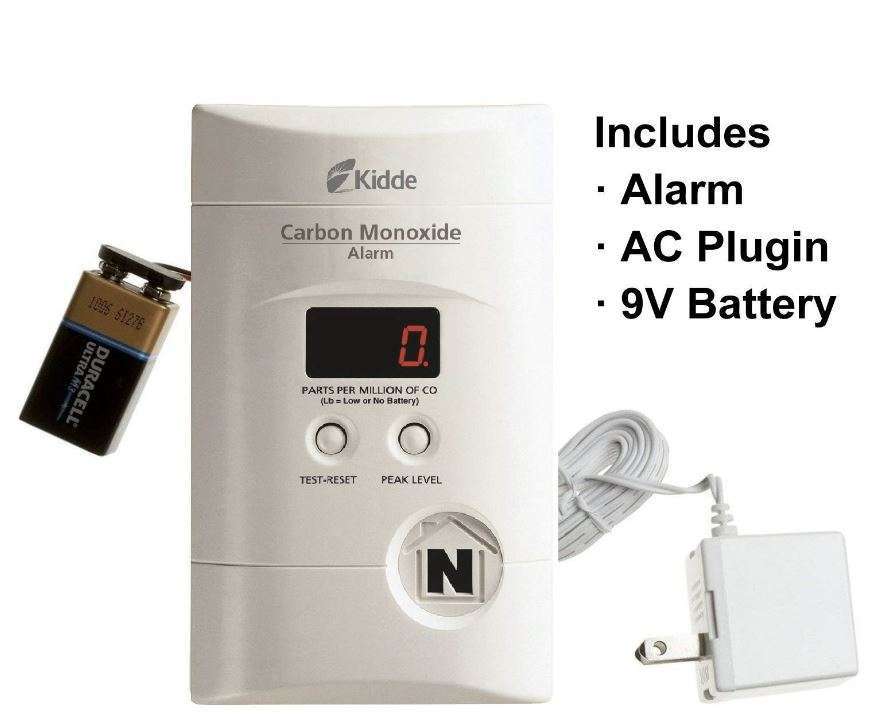
This Kidde model of carbon monoxide detector is powered by a wall plug and has a 9-volt battery in case of a power outage. A little larger than a pack of cigarettes, this item also has a digital display.
First Alert Carbon Monoxide Detector Alarm
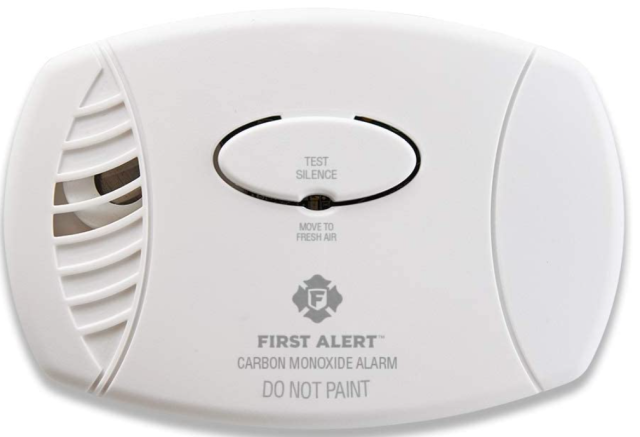
This more affordable carbon monoxide alarm plugs into a wall socket and also has a battery backup. You can use this device at home and travel with it too. A best-seller, this handy plug-in device has dimensions of 3.4 x 1.3 x 5 inches
First Alert CO710 Carbon Monoxide Detector with 10-Year Battery
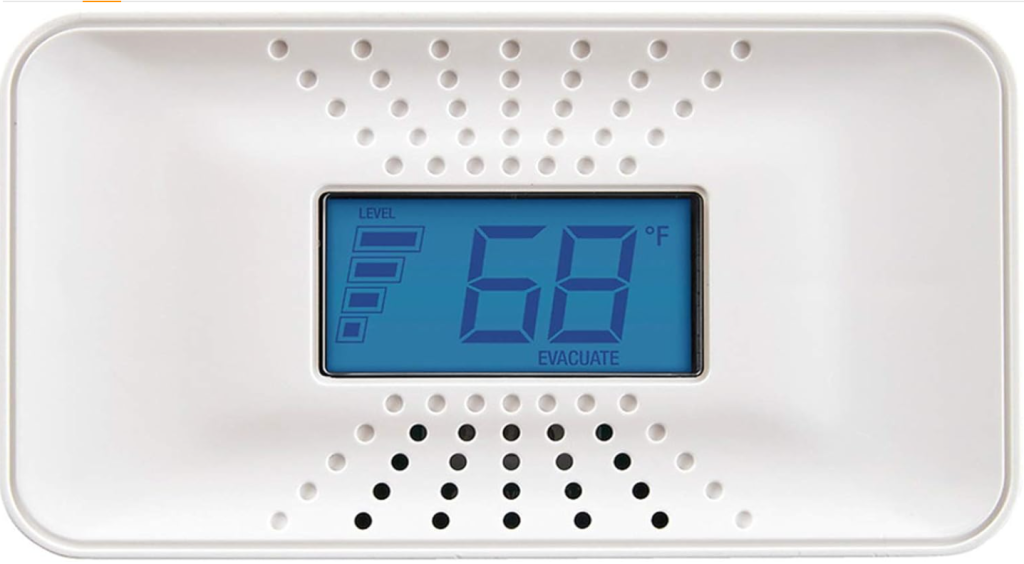
A cautionary note for travel, this item because it has a lithium battery needs to be packed only in your carry-on bag. Airlines prohibit lithium batteries from being packed in luggage that goes into the hold
Final thoughts on a portable carbon monoxide detector for travel
Because carbon monoxide is an odorless, tasteless, and colorless gas, it is known as the “silent killer.” Some common household appliances, including gas water heaters, produce carbon monoxide. When were these appliances last checked at your vacation home, condo, or hotel room, particularly in another country? Keep your portable travel carbon monoxide with your toiletry bag so you will always pack it when you travel. If your portable travel carbon monoxide has a lithium battery (most 10-year detectors do) you must pack it in your carry-on bag, Airlines do not allow lithium batteries in the cargo hold of the plane. Travel with peace of mind. Be informed and learn more about CO from the CDC.
More Articles You May Like
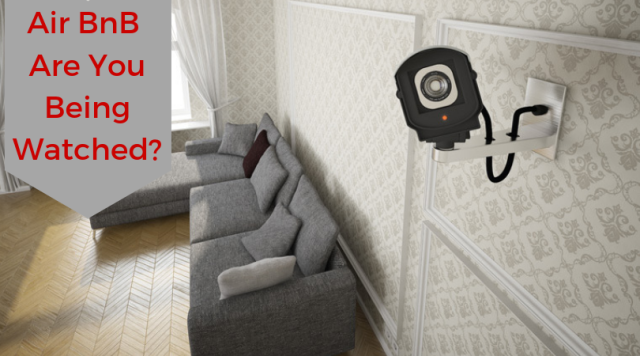
Related Posts:

How to Hide Money, Passports, and Credit Cards
Body pouches and money belts thwart pickpockets
Packing Tips & Advice
Avoid wrinkles, maximize space, and get it all in one bag
Pre-Trip Planning
What first-time flyers need to know
Lock Up Your Bag with the Right Lock
Sail through TSA with these luggage locks

You can see how this popup was set up in our step-by-step guide: https://wppopupmaker.com/guides/auto-opening-announcement-popups/
Know Before You Go and Travel with Peace of Mind
- Order Tracking
- Volume/Bulk Discounts
- Return Policy
- Shipping & Delivery
- Order Processing
- Hardwired Smoke Alarms
- Battery Operated Smoke Alarms
- 10-Year Smoke Alarms
- Ionization Smoke Alarms
- Photoelectric Smoke Alarms
- Dual Sensor Smoke Alarms
- Smoke & Carbon Monoxide Alarms
- All Smoke Detectors
- Plug-in Carbon Monoxide Alarms
- Battery Operated Carbon Monoxide Alarms
- 10-Year Carbon Monoxide Alarms
- Hardwired Carbon Monoxide Alarms
- Combo Smoke & Carbon Monoxide Alarms
- All Carbon Monoxide Detectors
- Battery Smoke Alarms
- Combo Smoke & CO Alarms
- Plug-in CO Alarms
- Battery Operated CO Alarms
- 10-Year CO Alarms
- Hardwired CO Alarms
- Fire Escape Ladder
- Radon Test Kit
- Fire Extinguishers
- Fire Extinguishing Spray
- Wi-Fi Mesh Router Systems
First Alert Traveling Carbon Monoxide Alarm
Known as the 'silent killer', carbon monoxide is an extremely dangerous and often overlooked danger that needs to be addressed. This odorless, invisible and life threatening gas is currently the leading cause of deaths associated with poison in the United States. It's particularly dangerous as homeowners begin to place a heavier emphasis on their home heating units to keep them warm and comfortable from declining temps. The danger isn't just restricted to homeowners. Hotels have been linked with carrying expiring or malfunctioning co detectors. This puts travelers in considerable risk as the impact of co poisoning might be confused as simply not feeling well. The First Alert Store offers Carbon Monoxide Alarms and Detectors that will afford you an immediate remedy for both scenarios.
The First Alert CO710 Carbon Monoxide Alarm with 10-Year Sealed Battery presents itself as an immediate fix for homeowners and travelers alike. Forgoing hardwired installation, this traveling carbon monoxide alarm can be moved from room to room or be used on the go. No larger than the size of most cellphones, the traveling carbon monoxide detector is powered by a 10-year lithium battery. This ensures ten years of co awareness via the utilization of an electrochemical carbon monoxide sensor. The versatility of a traveling co alarm lends itself to be used in any number of settings. Use it in your bedroom. Toss it in a travel bag for your next hotel or Airbnb stay. The availability of moveable co protection opens a wealth of options to explore when preventing a potential disaster.
Related Products
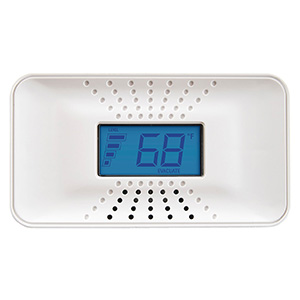
First Alert Store News Archive
Double your home's safety: natural gas and carbon monoxide detection.
The First Alert GCO1CN is your home's ultimate defense against invisible threats. This combination natural gas alarm and carbon monoxide alarm provides comprehensive protection by detecting both natural gas leaks and the silent killer, carbon monoxide. With advanced sensors and a real-time digital display, this natural gas alarm empowers you to identify potential problems early, safeguarding your family from harm...
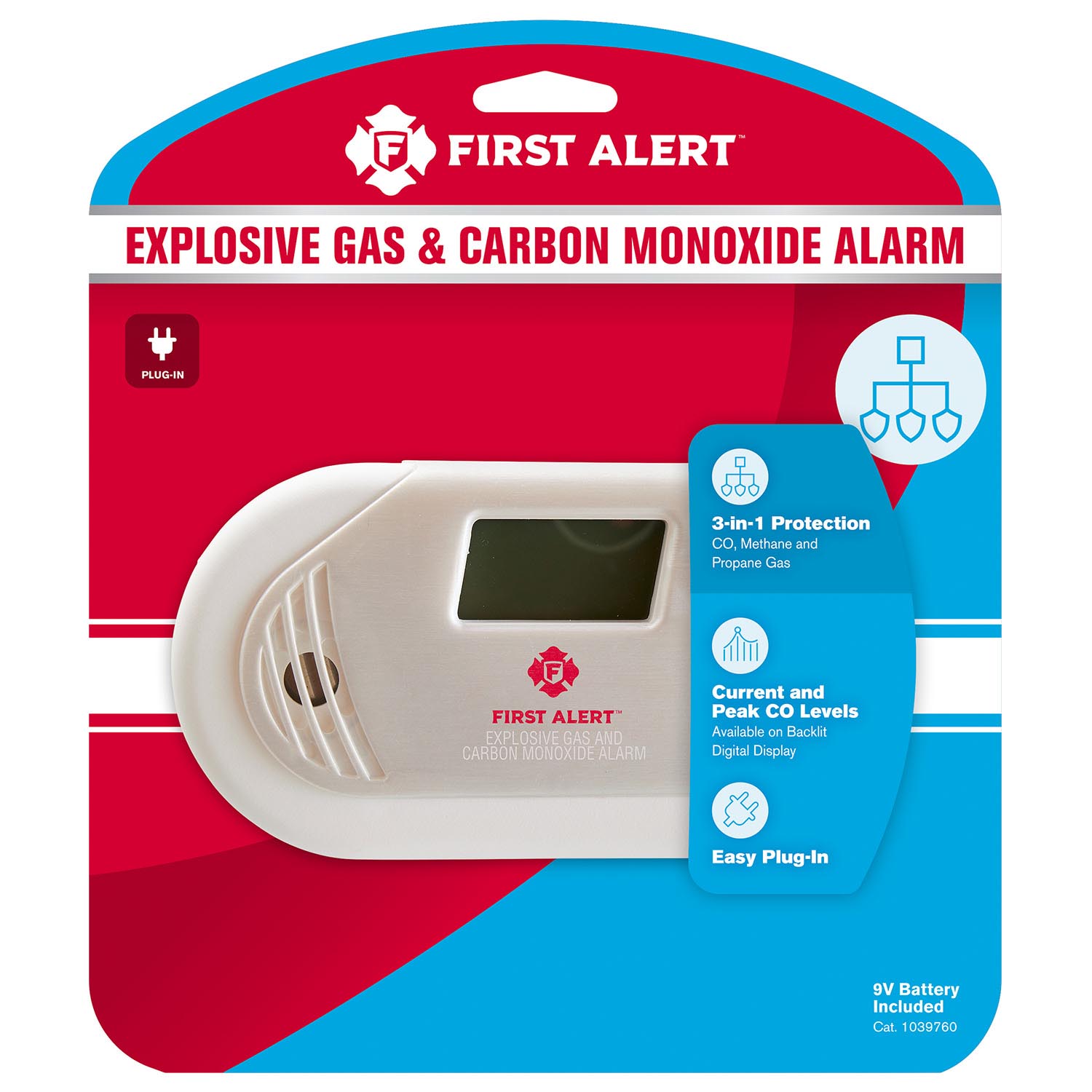
Why Is My Smoke Alarm Beeping (or Chirping)?
That chirping sound coming from your smoke alarm might be annoying, but it's important not to ignore it. A beeping smoke alarm is a signal that something needs your attention. In most instances, smoke alarms will be beep due to the following:..
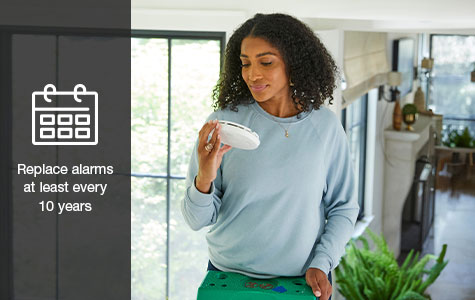
Why You Should Upgrade to 8th Generation Smoke Alarms
New 8th generation smoke alarms with Precision Detection can help to reduce nuisance alarms while still effectively detecting real fires. This is because they use advanced technology to distinguish between smoke from a fire and smoke from cooking. This means that you'll be less likely to be woken up by a false alarm in the middle of the night...
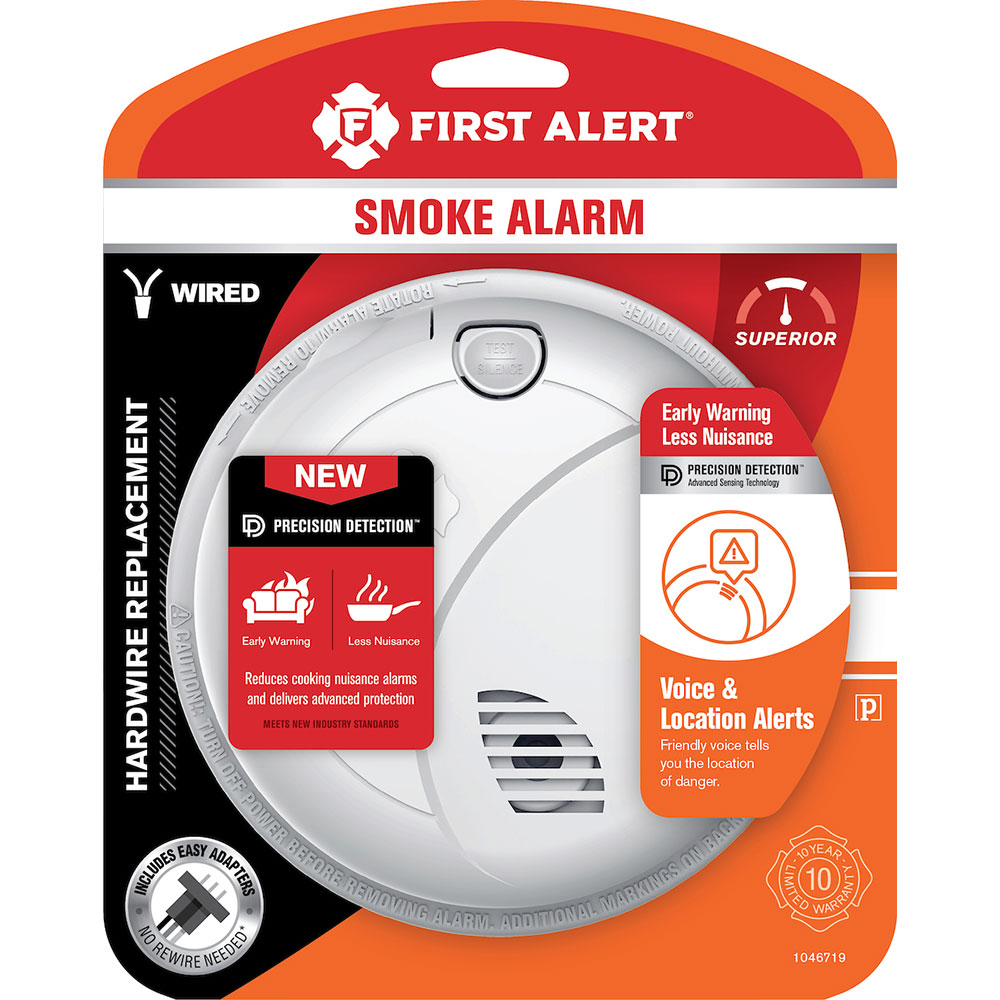
Upgrade Your Safety: Why 8th Edition (or 8th Generation) Smoke Alarms Are Essential for Your Home
Smoke alarms are a vital line of defense against fire hazards, but not all detectors are created equal. With the introduction of the 8th Edition (or 8th generation) of the UL 217 Standard, smoke alarm technology has taken a significant leap forward. Here's why upgrading to 8th edition smoke alarms from First Alert can be an essential step in safeguarding your home and loved ones...
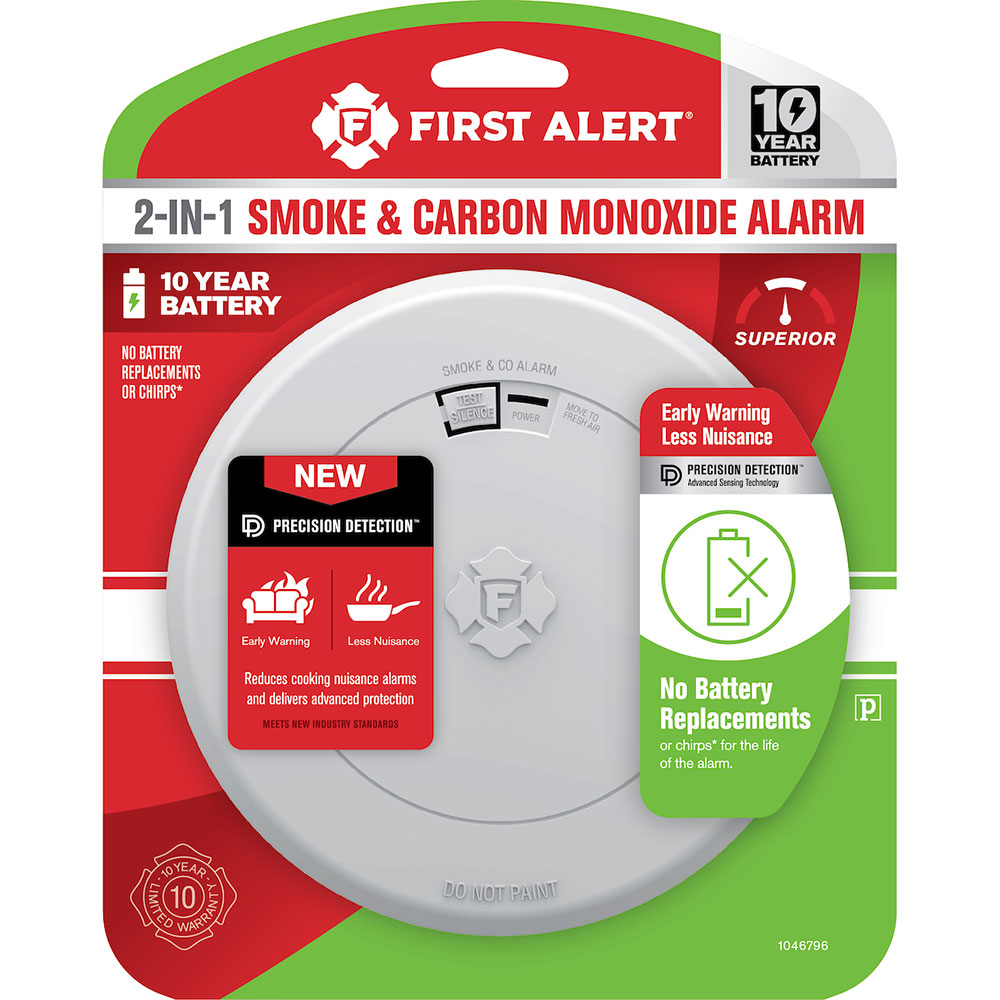
No More False Alarms! How Precision Detect Alarms Keep You Safe
Smoke alarms are essential for home safety, but the loud, piercing shriek that erupts from a burnt toast incident can be a real nuisance. First Alert Precision Detect Alarms offer a solution, utilizing advanced technology to differentiate between real fire threats and everyday cooking mishaps...
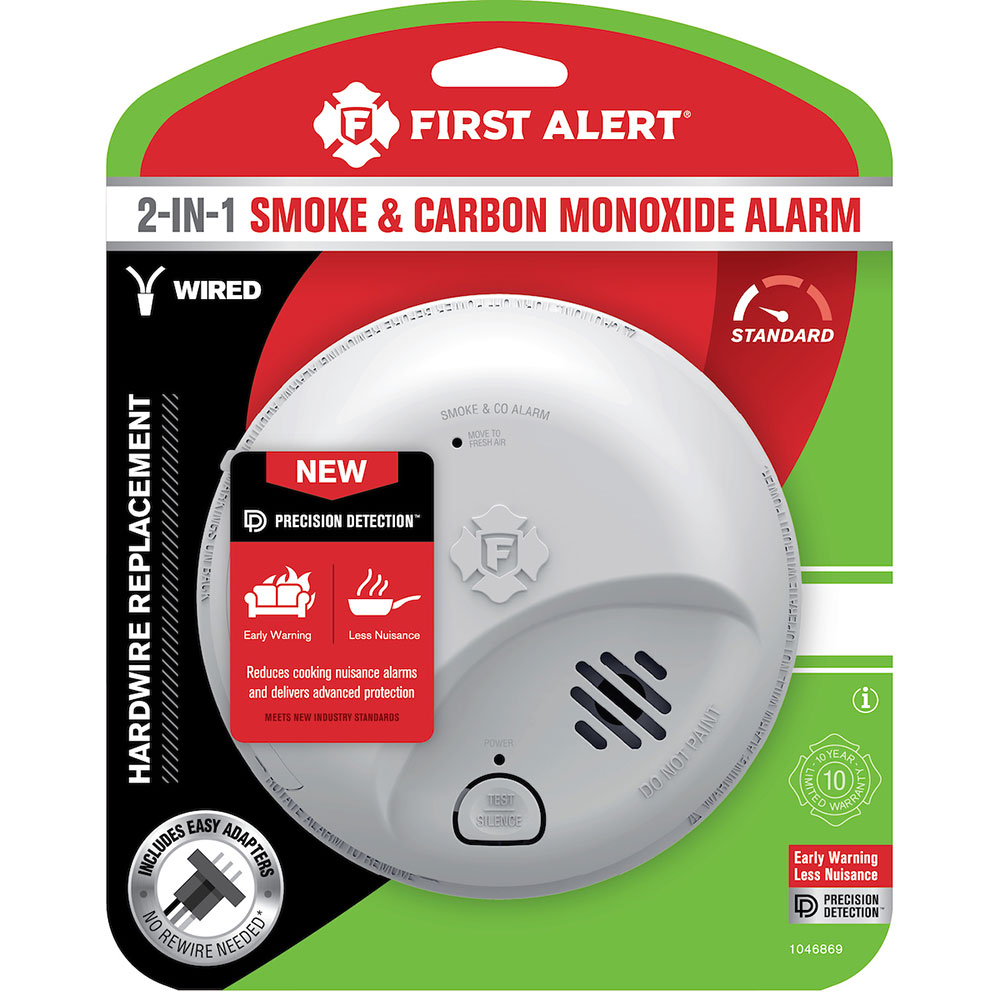
Why Is My First Alert Alarm Beeping?
The chirping or beeping in your smoke alarm can be a lifesaver, but it can also be annoying, especially if you don't know what it means...
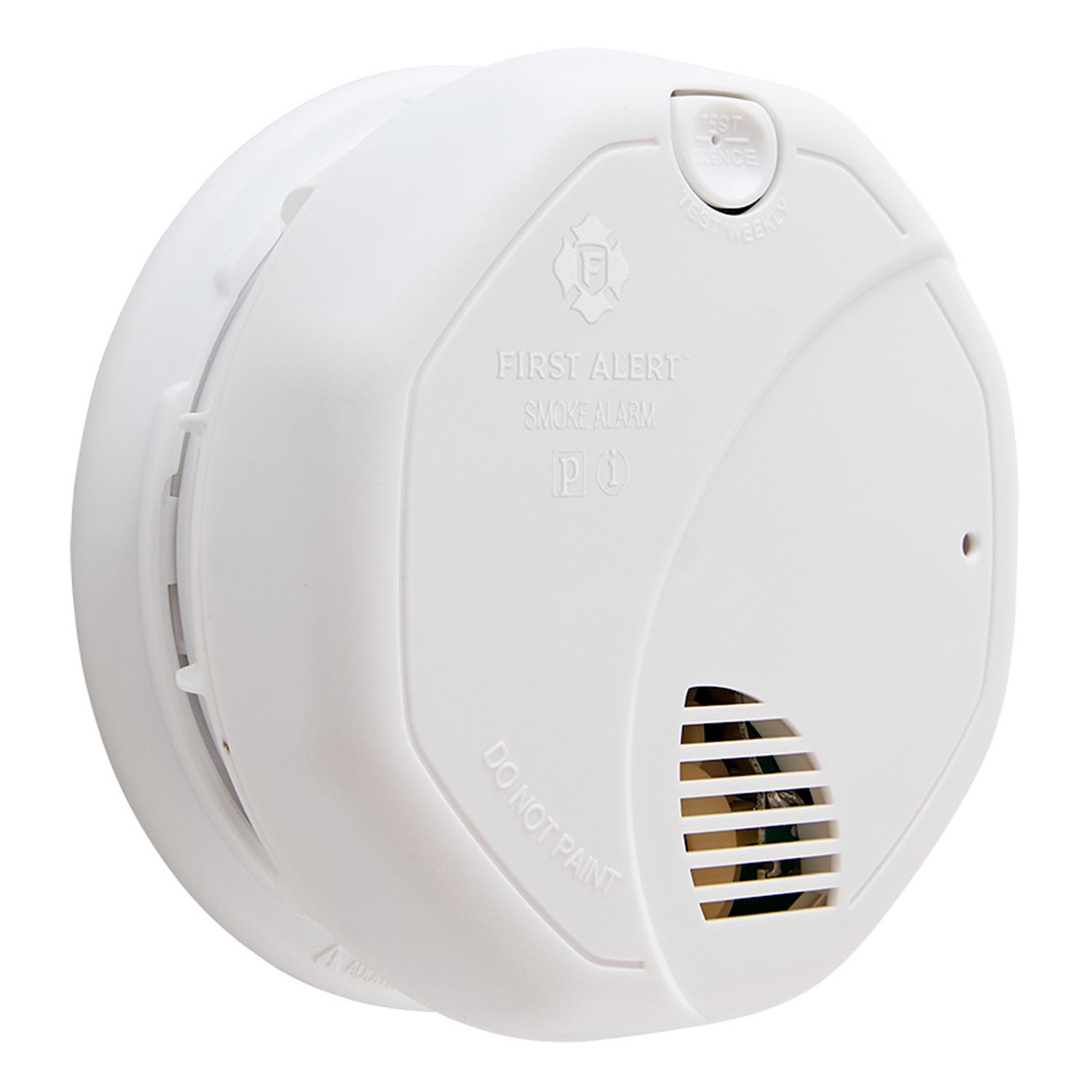
Spring Forward, Stay Safe: A Timely Reminder to Check Your First Alert Smoke Alarms
As we spring forward with daylight saving time, it's natural to think about home safety and maintenance. But amidst the hustle and bustle of adjusting clocks and schedules, one crucial task often gets overlooked: checking your smoke alarms...
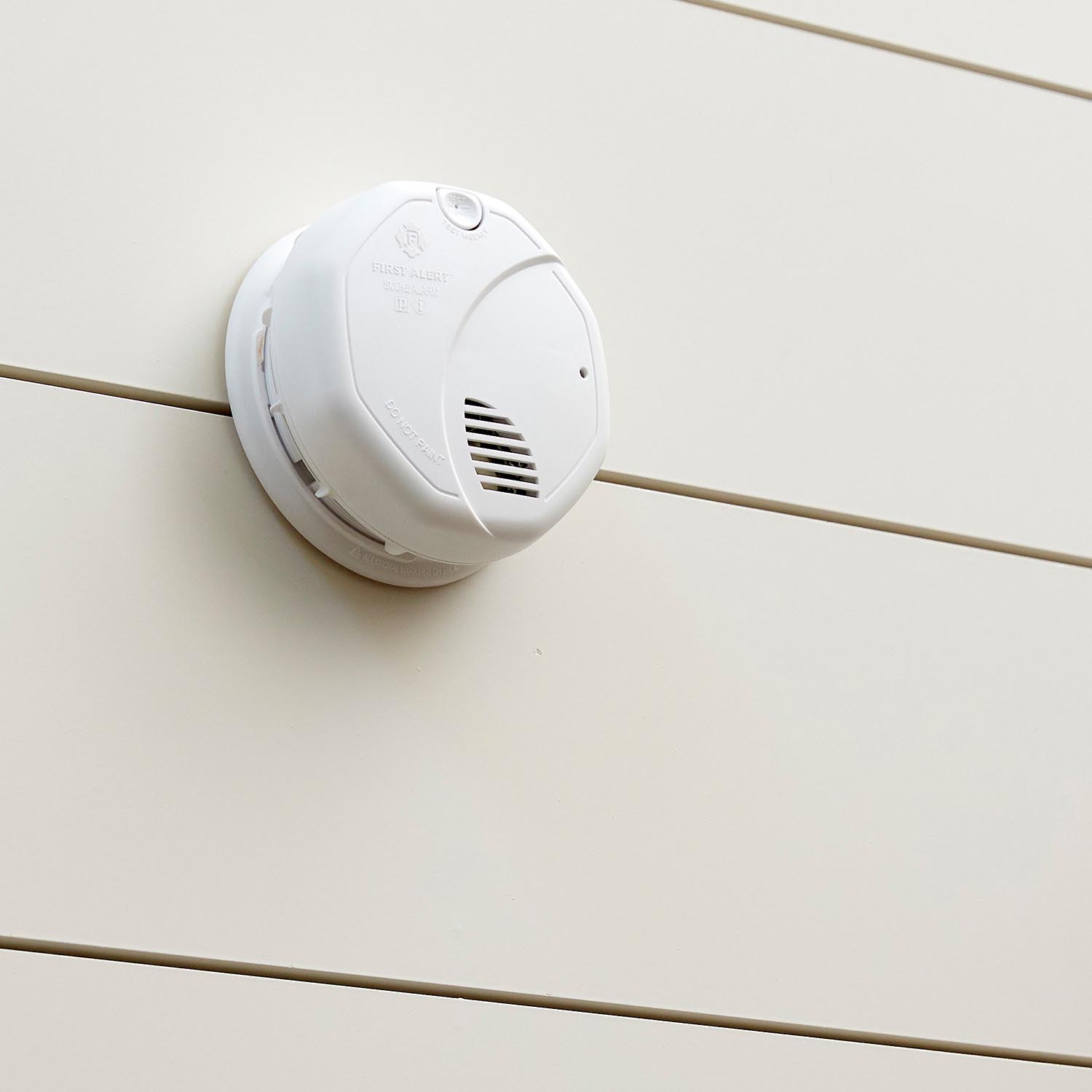
Stop Leaks in Their Tracks with the First Alert WiFi Water Leak and Freeze Detector
Imagine coming home to a flooded basement or a burst pipe spewing water everywhere. The damage could be catastrophic, not to mention the cost of repairs. But what if there was a way to prevent such disasters? With the First Alert WiFi Water Leak and Freeze Detector, you can...
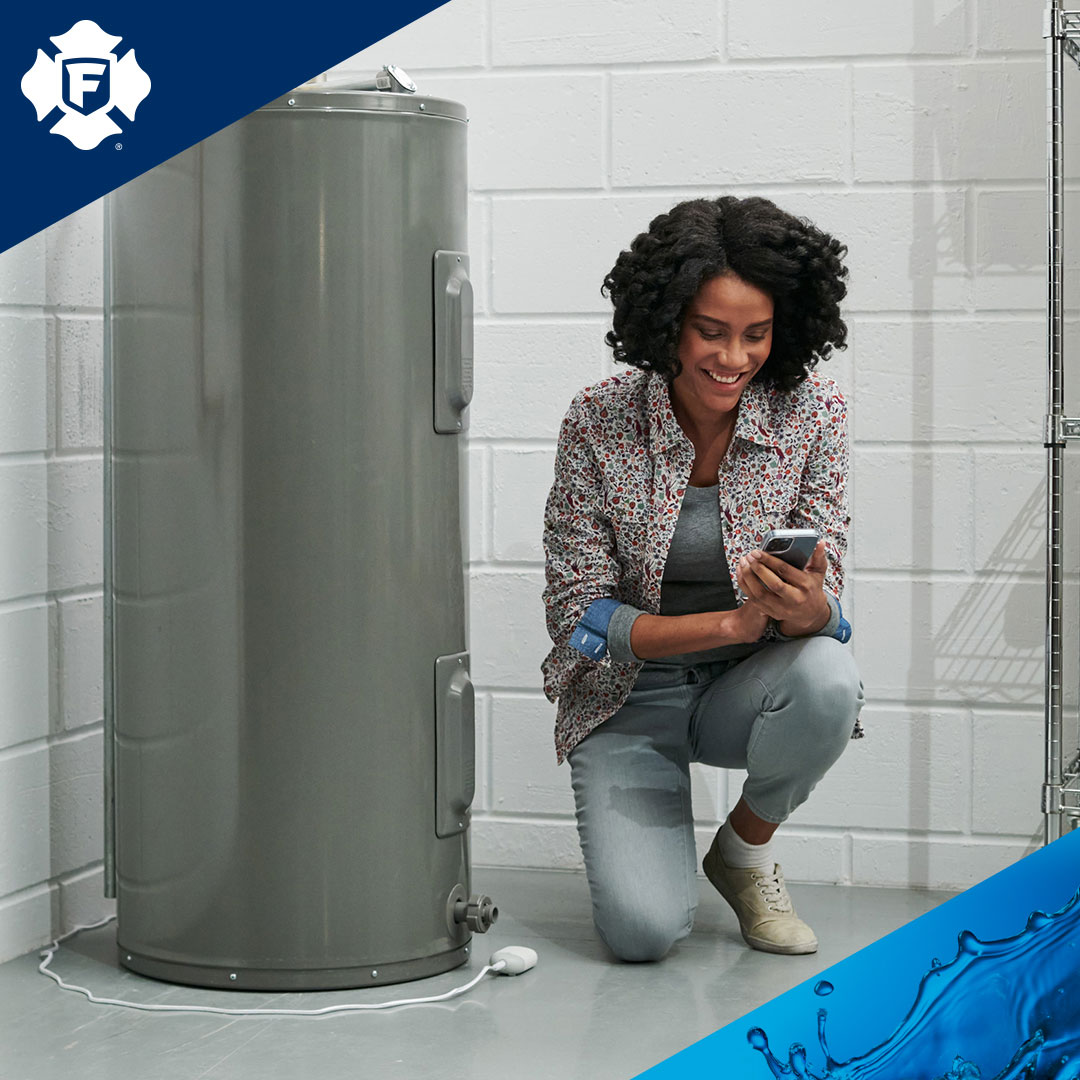
The Truth About Hardwired, Battery Powered & Plug-In Carbon Monoxide Alarms
Knowing some of the key differences between hardwired, battery powered and plug-in carbon monoxide alarms can be essential in making the right pick for your setting. ..
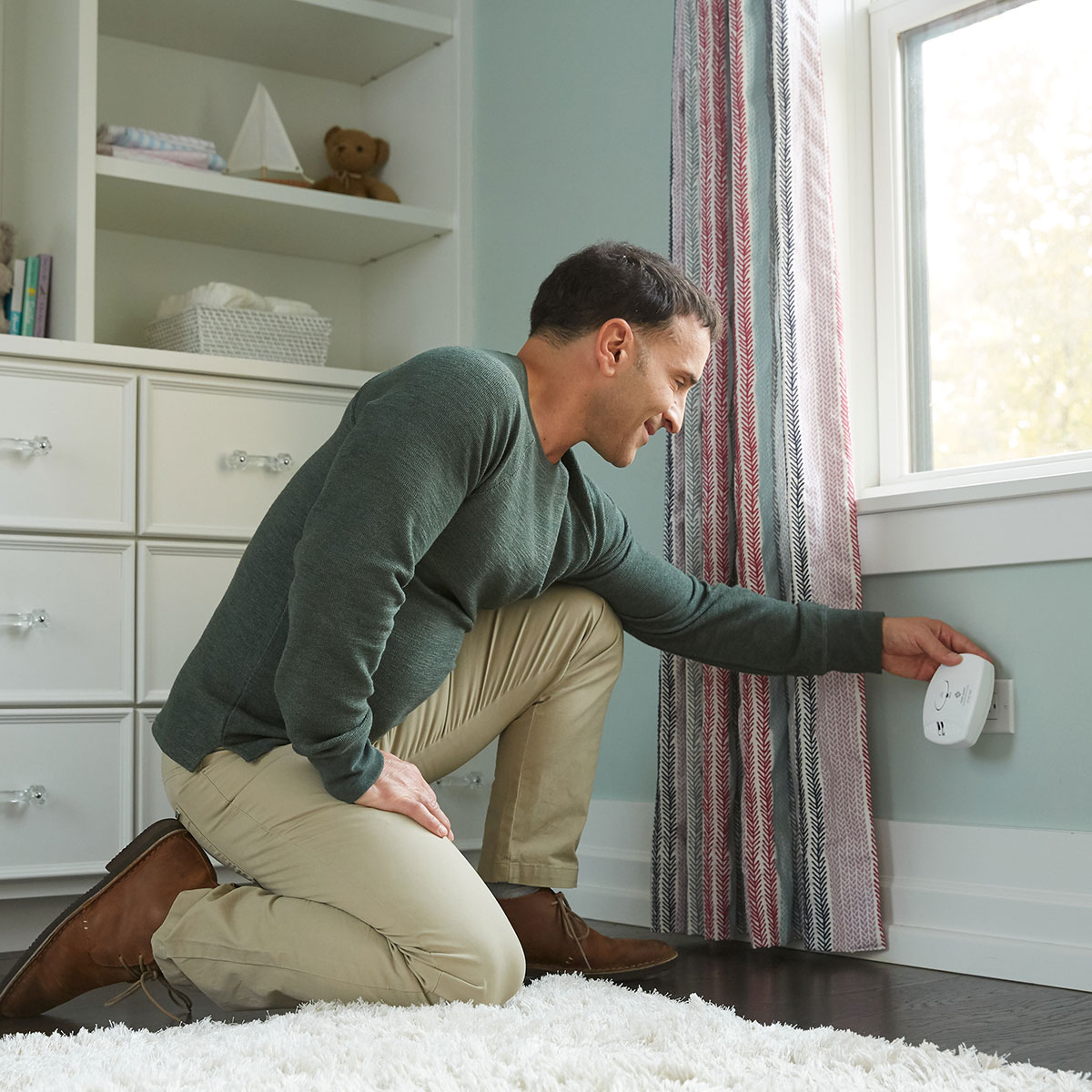
How Do I Stop My Alarm From Chirping?
Stopping nuisance alarms and alarm chirping can be as simple as checking your alarm's battery to something a little more involved as moving the alarm to another location. Let's figure out why your alarm keeps chirping. ..
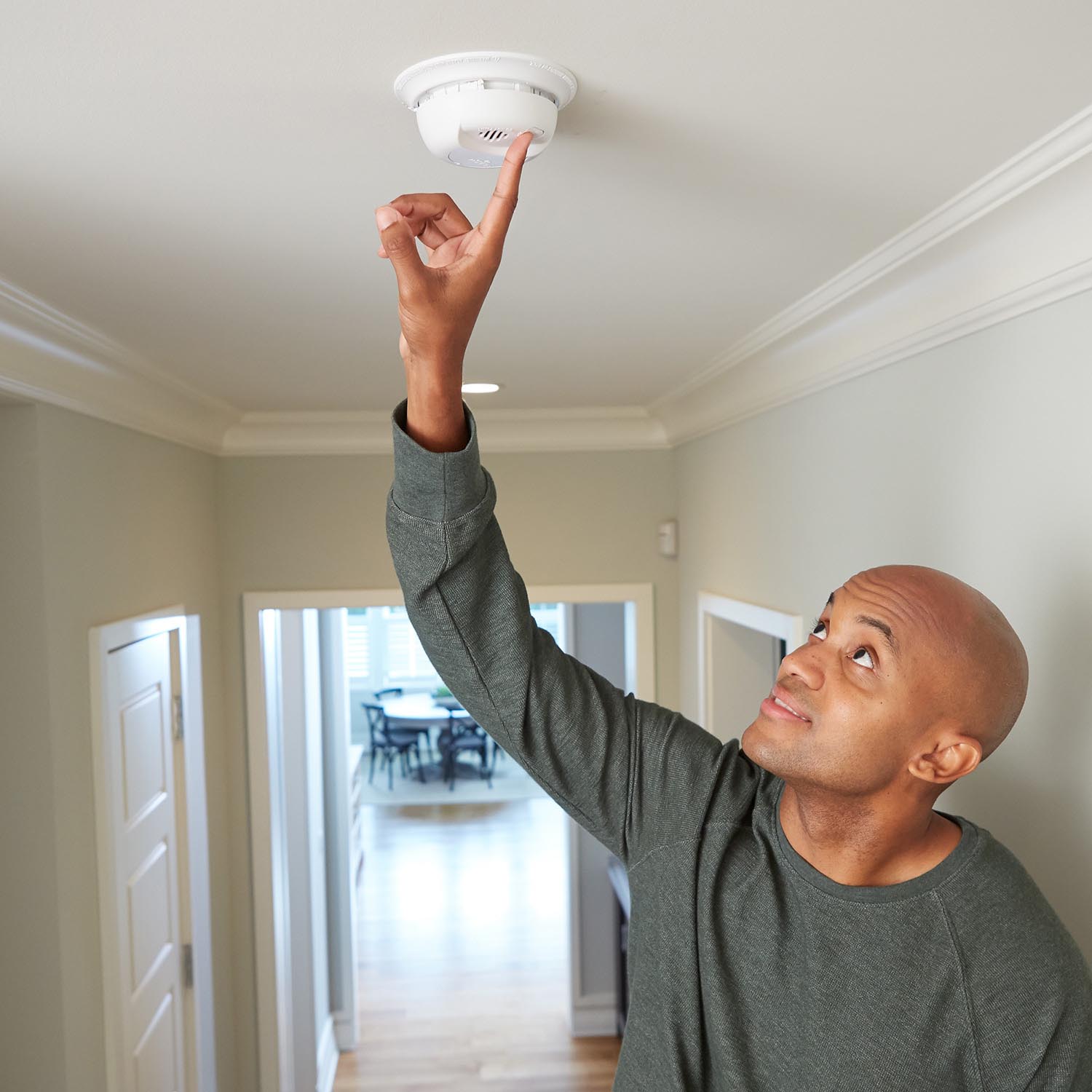
Natural Gas Explosion Destroys Famous Hotel: Is Your Home Protected?
We still do not hold the threat of natural gas to the same standard as we do smoke and carbon monoxide. It's something that needs to be addressed as natural gas disasters like this have happened and continue to happen much closer to home...

Enhance in Home Safety with ADA Certified Hearing Impaired Devices
We often receive messages from folks looking to enhance their in home smoke, fire and carbon monoxide safety while being mindful of hearing loss. We're happy to say that the First Alert Store currently features three hearing impaired devices that can quickly alert residents with a powerful LED strobe light that meets UL and ADA requirements...
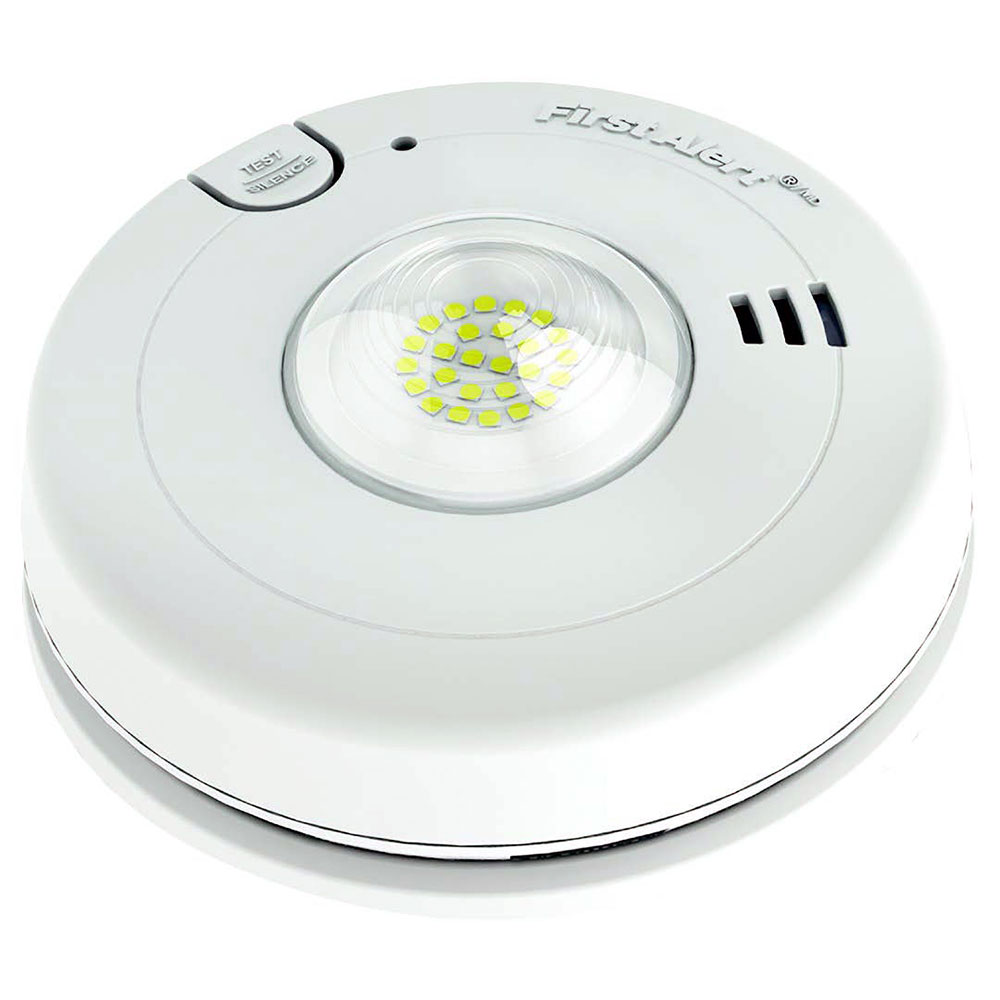
First Alert Smoke & Fire Alarms: Ten Years of Protection Under $13.00
One of the more common misconceptions about smoke alarms is that they cost an arm and a leg to purchase. The First Alert brand handles this in stride with having smoke and fire alarms available for every budget. The two smoke alarms we'll be focusing on today offer a decade's worth of protection for under $13.00. ..
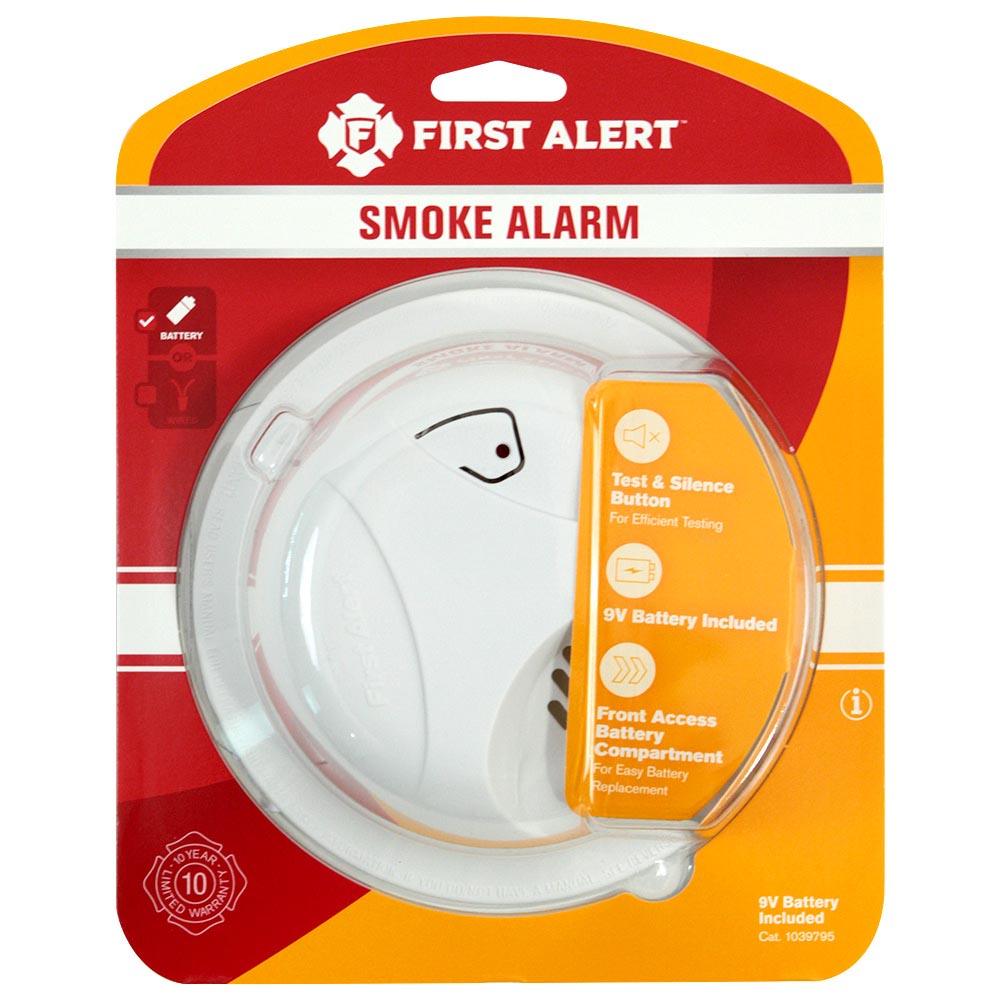
What Are Wireless Interconnect Smoke Alarms?
When seconds are vital in safely escaping in the event of an emergency, you'll need a smoke and fire defense system that's capable of alerting the entire home. First Alert Wireless Interconnect Smoke Alarms remove the limitations of a standard smoke detector by being able to link with one another...
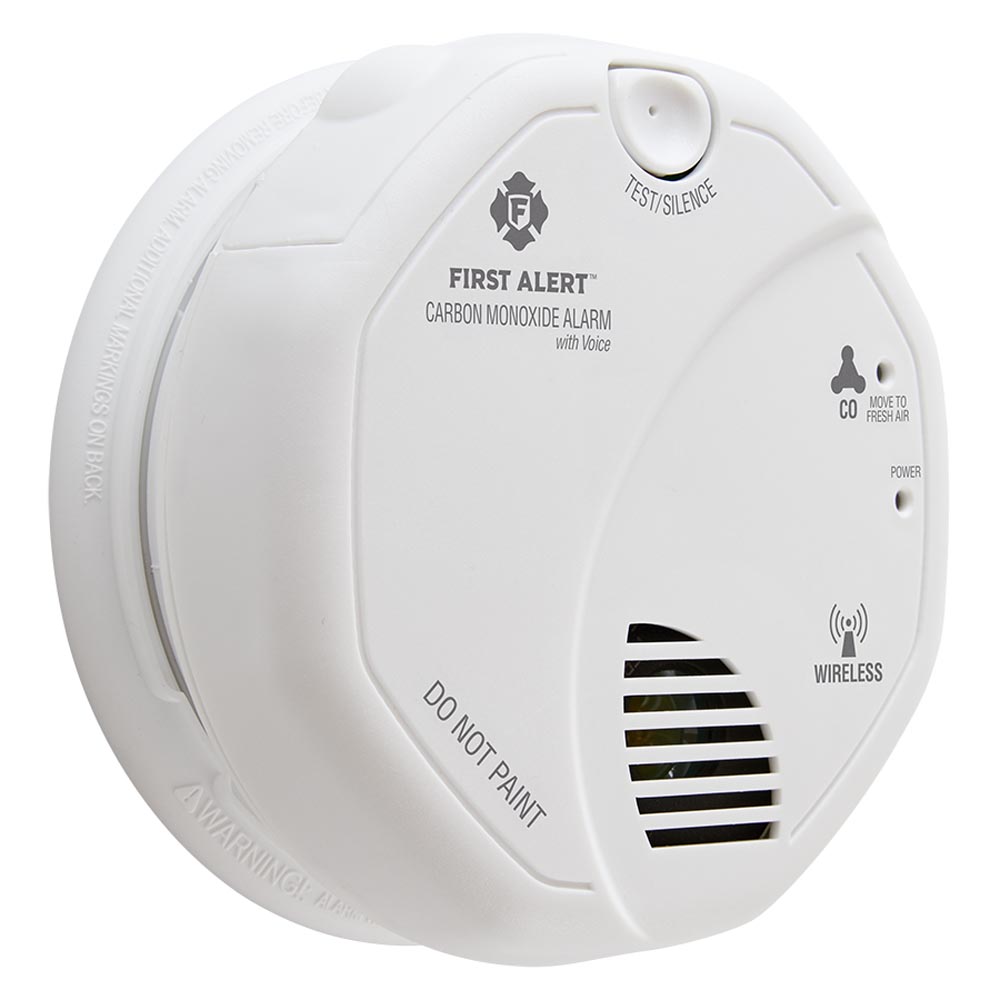
Hardwired & Battery Operated Smoke Alarms: Quick Detection & Reliable Protection
When it comes to selecting a smoke alarm for your home, you'll have plenty of options to choose from at the First Alert Store. Whether it's the easy to setup and reliable protection of a hardwired smoke alarm or the increased coverage of an interconnected combination alarm, the First Alert offers smoke and fire protection in various forms. ..
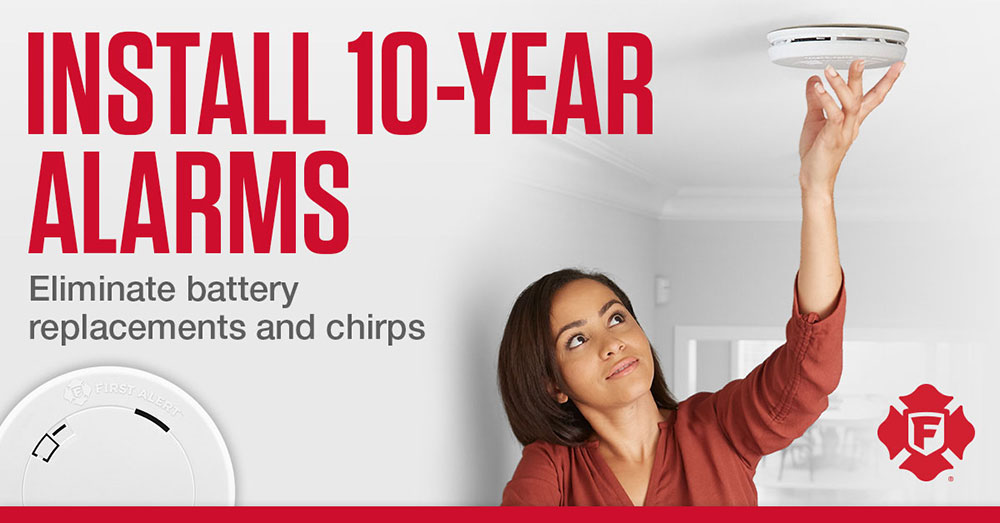
First Alert Fire Prevention Month: Do You Have An Escape Plan?
Having a series of smoke and fire alarms installed in your home remains the best defense in the face of a potential fire. There's no replacing that initial window of time created by a smoke detector's ability to warn its surroundings. Having that time and knowing what to do with it remain two different things. Every home should have a fire escape plan committed to memory. ..
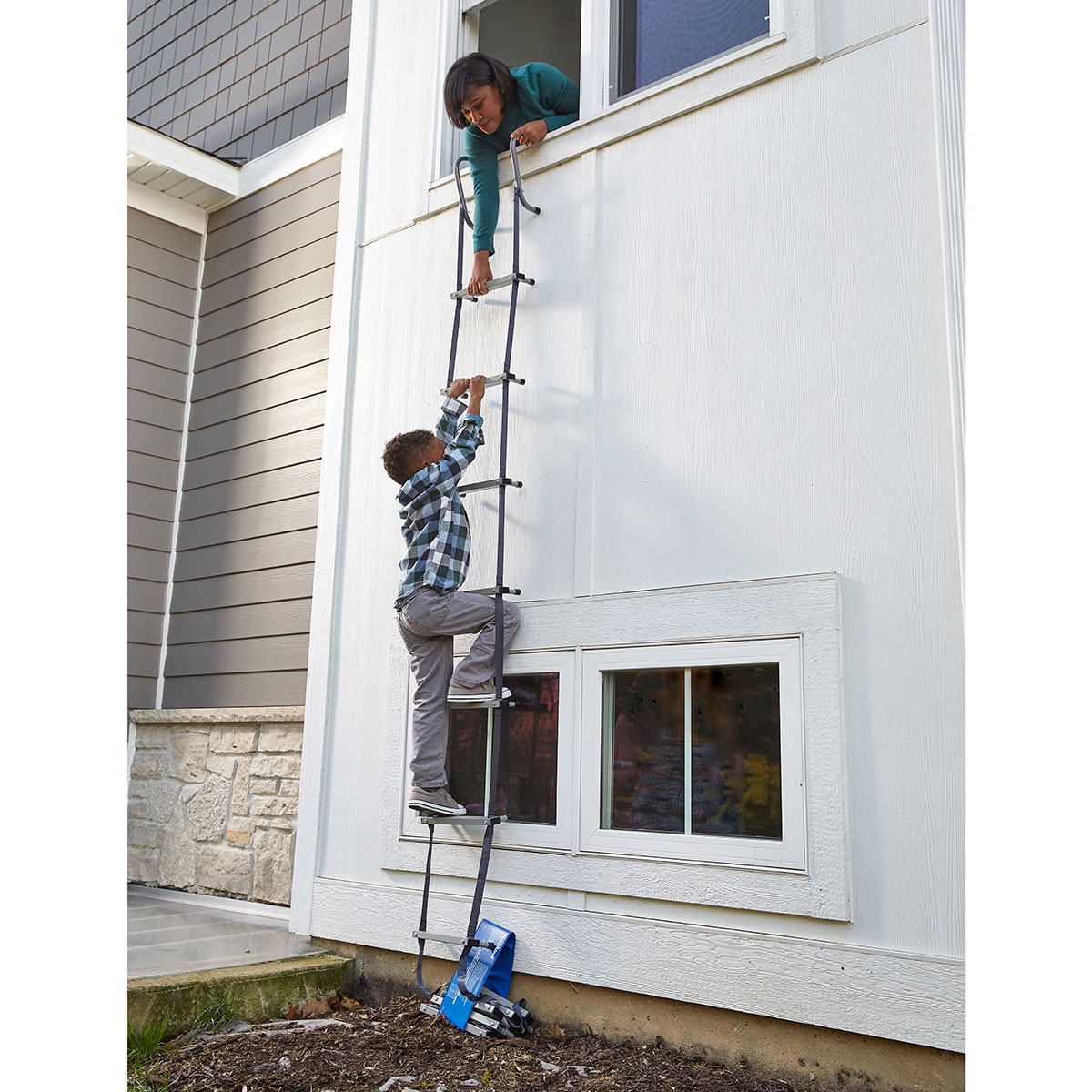
First Alert Fire Prevention Month: Are You Protected?
October is Fire Prevention Month. The First Alert Store is here to provide you with the resources and fire safety equipment needed to ensure that you and your family are protected for this month and beyond. Did you know that 3 out of 5 home fire deaths took place in homes without functioning smoke detectors?..

Where to Place Smoke Alarms, CO Detectors and Fire Extinguishers in Your Home
Understanding how to help protect your home and family from fire or carbon monoxide remains a top priority. For whole home protection, you'll want to follow these safety recommendations on the installation and placement of smoke alarms, carbon monoxide detectors and fire extinguishers in your home...
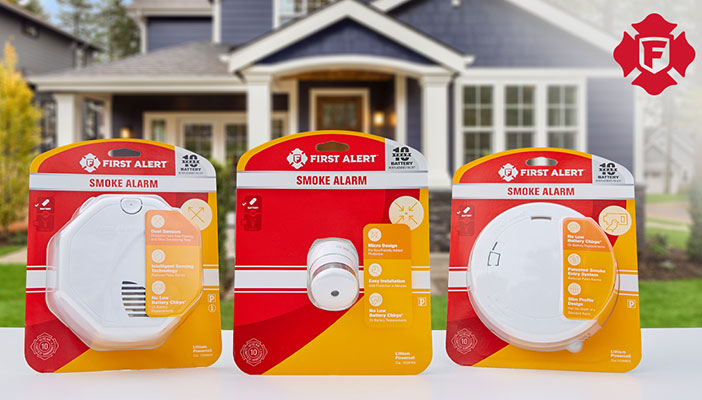
Hardwired Carbon Monoxide Alarms: Create an Interconnected CO Defense System
While battery operated and plug in carbon monoxide detectors offer some excellent versatility with regards to installation, they lack the interconnected features of a hardwired carbon monoxide alarm. First Alert Hardwired Carbon Monoxide Detectors can be linked together, ensuring a large net of detection when searching for carbon monoxide. ..
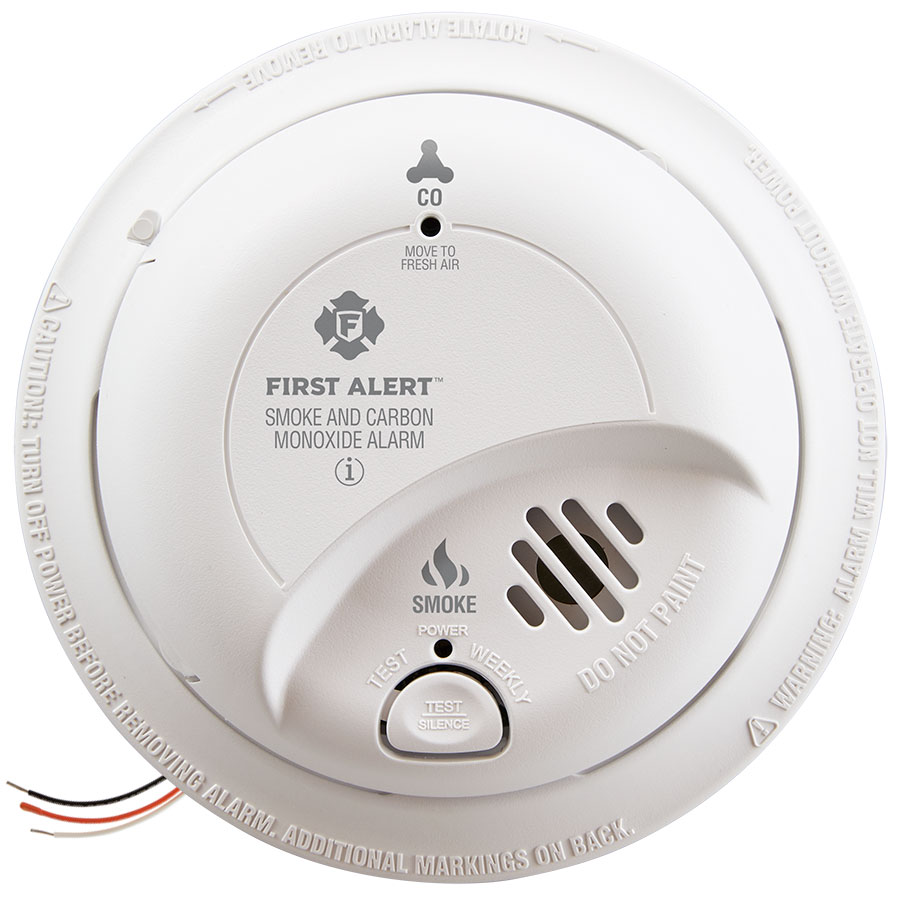
Plug-In Carbon Monoxide Alarms: Maneuverable Room to Room Carbon Monoxide Detection
There is something inherently convenient about being able to plug in a carbon monoxide alarm. You can simply plug in a carbon monoxide detector into a standard wall outlet and have immediate access to co detection. This makes plug in carbon monoxide alarms a popular choice for those who want to avoid the installation process of a hardwired or battery operated detector. ..
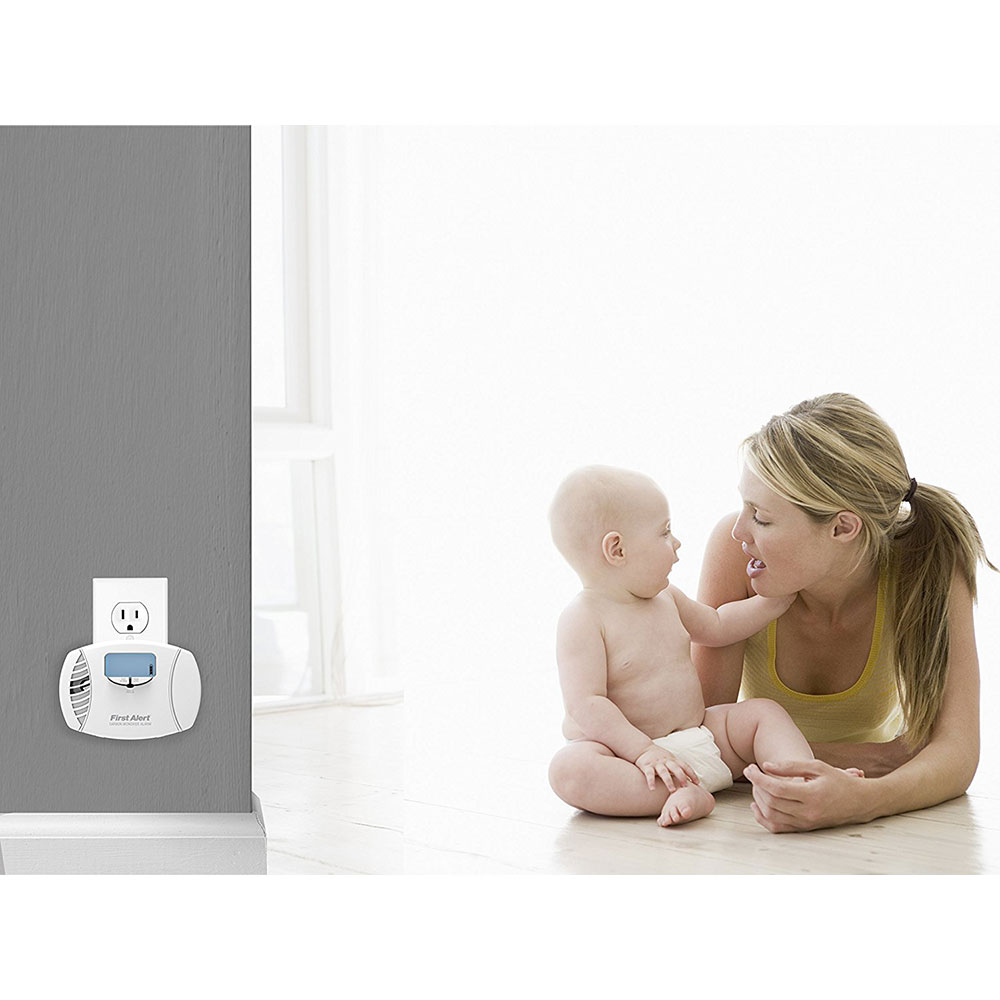
Battery Operated Carbon Monoxide Alarms: 10 Years of Versatile CO Protection
Bypassing hardwired installation requirements, battery operated carbon monoxide detectors offer a lot more flexibility with their setup. Depending on the alarms you select, you'll be able to easily mount them onto walls, ceilings or even place them on desktops. Powered by ten year lithium batteries, First Alert Battery Operated Carbon Monoxide Detectors ensure a decade's worth of wireless co detection. ..
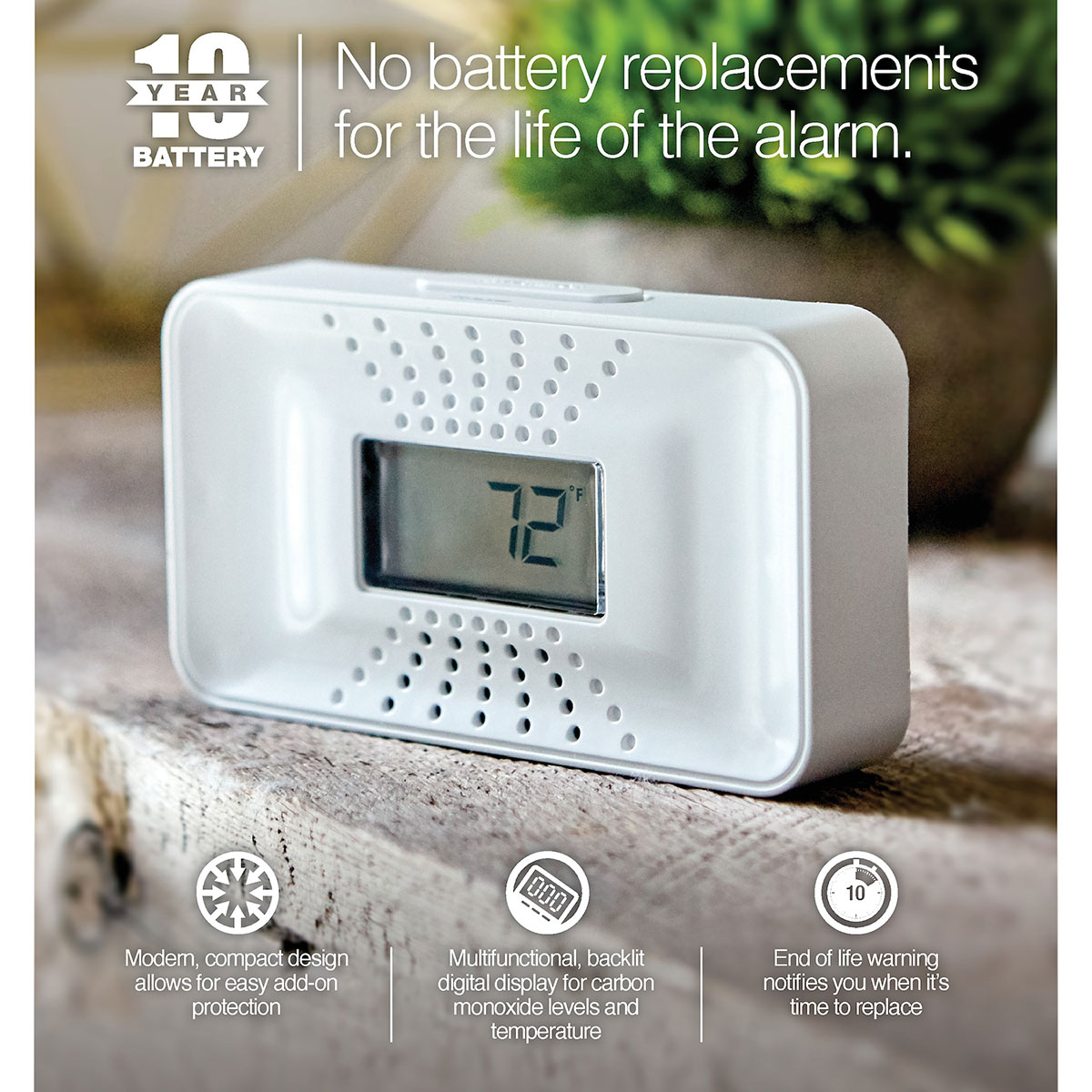
First Alert Smoke Alarms: Don't Wait, Replace Now!
Don't wait until it's too late. Replace your current smoke and fire alarms at the First Alert Store today. 10 Year Battery Operated and Hardwired Smoke Alarms are available for online purchase. ..
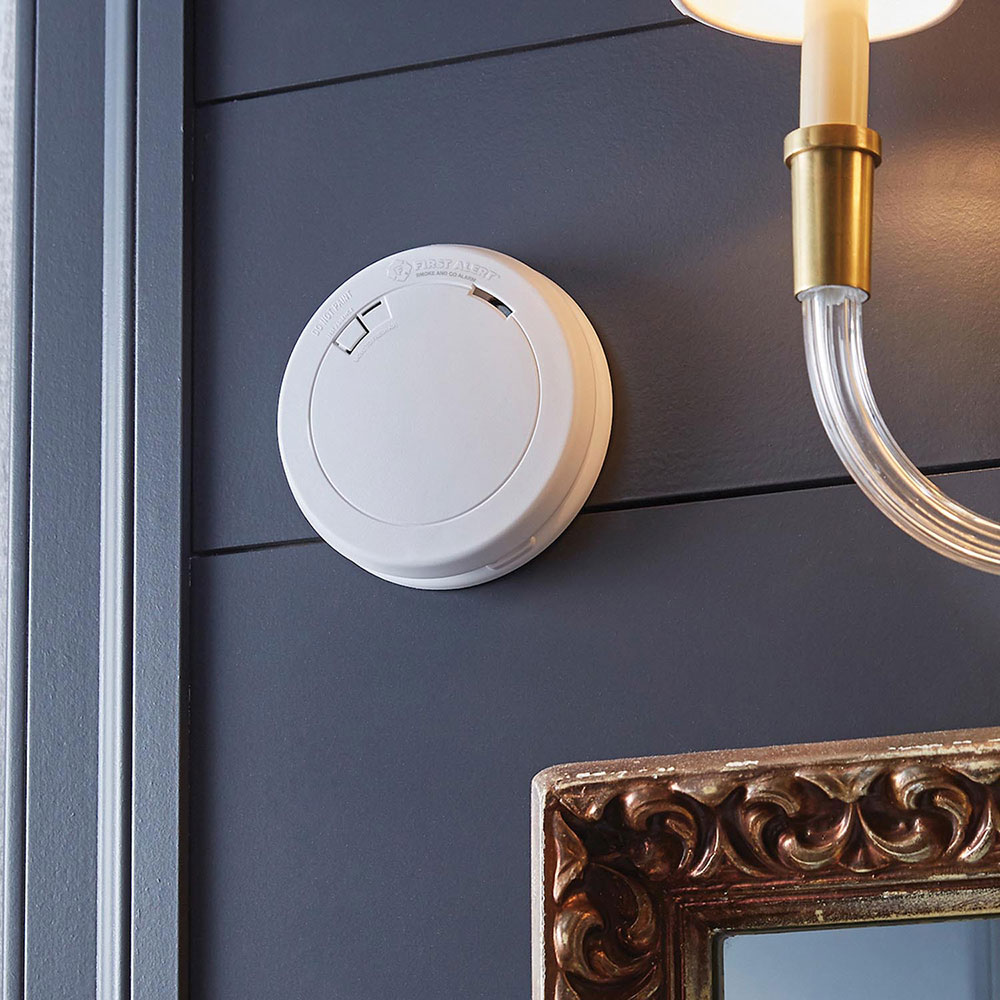
Consumer Reports Selects First Alert Carbon Monoxide Alarms
Consumer Reports Study reveals Top Rated First Alert Carbon Monoxide Alarms that excel in speed and accuracy at detecting carbon monoxide. ..
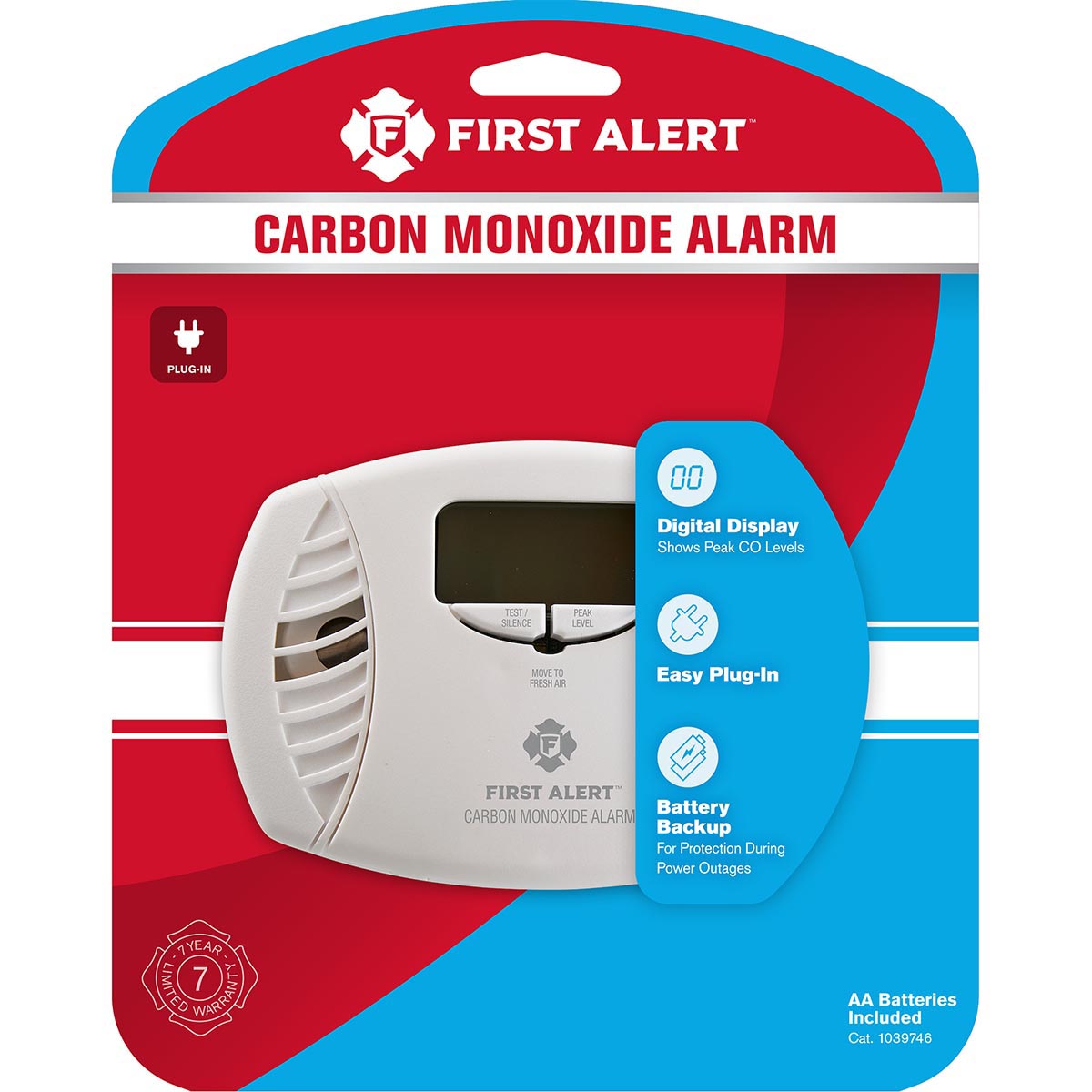
First Alert Fire Extinguisher Ratings: Identifying Class A, B & C Fire Types
Available in a variety of sizes and class types, First Alert Fire Extinguishers can safely be installed in the home or commercial setting. When selecting a fire extinguisher for your home or business, it's important to review the extinguisher's rating...
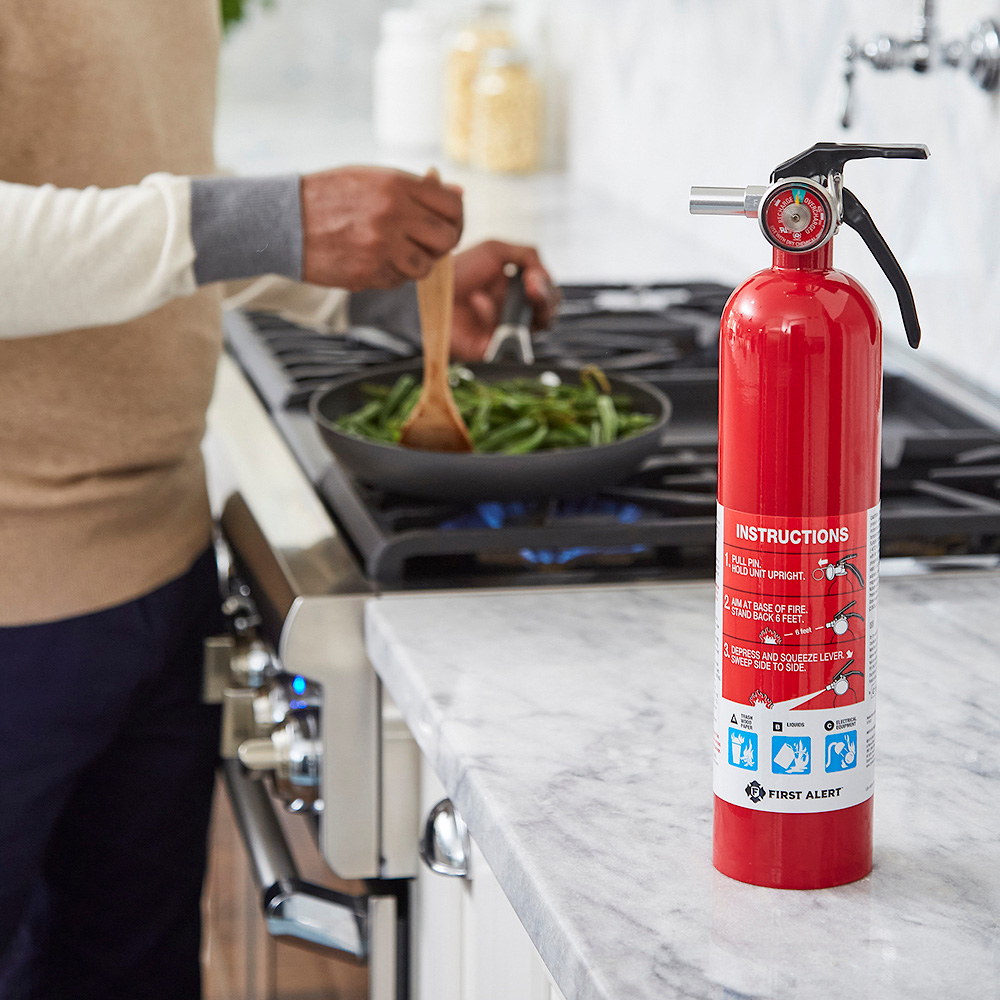
The Z-Wave Combo Smoke Detector & Carbon Monoxide Alarm With Real Time Notifications
Z-Wave Combination Smoke and Carbon Monoxide Alarms provide a host of intuitive benefits unavailable in other detectors. ..
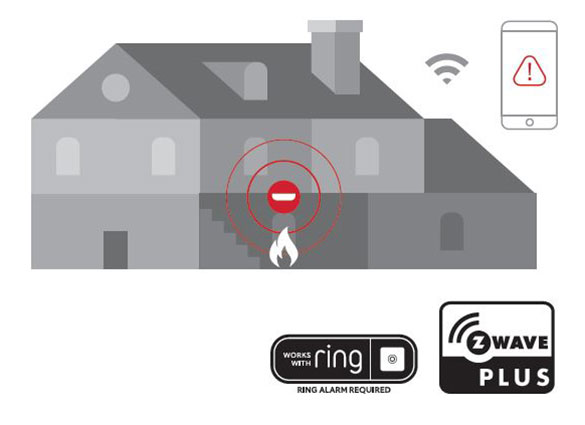
Storm & Hurricane Preparedness - Home Safety & Carbon Monoxide Protection
First Alert Carbon Monoxide Alarms quickly detect the presence of this poisonous and all too dangerous gas to ensure home and family safety...
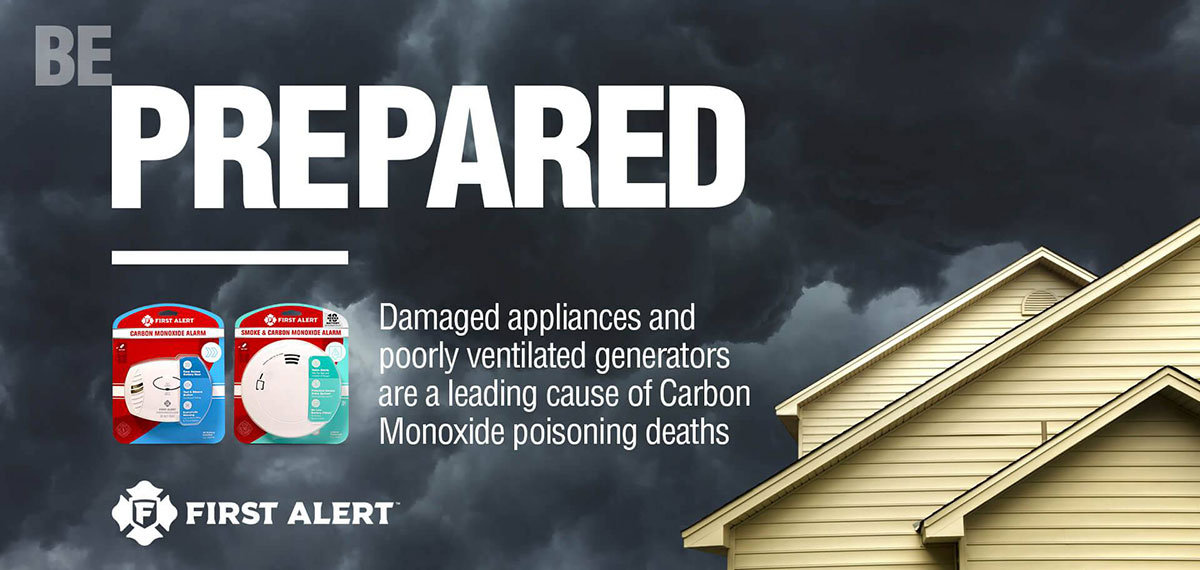
Be Ready For The Unexpected & Protect Your Whole Home With Help From First Alert
First Alert Smoke Alarms, Portable Carbon Monoxide Alarms, Combination Alarms and Tundra Fire Extinguishing Spray provide home safety from fire and carbon monoxide ..
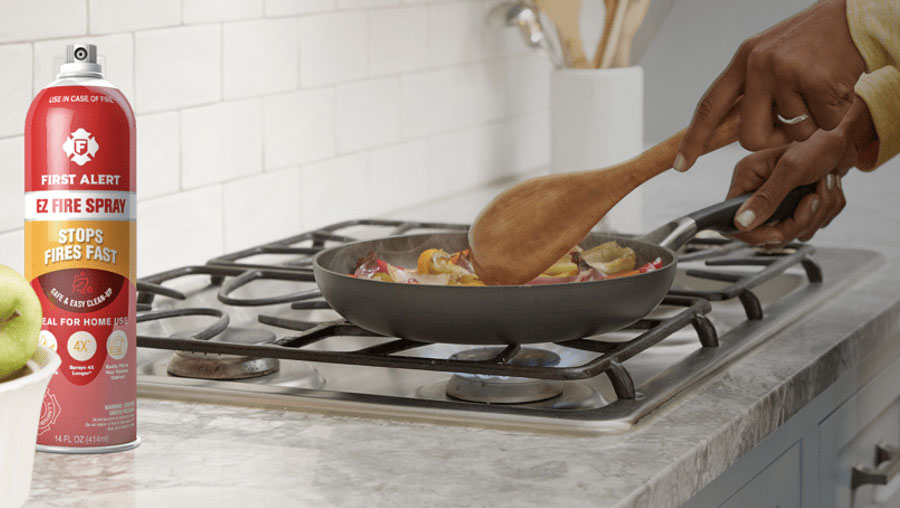
Know CO - Help Protect Your Family From Carbon Monoxide
carbon monoxide can be produced and released by any fuel burning device in your home (i.e. stoves, furnaces, heaters...) CO alarms remain the surest and most accurate means of detecting this very dangerous gas...

Forgoing hardwired installation, this traveling carbon monoxide alarm can be moved from room to room or be used on the go. No larger than the size of most cellphones, the traveling carbon monoxide detector is powered by a 10-year lithium battery...

First Alert Store Fire Prevention Month: Are You Fully Protected?
The First Alert Store is here to aide families by offering a selection of fire safety equipment such as: First Alert Smoke Alarms, First Alert Fire Extinguishers and First Alert Escape Ladders...
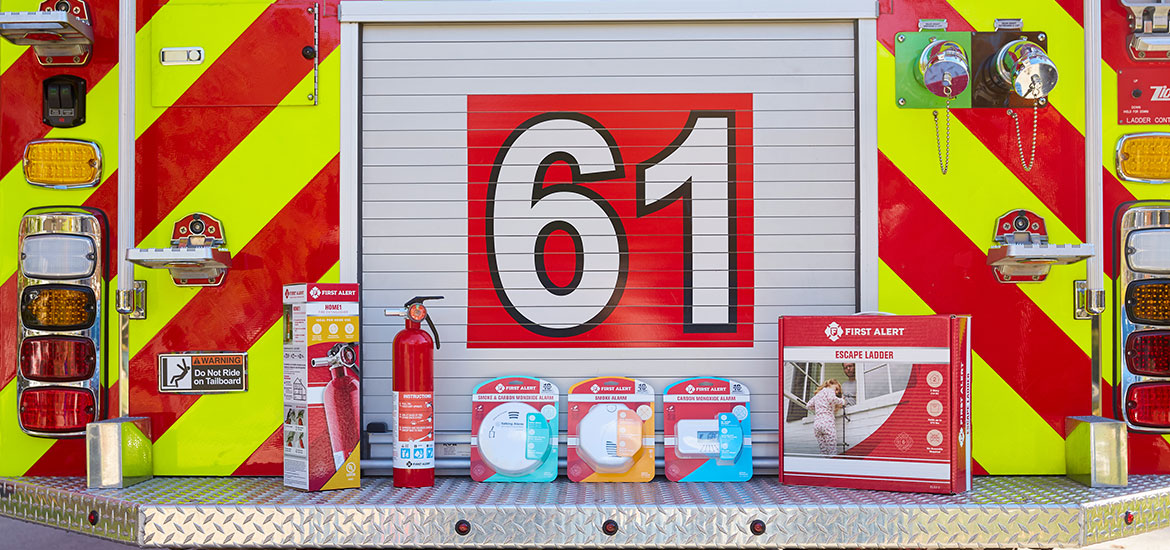
Summer Grillin' Done Safely with First Alert
First Alert Store offers a selection of lightweight and efficient fire extinguishers that can work in the home as well as the grill...
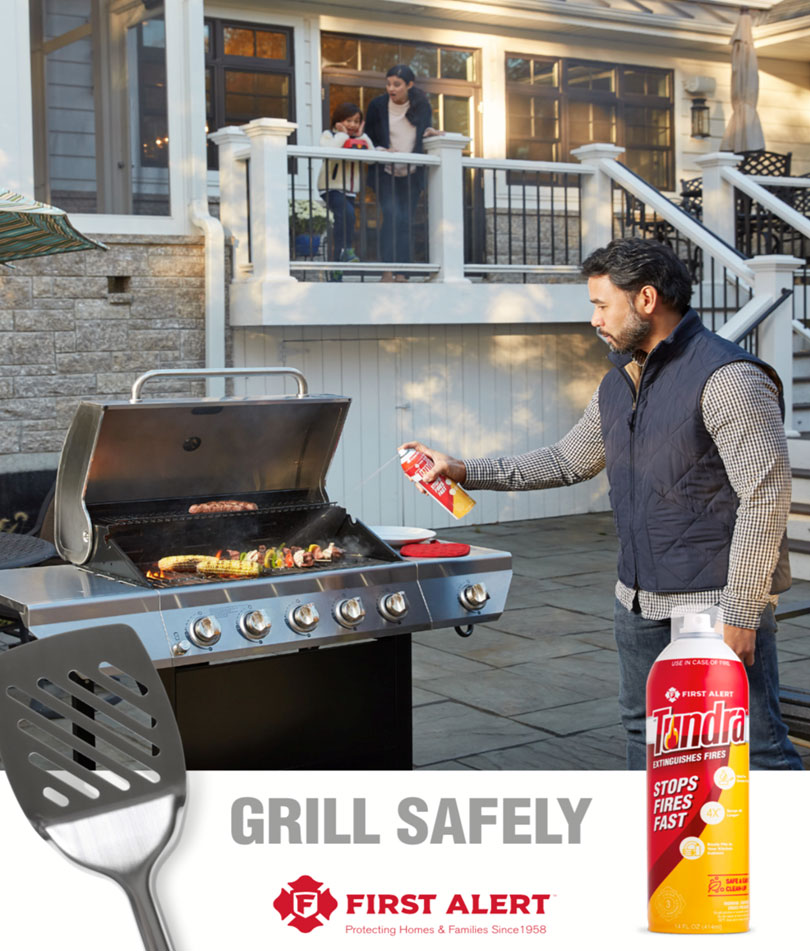
January is National CO Awareness Month. Are you protected from Carbon Monoxide this winter?
Due to its odorless and colorless characteristics, carbon monoxide poses a significant danger as this winter's 'silent killer'. The Journal of American Medical Association released a statistic that indicated carbon monoxide as being responsible for an average of 450 deaths each year. ..
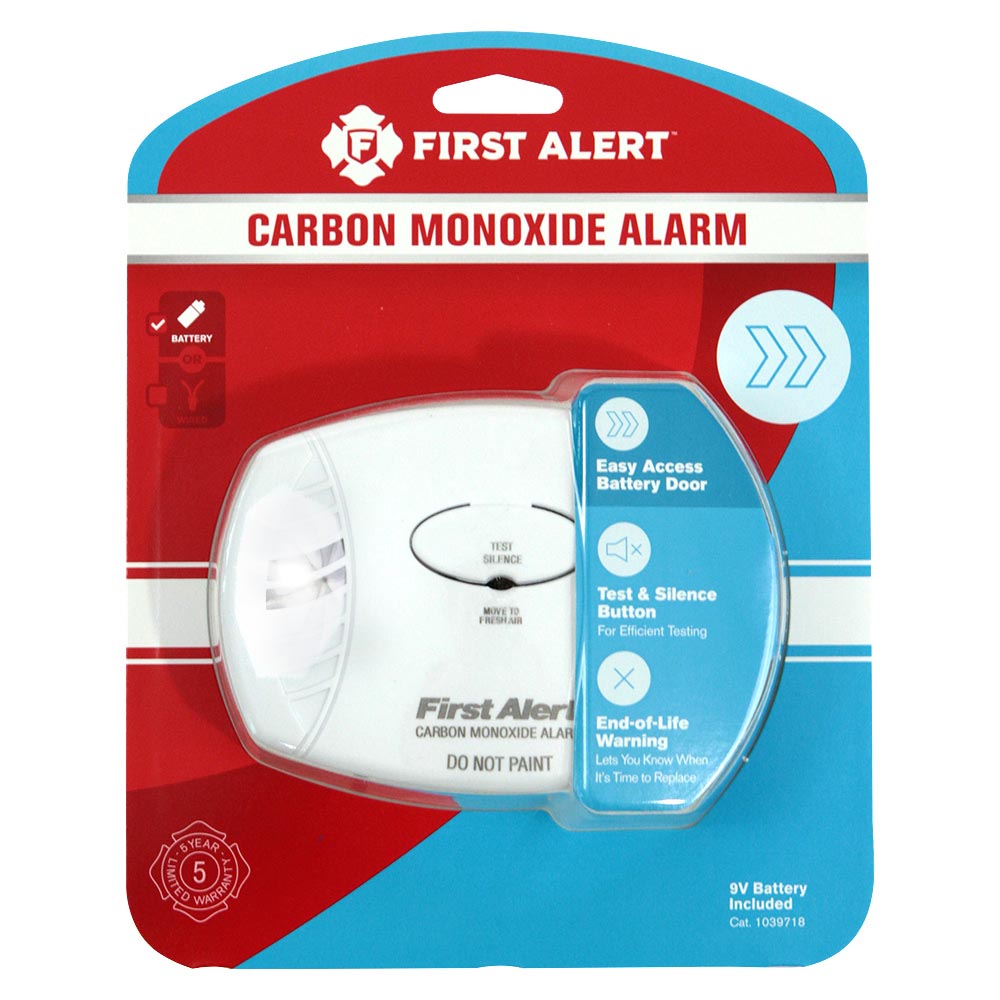
First Alert Smoke and Carbon Monoxide Alarms: Celebrate the Holiday Season Responsibly
First Alert Smoke Alarms, Carbon Monoxide Alarms and other safety products can make a difference this holiday season...

First Alert Black Friday & Cyber Monday Deals For 2018
Big savings on some of our most popular products including: smoke alarms, carbon monoxide detectors, fire safety items and security safes. ..
First Alert Store Holiday Guide: The Gift of Peace of Mind
Celebrate responsibly with the First Alert Store: a leading online retailer for smoke alarms, carbon monoxide alarms and combination alarms...
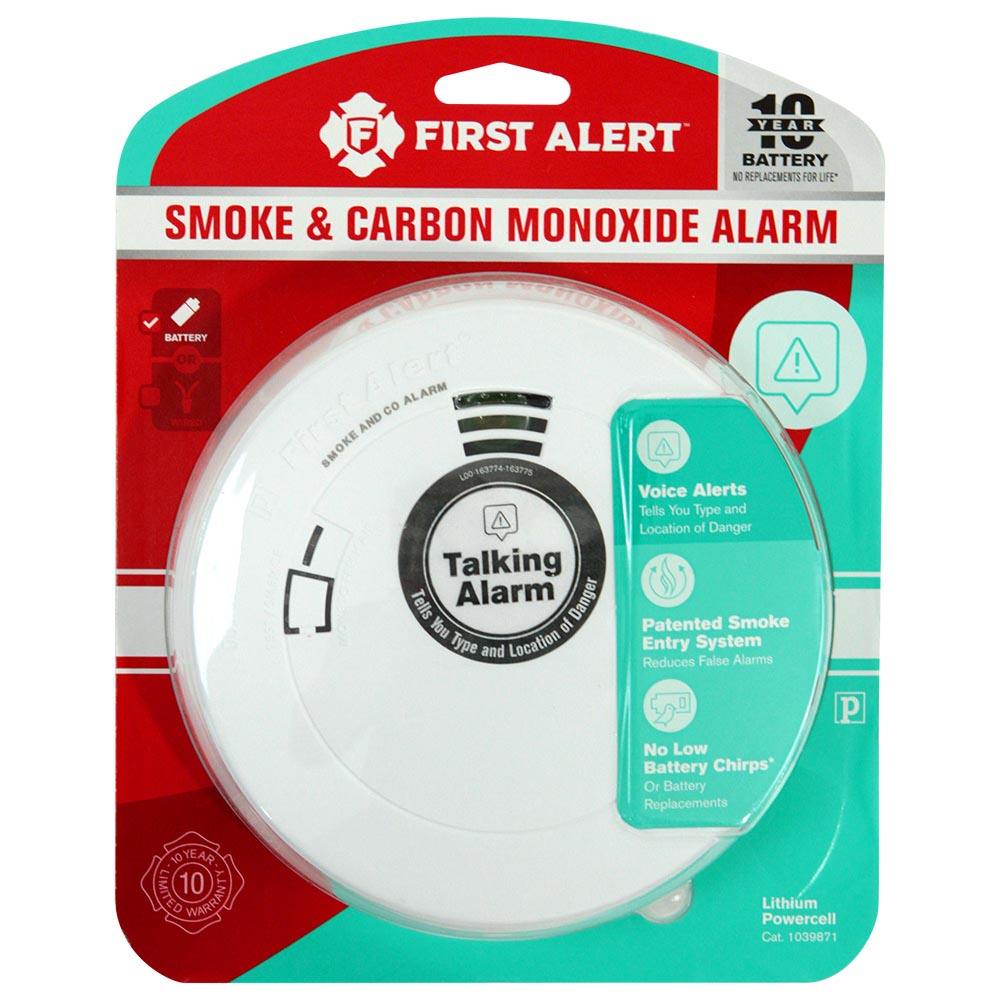
Be a Super Prepared Family: Practice Fire Safety with First Alert
Be a super prepared family with First Alert Smoke Alarms, Carbon Monoxide Alarms, Escape Ladders and Fire Extinguishers..
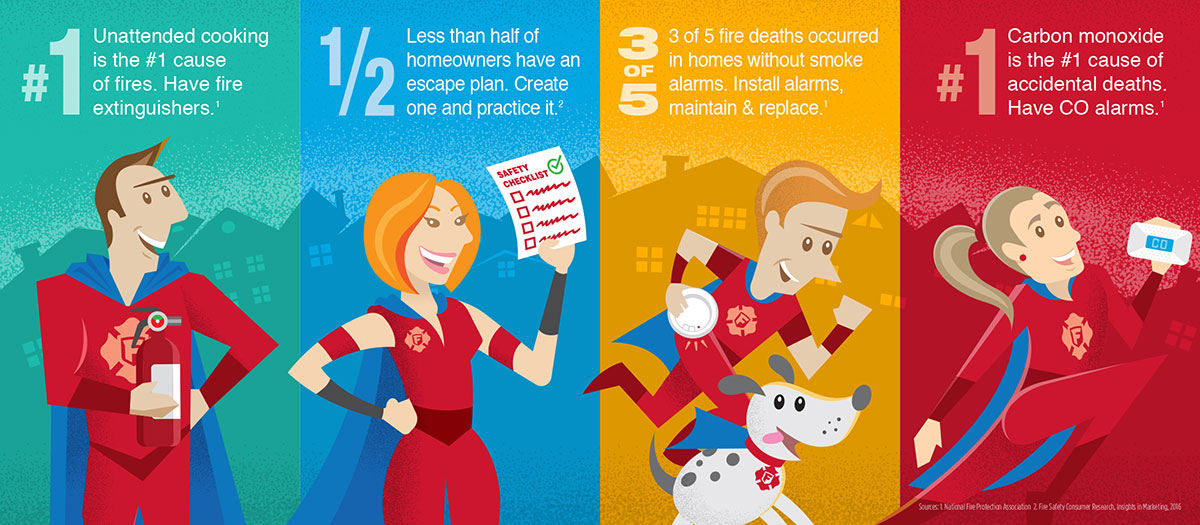
Free to Enter First Alert Fire Safety Sweepstakes
The rules for entering the First Alert Fire Prevention Week Sweepstakes couldn't be any simpler. You could win one of three First Alert Safety Packages...

First Alert Dual Sensing Smoke Alarms: All of the Strengths/None of the Limitations
Dual Sensing Smoke Alarms ensure maximum coverage by utilizing photoelectric and ionization technologies. Due to the overspecialization of each technology, it's becoming increasingly important to outfit homes with a smoke detector that's capable of implementing both photoelectric and ionization capabilities...
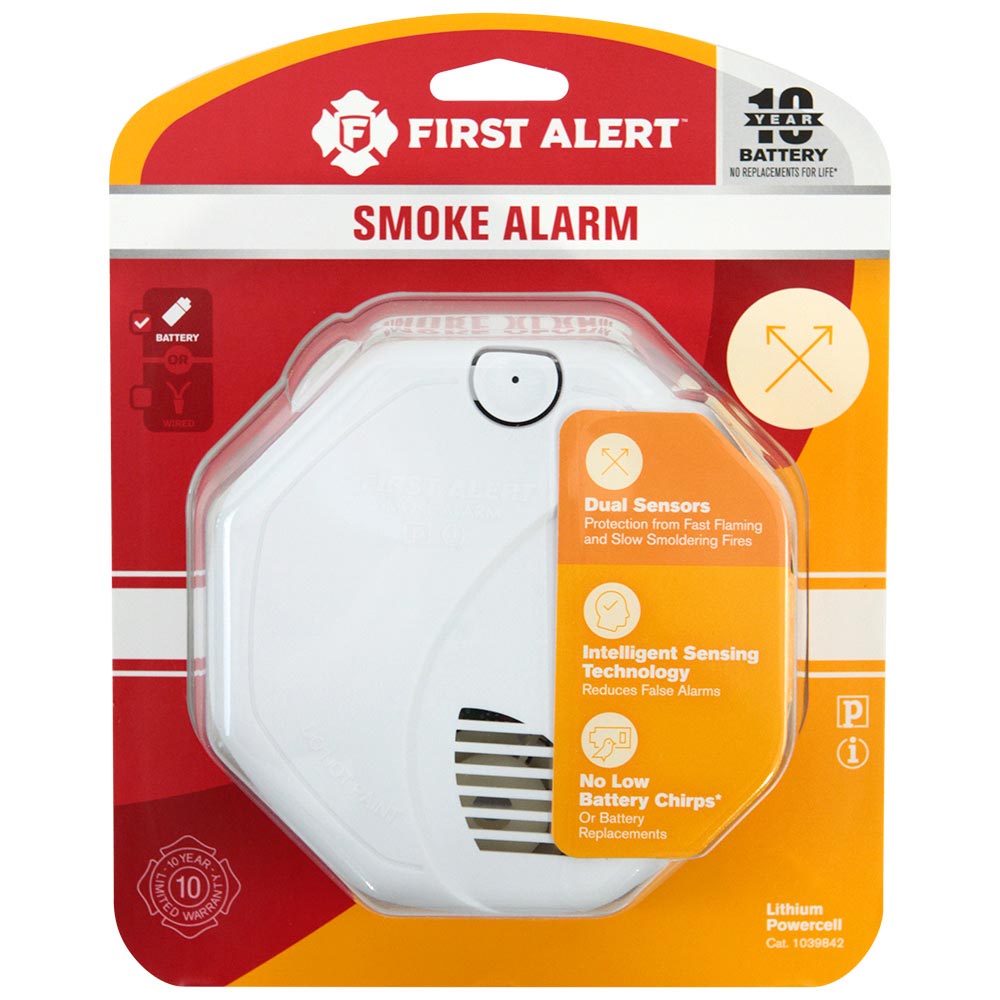
Make Sure You're Protected with Newly Installed First Alert Carbon Monoxide Alarms
Carbon Monoxide Alarms and Carbon Monoxide Detectors can help prevent your family from being exposed to deadly co fumes. The First Alert Store includes battery operated, hardwired and plug-in carbon monoxide detectors...
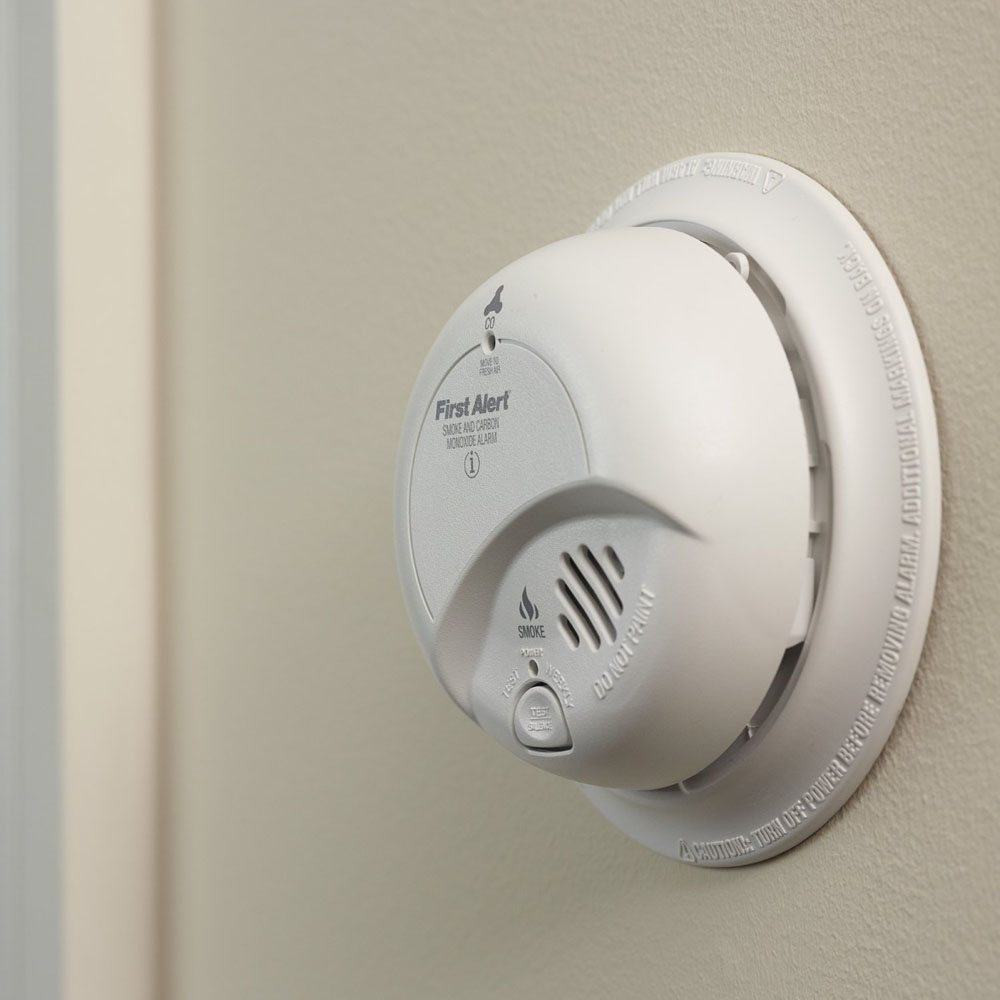
First Alert Smoke and Combination Alarms: A Reliable Defense in Disaster Prevention
Protect What Matters Most with First Alert Smoke and Combination Alarms. The U.S. Fire Administration (USFA) is increasing its efforts to educate homeowners on the life threatening dangers associated with smoke and fire...
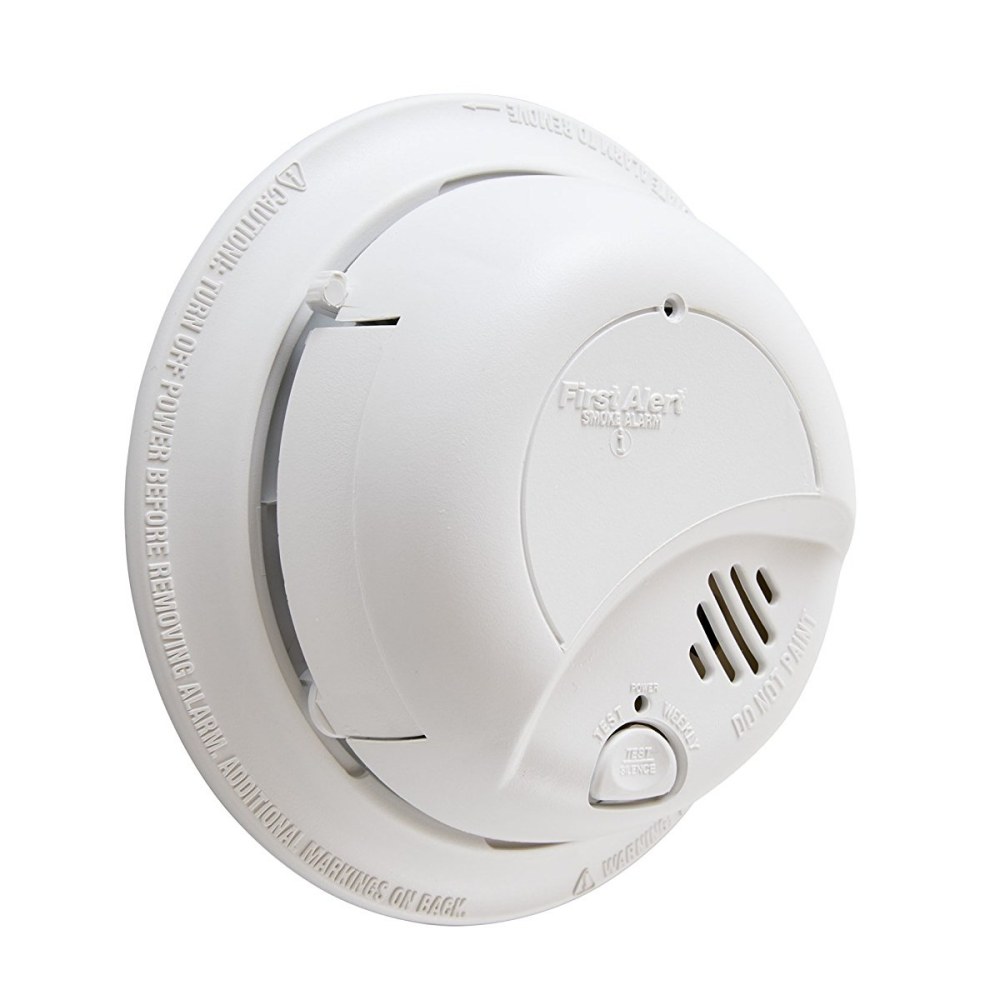
SmartBridge Home Security Systems & Security Cameras
Take control of your home security systems with the easy-to-setup Smartbridge security system. This unique home or office security system can be controlled or monitored online at any time, no matter where you are...
First Alert Combination Alarms: An Increasingly Affordable and Reliable Defense against Smoke, Carbon Monoxide & Natural Gas Hazards
A Brand you can trust, First Alert Smoke, Carbon Monoxide & Natural Gas detection products are the perfect solution for your home safety and security solutions...
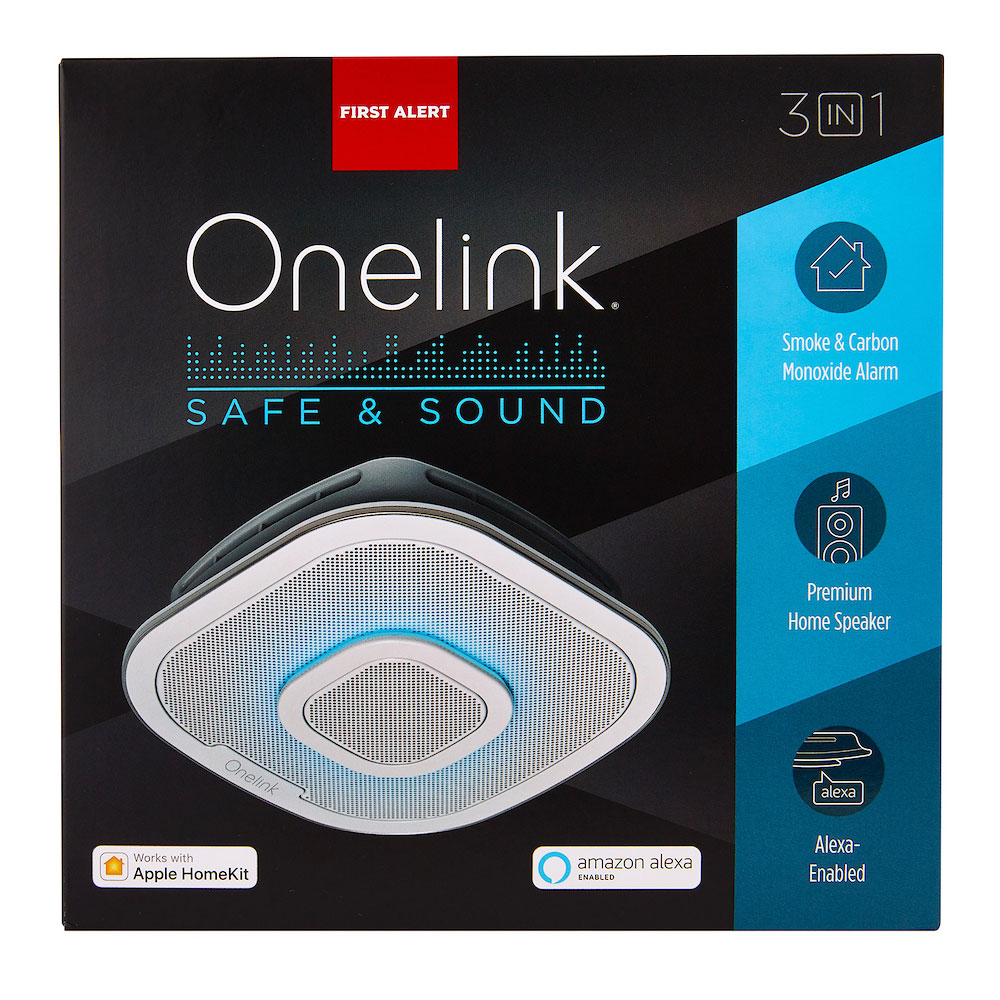
Introducing an Industry First: A Onelink Smoke & CO Alarm with Built-In Amazon Alexa Voice Services
Communicate with Alexa right through your smoke alarm. The combination of dual (smoke & CO) protection, user accessibility via Alexa Voice integration and an immersive audio system distinguish this alarm as a must own safety enhancer for any number of interior settings...
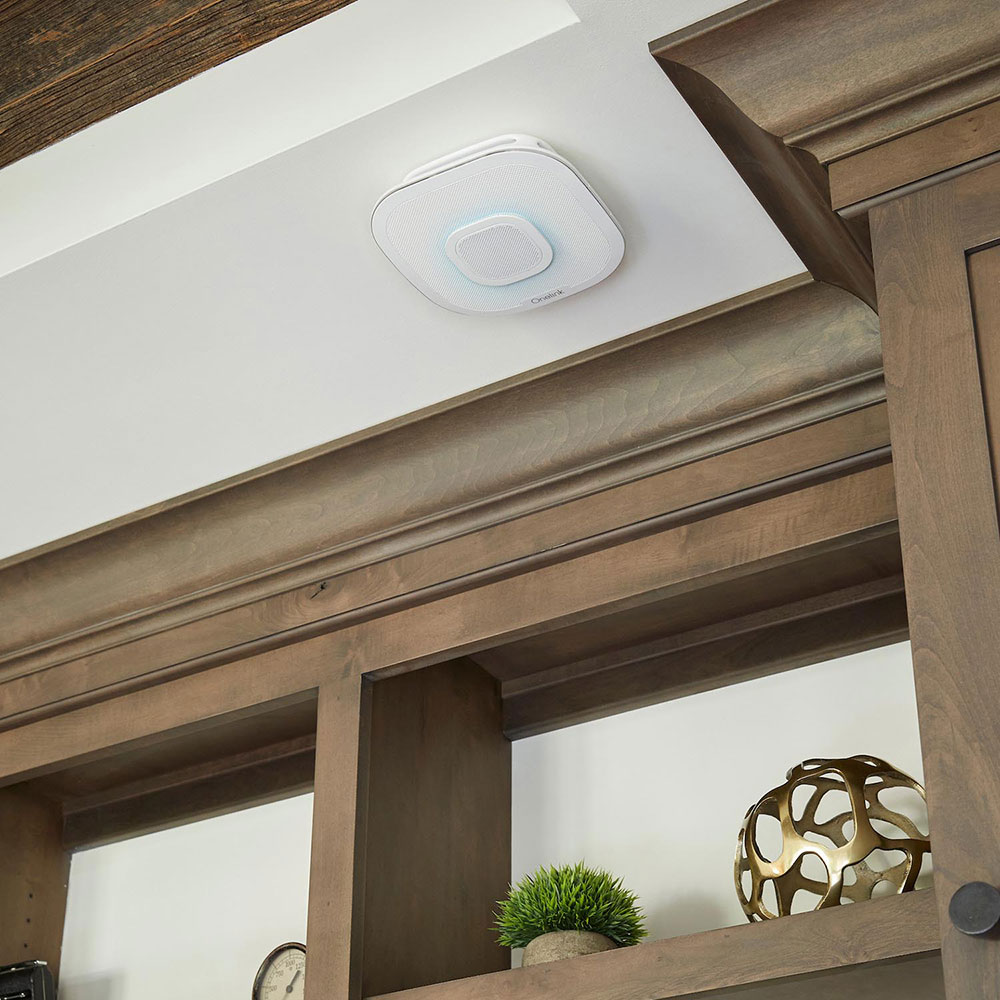
First Alert Winter Holiday Fire Safety Tips & Risks
The winter months carry a significantly increased risk for homeowners seeking to protect themselves and their loved ones from the very real and often lethal attributes of fire and carbon monoxide. First Alert Store offers tips and the tools required to keep your family and home safe from fire, smoke and carbon monoxide during the holidays...
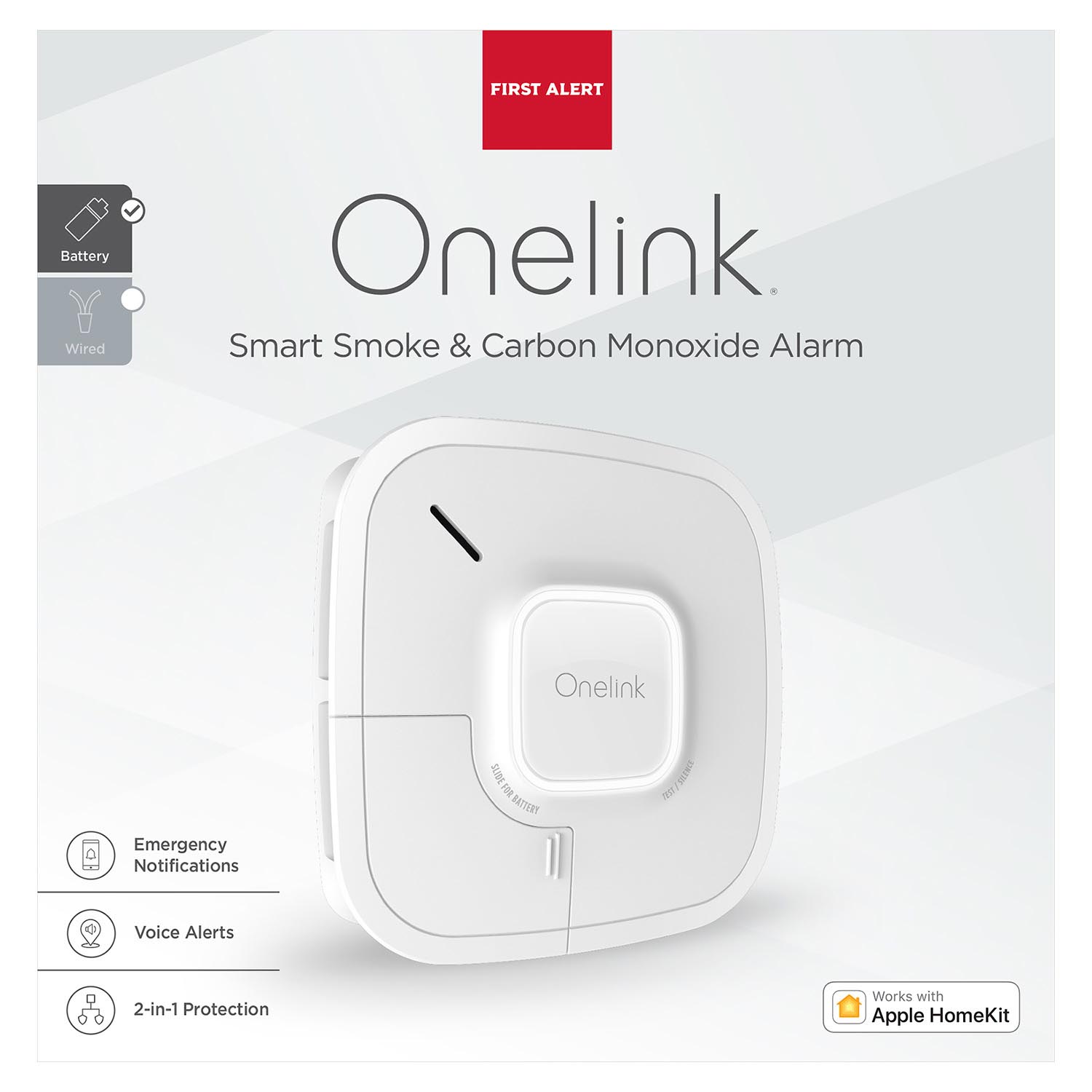
First Alert Fire Prevention Week Sale - Save 30% on Three Popular Smoke/Fire Alarms
First Alert the #1 most trusted Brand for safety products in America is having a smoke alarm sale for Fire Prevention Week. Save 30% instantly on select smoke and fire detectors...
Plan, Prevent and Protect your Home this winter with First Alert Carbon Monoxide Alarms
The winter months heighten the already potential lethal properties associated with carbon monoxide. It is absolutely essential that homeowners have access to a CO alarm that will readily alert their surroundings to the presence of the "silent killer", carbon monoxide. The First Alert Store offers a collection of carbon monoxide alarms that will allow homeowners to achieve the maximum in peace of mind this winter...
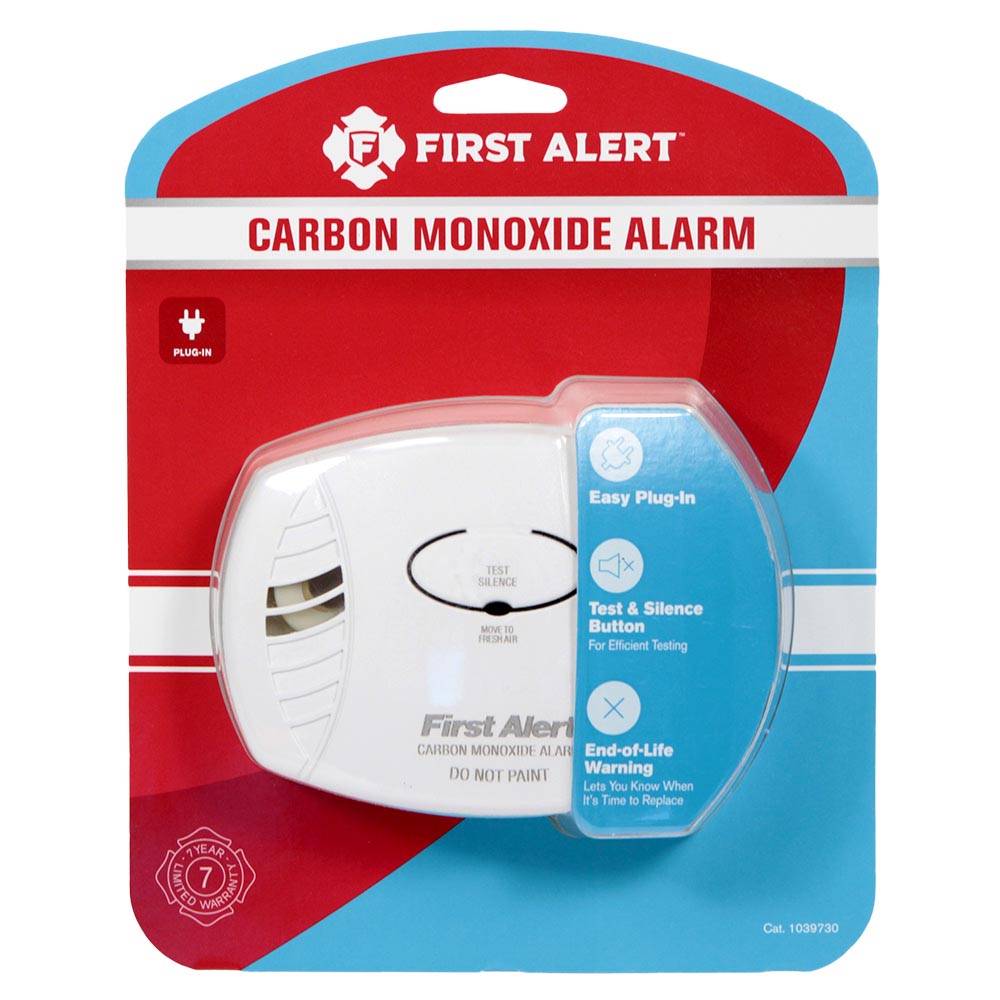
First Alert Store's Home Safety Awareness Sweepstakes - Free to Enter!
This contest is entirely exclusive to the First Alert Store and will allow participants to win one of three prize packages that include First Alert Home Safety products. Simple sign up on FirstAlertStore.com and all winners will be emailed on the official drawing date...
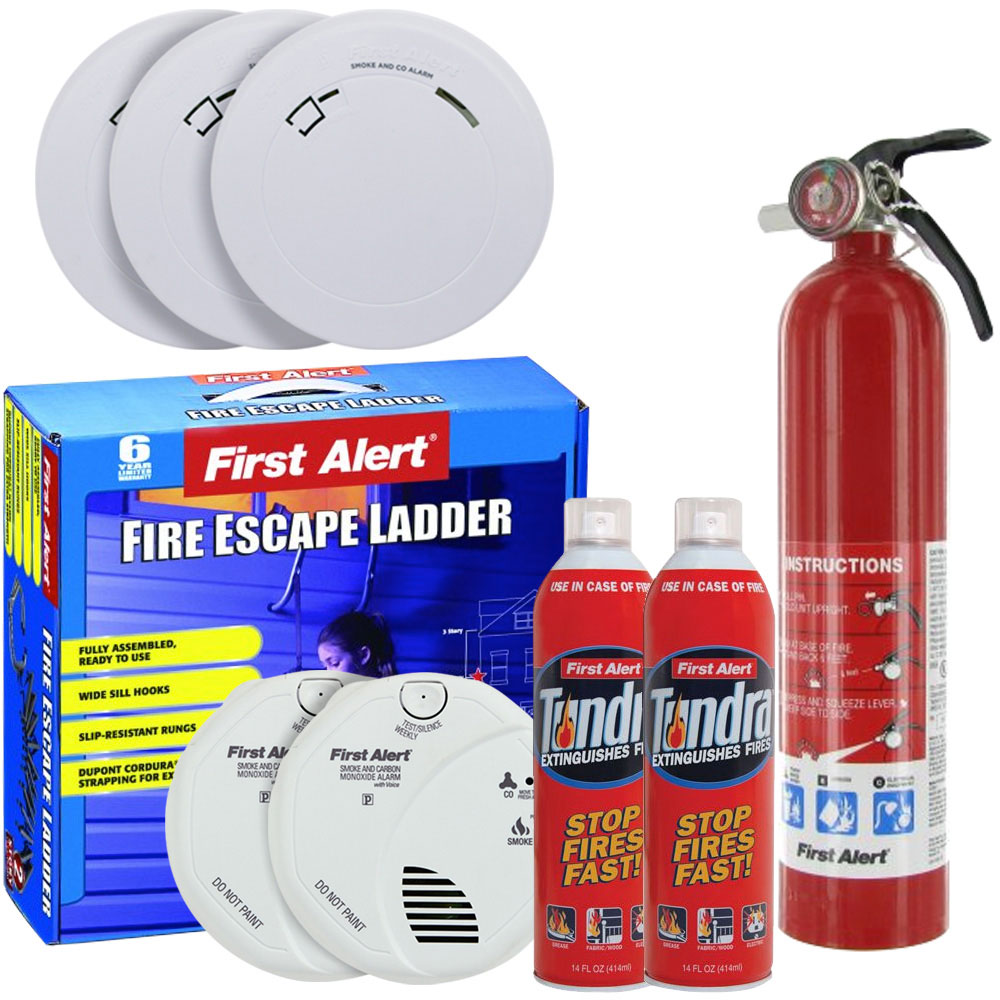
Choosing Between Photoelectric, Ionization and Dual Sensing Smoke Alarms
Know the difference between the sensor types found in all modern smoke alarms. Find out more on photoelctric, ionization and dual sensing detection and the benefits of each...

Fire Prevention Week Focuses On Escape Planning - Every Second Counts
Make sure you and your loved ones are protected and practice home safety escape planning. First Alert offers all the tools you need to help warn you of potential dangers and make sure you plan ahead to avoid disaster...
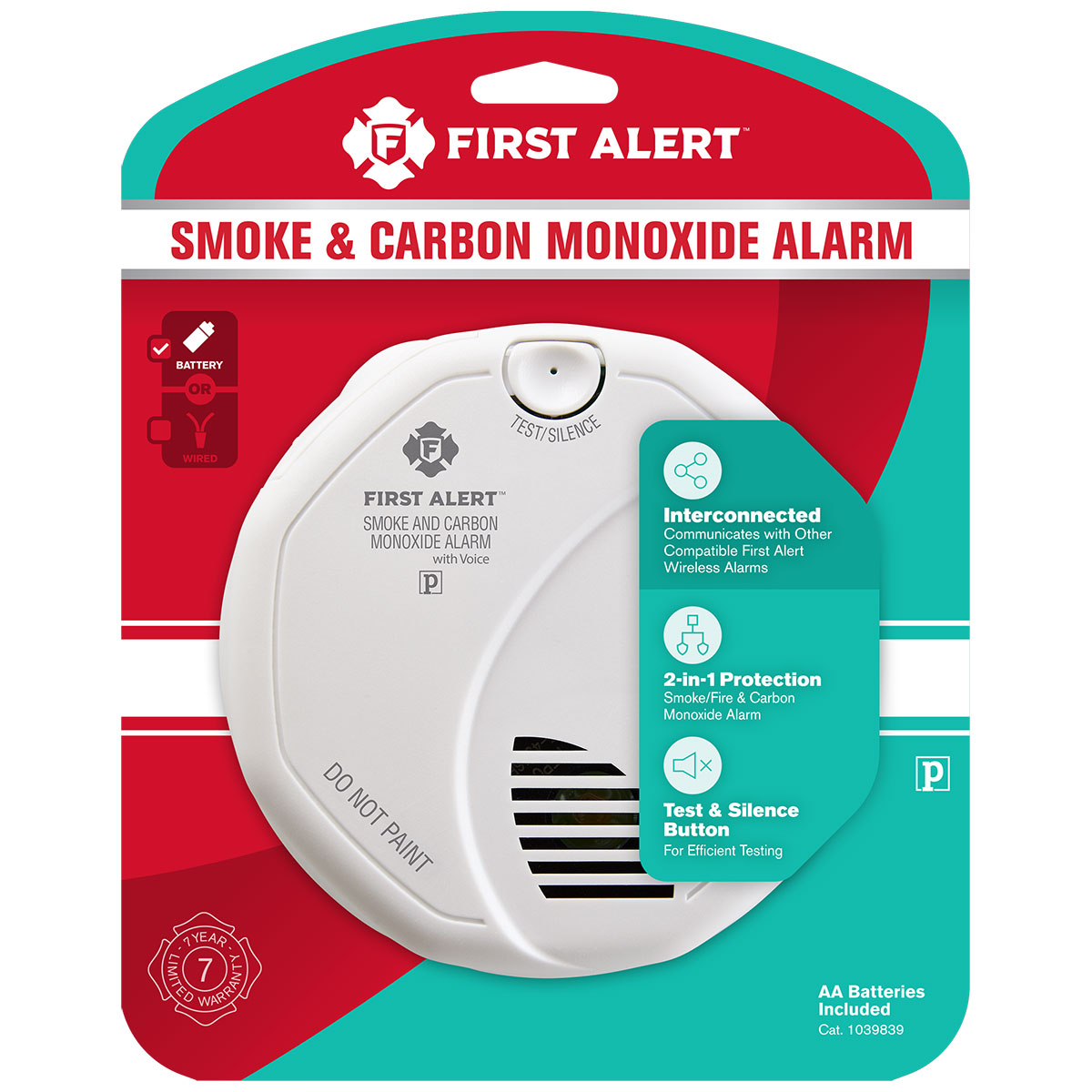
Fire Prevention Month Sale: Protect What Matters Most During the Holiday Season
Reduced prices and free shipping on all fire and safety alarms for a limited time only. Order today and make sure your home is protected from the dangers of fire, smoke, carbon monoxide and gas leaks...
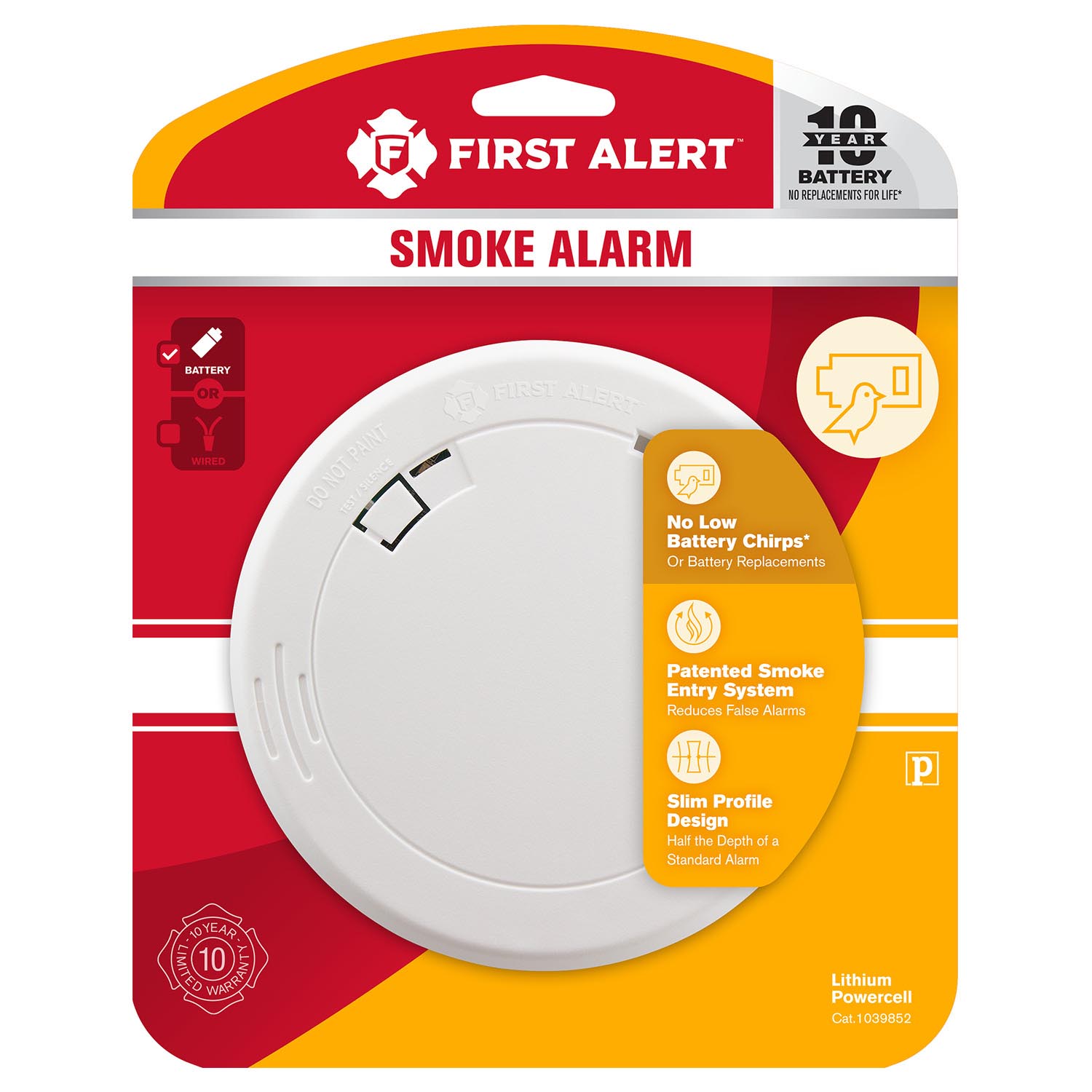
Free Shipping on First Alert's Entire Selection of Smoke and CO Detectors (Limited Time Offer)
This promotion is a First Alert Store exclusive and is applicable to every First Alert Smoke Alarm, Carbon Monoxide Alarm, Wireless Interconnect Alarm and ONELINK Alarm available for online purchase...
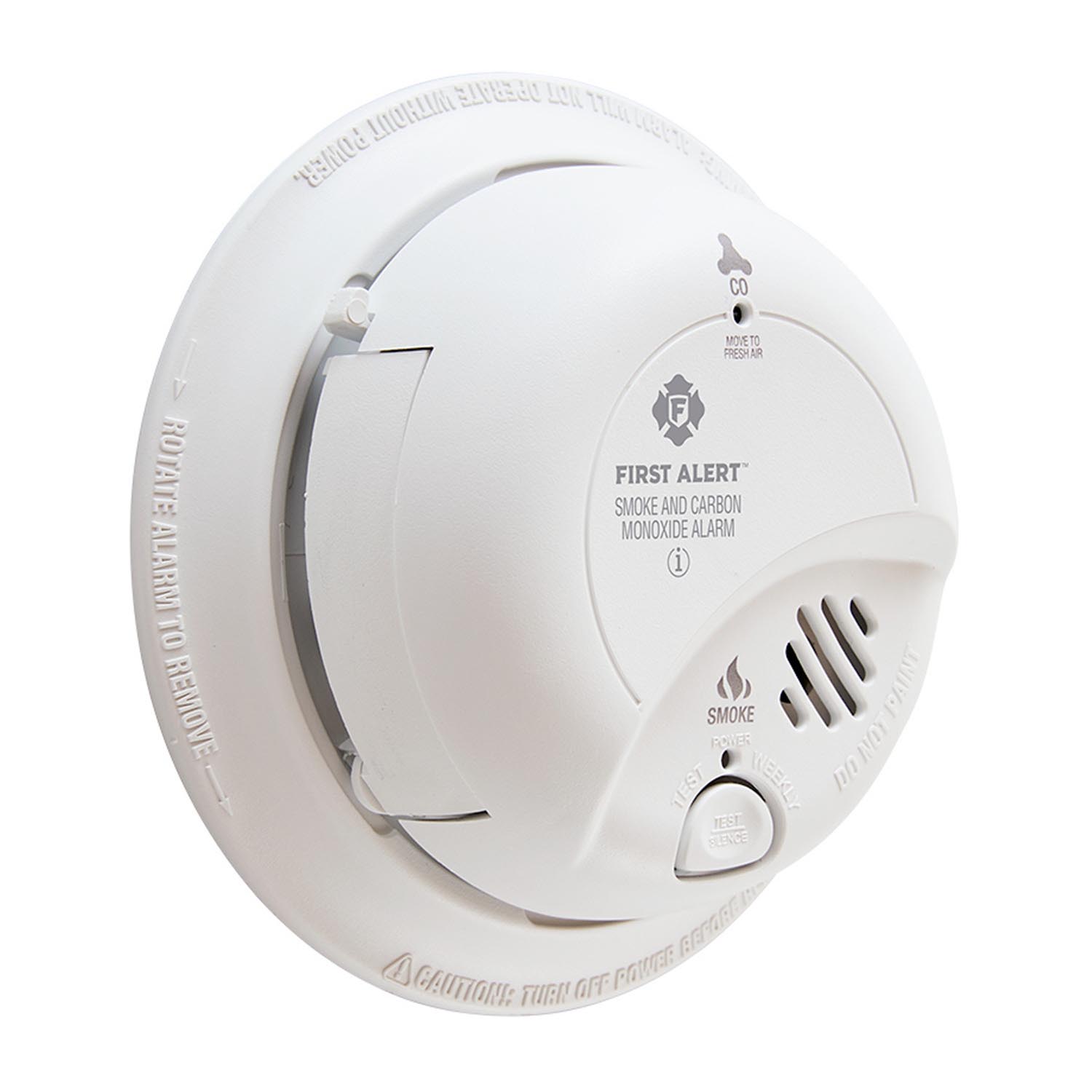
What's In Your Drinking Water?
The type of water we drink (depending on chemicals present such as bacteria, chlorine, lead, etc) can play a major effect on our body and our immune system if we are not careful...
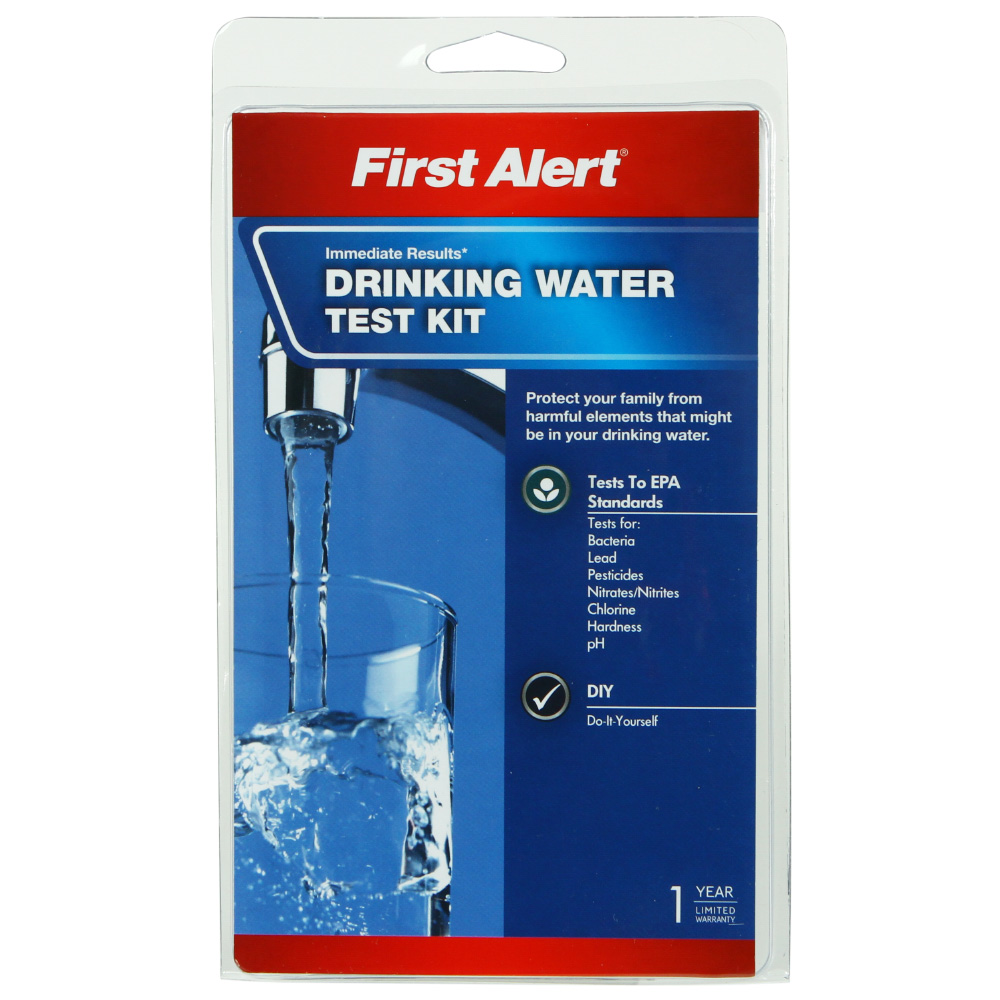
Fire Safety: Clean, Check and Use Common Sense
Home fire safety tips and what items you need to protect your home and family from smoke and fire. ..
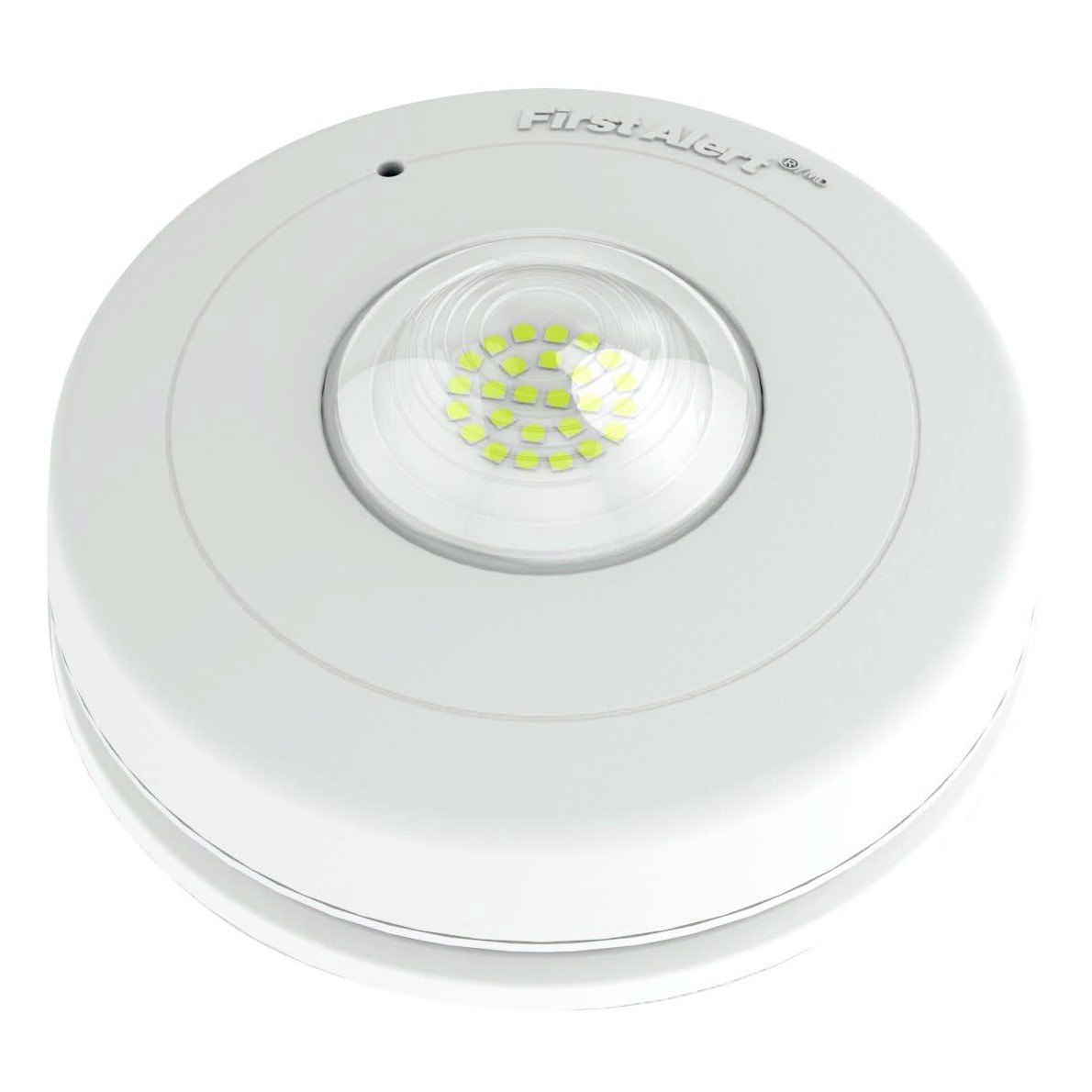
Winter Fire Safety Tips, Stay Safe This Holiday Season - First Alert
Winter is the most dangerous time of year for fire, smoke and carbon monoxide hazards. Make sure you take the right steps to keep your family, friends and home safe during the holidays...

Don't Wait, Check the Date and Protect Your Home with First Alert 10 Year Alarms
Don't wait until it is to late to check the date of your current smoke or co alarms. Gain 10 years of peace of mind with First Alert's 10 year smoke alarms and co detectors...

Whole Home Protection with First Alert Wireless Interconnected Smoke and CO Alarms
First Alert interconnected alarms talk to each other so if one smoke or co alarm sounds they all do. Create a mesh network of fire and carbon monoxide detection within your home and be warned faster of any danger before it is to late...

First Alert Home Testing Kits, Water, Lead, Mold & Radon - Great For New Homeowners
Make sure your home and living quarters is hazard free with a First Alert Home Testing Kits. Test drinking water with a simple to use sample kit. Test for radon and lead within your home or kids toys. Test for mold before it becomes a serious problem...
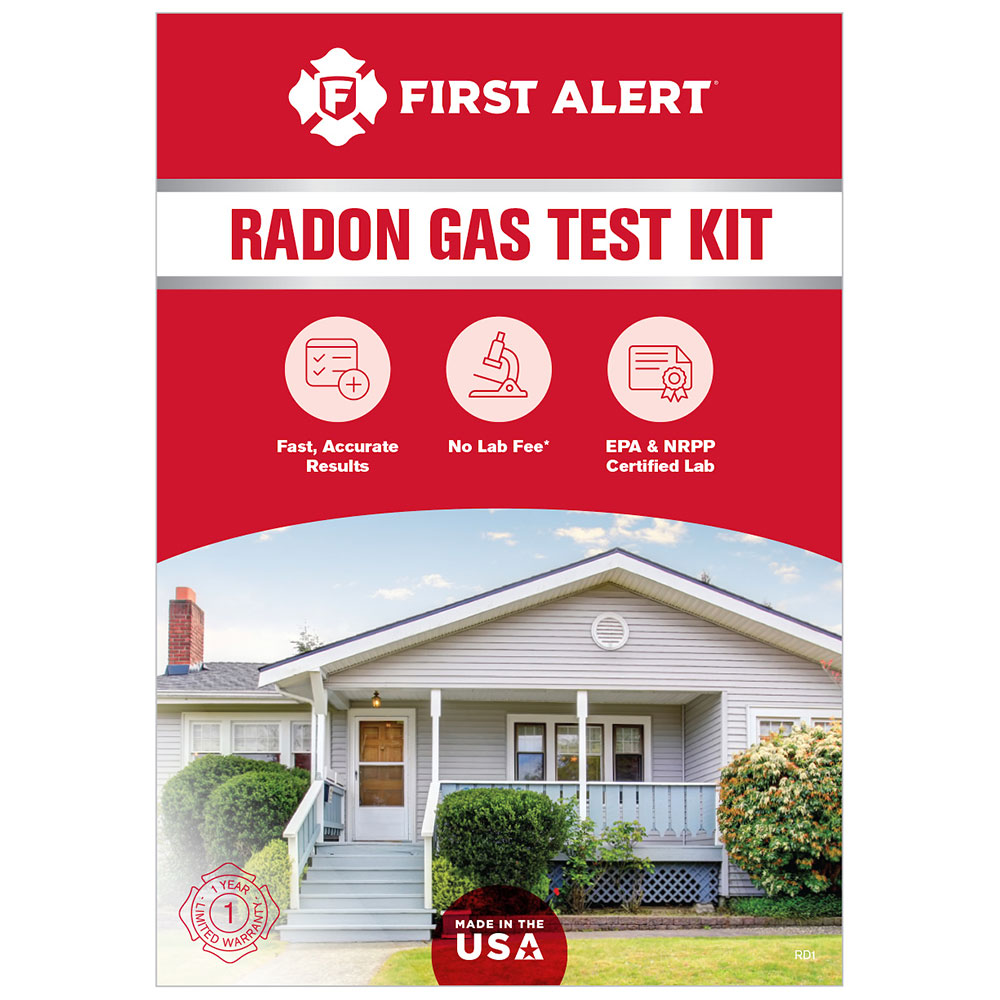
Recognize the Threats and Plan Accordingly with First Alert
Numerous studies have concluded that the very presence of a functioning smoke alarm reduces the overall percentages of fatalities associated with fire by a staggering half. The First Alert Store showcases an extraordinary amount of performance rich First Alert Smoke Alarms that are ideal for combating the many dangers presented by the presence of smoke, fire and carbon monoxide...

First Alert Hardwired Smoke & Carbon Monoxide Alarms Meet Current Laws & Legislation's
The First Alert Store features Smoke Alarms and CO Detectors that excel as industry standards in offering the maximum in peace of mind. Not only are First Alert Smoke Alarms compliant with all state laws and legislations, they're incredibly easy to setup and feature a swift installation process...
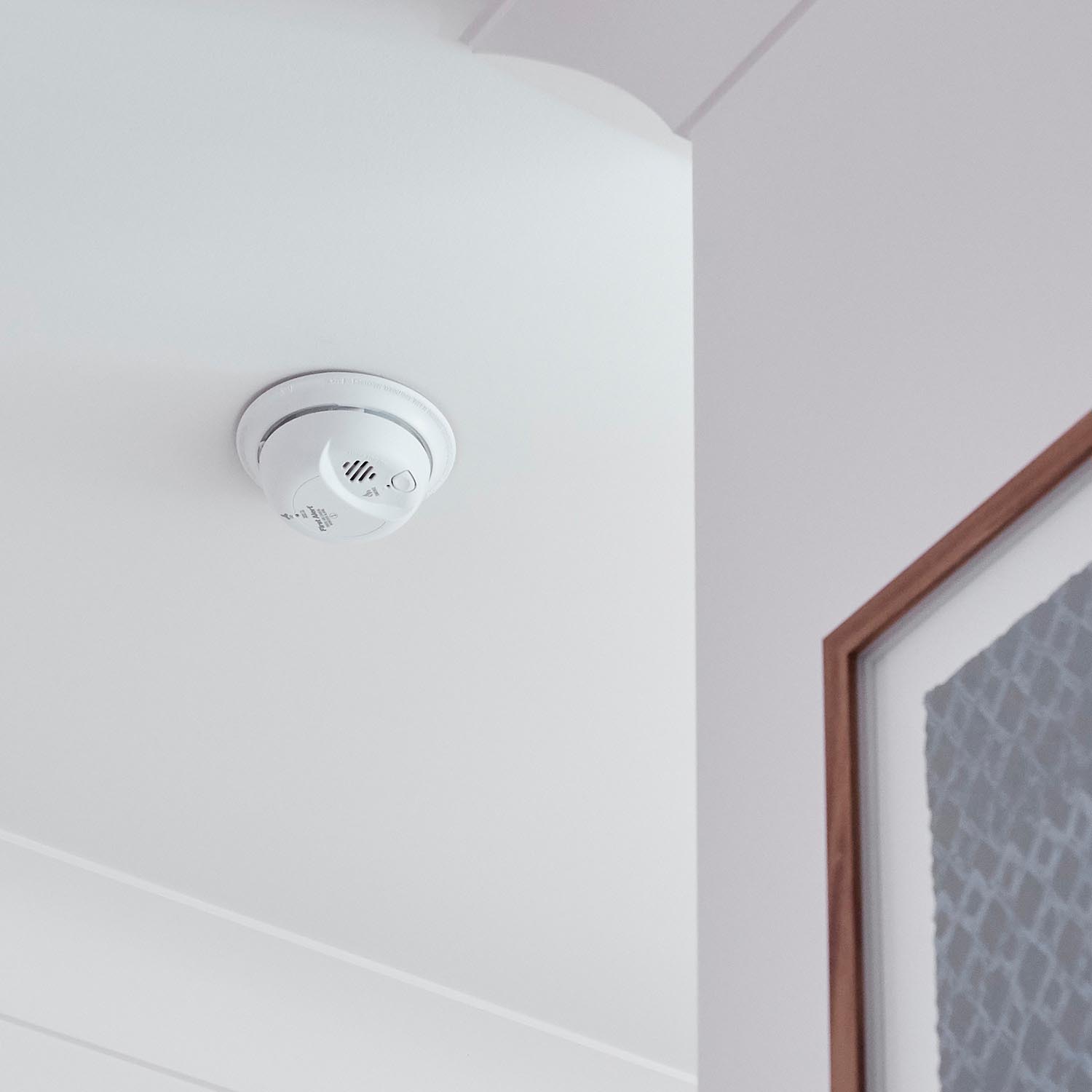
Slim Design, Same Great Features, First Alert's New Low Profile Smoke & CO Detectors
The First Alert Store is excited to announce that it will be releasing three new installments in its series of highly intuitive and performance exceeding First Alert Smoke Alarms and First Alert Carbon Monoxide Alarms...
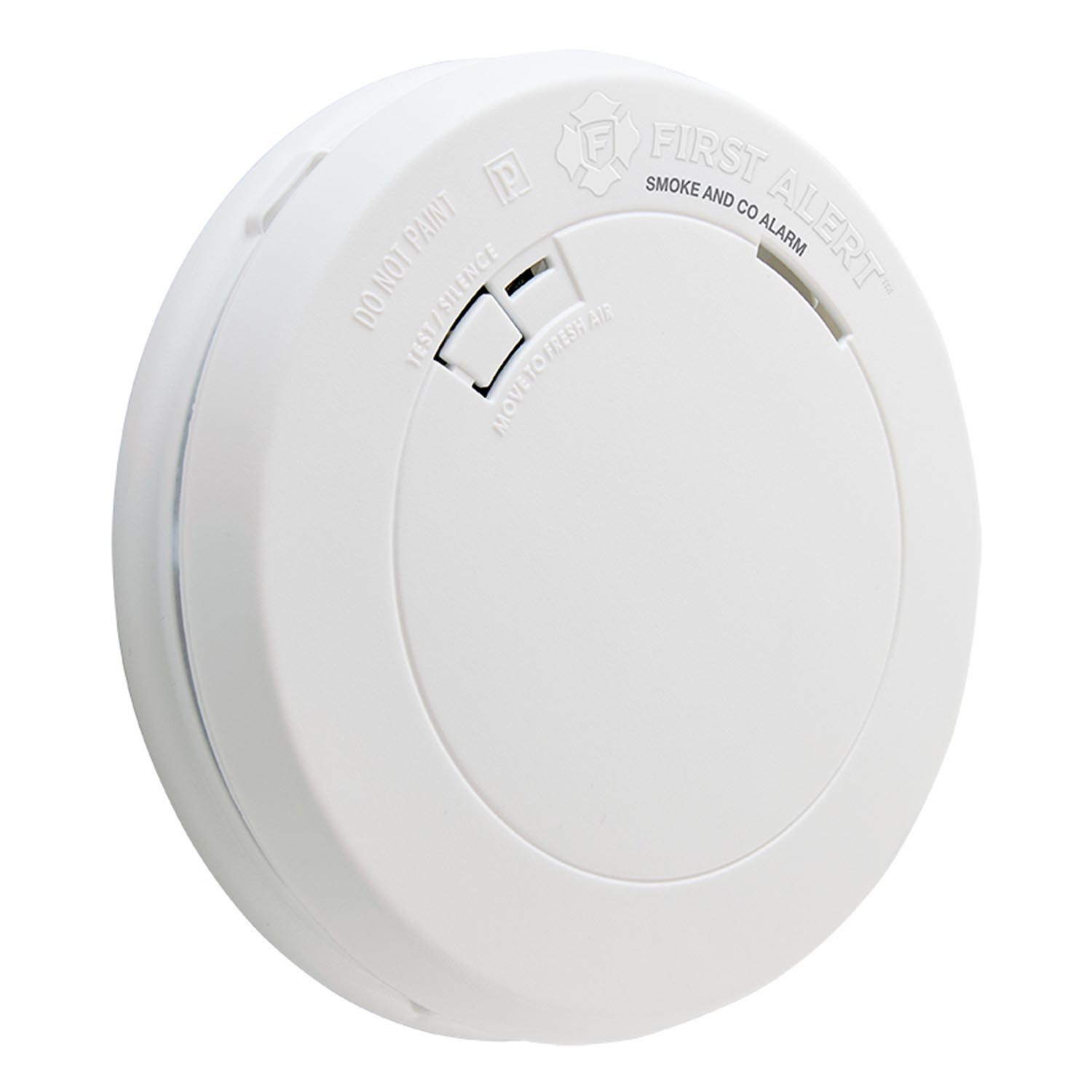
Always Connected. Always Protected - First Alert New ONELINK WiFI Smoke & CO Alarms
Get instant updates directly to your phone whenever a smoke or carbon monoxide danger is present. The revolutionary OneLink smoke & co alarm from First Alert helps keep you connected and protected...
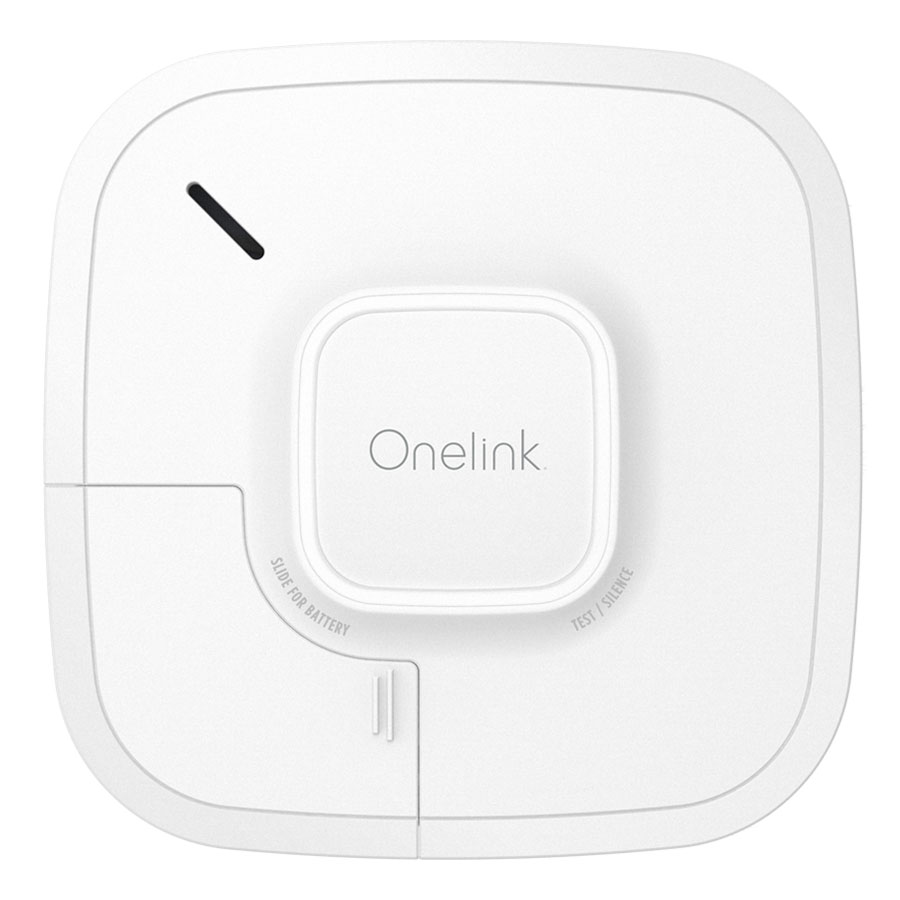
Plan, Prevent and Protect - First Alert Smoke Alarms Saefty Tips
For optimal efficiency in safeguarding your home, the First Alert brand has created a series of tips that can greatly assist in the planning, protection and prevention phase...
The First Alert Store Releases Three Visually Expressive Colors for the First Alert Atom
The successful launch of the First Alert Atom Photoelectric Smoke & Fire Alarm elevated the genre significantly by offering maximum smoke and fire protection while showcasing a sleek and subtle design that would mesh into nearly any background...
The Benefits of a First Alert Hardwired Smoke Alarm
Easy installation and reliable protection, First Alert hardwired smoke alarms are the perfect home safety solution against smoke and fire hazards. Shop online now for First Alert Hardwired Alarms!..
Featured First Alert Products in the Month Of April, Include Smoke Alarms, CO Detectors and Escape Ladders
The First Alert brand has assembled a collection that excels in offering the ultimate in peace of mind...
A Full Ten Years Of Protection - The Tamperproof and Hassle-free Sealed Smoke & CO Alarms
These tamperproof alarms are perfect for commercial use. Simply pull the activation tab and enjoy 10 years of protection without ever having to replace the battery...
The Always Reliable First Alert Hardwired Smoke & CO Alarm with Battery Backup
The First Alert Hardwire Combination Smoke/Carbon Monoxide Alarm wires directly into your home's electrical system. In the event of a power outage, this alarm has been equipped with a 9V battery backup to provide optimal protection...
Featuring the Ultimate in Accessibility and Performance, the First Alert High Definition Wi-Fi Security Camera is Nearly Here
Remotely control and view your security camera through your smartphone tablet or computer with this versatile wifi security camera. Includes high definition and night vision viewing...
Fire Prevention Week with First Alert Smoke Alarms, Carbon Monoxide Alarms and Fire Extinguishers
First Alert helps increase awareness with fire safety week promotion. Purchase smoke alarms, gas detectors, fire extinguishers and more on our secure online channel and have them delivered right to your home!..
Labor Day Weekend Home Invasions Spark Critical Concern
The Official First Alert Store features several home security products to give you peace of mind including security cameras, home security safes, security doors, motion sensing lights, home test kits, escape ladders and more!..
Establish the Premier Home Safety Defense with First Alert Smoke Alarms, Carbon Monoxide Alarms and Security Cameras!
When it comes to establishing the ideal home defense, the First Alert Store carries all of the necessary equipment needed to secure the ultimate in peace of mind...
The Atom Photoelectric Smoke & Fire Alarm Continues to Astound Audiences with its Intuitive Design and Peak Performance
Purchase the amazing new First Alert Atom micro smoke alarm and get full protection from one of the worlds smallest smoke alarms...
First Alert's POD Personal Security Alarm with Motion Sensor-the ultimate in accessibility and versatility
First Alert has you prepared for any situation that arises with their Person Security Alarm POD. With a motion sensor, panic alert and flashlight, when something goes wrong, you'll be able to get the help you need much faster...
Four Year Old Child Dies in Accidental Shooting - Protect What Matters Most with A First Alert Gun Safe
First Alert features a tremendously diverse catalogue of Gun Cabinets, Executive Gun Safes and other home safety products. Find the right one for you at FirstAlertStore.com..
Gain Peace of Mind for 10 Years with First Alert's 10 Year Smoke Alarms and Carbon Monoxide Detectors
First Alert has you covered when it comes to new legislation for 10-year Smoke and Carbon Monoxide Alarms. Get the newest models at FirstAlertStore.com..
New First Alert Store Goes Live and Offers Customers an Interactive Platform to Explore First Alert Products
In an effort to make the process of purchasing home safety products and accessories that excel beyond the industry standard in safety, an informative and enjoyable experience, The First Alert Store has been completely retooled and repackaged by our team of committed designers. ..
Contaminated Water Threatens Several Counties in West Virginia
Get peace of mind with First Alert Environmental test kits and never question your water. Purchase online a FirstAlertStore.com..
Frightening Home Security Statistics Usher in New Year
With frightening news of home invasions on the rise, FirstAlertStore.com has all the perfect home security products to keep you feeling safe...
Carbon Monoxide The Silent Killer - String of Hotel Deaths and Illnesses Frighten the Country
First Alert provides you with peace of mind at home or on the road with a variety of Carbon Monoxide detectors. From Battery Backup to Travel models FIrstAlertStore.com has you protected...
Fire Safety Week: Protect Your Home and Family
You never know when or where a fire will start, or even what kind of fire it will be, so it is important to cover all these aspects when protecting your home...

First Alert Home Security For The Holidays
Keeep your home and family safe and secure for the holidays with First Alert home security products...
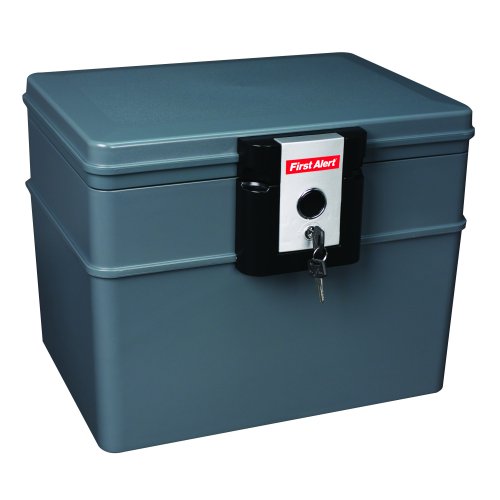
First Alert Smoke Alarms - Photoelectric Smoke Alarms and Ionization Smoke Alarms
First Alert quality photoelectric smoke alarms, dual sensing alarms and combination smoke and carbon monoxide alarms save lives and property...
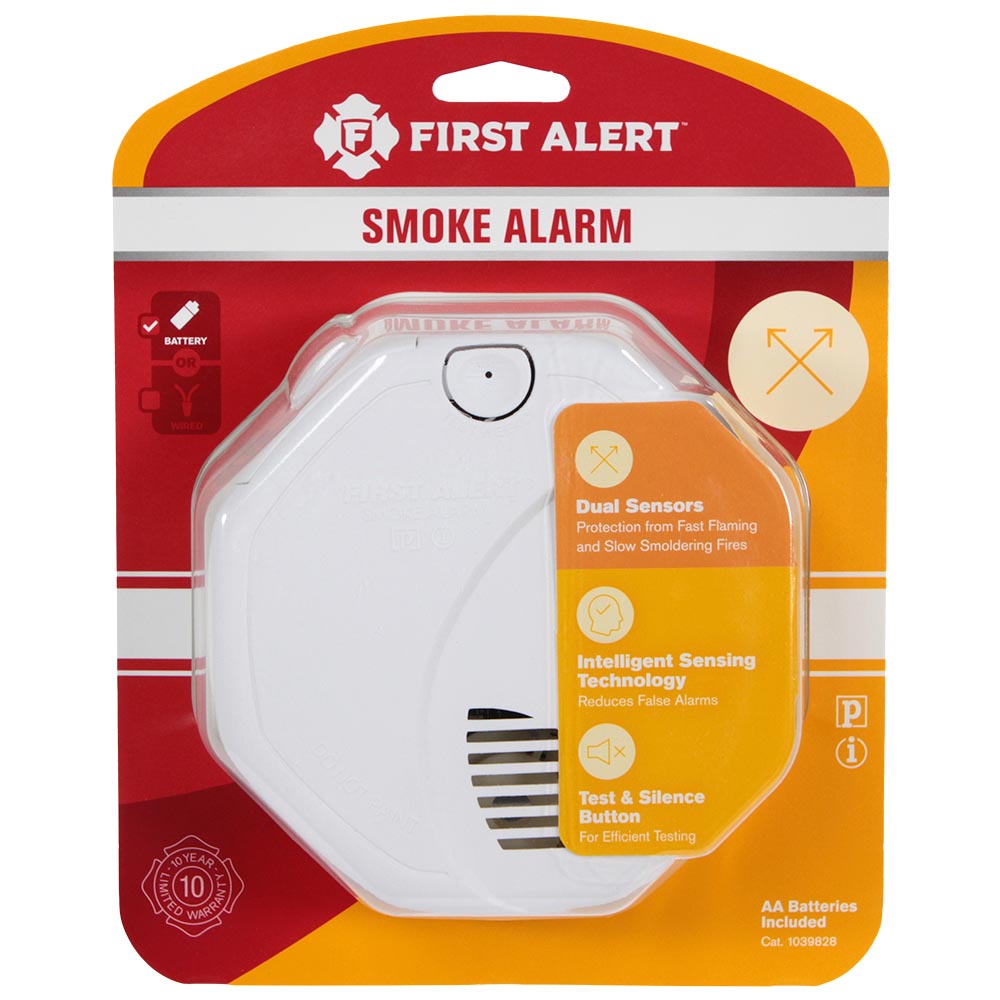
File it Safe with First Alert's Hanging Folder File Box
The First Alert Hanging Folder File Box will solve a lot of problems by providing a storage compartment to store your files, security (which are provided with two entry keys), and organization. ..
First Alert Hardwired Smoke Alarm Contractor Pack
The contractor pack of hardwired smoke alarms with battery backup isn't just for new construction it is a perfect fit for apartment complexes, fire departments and other organizations. This bulk smoke detector comes in a convenient 6 pack that includes individual packaging, a battery and a manual for each alarm. ..

First Alert Lead Testing Kits
First Alert Lead Test Kits contain enough materials for 4 separate tests for the multiple items you may be purchasing...
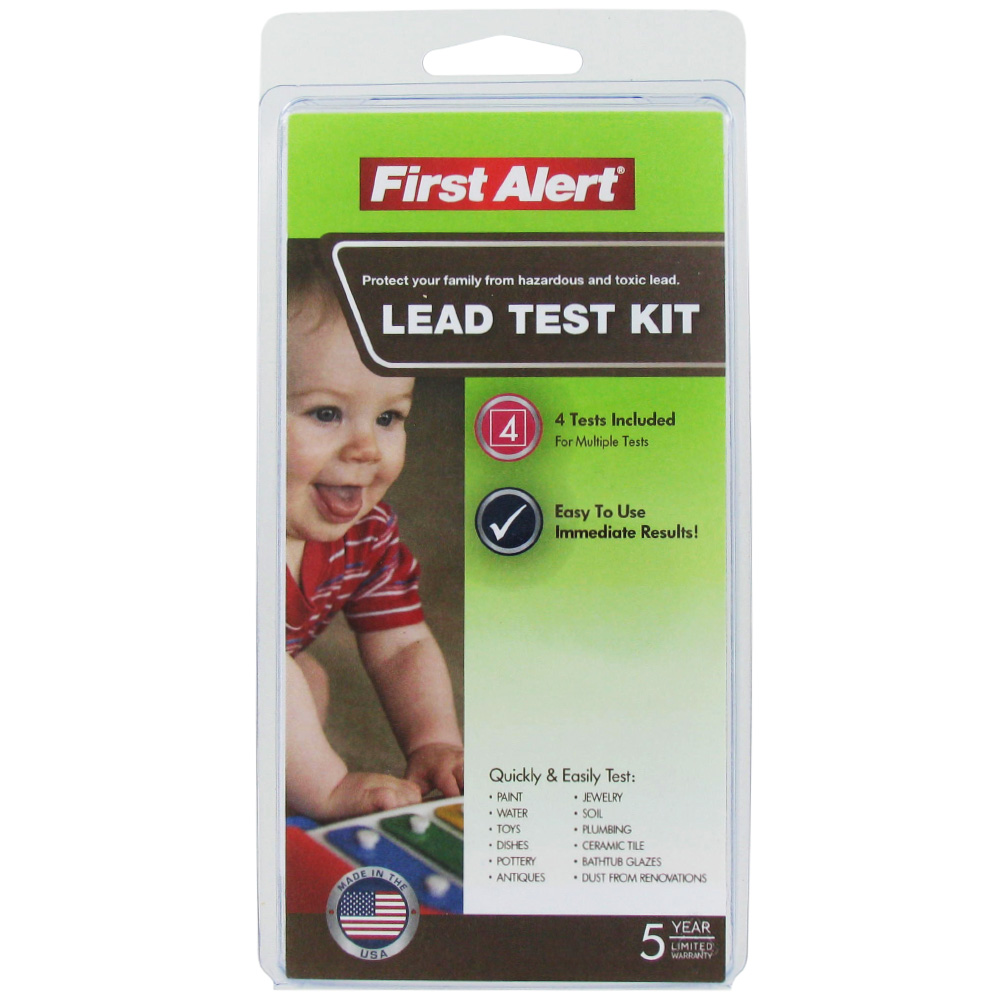
Hurry Before It's Too Late! Enter in your chance to win a First Alert Carbon Monoxide and Smoke Detector Home System
Hurry Before It's Too Late! Enter in your chance to win a First Alert Carbon Monoxide and Smoke Detector Home System..
First Alert Mold Testing Kits
Spring is here and to me, that means rain. Many people have basements and with the saturated ground that can mean seepage. Seepage can easily turn to mold if you don’t dry your basement properly. Mold has become a real topic of concern due to its effects it can have on your health with long exposure times...
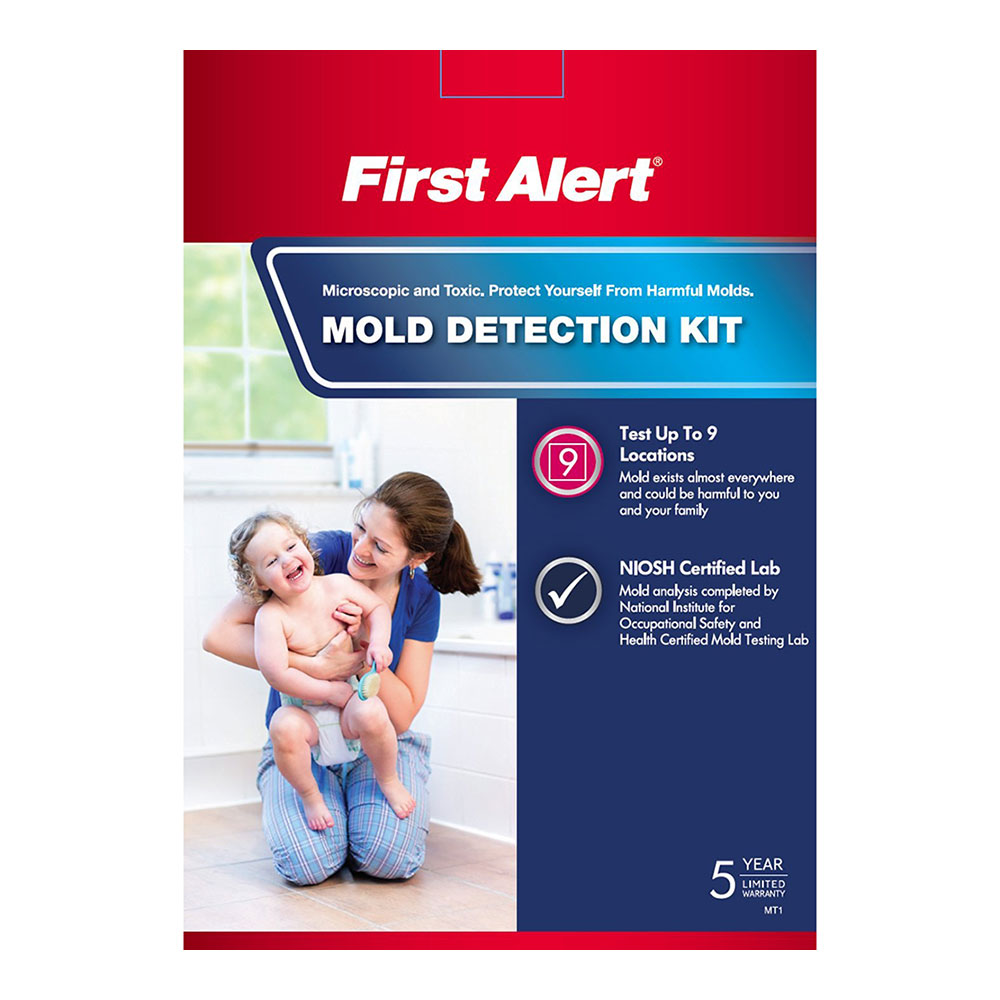
Photoelectric Micro and Thin Design Smoke & CO Alarms
First Alert brings new and innovative designs to smoke and carbon monoxide alarms to keep your family safe...
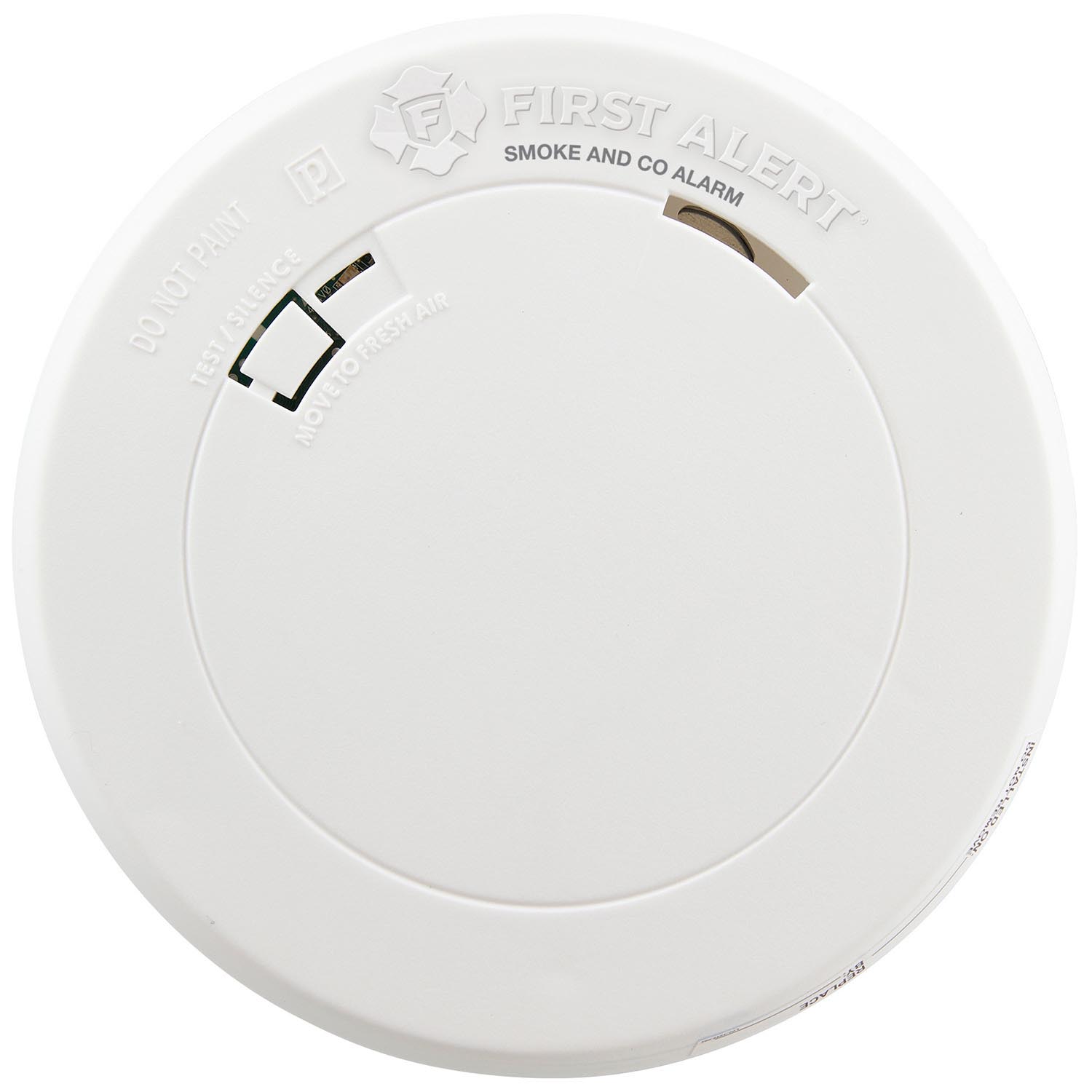
Fire Extinguishers: Don't Wait Till It's Too Late
Be prepared in advance for a fire with the appropriate fire extinguisher. Find all the right units and brackets at FirstAlertStore.com..
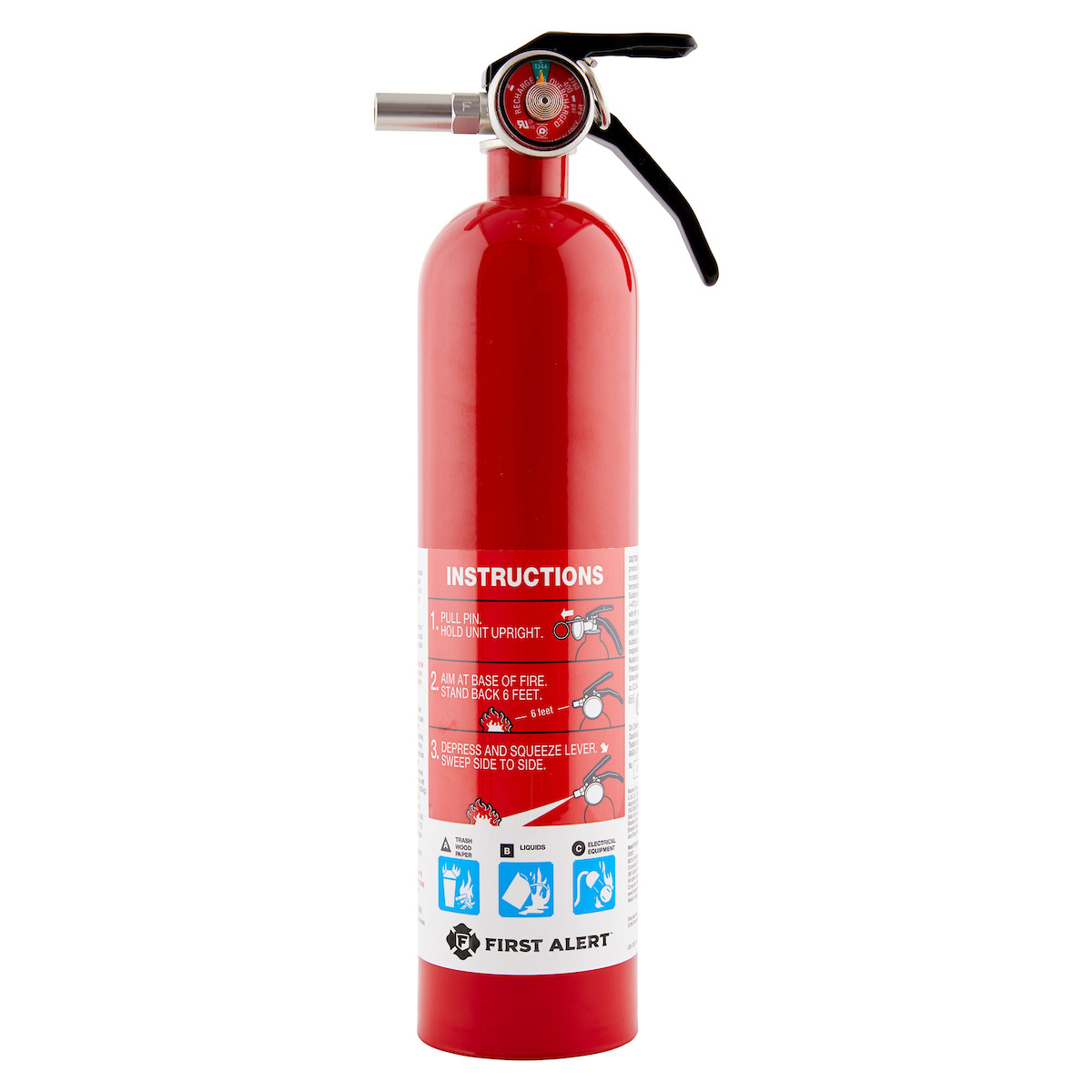
Escape Light Smoke Alarm
If you have a dark hallway or even a dark area in your home, it may be a great idea to replace your smoke alarm with one of our Escape Light Smoke Alarms...
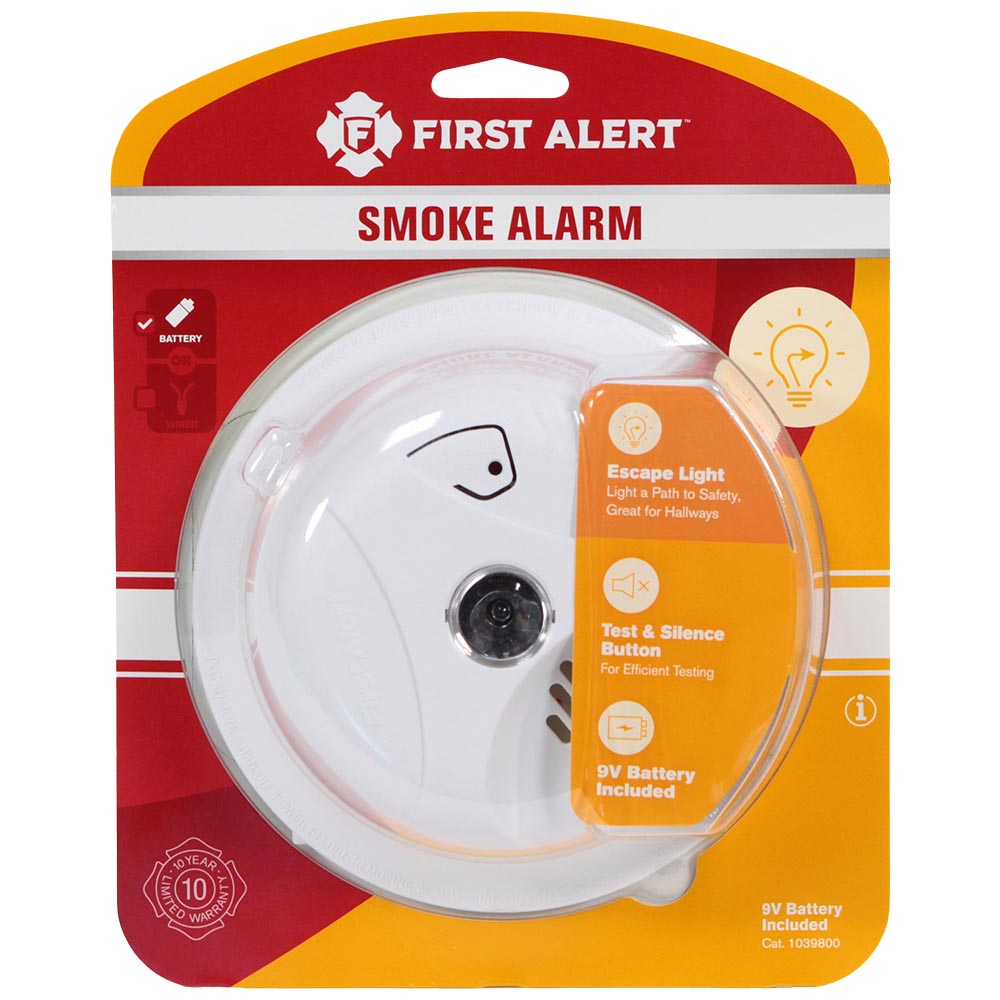
Hearing Impaired Strobe Alarm
This alarm is specifically made for the hearing impaired, however anyone can use it. There have been some changes made over the past years...

Hardwired CO Alarm
The Hardwired CO Alarm can be interconnected with existing smoke alarms and is especially beneficial when there are living spaces on different levels of your home. ..
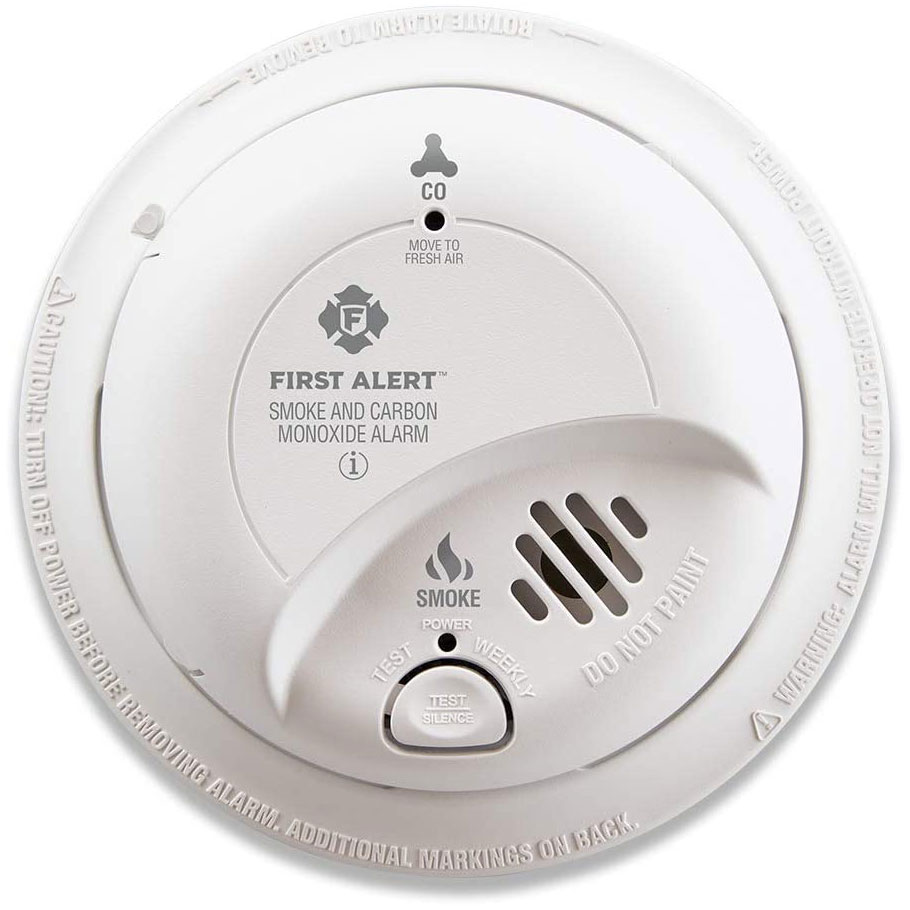
No Need for a Deposit Box; First Alert Has Your Needs Covered
A double steel exterior with a protected floor mat inside, First Alert Deposit Boxes will preserve everything within with special care...
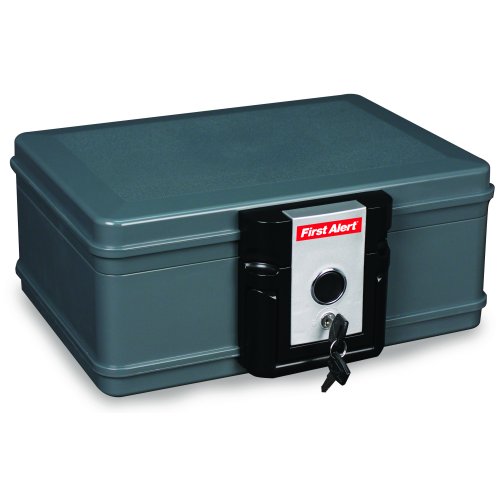
Cash Out Just Right with First Alert Deluxe Cash Box / Money Tray
With its coated steel protection and 2 entrance keys, you have a safe place to lock and store funds...
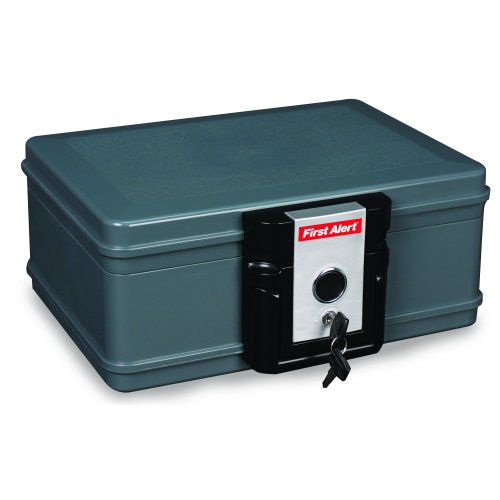
A Brand New Way, A Brand New Light
This Motion Sensing Light Socket, like the original one, works in garages, closets, laundry rooms, and basements. ..
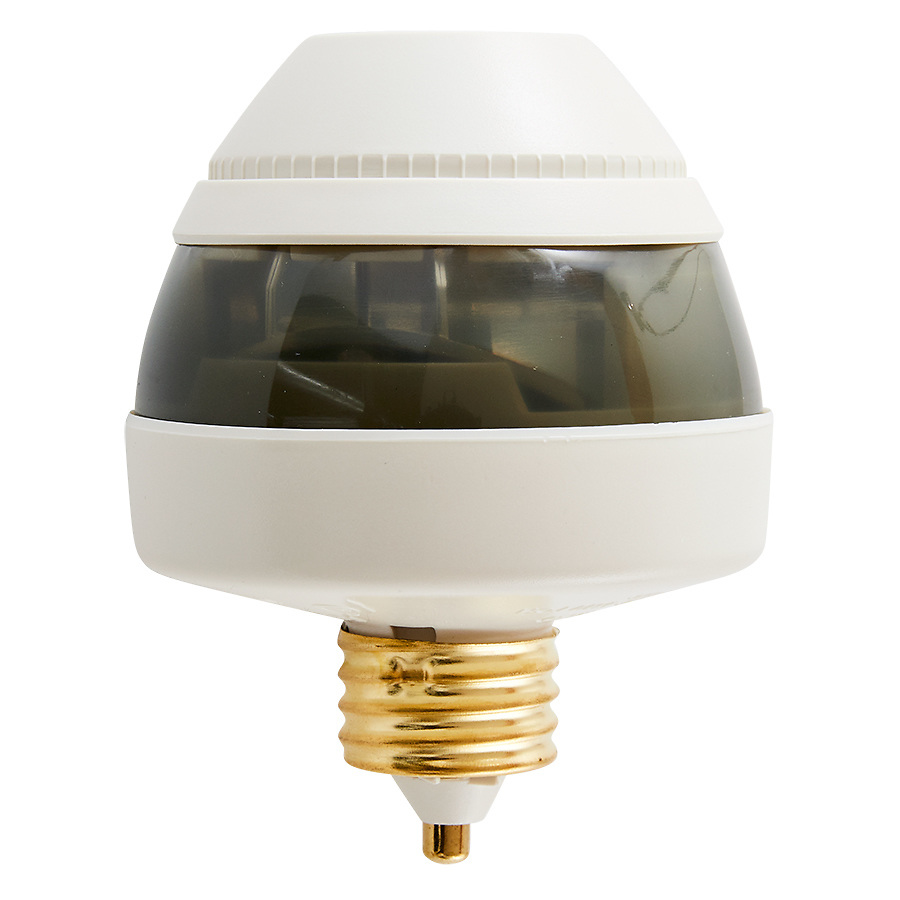
Preparing Yourself Has Never Been Better with First Alert Water Alarm
Having this alarm, you are able to detect water gathering at a very early stage and be able to (if possible) remove and/or rid those things surrounding the water intake...
Fires: what you should know
A fire can happen to anyone anywhere. The best way to build your defense against fire is to become knowledgeable. Smoke of a fire is dark and can cause you to get lost and disoriented in your own home...

What is Carbon Monoxide and who it can affect?
Carbon Monoxide is an invisible, odorless gas. It's produced when fossil fuels (like oil, gas or coal) burn. Because you cannot see, taste or smell it, carbon monoxide can harm and even kill you before you even know it’s there. ..

Protecting your atmosphere: Radon Test Kit helps protect your health more than you can imagine!
Protecting your atmosphere: Radon Test Kit helps protect your health more than you can imagine!..

OneLink First Alert Alarms - Interconnected Smoke & Carbon Monoxide
If you have existing interconnected hardwired alarms in your home, replace one of those alarms with a hardwired OneLink alarm and when the battery operated OneLink alarms sound they will also sound the existing interconnected hardwired alarms and vice versa...
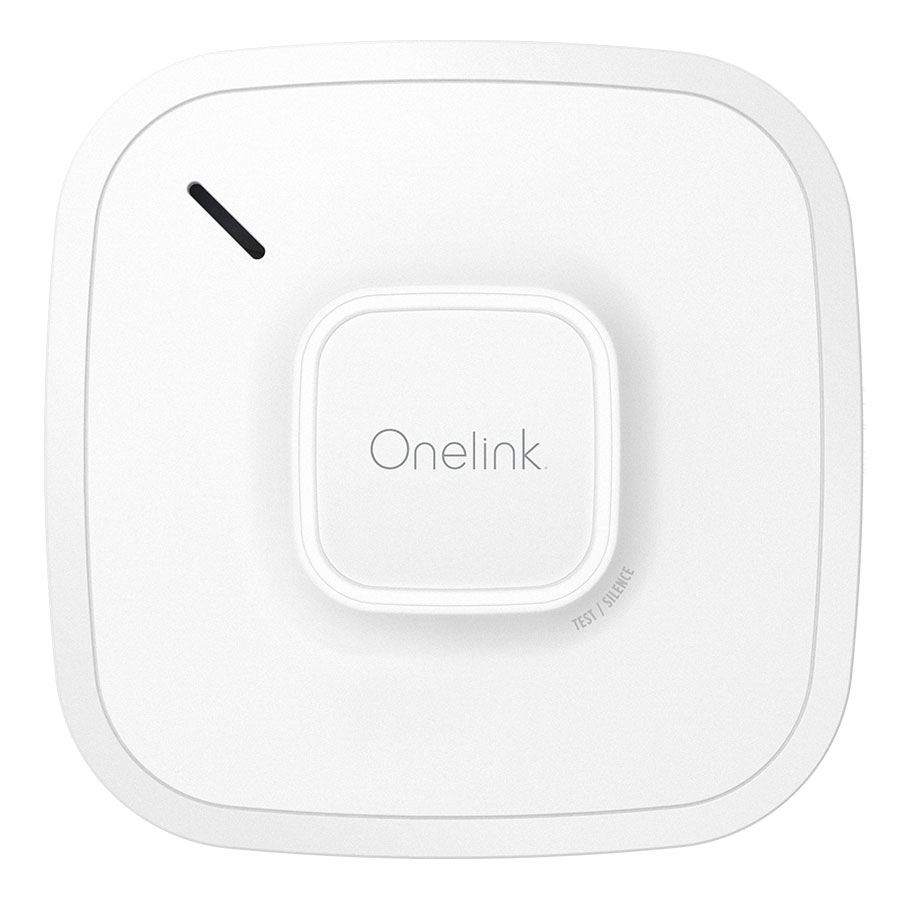
Smoke and Carbon Monoxide Alarm Spring Cleaning
When you are cleaning don't forget to clean and vacuum your smoke and carbon monoxide alarms to clear any dust that may be settling in the alarm...
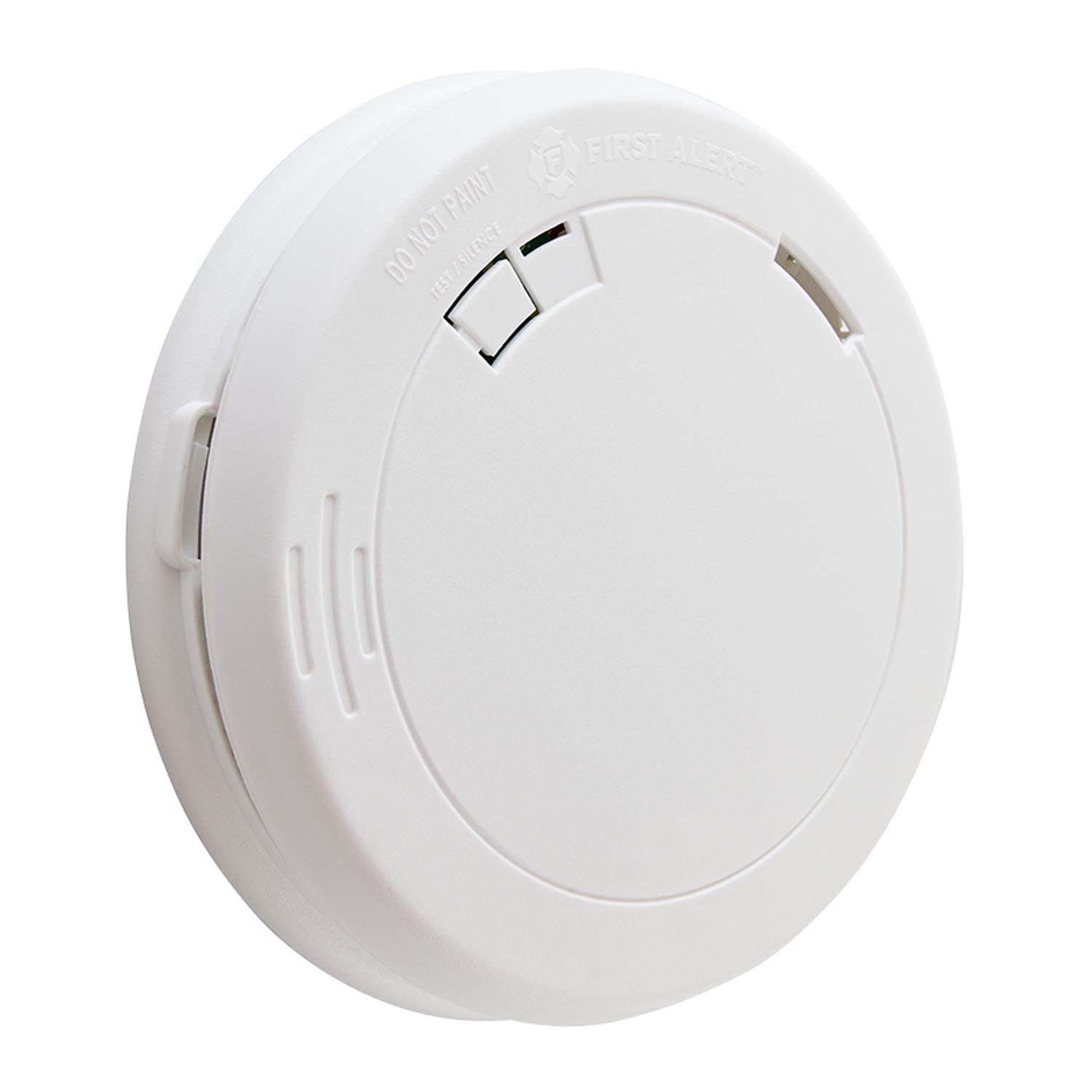
New alarms coming to FirstAlertStore.com
Many states require you to have a hardwired smoke alarms in your home. This one does double duty and will detect fast burning fires and also smoky smoldering fires...
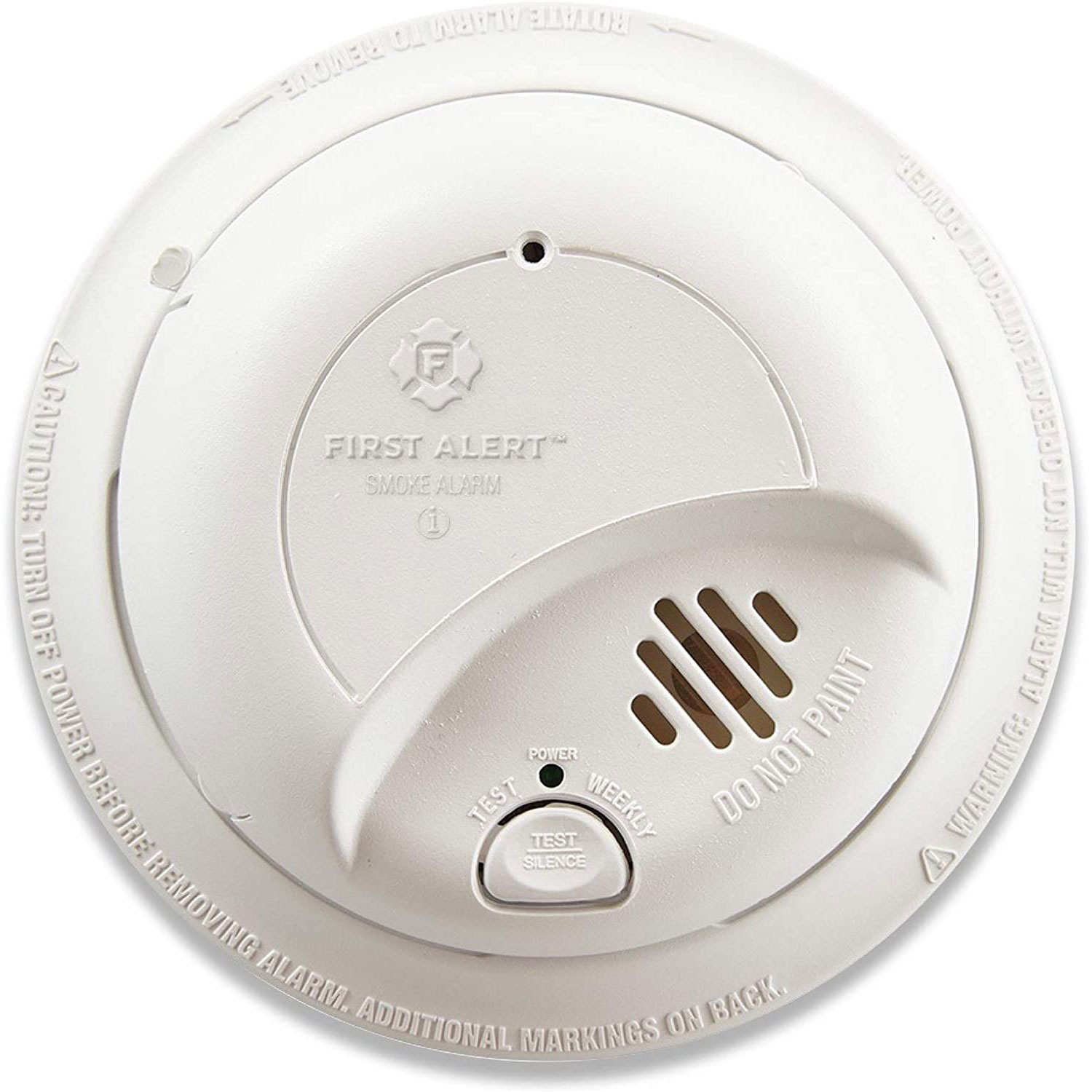
Hardwired Carbon Monoxide Alarm with Battery Backup
This alarm wires directly into your homes electrical wiring system and the battery backup will give you the peace of mind that if you ever lose power your alarm will still work. ..

Protecting Our Home Means Protecting Our Children From Lead Poisoning
As parents, especially parents of newborns and young children, we become quite concern with our children's atmosphere; protecting our children from hurting themselves...

Holy Moldy! Controlling the Outspread of Mold
Mold, by far, is another contributor we can add to the list that causes (minor) health issues. Mold, a fungus that grows in damp areas, can cause health problems such as sinus, allergies, hay-fever, and common skin irritations if inhaled and/or physically exposed...

Holy Moldy!! PT.2 Tips and Tricks to Help Reduce Mold in your Home
As stated before, the key to reducing mold is MOISTURE CONTROL. However if you should experience an outspread of mold, here are some user-friendly tips you can take on reducing mold: REDUCE THE HUMIDITY IN YOUR HOMES: Using appliances such as air conditioners and de-humidifiers are a good source in removing moisture. Whenever you are cooking, showering, or cleaning, running a fan and/or opening some windows for air ventilation keeps control of the humidity in your home also...

Identifying Your Security Needs: The Pros and Cons to Combination and Digital Lock Safes
Shopping for security safes can be quite a meticulous task. There are so many different styles and security features but which one is the best one?..
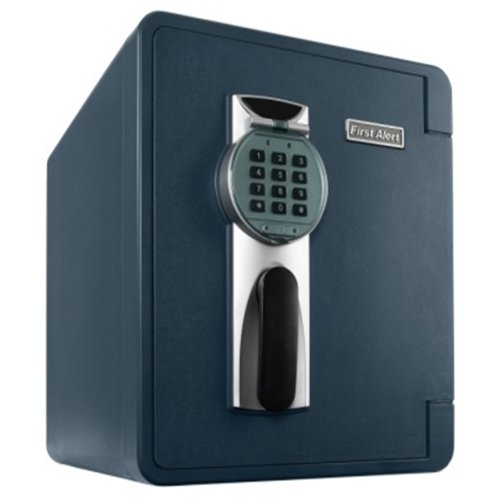
Make It A Priority to Test Your Alarms Annually
Check your alarm's manufacturing date and warranty to make sure your alarm is in good standing and you are covered in the event you may need a replacement (if your alarm is not working properly or is malfunctioning)y..
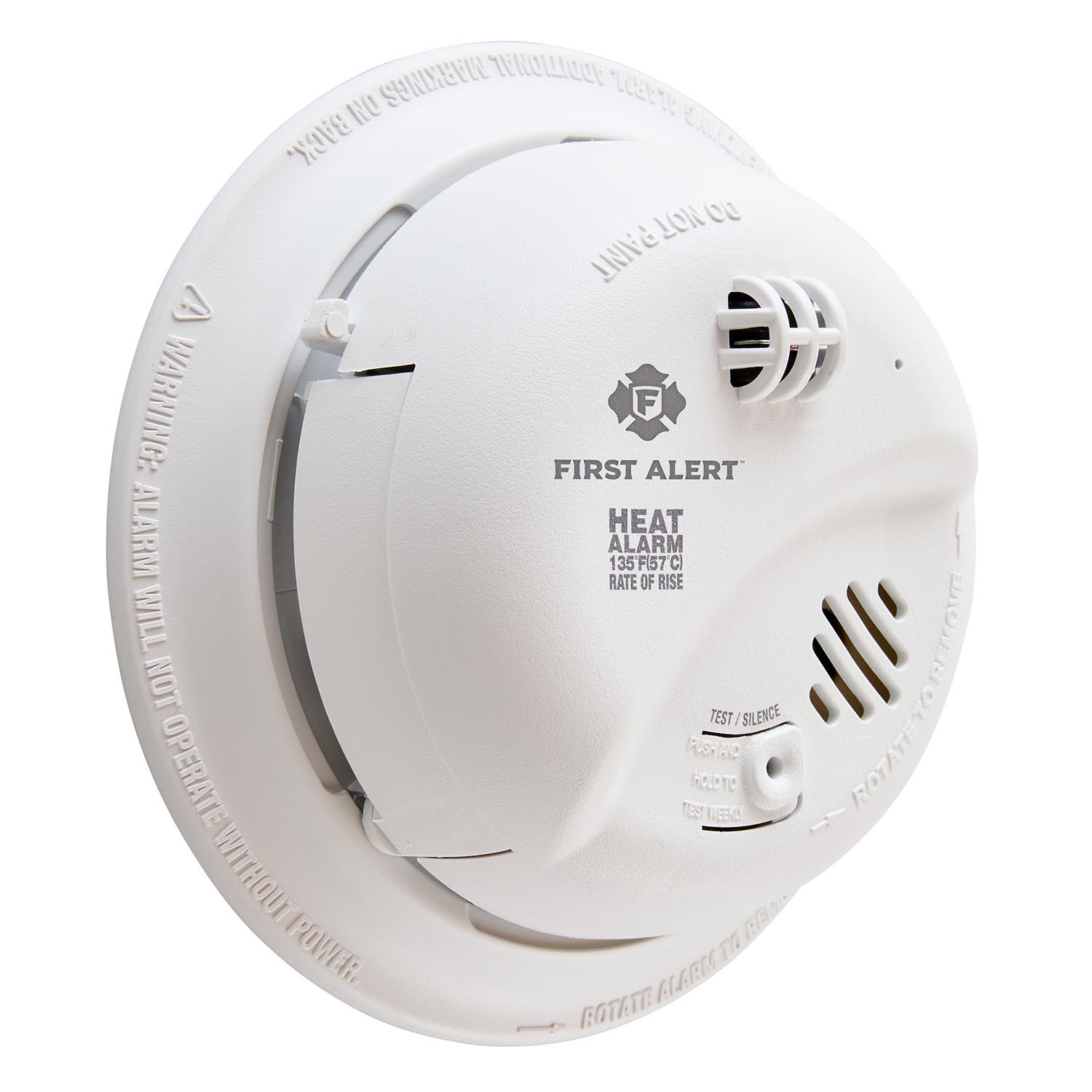
Special Pricing for the perfect Carbon Monoxide Detector
This detector is a plug in with battery backup. The plug in will only cover one set of plugs in your outlet so you can still use the other side of the outlet and the battery backup will give you the assurance that if the power goes out your carbon monoxide alarm will still be working!..

Tis the Season To Buy A Multi-Pack Set of Alarms
Not sure what to purchase for the holidays? FirstAlertStore.com has a variety of combo/multipacks that can help achieve your holiday goal: to spread good cheer and provide not only quality and safety, but quantity to accompany all (if not most)...
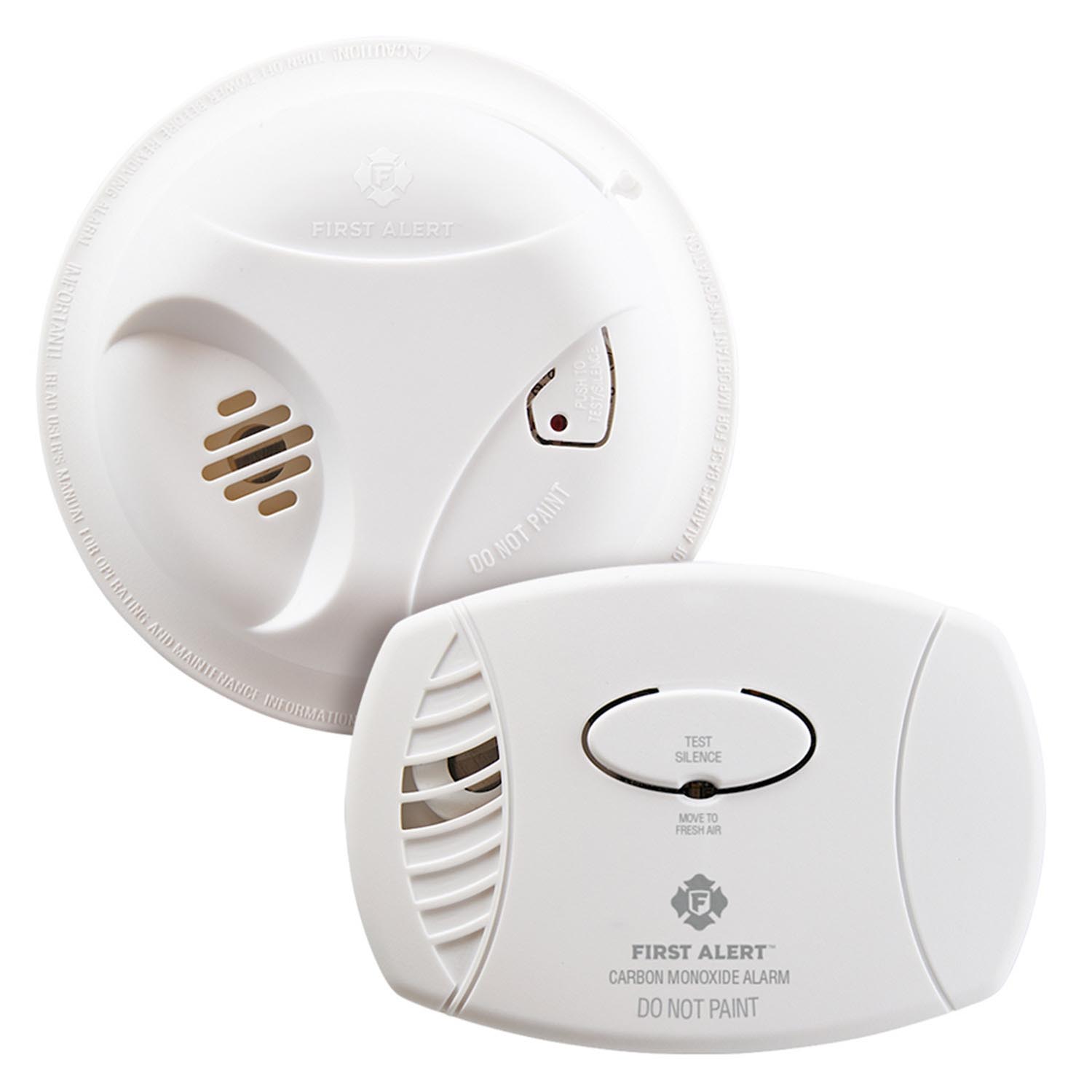
How Safe is your home security safe?
Those days of hiding money under your bed, in a sock hidden in the back of your drawer, a piggy bank placed in your closet on the top shelf, or if you are anything like me hiding/stashing away money and other important variables in an old brief case with a combination lock to it, are genuine places however are not safe places (no matter how good we place/hide our keepsakes)...

Just in time for the Holidays: Fire Protector Chest
We have just added several new items to our site, a new line of Fire Protector Chests. We carry several different sizes so you can pick on that suits your needs. They are small and compact to easily fit in a confidential space...

How Do I Reset My First Alert Alarm's Battery?
Disconnect all power sources (take out the battery, if it is a plug in alarm remove it from the outlet, and if it is hardwired alarm disconnect it from any wiring). Hold the test/silence button for 20 seconds. Reconnect all power sources (put the new battery in, plug back into the outlet...

A Step Away From Safety: First Alert Escape Ladders Make Fire Rescues Easier to Achieve
With saving time, money, and minutes/hours of installation, all you have to do is attach the ladder to your second floor (Two Story) or third floor (Three Story) bedroom window ledge and deploy...
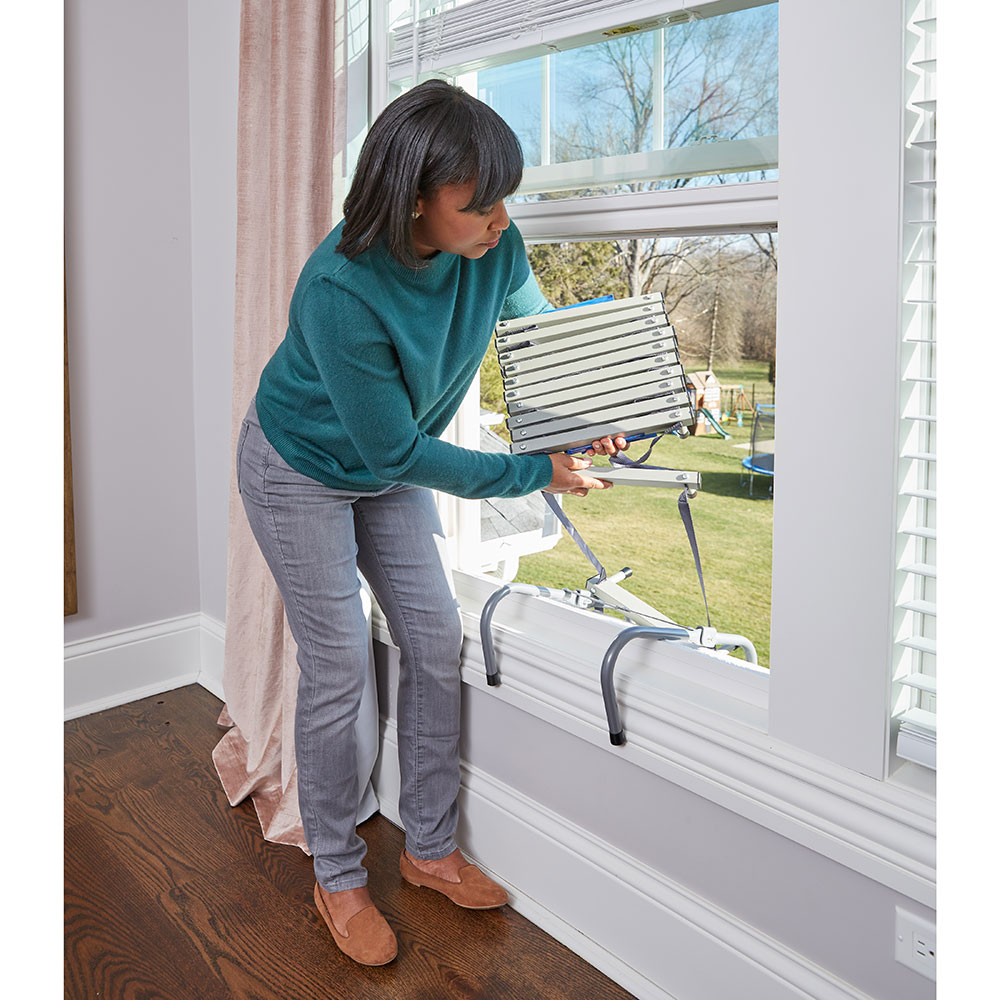
Make it easier to test and mute unwanted alarms with an infrared remote
Make it easier to test and mute unwanted alarms with an infrared remote..
Pratice using your Fire Escape Ladder
With the winter months right around the corner and with many homes using their fire places it is important to practice some fire safety. We carry two fire escape ladders (for 2 story homes and for 3 story homes). ..
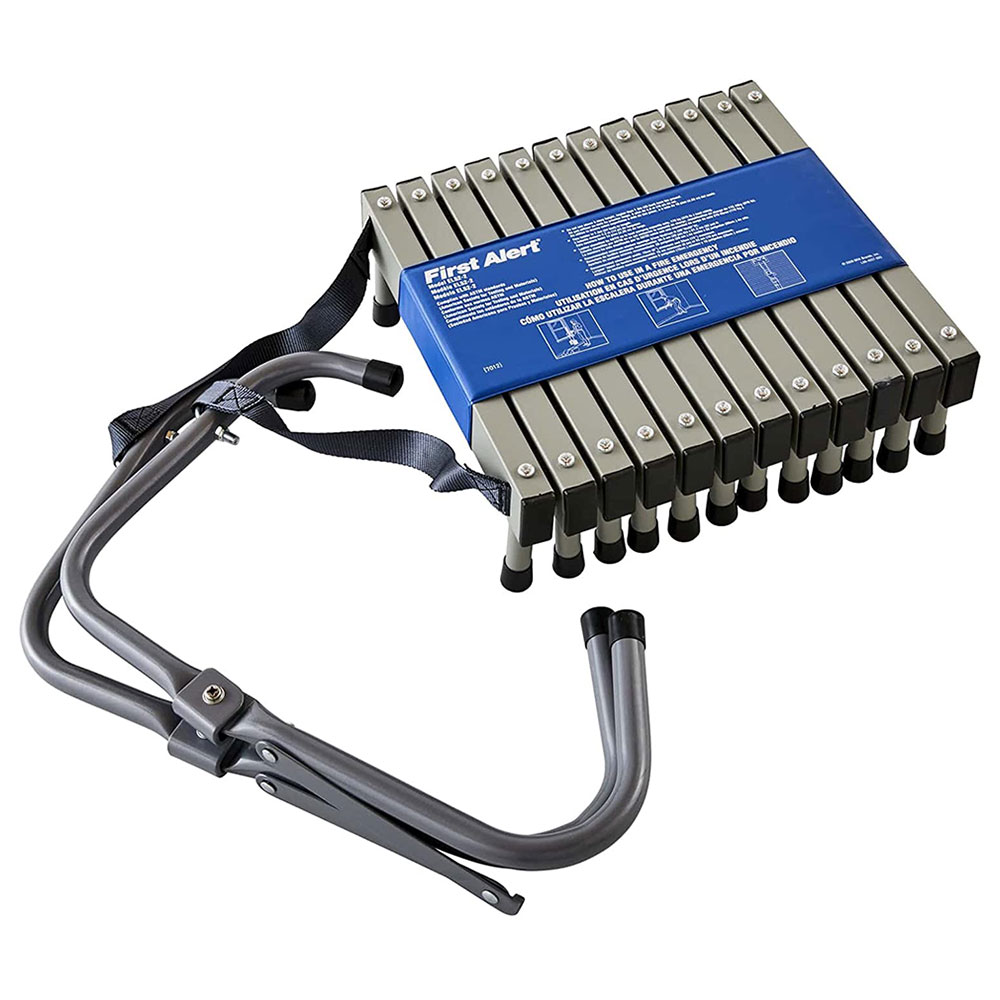
First Alert Motion Sensing Light Socket
The convenient way to add light to an garage, basement or hallway. Motion sensing lights are easy to install, just like a normal led bulb just screw in for more safety...
Tundra Fire Extinguisher, the perfect gift
This unique fire extinguisher is easy to use, simply point and shoot. I best describe it like spraying hairspray and it is about the same size as a large hairspray bottle. It is so small that it can sit on the countertop or store under the kitchen sink without taking up a lot of room...
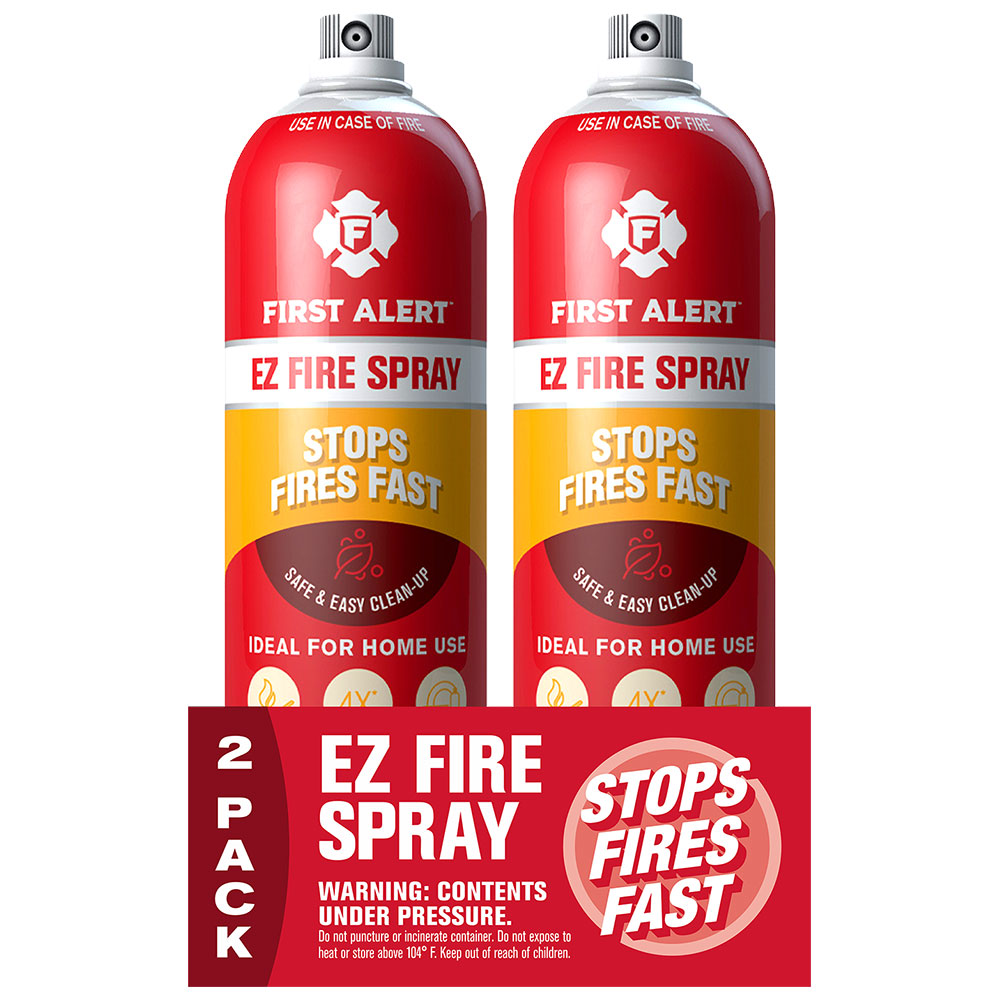
Fort Wayne fire leaves 2 children dead, 2 hurt
Firefighters found four children inside the home. Fire, police and medical personnel performed emergency medical treatment, but one child died at the scene. The three others were taken to the hospital, where one of them later died...
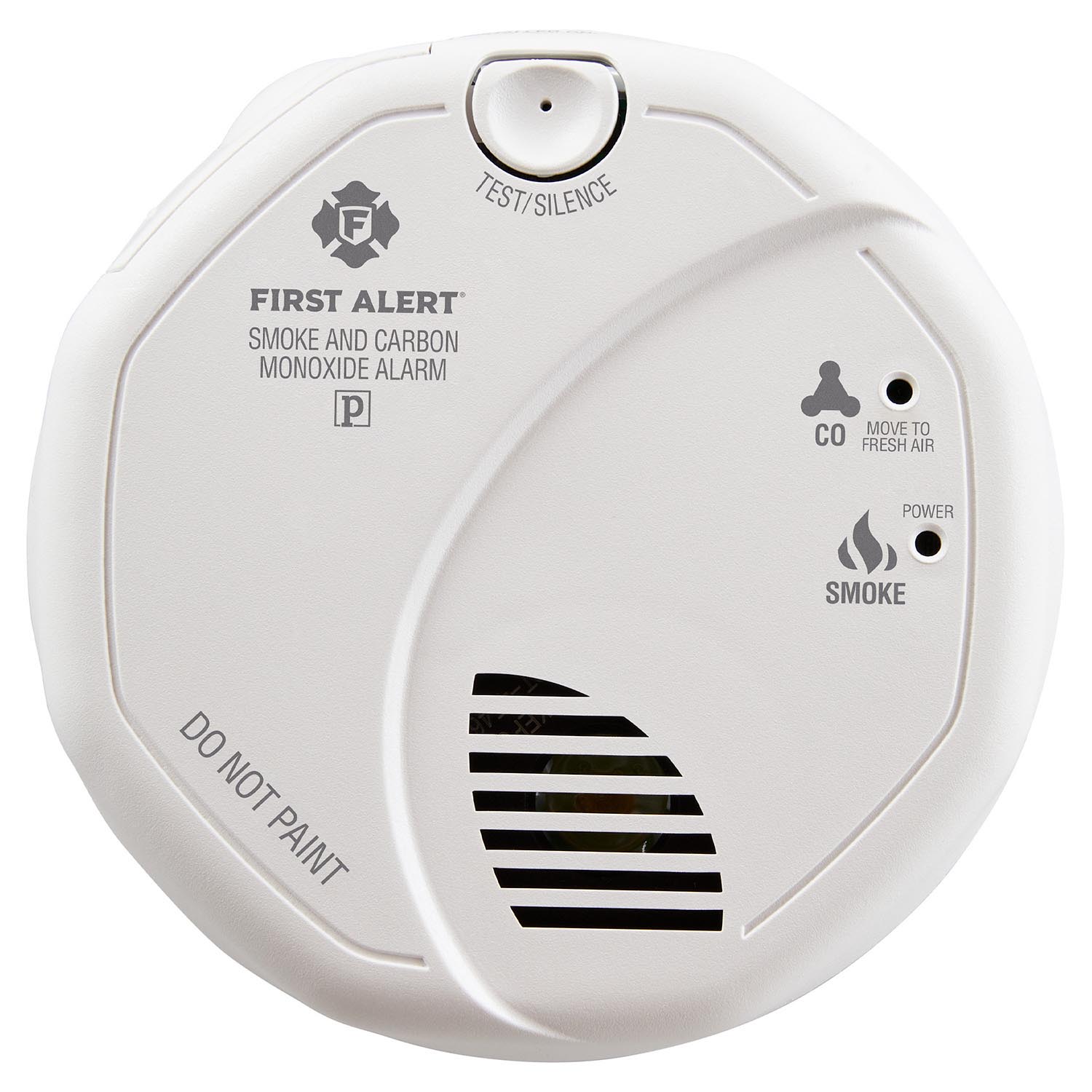
Two girls, 11, believed dead from carbon monoxide poisoning west of Boca
Carbon monoxide deaths are more common during and after hurricanes, when people have power outages and use generators, or bring grills inside...
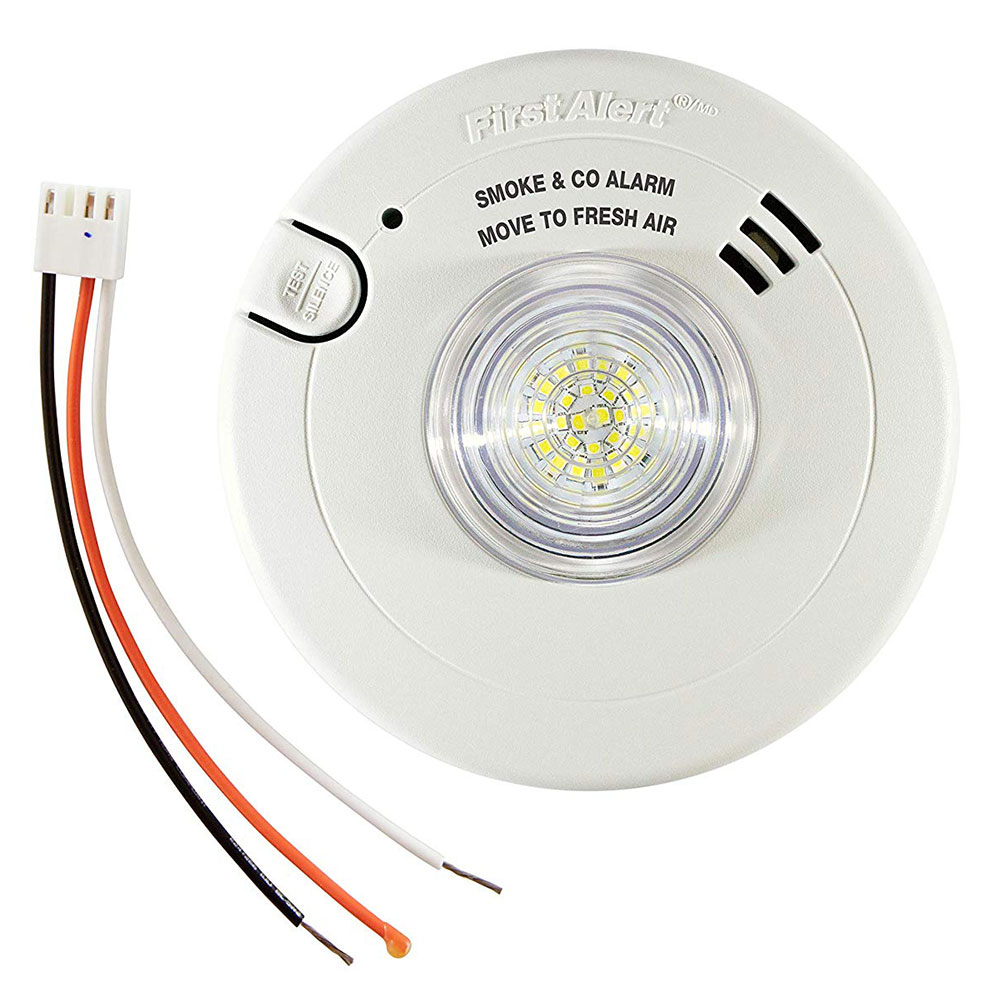
Toxic fumes fill 3 Philly homes
11 people in Southwest Philadelphia, including three children, are being treated in the hospital for carbon monoxide poisoning...
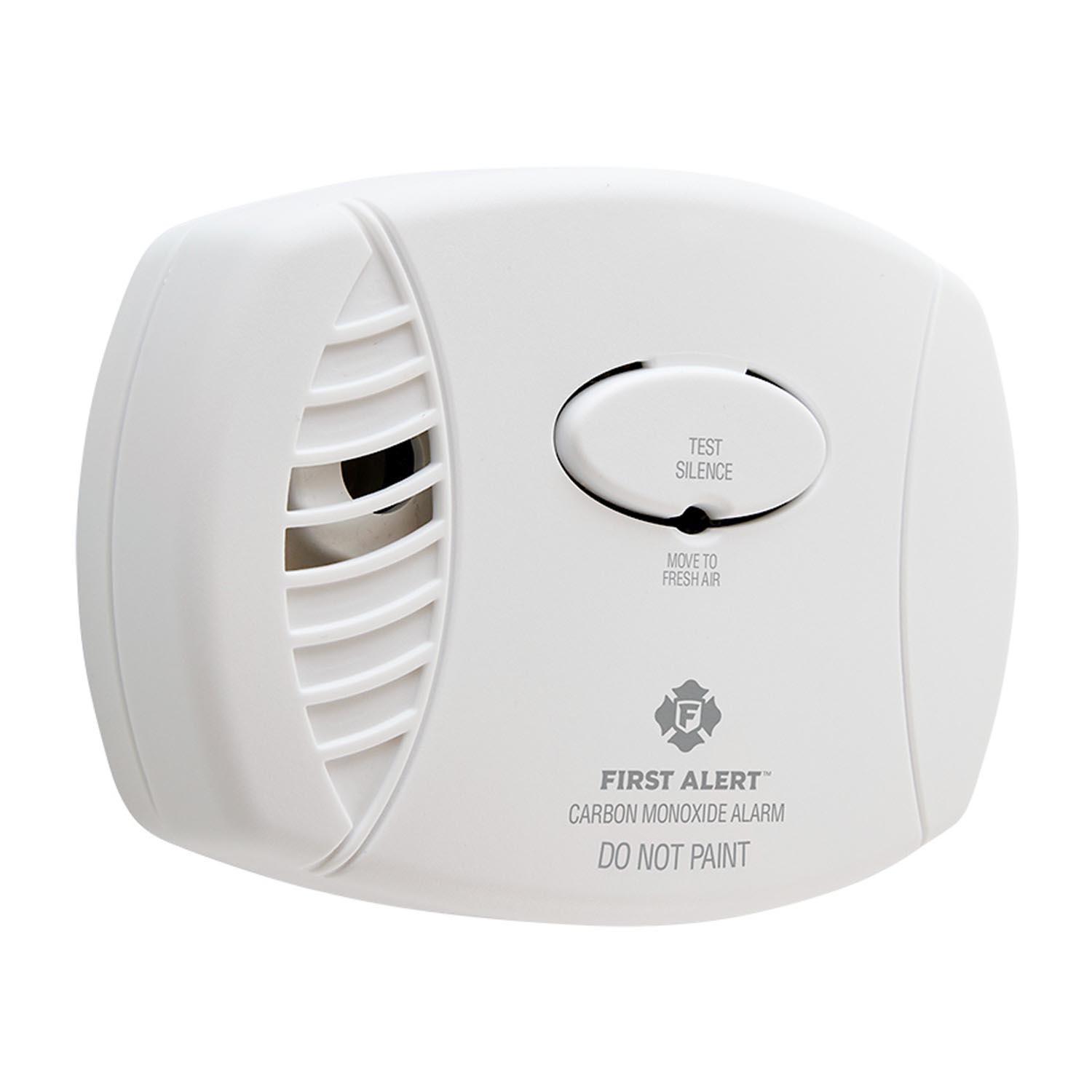
Three Killed in Wayne County Fire
People living on the right side of the apartment where the fire happened made it out safely and are staying elsewhere. Three people are dead after an apartment fire early Wednesday in Wayne County...
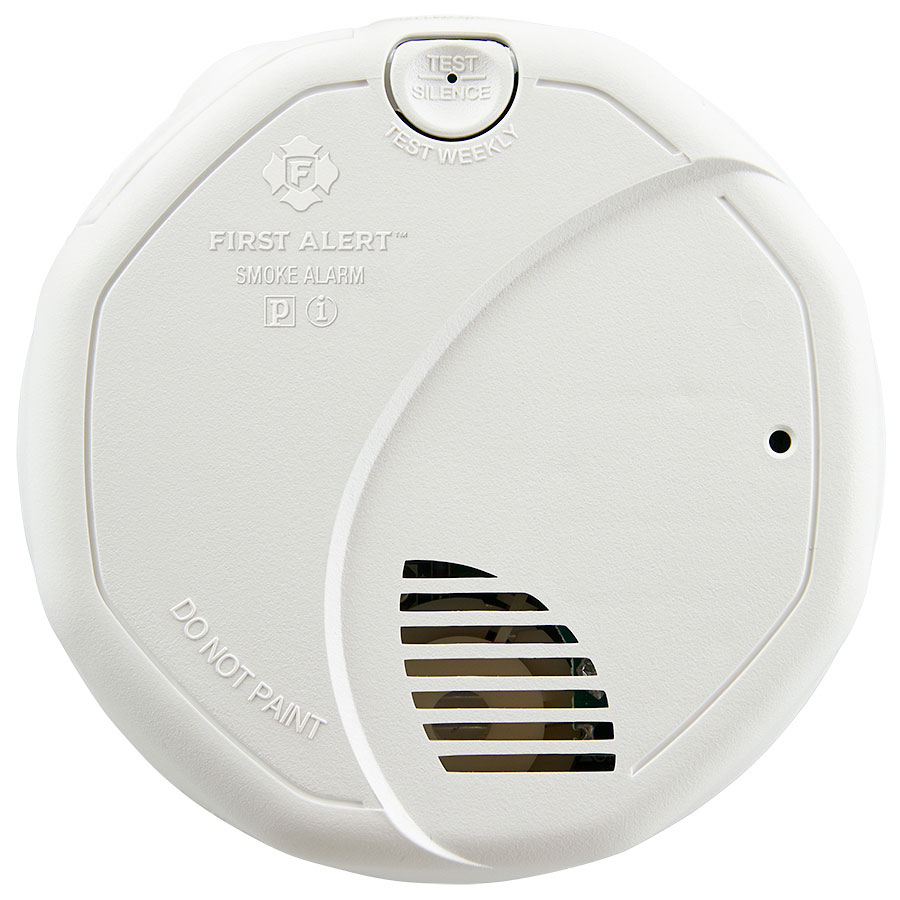
50 tenants evacuated after deadly monoxide leak
Leak in a San Francisco apartment building killed a 77-year-old man and injured eight other people. Carbon monoxide is an odorless, tasteless, colorless and highly toxic gas that is a byproduct of combustion...

Woman, 23, Dies of Carbon Monoxide Poisoning
High concentrations of carbon monoxide levels were found on the third floor 1500 parts per million," said Fire PIO Lt. Phil Champagne. "The accepted threshold is 35 parts per million any thing above 1200 can certainly immediately lethal. One of the women is in critical condition, she had to be revived by paramedics and the other woman is in stable condition after being given generous doses of oxygen...
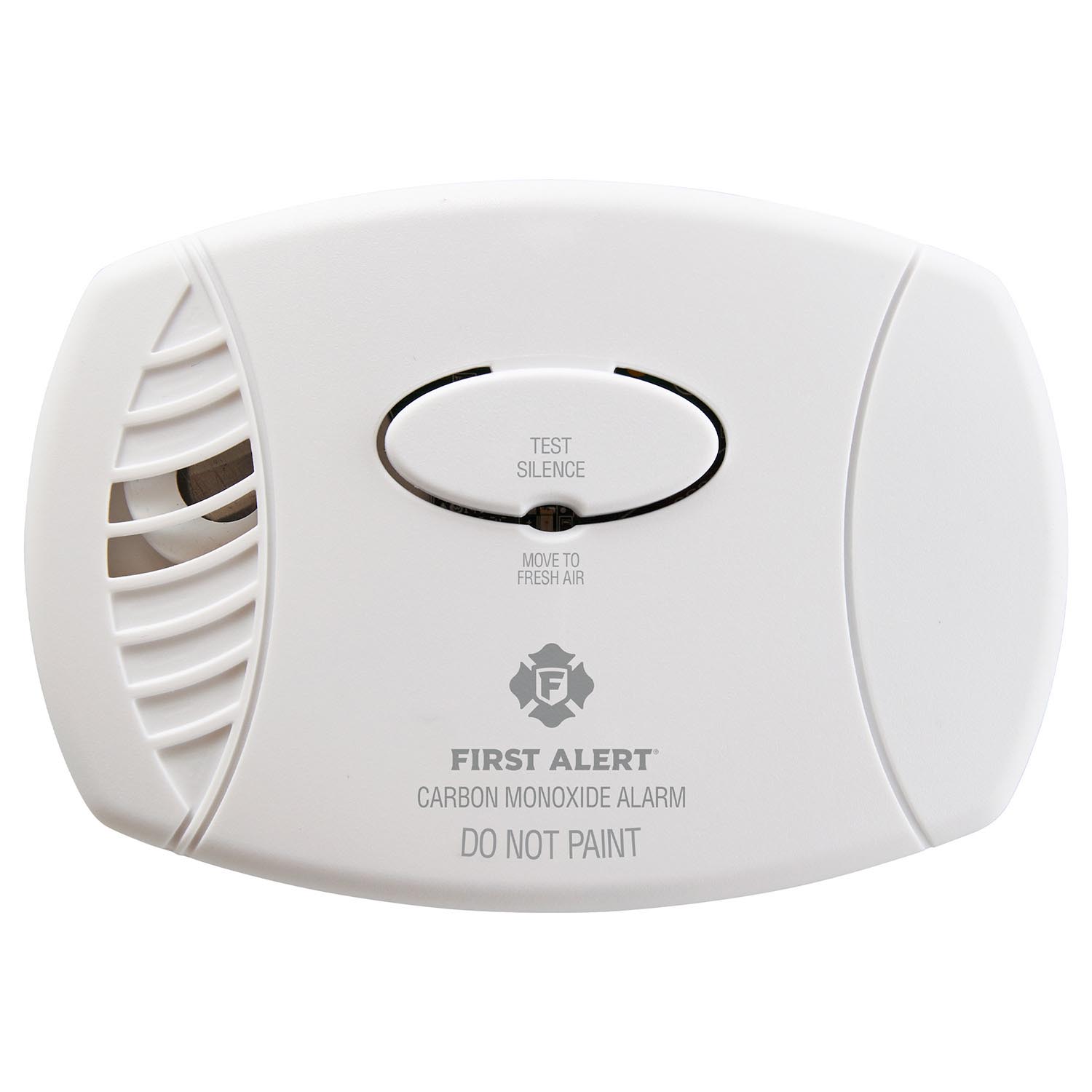
34 poisoned by carbon monoxide at family party
They were all attending a family party at a home near 200 West and 400 South last night when the poisoning occurred. The Godinez family was hosting the holiday party and cooking with a propane grill inside the garage. That's when people started feeling sick, so someone called 911...
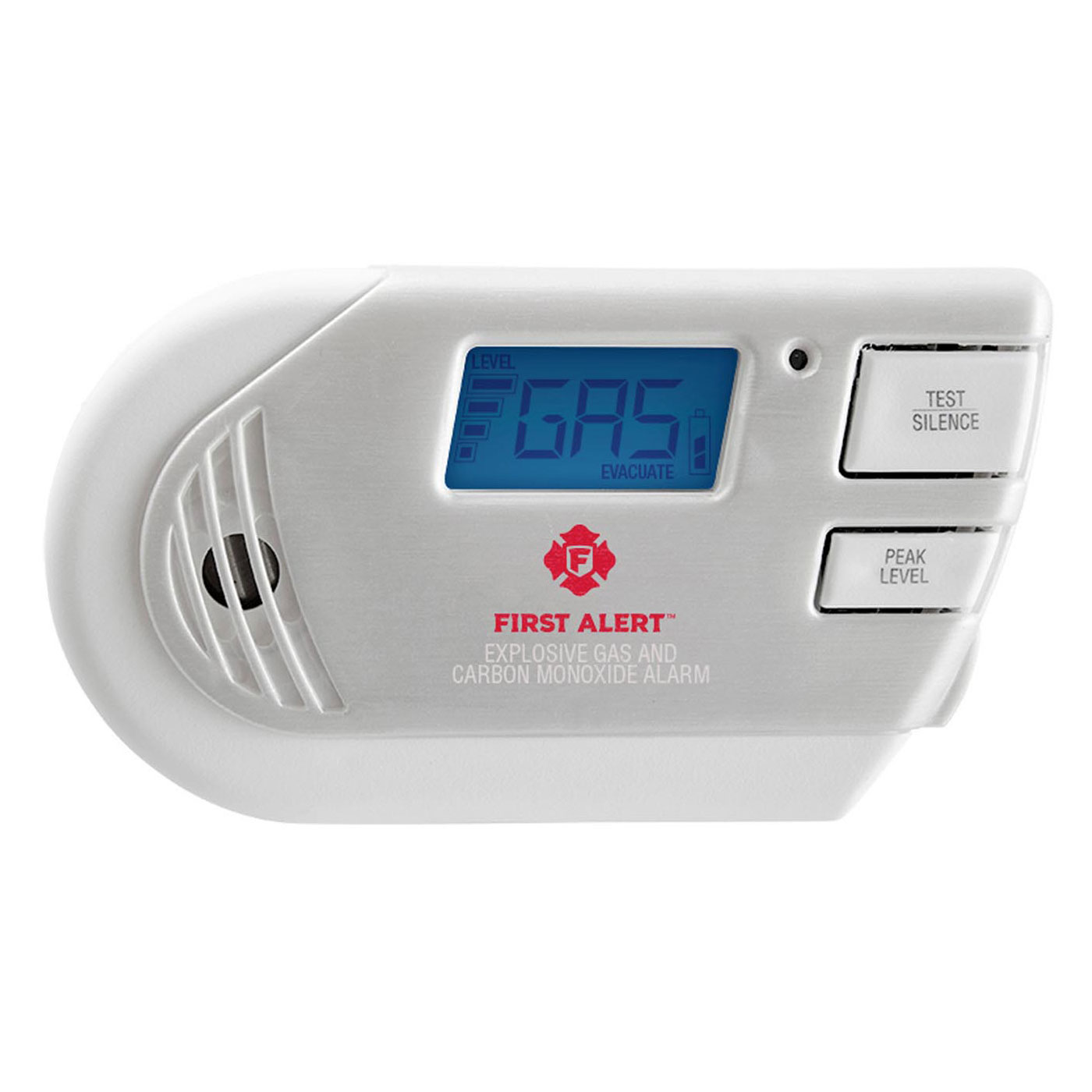
Daylight Saving Time brings important safety reminder
With the beginning of Daylight Saving Time and the Spring Forward time change on March 9, the National Fire Protection Association (NFPA) is urging people to take safety precautions with smoke alarms when they set their clocks ahead one hour...
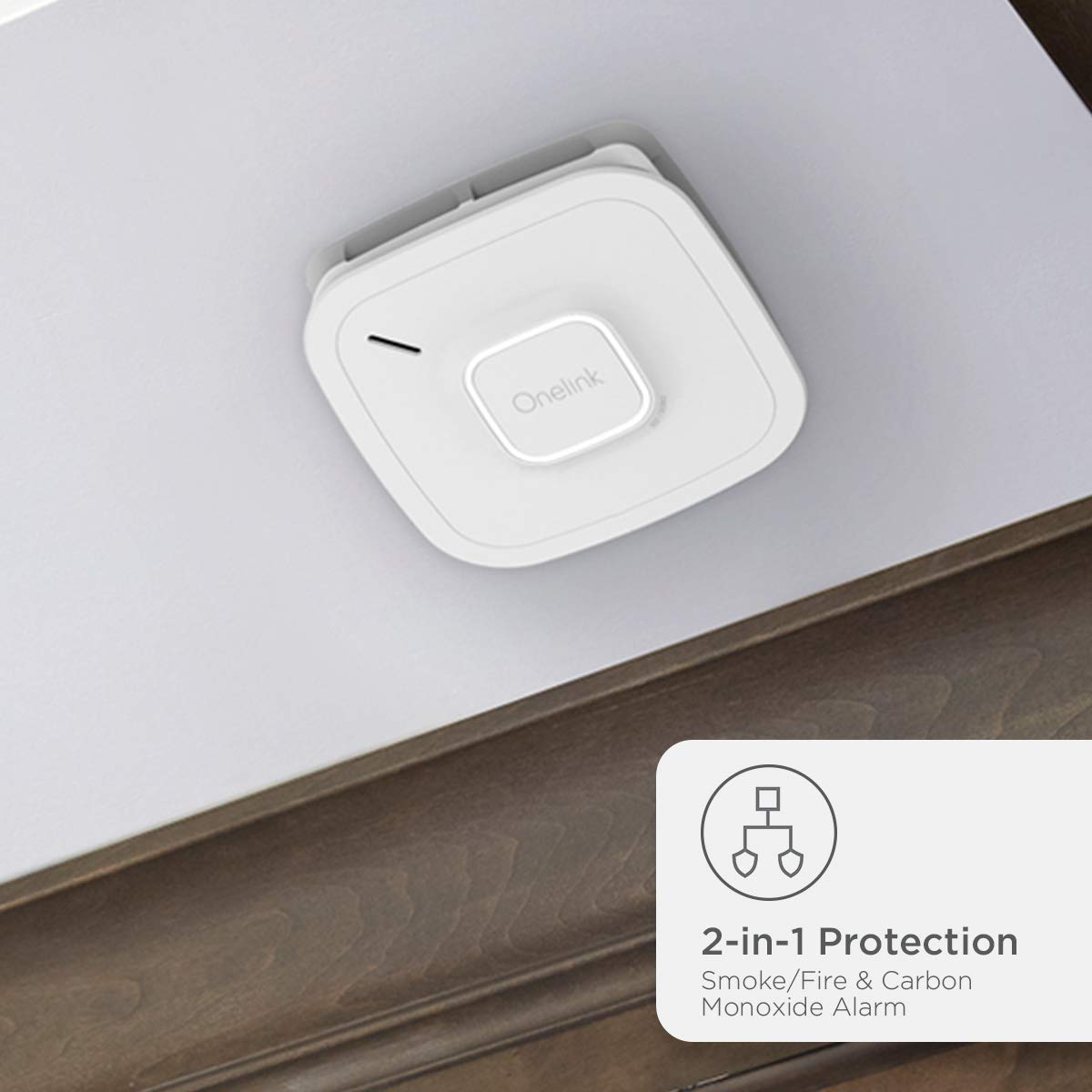
Smoke detectors can give time needed to escape from fire
In two to three minutes, a typical living room or bedroom can become fully engulfed in flames. But people who die in house fires often aren't touched by flame. People who die in house fires often do so without ever waking up, succumbing to smoke and poisonous gases before they are touched by flames...
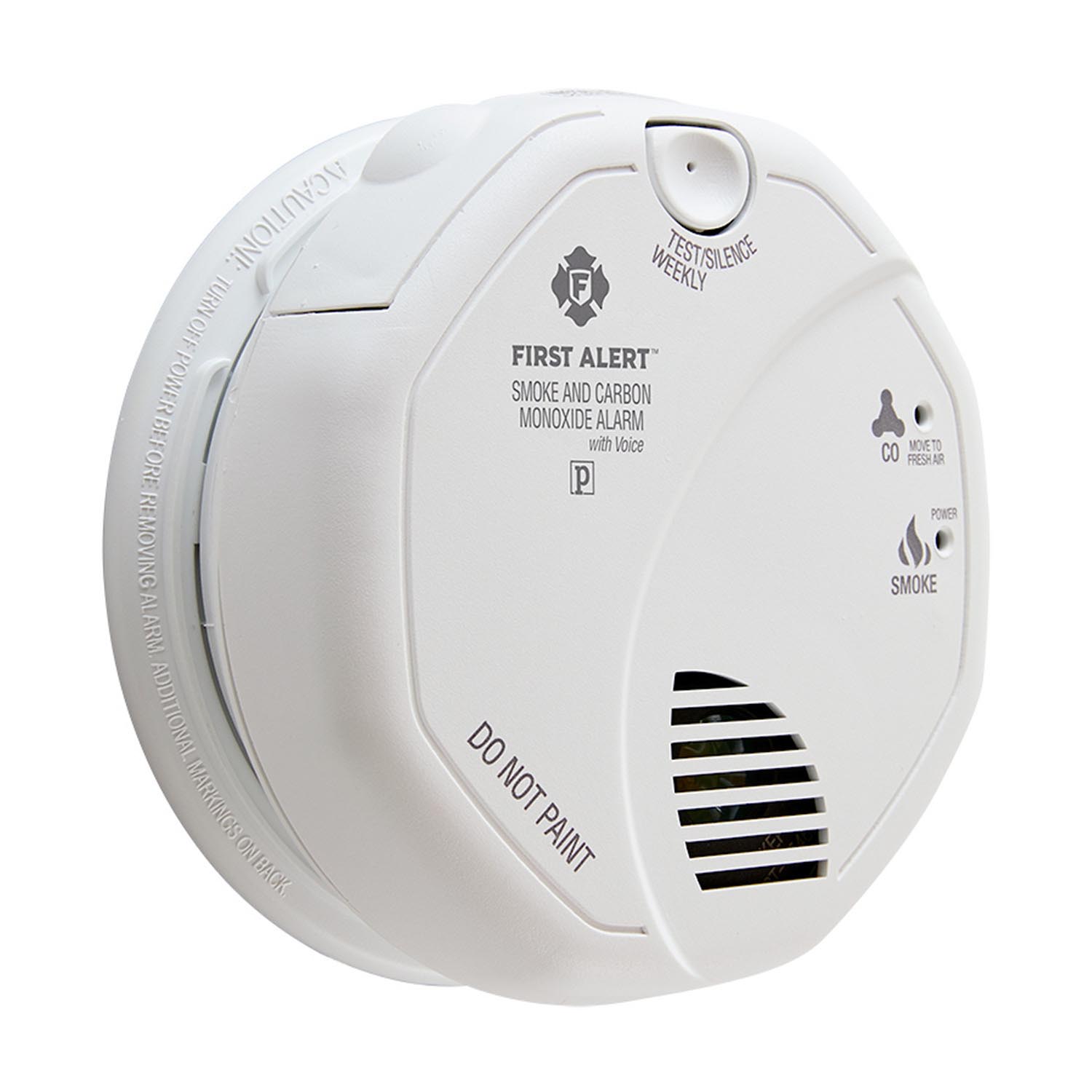
Which type of smoke detector do you have?
Experts say the ionization alarm provides a better response to flaming fires, where the less common photoelectric provides a faster response to smoldering fires. Firefighters recommend that you have both...
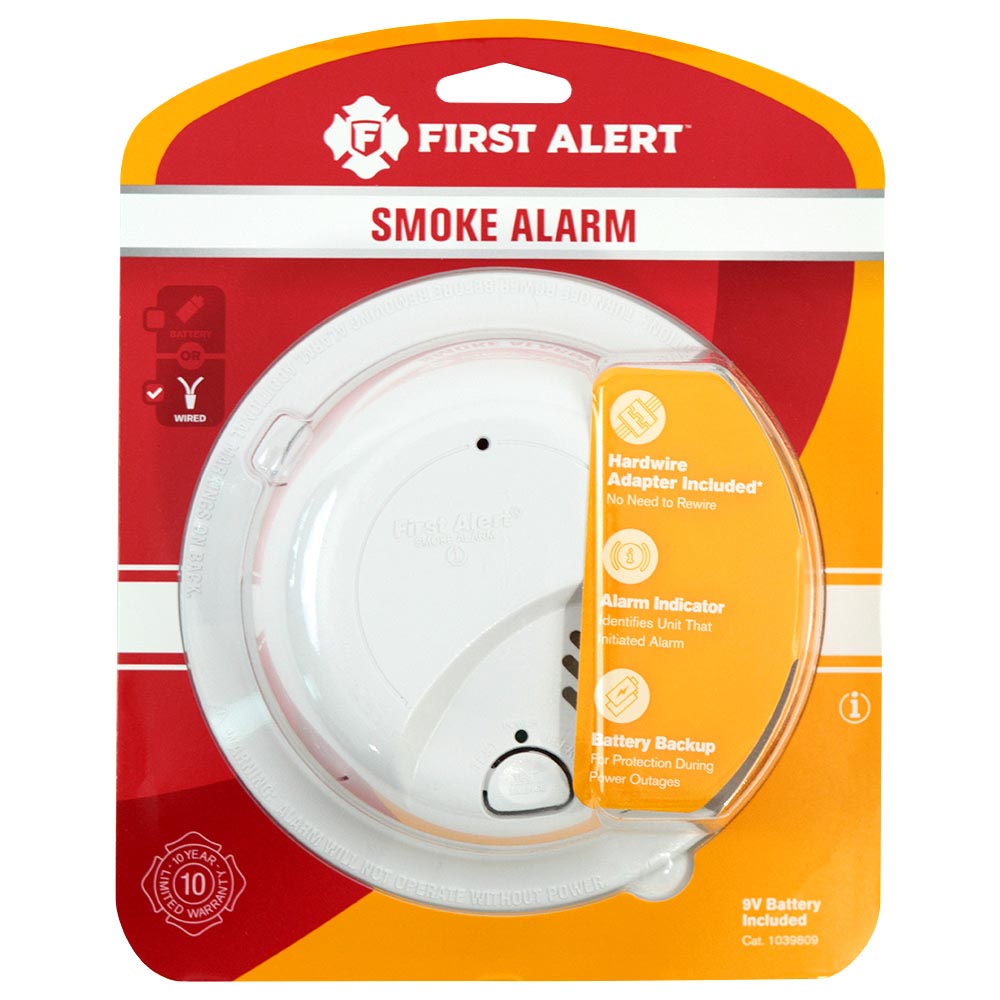
Sundre fire chief credits detector for saving lives
Firefighters found very high levels of the colorless, odorless compound throughout the home. Whitesell said there was enough carbon monoxide in the building to kill the women had they been at home...

Carbon monoxide can be deadly intruder
There was no smoke billowing from the roof and no flames shooting out of windows. Even the interior looked untouched. But there was a hazard, and over time it could be deadly. Carbon monoxide could be called a stealth gas...
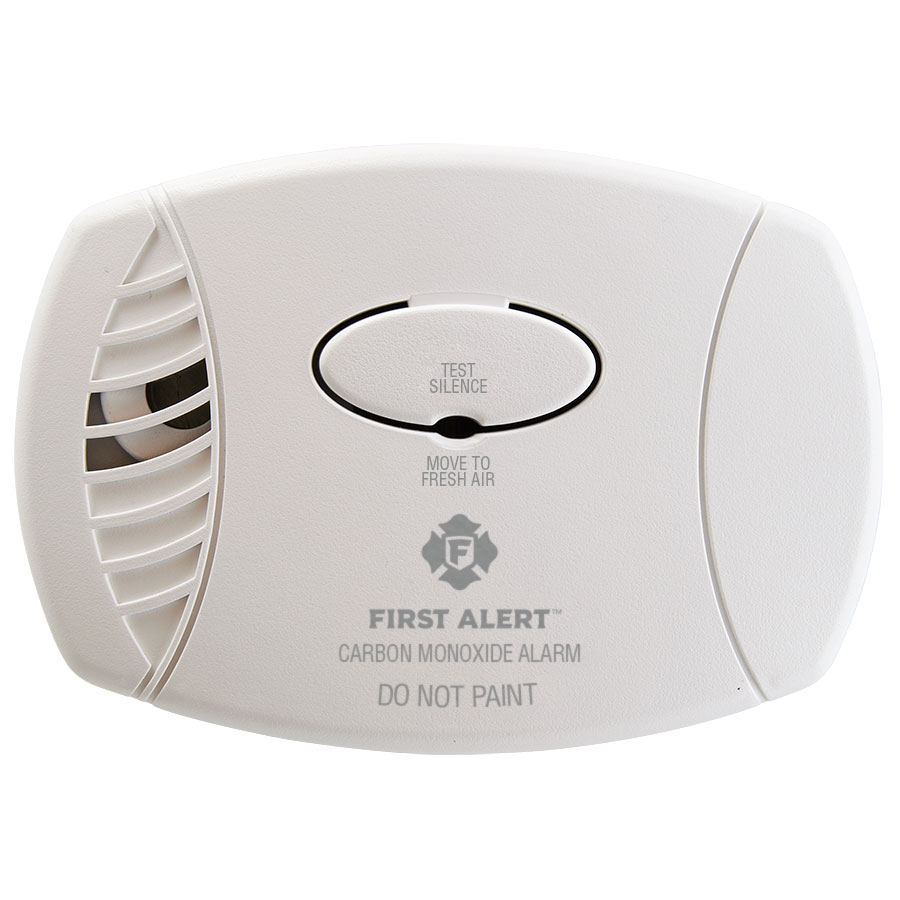
- Search Please fill out this field.
- Manage Your Subscription
- Give a Gift Subscription
- Newsletters
- Sweepstakes
If you click on links we provide, we may receive compensation.
- Travel Products
- Travel Accessories
10 Personal Safety Devices That Will Make Every Hotel Room Feel Secure, According to a Solo Traveler
From portable door stop alarms to carbon monoxide detectors, the 10 devices every solo traveler needs.
:max_bytes(150000):strip_icc():format(webp)/Jillian-Dara-2000-bdb4477b08f543a88d386977814c55b4.jpg)
Travel + Leisure / Tyler Roeland
As carefree as travel may appear on social media feeds, the realities can be sobering. Lost luggage , cancellations and delays are all unforeseen possibilities, but there’s one aspect of travel that you do have some control over: personal safety.
I’ll admit that I was fearless when I first started solo traveling as a woman, but as the years went on, I grew more cautious as I heard about incidents among my peers: from high carbon monoxide levels in hotel rooms to being followed in a foreign city. In order to make my solo travels as secure as possible, I discovered some of the best personal safety products that are packable and portable, so I can bring them with me even when space runs slim in my carry-on.
Here, 10 products to make you feel safer while traveling, especially when staying in a hotel room alone.
Winonly Door Stop Alarm
When safety content creator Dannah Eve showed off this doorstop alarm on TikTok, I couldn’t believe I hadn’t heard about it before. The influencer has built a following for her motto: “Live aware! Not in fear” which is exactly what this product permits. No matter how luxurious a hotel is, the realities are unavoidable: locks break, there are master key cards, and break-ins happen. But, if you place this doorstop alarm under the door crack to your hotel room (or Airbnb) it provides two-fold protection. First, it prevents entry by stopping the door from opening further. Then, it sounds an alarm to scare off the intruder. The small but mighty device weighs less than a pound and can be tucked into a shoe to optimize precious space in your luggage.
Gray Rhino Portable Carbon Monoxide Detector
Though hotels are outfitted with smoke detectors, most rooms aren’t equipped with carbon monoxide devices. And, when you’re in a room with no windows or you can’t open them, there’s little air flow, which could cause a carbon monoxide build up. In fact, I had just returned from Mexico last year when a news story broke about this exact thing happening at another hotel in the same area . My mom (thanks, Mom!) immediately texted me and said to check out portable carbon monoxide detectors . There are a number of them available on Amazon , but this pocket-size version is a best-seller, even among firefighters. One of the five-star reviews from a fire captain said this detector is more reliable than the ones the department provides them with, adding, “It is a solid, simple to operate, accurate device.”
Master Lock Portable Small Lock Box
A hotel’s in-room safe may work for some travelers, but for accommodation that doesn't offer a safe, a portable lock box is a great option to keep your most prized possessions locked up. Even when I stay at a hotel with a safe, I feel more comfortable securing my jewelry, passport, and cash in this simpel grab-and-go lock box. It’s helpful when changing hotels or locations frequently so that you always know where your valuables are or in case an incident should arise in the middle of the night. Even though easy to travel with, it’s large enough to fit a smartphone, wallet, watch, and more.
Venture 4th Travel Money Belt
One of the most popular qualms I hear from travelers is the challenge of staying organized while on the road. A money belt may seem over-the-top, but they are more helpful than you think because they keep your items safe and organized. Keeping a wad of money as well as credit cards in your belt while in your hotel room ensures you always know where your cash is. And, when you leave the room, you know that your money is physically on you — which means so are your cards and cash. Even if you’re carrying around quite a bit of money, you can feel more comfortable knowing that these belts conceal your stash (unlike a bulky wallet in your back pocket or a backpack) and are tricky for pick-pocketers to access. This slim belt also has space for your passport and features a Radio Frequency Identification (RFID) blocking system to keep your documents safe.
Elegoro Portable Door Lock
Many solo travelers feel safer when relying on their own door lock. The screw-like design of this portable one may look intimidating but it doesn’t require any tools or installation; simply fasten it to the door lock and tighten the system until it’s in contact with the door. Sold as a two-pack also means you can throw the compact, sturdy lock into a carry-on bag as well as your purse so that you never forget it, even on a quick trip.
Selowea Hidden Camera Detector
Hidden cameras in a hotel room may seem like something out of a horror movie, but they can actually appear in real life. When it comes to personal safety, why take a chance? To protect yourself, pack this hidden camera detector to your safety toolbox. It will put your mind at ease by beeping or vibrating within 26 feet of a hidden camera, bug, or GPS tracking device.
Ceptics Universal Travel Adapter Kit
Imagine leaving your laptop (or any electronic) charging in a hotel room only to return to it fried thanks to a power outage and ensuing voltage surge. Combat this by traveling with a converter that offers built-in surge protection if you’re traveling internationally (or just a surge protector for domestic travel) This universal travel adapter offers built-in protection from voltage surges and spikes with six global adapters so you can take it just about anywhere.
She’s Birdie The Original Personal Safety Alarm
This popular key-chain personal safety alarm may have been designed for walking alone at night or commuting on public transportation, but it works in any situation when you’re alone. It works by giving off an extremely loud alarm and strobe light when activated; it will keep your mind at ease when you go to sleep at night. Keep it under your pillow just in case; all you need to do is remove the top pin, which activates an alarm that can run for up to 40 continuous minutes.
Boxiki Travel RFID Blocking Sleeves
This handy pack of 12 RFID-blocking cards and 3 RFID-blocking sleeves protect your wallet and travel documents from electronic fraud or theft. The sleeves block signals to RFID-enabled cards to prevent unwanted and unwarranted access to credit cards, money cards, identification cards, and passports (which fit in the larger sleeves). These sleeves tend to get beat up over time, so stocking up on a dozen means you can tuck an extra in your travel bag and keep a few in the closet to refresh after multiple uses.
BV TSA Approved Luggage Travel Lock
If you want to ensure the safety of your bags without using the hotel safe, travel with a luggage lock. Personally, I don’t tend to travel with more than carry-on luggage so I never thought I had the need for a luggage lock. But, I found that using a lock for in-room instances has its perks, especially the added security to your belongings when you’re out enjoying your destination. I like that these locks don’t require keys so that I don’t have to carry that around when I’m traveling. Plus, being TSA-approved, I can also use them if I need to check a bag on my way home.
Love a great deal? Sign up for our T+L Recommends newsletter and we’ll send you our favorite travel products each week.
Shop More T+L-Approved Picks
:max_bytes(150000):strip_icc():format(webp)/walmart-weekender-bag-sale-tout-e5bd3912ea384c8990e02e8d085c93ba.jpg)
Related Articles

The Best Portable Carbon Monoxide Detector For Travel May Surprise You
Heating , Safety
October 27, 2022
If you’re looking to purchase a portable carbon monoxide detector for travel, I salute you! You are way ahead of the game my friend.
Most people don’t realize how often CO poisonings take place at hotels, resorts or even an Airbnb. Search for “carbon monoxide hotel” or “vacation carbon monoxide” in Google News and you’ll get quite a wake up call.

Do I Really Need A Portable Carbon Monoxide Detector For Travel?
Very few hotels install carbon monoxide detectors. Some firemen, physicians, activists and legislators have been pushing hotels to put them in every room. The lodging industry claims that it is not necessary and too expensive.
But using the National Fire Incident Reporting System (NFIRS) data in 2021 told a different story.
To better understand the public health risk from carbon monoxide incidents in the U.S. lodging industry, data for years 1999 through 2018 were assessed to identify CO incidents occurring at U.S. hotels and motels. The results of the study found 3405 incidents.
But that wasn’t the scary part of that study. Notice what’s stated in its conclusion…
“The harm caused to the public by these incidents is likely much greater than the NFIRS data indicates. Applying the frequencies of injury and deaths observed by the previous efforts to the NFIRS data indicates a potential for 651 to 1498 deaths and 22,336 to 38,657 injuries to have been caused by CO incidents in the U.S. lodging industry over the last 20 years. “
Now that’s scary!
Remember the old ‘Don’t Leave Home Without It’ tagline that became synonymous with American Express traveller’s cheques. It was a great marketing campaign that offered peace of mind while on vacation.
Nowadays, if you want real peace of mind when you’re traveling, pack a carbon monoxide detector…’don’t leave home without it’.
The Best Carbon Monoxide Detector For YOU (Don’t Skip This Section)
I’m going to recommend 3 portable carbon monoxide alarms that I’ve tested and used. And although we’re focusing on travel, these CO detectors can be used in a variety of ways to protect you and those around you.
Keep in mind that this is NOT a good, better and best list . All 3 carbon monoxide detectors have their pros and cons. And each detector benefits certain people. You may ask, “What do mean “certain people”? Doesn’t CO affect everyone the same? How are CO detectors built for certain people?”. Good questions.
Whenever I’m asked about which carbon monoxide detector to buy, people are usually surprised that my answer is always, “Who’s the detector for?”
I ask because every household CO detector sold today online, in department stores or in big box stores does not detect or alert when exposed to low levels of carbon monoxide. This is dangerous because low levels of carbon monoxide can cause serious health issues for some people.
It’s such a real danger that by law, manufacturers of these CO detectors are required to have a warning something similar to this wording which is found on the Kidde carbon monoxide alarm…
“This device is designed to protect individuals from acute effects of carbon monoxide exposure. It may not fully safeguard individuals with specific medical conditions . If in doubt, consult a medical practitioner. Individuals with medical problems may consider using warning devices which provide audible and visual signals for carbon monoxide concentrations under 30 PPM.”
What medical conditions or problems are they talking about? That used to be easy to see because at one time the required wording was more specific and had to include this…
“Pregnant women, infants, children, senior citizens, persons with heart or respiratory problems, and smokers may experience symptoms at lower levels of exposure than noted.”
Since that list covered the majority of households that used a CO detector, you can guess who got the wording less specific. It didn’t change the danger but it did make manufacturers less liable.
To wrap this up, keep this in mind…
When you’re shopping for a CO detector, the most important consideration is who it’s for.
If you’re a healthy, young-ish, not pregnant and only need to protect other healthy, young-ish, non-pregnant adults, you can use any CO detector you’d like.
If you’re anyone else…you need a low level carbon monoxide detector.
Two Levels Of Travel Carbon Monoxide Detector
The difference between carbon monoxide detectors boils down to when they sound an alert. Depending on whether it’s low level or a UL 2034 CO detector, it will alert based on CO levels within a certain period of time.
Any detector below will make a good portable travel detector. And they all have two important features in common. They run off batteries so there’s no worries of a power outage preventing you from being safe. And they have digital display to show how much CO is being detected.
Recommended UL 2034 Travel Carbon Monoxide Alarm (For Healthy Adults Only)
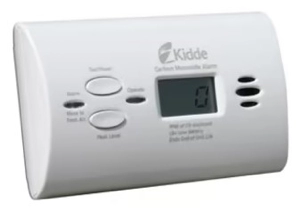
Kidde Battery Operated Carbon Monoxide Alarm with Digital Display
Specifications:.
Size: 4.5 x 1.5 x 2.75 inches
Weight: 1 Pound
Reasons To Buy:
Inexpensive
Battery Powered 3-AA Batteries
Can be used at home when not traveling
Reasons To Avoid:
For Healthy Adults Only
Only alarms at dangerously high CO levels
Not designed to hold up well during travel
Cheaper CO sensor is more susceptible to false alarms
Must remove batteries to turn off while traveling
The Kidde is a simple inexpensive CO detector that’ll do the job for some. It’s easy enough to pack in a checked bag but does take up a bit of room if you’re trying to travel light with a small bag. It’s built to stay in your lodging and protect you when you’re there. The ability to see peak CO levels can be used to see if CO levels were elevated while you were out. It also has 3 AA batteries that can be easily removed so it doesn’t go off while it’s packed away.
Recommended Low Level Carbon Monoxide Alarm
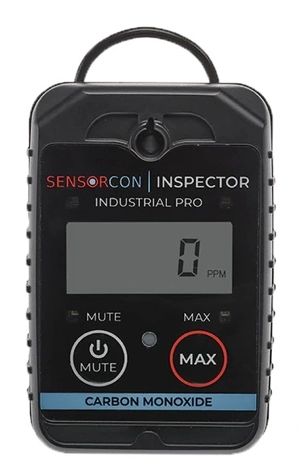
Sensorcon Inspector 2 CO Industrial Pro Carbon Monoxide Gas Monitor
Size: 3.2 x 2.2 x 0.86 inches
Weight: 4 ounces
Accurate low level CO detection
Rugged design holds up during travel
Water resistant and shock proof
Temperature Range: -4 to +122 °F (-20 to +50 °C)
Adjustable alarm settings
Small and light for packing
Two-year battery life (replaceable)
Not designed for home use
While all three of the recommended detector will work for travel, the Sensorcon is the most suited for it. This is the device we’ve used for years on the job to protect ourselves from dangerous situations. They are small, tough, accurate, easy to use and adjustable to fit your needs. These are also the same units used by pilots to protect themselves in smaller aircraft. So these units are in all aspects of the travel industry already!
The Sensorcon has an easy on/off button so you can save the battery when it’s not needed. It also can be attached to your person if you’re nervous about an area you might be traveling too while on vacation rather than just what’s happening in your hotel room. If you’re looking for the most complete way to protect yourself, the Sensorcon is the way to go.
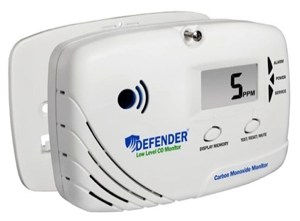
Defender LL6170 Low Level Carbon Monoxide Monitor-Alarm
Size: 5.5 x 3.75 x 1.25 inches
Weight: 8 ounces
Non-removeable batteries
Unable to turn off
The Defender detector can be used for travel but has the advantage of being an excellent carbon monoxide detector for your home. The one downside is that it’s not as rugged as the Sensorcon so it might not hold up as well when you use it for travel. It also can’t be turned off once it’s started but since it has a high quality carbon monoxide sensor it will be less likely to give you false alarm alerts like the Kidde. Whether you use this as a travel carbon monoxide alarm or not, you won’t go wrong with one of these in your home.
Why Is Carbon Monoxide So Dangerous?
When you take a breath your lungs are taking in oxygen from the air. And those oxygen molecules, consisting of two oxygen atoms, go into your bloodstream where they bind to hemoglobin proteins which then carry the oxygen throughout your body to vital organs like your brain and heart.
When you breathe in carbon monoxide, those CO molecules, consisting of one carbon atom and one oxygen atom, take the place of the two oxygen molecules. This prevents our body from getting the oxygen that it so desperately needs. If it goes on for long enough or in high enough concentrations it will lead to a death by asphyxiation.
This is known as carbon monoxide poisoning, the silent killer.
But did you know that not all forms of carbon monoxide poisoning result from large levels of exposure in a short period of time?
Less is known about the harmful effects that lower levels of carbon monoxide exposure can have both acutely and over long periods of time. But there is research out there to suggest it’s a problem.
It has been shown that CO poisoning has both short term and long term effects. A report using long term studies indicates there are serious and permanent consequences to carbon monoxide poisoning such as neurological damage and cardiovascular complications.
One study from 1998 found that low level CO exposure led to an impairment of cognitive functions like problem solving and memory formation.
Sadly, most of the research out there on the effects of low level and long term CO exposure is old, dating back to the early 2000s or even earlier, which suggests there’s a need for more research.
Addressing the issue of low level exposure is quite complicated. Organizations like OSHA, NIOSH and the EPA have different recommended safe thresholds for CO exposure.
One says exposure to 50 parts per million (ppm) in air over eight hours is safe while others say it must stay below 9 ppm.
Who Is At Risk Of Low Level Carbon Monoxide Poisoning?
Carbon monoxide can affect anyone but we should be especially on guard if we or anyone in our household falls into these higher risk groups.
Elderly – People who are elderly are more likely to have a health problem that could cause them to be more susceptible to CO poisoning. (i.e cardiac or respiratory)
Children – This age range has a higher metabolic rate and takes more breaths than adults do, so they’re at greater risk for CO poisoning.
Pregnant Women – This group is at risk due to the fact that maternal carbon monoxide level affects fetal CO level, which impairs both mother and fetus simultaneously.
Pets – Animals are particularly vulnerable to carbon monoxide (CO) poisoning because they’re small, have a high metabolic rate, and behave differently than humans. Home carbon monoxide detectors are designed to protect people from CO poisoning, but don’t necessarily protect animals.
As we discussed earlier, normal CO alarms won’t sound at levels below 40 or 50 PPM and when they do, it requires those levels to persist for several hours or even days before they finally do sound.
What most people don’t realize is that a carbon monoxide alarm only goes off when there are deadly amounts of carbon monoxide in the house. Today’s detectors are designed to prevent deaths from high levels of CO, not injuries from chronic exposure to low levels. Sadly, they often fail at preventing deaths!
Finally, do you have a smoke detector or fire detector in your home? It’s a smoke detector, right? Why not a fire detector? Because we don’t want to be warned when our home is engulfed in flames! We want to know as soon as there is a problem so we have time to react.
UL 2034 carbon monoxide alarms and detectors are basically fire detectors. By the time they go off it could be too late.
So what can you do?
Prevention and knowledge is key. Know the sources of CO and the clues your body gives when you might be suffering from carbon monoxide poisoning.
Signs And Symptoms Of Carbon Monoxide Poisoning
Carbon monoxide poisonings can be difficult to diagnose but are classified as acute (having a sudden onset) or chronic (occurring again and again for a long time).
Acute poisoning occurs by breathing large amounts of carbon monoxide over a short period of time. Chronic poisoning occurs by breathing smaller amounts of carbon monoxide over an extended period of time.
The severity of poisoning and the subsequent symptoms depend on the total amount of carbon monoxide breathed over time, as well as the person’s physiological condition.
Signs of acute carbon monoxide poisoning can include:
- Unconsciousness
- Breathlessness
- Vision Problems
Signs of chronic carbon monoxide poisoning can include:
- Flu-like symptoms
- Feeling better when not at suspected site of poisoning
- Impaired attention and problem-solving abilities
- Mental confusion
- Difficulty with simple arithmetic
- Memory impairments
- Disorientation
Carbon Monoxide Poisoning Treatment
If you suspect that you or someone around you has carbon monoxide poisoning it’s important to act quickly.
Here are some steps you can take:
- Get out immediately and leave the house/business/etc.
- Call for help (e.g., 911, fire department, gas companies, etc.)
- Don’t go back into the building until you’re told it’s safe to do so by an authorized person.
- If you’re feeling unwell, call an ambulance immediately.
- Because your cognitive abilities may be impaired, do not try to drive yourself to a hospital.
Leave a Comment Cancel reply
- Calibration
- FD-VAPE-8100

June 6, 2024
Best Travel Carbon Monoxide Detector (2024 update)
A travel carbon monoxide (CO) detector is a portable device designed to monitor and alert users to the presence of this colorless, odorless, and potentially deadly gas when away from home. CO is produced by the incomplete combustion of fuels like natural gas, propane, wood, and gasoline, making it a risk in many travel accommodations and transportation. A compact, battery-powered CO detector can provide an important safety layer for activities like camping, boating, staying in vacation rentals, or driving long distances. These devices continuously monitor air quality and sound an alarm if CO levels become hazardous, allowing users to vacate the area and seek fresh air. A travel CO detector is a prudent investment for safety-conscious travelers.
Best Travel Carbon Monoxide Detector?
When choosing the best travel carbon monoxide (CO) detector, look for a compact, lightweight, and portable device that is easy to pack and use on the go. The detector should have a long battery life or be rechargeable via USB to ensure continuous protection throughout your trip. Consider a model with a digital display that shows the current CO level and a loud, audible alarm that can wake you up in case of an emergency. Some top-rated travel CO detectors include the Forensics Detectors Portable Carbon Monoxide Detector, the Kidde Battery-Operated Carbon Monoxide Alarm, and the First Alert Portable Carbon Monoxide Detector. These detectors are affordable, reliable, and meet the UL standards for CO detection. When traveling, place the detector near your sleeping area and test it regularly to ensure it is functioning correctly. Remember that while a travel CO detector is a valuable safety tool, it should not replace the need for properly maintained and installed CO alarms in your home.

What Is Carbon Monoxide?
Carbon monoxide (CO) is a colorless, odorless, and tasteless gas that is highly toxic to humans and animals. It is formed when fuels such as natural gas, gasoline, wood, or coal burn incompletely due to insufficient oxygen supply. CO molecules consist of one carbon atom and one oxygen atom, and they have a strong affinity for binding with hemoglobin in the blood, reducing the blood's oxygen-carrying capacity. When inhaled, CO can cause a range of symptoms, from mild headaches and dizziness to severe nausea, unconsciousness, and even death, depending on the concentration and duration of exposure. CO is often referred to as the "silent killer" because it is undetectable by human senses, making it particularly dangerous in enclosed spaces such as homes, garages, and vehicles. To prevent CO poisoning, it is crucial to ensure proper ventilation, regularly maintain fuel-burning appliances, and install CO detectors in areas where CO exposure is a risk.
What Is Carbon Monoxide Used For?
Carbon monoxide (CO) has various industrial and medical applications, despite its toxicity. In the chemical industry, CO is used as a raw material for the production of numerous compounds, such as acetic acid, phosgene, and methanol. It is also employed in the Mond process for purifying nickel and in the Fischer-Tropsch process for synthesizing hydrocarbons. In metallurgy, CO is used as a reducing agent in the extraction of metals from their ores, particularly in the production of iron and steel. In the medical field, low concentrations of CO are sometimes used in diagnostic tests to measure lung diffusion capacity and blood volume. CO has also been investigated for its potential therapeutic applications, such as in the treatment of certain inflammatory conditions and as an anti-inflammatory agent. However, these medical uses are strictly controlled and administered under close supervision due to the inherent risks associated with CO exposure. In most everyday contexts, CO is an unwanted byproduct of incomplete combustion and is not intentionally used due to its hazardous nature.
Who Needs A Carbon Monoxide Gas Detector?
Carbon monoxide (CO) gas detectors are essential for anyone who uses fuel-burning appliances or lives in an environment where CO exposure is a potential risk. Homeowners with gas stoves, furnaces, water heaters, or fireplaces should install CO detectors on every level of their home, particularly near sleeping areas. Tenants in apartments or rental properties should also ensure that their living spaces are equipped with working CO alarms, as required by many local and state laws. Owners and managers of commercial buildings, such as offices, schools, and hotels, are responsible for installing and maintaining CO detectors to ensure the safety of occupants. Industrial workers in facilities where CO is present, such as steel mills, refineries, and power plants, must be protected by CO monitoring systems and personal CO detectors. Boat owners and recreational vehicle users should also install CO detectors in their vessels and vehicles, as CO can accumulate quickly in enclosed spaces. Additionally, first responders, such as firefighters and emergency medical technicians, often rely on portable CO detectors to assess the safety of an environment before entering. In summary, anyone who may be exposed to carbon monoxide should have access to a reliable CO gas detector to prevent potentially fatal poisoning.
Is Carbon Monoxide In The Outdoor Atmosphere?
Yes, carbon monoxide (CO) is present in the outdoor atmosphere, although typically at lower concentrations compared to indoor environments. In the atmosphere, CO is formed primarily through the incomplete combustion of fossil fuels and biomass, as well as from natural sources such as wildfires and volcanic eruptions. The main anthropogenic sources of atmospheric CO include motor vehicle exhaust, industrial emissions, and residential heating and cooking appliances. In urban areas with heavy traffic congestion, CO levels can be significantly higher than in rural settings. Atmospheric CO concentrations are usually measured in parts per million (ppm) and can vary depending on factors such as location, time of day, and weather conditions. The Environmental Protection Agency (EPA) has established National Ambient Air Quality Standards (NAAQS) for CO, which set limits on the allowable concentration of CO in the outdoor air. The current primary standard for CO is 9 ppm for an 8-hour average and 35 ppm for a 1-hour average. While outdoor CO levels are generally lower than those found indoors, prolonged exposure to elevated atmospheric CO concentrations can still pose health risks, particularly for sensitive groups such as children, the elderly, and individuals with pre-existing respiratory or cardiovascular conditions.
Can You Smell Carbon Monoxide?
No, humans cannot smell carbon monoxide (CO) because it is an odorless gas. This is one of the reasons why CO is particularly dangerous and often referred to as the "silent killer." Unlike other gases such as natural gas or propane, which are intentionally odorized with compounds like mercaptan to make leaks detectable by smell, CO has no such warning properties. The absence of a detectable odor makes it impossible for humans to rely on their sense of smell to alert them to the presence of CO in the air. This is why it is crucial to install and maintain carbon monoxide detectors in any environment where CO exposure is a potential risk, such as homes, offices, and industrial settings. CO detectors are designed to continuously monitor the air and provide an early warning in the form of a loud alarm when CO concentrations reach dangerous levels. Without these life-saving devices, people may unknowingly be exposed to high levels of CO, leading to potentially fatal consequences. It is important to remember that the lack of a discernible odor does not mean the absence of CO, and one should never rely on the sense of smell to detect this toxic gas.
How Do You Test For Carbon Monoxide?
Testing for carbon monoxide (CO) is typically done using specialized CO detectors or gas analyzers. There are several methods for measuring CO levels in the air:
Electrochemical sensors: Most residential and commercial CO detectors use electrochemical sensors. These sensors contain an electrolyte solution and electrodes that generate an electrical current proportional to the concentration of CO in the air. When CO gas enters the sensor, it undergoes a chemical reaction, producing a measurable electrical signal that triggers the detector's alarm when CO levels exceed a predetermined threshold.
Metal oxide semiconductor sensors: Some CO detectors use metal oxide semiconductor (MOS) sensors, which consist of a heated metal oxide surface that changes electrical resistance when exposed to CO gas. The change in resistance is measured and converted into a CO concentration reading.
Biomimetic sensors: These sensors use synthetic materials that mimic the behavior of hemoglobin in the blood, which binds to CO molecules. When exposed to CO, the sensor's optical properties change, allowing for the measurement of CO concentration.
Gas chromatography: In laboratory settings or for more precise measurements, gas chromatography can be used to separate and quantify CO in an air sample. This method involves injecting the sample into a chromatography column and measuring the retention time and peak area of the CO component.
Colorimetric tubes: For spot checks or in emergency situations, colorimetric detector tubes can provide a quick, semi-quantitative measurement of CO levels. These disposable glass tubes contain a color-changing chemical reagent that reacts with CO, producing a color change proportional to the CO concentration.
Regardless of the testing method used, it is essential to follow the manufacturer's instructions for proper use, calibration, and maintenance of the CO testing equipment to ensure accurate and reliable results.
What Are Dangerous Carbon Monoxide Levels?
Dangerous carbon monoxide (CO) levels vary depending on the concentration of the gas in the air and the duration of exposure. The health effects of CO exposure can range from mild symptoms to severe illness or even death. The following levels of CO are generally considered dangerous:
9 parts per million (ppm): This is the maximum allowable concentration for indoor air quality, as established by the Environmental Protection Agency (EPA). At this level, CO exposure should not cause any noticeable symptoms in healthy adults.
35 ppm: This is the EPA's outdoor air quality standard for CO, averaged over a 1-hour period. Exposure to this level of CO can cause headaches and dizziness in some people.
50 ppm: At this level, prolonged exposure can cause symptoms such as headaches, fatigue, and impaired judgment. This is the maximum allowable concentration for continuous exposure in the workplace, as set by the Occupational Safety and Health Administration (OSHA).
100 ppm: Exposure to this level of CO for more than an hour can cause serious health effects, such as severe headaches, dizziness, nausea, and confusion. This is considered an imminent danger to life and health.
400 ppm and above: At these extremely high levels, CO exposure can rapidly lead to unconsciousness, brain damage, and death within a few minutes to an hour, depending on the concentration.
It is important to note that individuals with pre-existing health conditions, such as heart disease or respiratory problems, as well as children, pregnant women, and the elderly, may experience symptoms at lower CO concentrations. To prevent dangerous CO levels, it is crucial to install CO detectors, properly maintain fuel-burning appliances, and ensure adequate ventilation in any environment where CO may be present.
How Much Does A Carbon Monoxide Gas Detector Cost?
The cost of a carbon monoxide (CO) gas detector varies depending on the type, features, and brand. Here is a general overview of the price ranges for different types of CO detectors:
- Basic battery-operated detectors: These are the most affordable option, with prices typically ranging from $15 to $50. They are simple to install and provide basic CO detection and alarming functions. However, they require regular battery replacements and may not have advanced features like digital displays or interconnectivity.
- Plug-in detectors with battery backup: These detectors are designed to be plugged into a standard electrical outlet and usually have a battery backup for continuous protection during power outages. They typically cost between $25 and $75, depending on the features and brand.
- Hardwired detectors: These detectors are directly wired into a building's electrical system and often include a battery backup. They are more reliable than battery-operated units and can be interconnected, so if one detector alarms, all others will sound as well. Hardwired detectors usually cost between $30 and $100, not including installation costs.
- Smart detectors: These advanced CO detectors offer features like smartphone connectivity, remote monitoring, and integration with home automation systems. They can send alerts to your phone, provide real-time CO level readings, and even contact emergency services in case of a high CO event. Smart CO detectors typically cost between $75 and $250.
- Combination smoke and CO detectors: These units combine both smoke and CO detection capabilities into a single device, providing comprehensive protection against fire and CO hazards. Prices for combination detectors range from $30 to $100, depending on the type and features.
It is essential to choose a CO detector that meets industry standards, such as those set by Underwriters Laboratories (UL), and to install an adequate number of detectors throughout your home or building, as per local building codes and manufacturer recommendations.
What Are Carbon Monoxide Gas Sensor Interference Gases?
Carbon monoxide (CO) gas sensors can be affected by the presence of other gases, known as interference gases, which can cause false readings or reduce the sensor's sensitivity to CO. Some common interference gases for CO sensors include:
Hydrogen (H2): Hydrogen gas can cause a false positive reading on some CO sensors, particularly those using electrochemical technology. The presence of hydrogen can make the sensor respond as if CO is present, even when it is not.
Ethanol (C2H5OH): Ethanol vapors from cleaning products, perfumes, or alcoholic beverages can interfere with CO sensors, causing false alarms or reduced sensitivity.
Methane (CH4): High concentrations of methane, such as those found in natural gas leaks, can cause some CO sensors to give false readings.
Nitrogen dioxide (NO2): This gas, often present in vehicle exhaust and industrial emissions, can cause a negative interference in some CO sensors, reducing their ability to detect CO accurately.
Sulfur dioxide (SO2): SO2, which can be found in industrial environments or near coal-burning power plants, can also interfere with CO sensors, causing false readings or reduced sensitivity.
To minimize the impact of interference gases, manufacturers often use selective filters, specialized sensor designs, or algorithms that compensate for cross-sensitivities. It is essential to choose CO detectors that are designed to minimize interference and to be aware of potential sources of interfering gases in the environment where the detector will be used.
How Long Does A Carbon Monoxide Gas Detector Last?
The lifespan of a carbon monoxide (CO) gas detector depends on various factors, such as the type of sensor technology, environmental conditions, and maintenance practices. Here are some general guidelines for the life expectancy of different types of CO detectors:
Electrochemical sensors: CO detectors using electrochemical sensors typically last between 5 and 7 years. These sensors contain a gel or liquid electrolyte that can dry out over time, reducing the sensor's sensitivity and accuracy. Most manufacturers recommend replacing electrochemical CO sensors after 5-7 years to ensure optimal performance.
Metal oxide semiconductor (MOS) sensors: CO detectors with MOS sensors generally have a longer lifespan, often lasting up to 10 years. However, the sensor's performance can degrade over time due to exposure to high humidity, temperature fluctuations, or contamination by other gases.
Biomimetic sensors: These sensors, which mimic the behavior of hemoglobin in the blood, have a typical lifespan of 5-7 years. Like electrochemical sensors, the sensitivity and accuracy of biomimetic sensors can decrease over time.
Detector batteries: For battery-powered CO detectors, the battery life is usually between 1 and 5 years, depending on the type of battery and the detector's power consumption. Many CO detectors have a low-battery warning or a built-in end-of-life signal to indicate when the battery or the entire unit needs to be replaced.
Regardless of the sensor technology, it is crucial to test your CO detectors regularly (at least once a month) and to replace them according to the manufacturer's recommendations or when they fail to respond to a test. Proper maintenance, such as cleaning the detector and ensuring it is free from obstruction, can help extend its lifespan and ensure reliable performance.
How Does A Carbon Monoxide Gas Detector Work?
Carbon monoxide (CO) gas detectors work by using sensors that respond to the presence of CO in the air. There are three main types of CO sensors used in detectors:
Electrochemical sensors: These sensors consist of a sensing electrode, a counter electrode, and a reference electrode, all immersed in an electrolyte solution. When CO gas enters the sensor through a permeable membrane, it reacts with the sensing electrode, causing a chemical reaction that generates an electrical current. The magnitude of the current is proportional to the concentration of CO in the air. The detector's microprocessor then interprets this signal and triggers an alarm if the CO level exceeds a predetermined threshold.
Metal oxide semiconductor (MOS) sensors: MOS sensors rely on a tin dioxide (SnO2) sensing layer that changes its electrical resistance when exposed to CO gas. The sensor consists of a heated sensing element, and when CO molecules interact with the SnO2 layer, the sensor's resistance decreases. The detector's microprocessor monitors this change in resistance and activates an alarm when the CO concentration reaches a dangerous level.
Biomimetic sensors: These sensors use a gel-coated disc containing a synthetic compound that mimics hemoglobin, the oxygen-carrying protein in blood. When exposed to CO, the gel changes color, which is detected by an optical sensor. The detector's microprocessor then analyzes the color change and triggers an alarm if the CO level is dangerous.
Regardless of the sensor type, CO detectors are designed to continuously monitor the air and provide a visual and audible warning when CO concentrations reach unsafe levels. Most detectors also have a test button to ensure the unit is functioning correctly and may include additional features such as digital displays, interconnectivity with other detectors, or low-battery warnings.
How Are Humans Exposed To Carbon Monoxide?
Humans can be exposed to carbon monoxide (CO) through various sources and pathways. The most common ways people are exposed to CO include:
Inhalation: The primary route of CO exposure is through inhalation of contaminated air. When people breathe in CO, it enters the lungs and binds to hemoglobin in the blood, reducing the blood's ability to carry oxygen to the body's tissues and organs.
Indoor sources: CO exposure often occurs in indoor environments due to malfunctioning or improperly vented fuel-burning appliances, such as furnaces, gas stoves, water heaters, and fireplaces. Other indoor sources include tobacco smoke, incense, and vehicle exhaust from attached garages.
Occupational exposure: Some occupations involve a higher risk of CO exposure, such as firefighters, welders, mechanics, and industrial workers who work with combustion processes or in confined spaces.
Outdoor sources: CO is also present in outdoor air, primarily due to vehicle exhaust and industrial emissions. In urban areas with heavy traffic congestion, CO levels can be higher than in rural areas.
Recreational exposure: People can be exposed to CO during recreational activities that involve combustion engines, such as boating, using gas-powered tools, or camping with portable stoves or heaters in poorly ventilated spaces.
Intentional exposure: In rare cases, individuals may intentionally inhale high concentrations of CO as a means of suicide or self-harm.
To minimize the risk of CO exposure, it is essential to ensure proper installation, ventilation, and maintenance of fuel-burning appliances, install CO detectors in appropriate locations, and be aware of potential CO sources in both indoor and outdoor environments. Prompt medical attention should be sought if symptoms of CO poisoning, such as headache, dizziness, nausea, or confusion, are experienced.
How Do I Test My Carbon Monoxide Gas Detector?
Testing your carbon monoxide (CO) gas detector regularly is essential to ensure it is functioning correctly and providing reliable protection. Most manufacturers recommend testing CO detectors at least once a month and replacing them according to the manufacturer's guidelines. Here are the general steps for testing your CO detector:
Locate the test button: Most CO detectors have a clearly labeled test button, usually on the front or side of the unit.
Press and hold the test button: Press and hold the test button for a few seconds, or as directed by the manufacturer's instructions. This action simulates the presence of CO and triggers the detector's alarm.
Wait for the alarm: After pressing the test button, wait for the detector to sound its alarm. The alarm should be loud and easily audible. If the detector has a digital display, it may also show a test message or a simulated CO concentration.
Release the test button: Once the alarm sounds, release the test button. The alarm should stop shortly after releasing the button.
Check the detector's response: Ensure that the detector's alarm is loud and clear and that any visual indicators, such as LED lights or digital displays, are functioning correctly.
Test all detectors: If you have multiple CO detectors installed, test each one individually to ensure they are all working properly.
If your CO detector fails the test (i.e., does not sound an alarm or exhibits weak or intermittent alarm sounds), replace the batteries (if applicable) and test the unit again. If the detector still fails the test after replacing the batteries, replace the entire unit immediately.
In addition to regular testing, some CO detectors may require periodic calibration or sensor replacement, as specified by the manufacturer. Always follow the manufacturer's guidelines for maintenance and replacement to ensure your CO detectors provide reliable, long-term protection.
Is Carbon Monoxide Toxic To Touch?
No, carbon monoxide (CO) is not toxic to touch because it is a gas at room temperature and does not have any direct effects on the skin. However, this does not mean that CO is harmless. Exposure to CO can be extremely dangerous, and even fatal, when inhaled.
CO is a colorless, odorless, and tasteless gas that can cause serious health problems when inhaled in sufficient quantities. When CO enters the lungs, it binds to hemoglobin in the blood, forming carboxyhemoglobin (COHb). This reduces the blood's ability to carry oxygen to the body's tissues and organs, leading to oxygen deprivation.
The severity of CO poisoning depends on the concentration of CO in the air, the duration of exposure, and the individual's health status. Symptoms of CO poisoning can range from mild headaches and dizziness to nausea, confusion, unconsciousness, and death in cases of prolonged exposure to high concentrations.
Although CO is not toxic to touch, it is essential to take precautions to avoid inhalation exposure. This includes proper installation, maintenance, and ventilation of fuel-burning appliances, as well as the use of CO detectors to alert occupants when CO levels become dangerous.
In the event of a CO leak or suspected CO poisoning, individuals should immediately move to fresh air and seek medical attention if symptoms are present. Emergency responders and medical professionals may wear protective gear, such as self-contained breathing apparatus (SCBA), to avoid inhalation exposure while assisting victims or investigating the source of the CO leak.
Is Carbon Monoxide Harmful To Human Health?
Yes, carbon monoxide (CO) is extremely harmful to human health when inhaled. CO is a toxic gas that can cause serious health problems and even death, depending on the concentration and duration of exposure.
When inhaled, CO enters the lungs and binds to hemoglobin in the blood, forming carboxyhemoglobin (COHb). Hemoglobin is the protein responsible for carrying oxygen from the lungs to the body's tissues and organs. CO binds to hemoglobin more readily than oxygen, reducing the blood's ability to transport oxygen effectively. This leads to oxygen deprivation, which can cause various symptoms and health effects.
The severity of CO poisoning depends on several factors, including the concentration of CO in the air, the duration of exposure, and the individual's health status. Symptoms of CO poisoning can include:
Nausea and vomiting
Fatigue and weakness
Confusion and disorientation
Shortness of breath
Loss of consciousness
In cases of prolonged exposure to high concentrations of CO, the lack of oxygen can lead to brain damage, cardiac problems, and even death. Individuals with pre-existing health conditions, such as heart disease or respiratory problems, as well as pregnant women, children, and the elderly, are at a higher risk of severe complications from CO exposure.
To prevent CO poisoning, it is crucial to ensure proper installation, maintenance, and ventilation of fuel-burning appliances, as well as to install CO detectors in appropriate locations. If you suspect CO poisoning, immediately move to fresh air and seek medical attention. Prompt treatment, which may include oxygen therapy or hyperbaric oxygen therapy, can help minimize the long-term effects of CO exposure on human health.
What Is Another Name For Carbon Monoxide?
Carbon monoxide (CO) is the most common name for this toxic gas, but it does have a few other names and abbreviations that are used in various contexts:
CO: This is the chemical formula for carbon monoxide, which is often used as an abbreviation in scientific and technical literature.
Carbonous oxide: This is an older, less common name for carbon monoxide that emphasizes its chemical composition of one carbon atom and one oxygen atom.
Flue gas: In the context of combustion processes, such as in furnaces or boilers, carbon monoxide is sometimes referred to as a component of flue gas, which is the exhaust gas produced by the burning of fuels.
Coal gas: Historically, carbon monoxide was a major component of coal gas, which was produced by the destructive distillation of coal and used for lighting, heating, and cooking before the widespread availability of natural gas and electricity.
Wood gas: Carbon monoxide is also a component of wood gas, which is a mixture of gases produced by the thermal gasification of wood or other biomass materials.
Producer gas: In industrial settings, carbon monoxide is sometimes referred to as a component of producer gas, which is a mixture of gases (mainly carbon monoxide, hydrogen, and nitrogen) produced by the partial combustion of carbon-containing materials, such as coal or coke.
Despite these alternative names, carbon monoxide is the most widely used and recognized term for this gas, particularly in the context of indoor air quality, combustion safety, and public health. It is important to be aware of the potential sources and health effects of carbon monoxide, regardless of the name by which it is referred.
Where Does Carbon Monoxide Come From?
Carbon monoxide (CO) is a byproduct of incomplete combustion of carbon-containing fuels. It can come from both natural and man-made sources.
Man-made sources of CO include:
Fuel-burning appliances: Malfunctioning or improperly vented gas stoves, furnaces, water heaters, and fireplaces can produce CO when the fuel (such as natural gas, propane, or wood) does not burn completely.
Vehicles: Internal combustion engines in cars, trucks, and other vehicles emit CO as part of their exhaust, particularly when idling or in heavy traffic.
Industrial processes: CO is produced in various industrial settings, such as steel production, oil refineries, and chemical manufacturing, where combustion is used for energy or heat.
Tobacco smoke: Cigarettes and other tobacco products produce CO when burned, exposing both smokers and bystanders to the gas.
Portable generators and power tools: Gasoline-powered equipment, such as generators, lawnmowers, and chainsaws, can produce CO when used in poorly ventilated areas.
Natural sources of CO include:
Wildfires: The incomplete combustion of vegetation during wildfires releases CO into the atmosphere.
Volcanic eruptions: Some volcanoes emit CO as part of their gases, particularly during eruptions.
Atmospheric oxidation of methane: In the presence of sunlight and nitrogen oxides, methane in the atmosphere can react to form CO.
Natural gas seeps: In some geological formations, CO can be released as a component of natural gas seeps.
While natural sources contribute to background levels of CO in the atmosphere, man-made sources are the primary concern for indoor air quality and human health. Proper installation, maintenance, and ventilation of fuel-burning appliances, as well as the use of CO detectors, are essential for preventing CO buildup in indoor environments and reducing the risk of CO poisoning.
How Is Carbon Monoxide Made?
Carbon monoxide (CO) is primarily produced through the incomplete combustion of carbon-containing fuels. Combustion is a chemical reaction between a fuel and oxygen that releases heat and light. When there is an insufficient supply of oxygen during the combustion process, CO is formed instead of carbon dioxide (CO2), which is the product of complete combustion.
The general chemical equation for the formation of CO through incomplete combustion is:
CxHy + zO2 → aCO + bH2O + cCO2
Where CxHy represents a hydrocarbon fuel (such as methane, propane, or gasoline), and a, b, and c are the coefficients that balance the equation depending on the specific fuel and the conditions of the combustion process.
Incomplete combustion can occur in various situations, such as:
Fuel-burning appliances: When gas stoves, furnaces, water heaters, or fireplaces do not receive enough oxygen due to improper installation, maintenance, or ventilation, they can produce CO instead of CO2.
Vehicle engines: Internal combustion engines in cars and trucks can produce CO, particularly when idling or operating in heavy traffic, where the air-to-fuel ratio may be suboptimal.
Industrial processes: In some industrial settings, such as steel production or oil refining, CO may be intentionally produced through the partial oxidation of carbon-containing materials for use as a fuel or chemical feedstock.
Controlled combustion: In laboratory settings or for specific applications, CO can be produced by controlling the combustion conditions, such as the temperature, pressure, and oxygen supply, to favor the formation of CO over CO2.
While CO is a dangerous gas when inhaled, it has some industrial applications, such as in the production of chemicals (e.g., acetic acid and phosgene), as a reducing agent in metallurgy, and as a component of synthesis gas for the production of hydrogen and other chemicals.
Is Carbon Monoxide Explosive?
Carbon monoxide (CO) itself is not explosive, but it can indirectly contribute to the creation of explosive atmospheres. CO is a flammable gas that can burn in air when its concentration reaches between 12.5% and 74% by volume. However, these concentrations are much higher than the levels typically found in most environments. The main concern with CO is its toxicity to humans when inhaled, rather than its explosiveness. CO is a colorless, odorless, and tasteless gas that can cause serious health problems and even death when inhaled in sufficient quantities. In rare cases, high concentrations of CO can accumulate in poorly ventilated spaces, such as enclosed garages or industrial settings, and create a potential fire or explosion hazard if an ignition source is present. However, this risk is generally lower than the direct health risks posed by inhaling CO. To minimize the risks associated with CO, it is essential to ensure proper installation, ventilation, and maintenance of fuel-burning appliances, as well as to install CO detectors to alert occupants when CO levels become dangerous. In industrial settings where CO is used or produced, strict safety protocols and monitoring systems are necessary to prevent the buildup of CO and other flammable gases.
Is there a Travel Carbon Monoxide Detector?
Yes, there are several portable carbon monoxide (CO) detectors designed specifically for travel. These detectors are compact, lightweight, and easy to pack in your luggage, making them convenient to use while staying in hotels, vacation rentals, or other accommodations where the presence of CO detectors may be unknown or unreliable.
Travel CO detectors typically operate on batteries, ensuring protection even during power outages or in locations without accessible electrical outlets. Some models feature a digital display that shows the current CO level, while others have simple LED lights to indicate the presence of CO.
When choosing a travel CO detector, look for models that meet the UL standards for CO detection, have a loud and audible alarm, and are easy to set up and use. Some popular options include:
Forensics Detectors Portable Carbon Monoxide Detector
Kidde Battery-Operated Carbon Monoxide Alarm
First Alert Portable Carbon Monoxide Detector
Sensorcon Industrial Pro Carbon Monoxide Detector
Defender Carbon Monoxide Detector
These detectors range in price from around $20 to $200, depending on the features and brand. When using a travel CO detector, place it near your sleeping area and test it regularly to ensure it is functioning correctly. While a travel CO detector is a valuable safety tool, it should not replace the need for properly maintained and installed CO alarms in your home.
Should you Take a Carbon Monoxide Detector When You Travel?
Yes, it is a good idea to take a carbon monoxide (CO) detector with you when you travel, especially if you plan to stay in accommodations where the presence or maintenance of CO detectors is uncertain. Many hotels, motels, and vacation rentals may not have CO detectors installed or properly maintained, putting travelers at risk of CO poisoning. Portable travel CO detectors are designed to be compact, lightweight, and easy to use, making them convenient to pack in your luggage and set up in your temporary living space. These detectors can provide an added layer of protection and peace of mind, alerting you to the presence of dangerous levels of CO. When choosing a travel CO detector, look for models that meet the UL standards for CO detection, have a loud and audible alarm, and are battery-operated or rechargeable via USB. Place the detector near your sleeping area and test it regularly to ensure it is functioning correctly. It is important to note that while a travel CO detector is a valuable safety tool, it should not be relied upon as the sole means of protection against CO. Whenever possible, choose accommodations that have properly installed and maintained CO detectors in compliance with local building codes and regulations.
How Do You Detect Carbon Monoxide When Traveling?
To detect carbon monoxide (CO) when traveling, the most reliable method is to use a portable travel CO detector. These devices are specifically designed to be compact, lightweight, and easy to use while on the go. They can quickly and accurately detect the presence of dangerous levels of CO in your temporary living space, such as a hotel room, vacation rental, or RV.
When using a travel CO detector, follow these steps:
- Choose a detector that meets the UL standards for CO detection, has a loud and audible alarm, and is battery-operated or rechargeable via USB.
- Pack the detector in your luggage, ensuring that it is easily accessible when you arrive at your destination.
- Upon arriving at your accommodation, place the detector near your sleeping area, preferably at bed level and away from windows or vents.
- Test the detector to ensure it is functioning correctly by pressing the test button. The alarm should sound, and any visual indicators should light up.
- Keep the detector turned on and in place throughout your stay, as CO can accumulate at any time.
- If the detector's alarm sounds, indicating the presence of CO, immediately evacuate the area and seek fresh air. Notify the property management or local authorities, and do not re-enter the space until it has been thoroughly inspected and deemed safe by professionals.
Which Brand of Carbon Monoxide Detector is Best?
Several brands offer high-quality carbon monoxide (CO) detectors, each with their own features and benefits. Some of the best brands known for their reliable and effective CO detectors include:
Forensics Detectors: Forensics Detectors specializes in portable gas detectors, including CO detectors designed for travel and industrial use. Their detectors are known for their accuracy, durability, and advanced features, such as data logging and calibration certificates. The Forensics Detectors Portable Carbon Monoxide Detector is a popular choice among travelers and professionals.
First Alert: First Alert is another leading brand in the home safety market, with a strong reputation for producing high-quality CO detectors. Their detectors feature advanced sensor technology, easy-to-read displays, and loud, audible alarms. Notable models include the First Alert Portable Carbon Monoxide Detector and the First Alert Plug-In Carbon Monoxide Alarm.
Nest: Nest, a subsidiary of Google, offers a smart CO detector that can be integrated with their Nest Protect smoke alarm. The Nest Protect Carbon Monoxide Alarm features advanced sensors, a clear voice alert system, and the ability to send notifications to your smartphone when CO is detected.
Sensorcon: Sensorcon offers a range of industrial-grade CO detectors that are suitable for both professional and personal use. Their detectors are known for their accuracy, reliability, and advanced features, such as adjustable alarm levels and real-time monitoring. The Sensorcon Industrial Pro Carbon Monoxide Detector is a popular choice for those seeking a high-performance CO detector.
Can I take a Carbon Monoxide Detector on a Plane?
Yes, you can generally take a carbon monoxide (CO) detector on a plane in your carry-on or checked luggage. However, it is always best to check with your specific airline and the Transportation Security Administration (TSA) for their most up-to-date guidelines and restrictions.
According to the TSA, carbon monoxide detectors are allowed in both carry-on and checked bags. However, if the detector is equipped with a lithium battery, it may be subject to additional restrictions. Lithium batteries are generally allowed in carry-on luggage, but spare lithium batteries must be protected from damage and short circuits.
When packing a CO detector in your luggage, consider the following tips:
Choose a compact, portable detector that is easy to pack and transport.
Remove the batteries from the detector before packing it to avoid accidental activation during travel.
Place the detector in a protective case or wrap it in soft materials to prevent damage during transit.
If packing the detector in your checked luggage, place it in a clear plastic bag to facilitate security screening.
If you have any concerns or questions about traveling with your CO detector, contact your airline or the TSA directly for guidance.
Conclusion
A portable carbon monoxide (CO) detector is an invaluable safety accessory for responsible travelers. These compact, battery-powered alarms provide continuous monitoring for the odorless, invisible gas in hotels, vacation rentals, RVs, boats, and other accommodations. While CO poisoning incidents in lodgings are relatively rare, the risks are real and can be severe. Since many countries lack mandatory CO detector requirements for commercial buildings, taking a travel-friendly alarm offers an important safeguard. For a small investment, a quality CO detector gives users the ability to quickly identify dangerous levels and evacuate to fresh air if needed. This provides peace of mind when staying in unfamiliar locations that may have issues with fuel-burning appliances or inadequate ventilation.
About The Author
Dr. Kos Galatsis ("Dr.Koz") is the President of FORENSICS DETECTORS, where the company operates from the scenic Palos Verdes Peninsula in Los Angeles, California . He is a subject matter expert on gas sensor technology, gas detectors, gas meters, and gas analyzers. He has been designing, building, manufacturing, and testing toxic gas detection systems for over 20 years.

Every day is a blessing for Dr. Koz. He loves to help customers solve their unique problems. Dr. Koz also loves spending time with his wife and his three children going to the beach, grilling burgers, and enjoying the outdoors.
Read more about Forensics Detectors here.
Email: [email protected] Phone: +1 424-341-3886
- 4 Gas Monitor
- Acetylene Detector
- Acid Gas Detector
- Acid Vapor Detector
- Alcohol Gas Detector
- Ammonia Detector
- Ammonia Meter
- Ammonia Sensor
- Argon Gas Analyzer
- Benzene Detector
- Br2 Gas Meter
- Bromine Gas Detector
- Butane Gas Detector
- C2H2 Gas Detector
- C2H3Cl Gas Detector
- C6H6 Gas Detector
- Carbon Dioxide Meter
- Carbon Dioxide Monitor
- Carbon Monoxide
- Carbon Monoxide Detector
- Chlorine Detector
- Chlorine Dioxide Detector
- Chlorine Meter
- Cigarette Smoke Detector
- Cl2 Detector
- ClO2 Detector
- CO Detector
- CO2 Monitor
- Combustible Gas Detector
- Combustibles Meter
- Combustion Analyzer
- Diborane Gas Detector
- Ethanol Gas Detector
- Ethylene Detector
- Ethylene Oxide Detector
- Ethylene Oxide Meter
- ETO Detector
- Explosimeter
- Flammable Gas Detector
- Flue Gas Analyzer
- Fluorine Gas Detector
- Formaldehyde Detector
- Formaldehyde Meter
- Freon Gas Leak Detector
- Gas Filters
- Gas Leak Detector
- H2 Detector
- H2O2 Gas Monitor
- H2S Monitor
- HCHO Detector
- HCl Detector
- HCN Detector
- Headspace Analyzer
- Helium Analyzer
- HF Gas Detector
- Hydrogen Chloride Detector
- Hydrogen Chloride Meter
- Hydrogen Cyanide Detector
- Hydrogen Cyanide Meter
- Hydrogen Detector
- Hydrogen Fluoride Detector
- Hydrogen Peroxide Gas Detector
- Hydrogen Sulfide Detector
- Hydrogen Tester
- Isopropanol Gas Detector
- Low Level CO Detector
- MAP Analyzer
- Mercaptan Gas Detector
- Methanethiol Gas Detector
- Methanol Gas Detector
- Methyl Mercaptan Gas Meter
- Multigas Detector
- Nitric Oxide Detector
- Nitrogen Detector
- Nitrogen Dioxide Detector
- Nitrogen Gas Leak Detector
- Nitrogen Meter
- Nitrous Oxide Analyzer
- Nitrox Analyzer
- NO Detector
- NO2 Detector
- Oxygen Analyzer
- Oxygen Detector
- Oxygen Monitor
- Oxygen Purge Monitor
- Ozone Analyzer
- Ozone Detector
- Ozone Meter
- Particulate Matter PM2.5
- Pentane Gas Detector
- PH3 Detector
- Phosphine Detector
- Phosphine Meter
- Refrigerant Gas Leak Detector
- Sewer Gas Detector
- Silane Gas Detector
- SO2 Detector
- Styrene Gas Detector
- Sulfur Dioxide Detector
- Sulfur Dioxide Meter
- Tetrahydrothiophene Gas Detector
- THT Gas Analyzer
- Vape Detector
- Vinyl Chloride Detector
- VOC Detector
- Volatile Organic Compounds
- Weld Purge Monitor
- Welding Analyzer
- Choosing a selection results in a full page refresh.
- Press the space key then arrow keys to make a selection.
- Join Insider
7 Best Carbon Monoxide Detectors (2024 Review)
We may be compensated if you purchase through links on our website. Our Reviews Team is committed to delivering honest, objective, and independent reviews on home products and services.
Appliances around your home, such as fireplaces, boilers, and water heaters, can emit carbon monoxide if they don’t fully burn their fuel. Because carbon monoxide (CO) isn’t visible and doesn’t have a smell, you should install carbon monoxide detectors throughout your house to monitor the levels of this gas and improve your home safety. A carbon monoxide detector should audibly and visually alert you when it detects a dangerous environment, so you can quickly get you and your family to safety. Some carbon monoxide detectors also come with smoke detectors built-in for an all-in-one device. However, base models typically cost around $30 – 70, with dual models or portable models sometimes ranging from $70 – $150. To help you find the best CO detector for your home, the This Old House Reviews team put together this guide to the best detectors on the market. Our choice for the best overall carbon monoxide detector is the First Alert Combination Smoke and Carbon Monoxide Detector for its light indication capability. Read our guide below for more about our top picks.
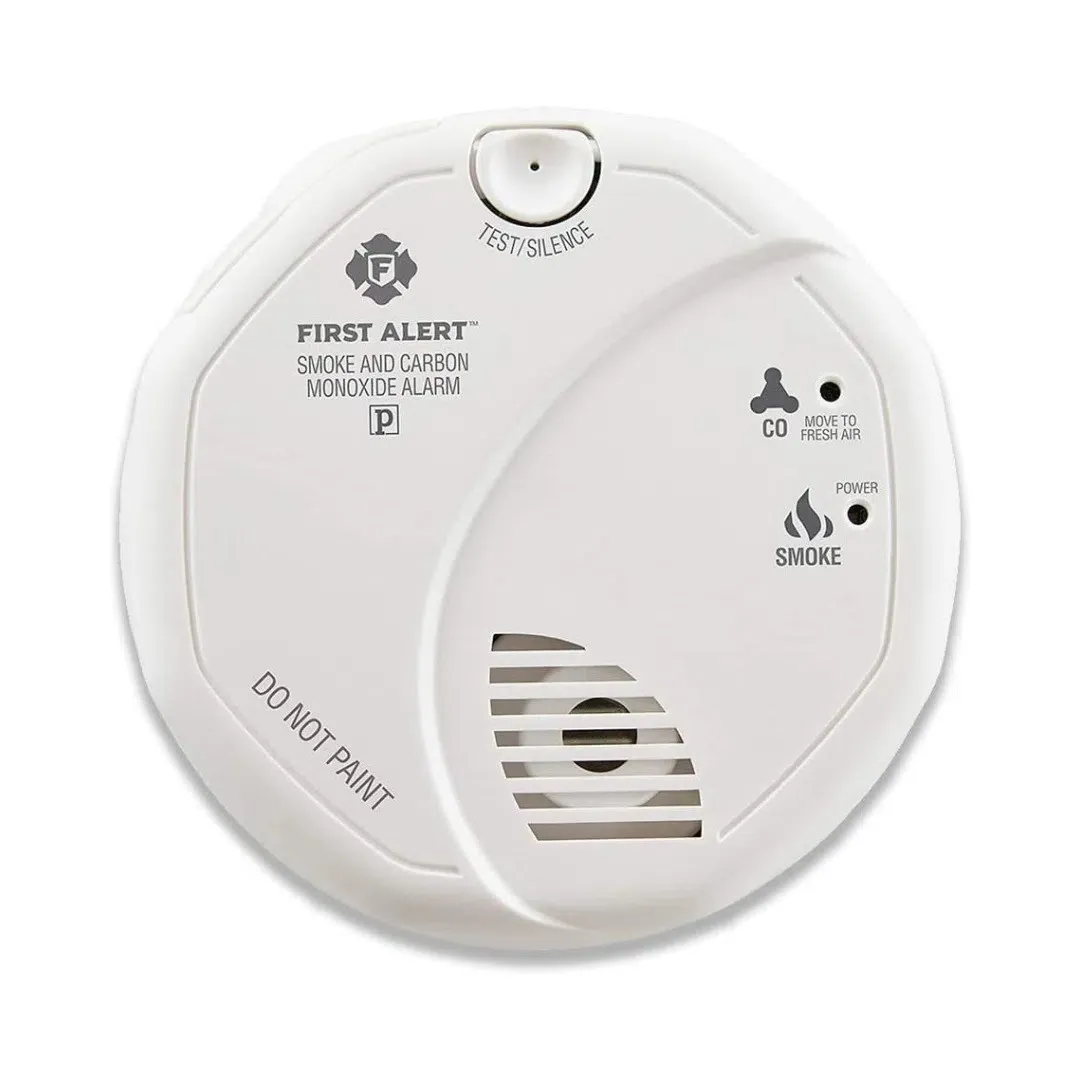
Best Visual Alerts First Alert Smoke and Carbon Monoxide Detector
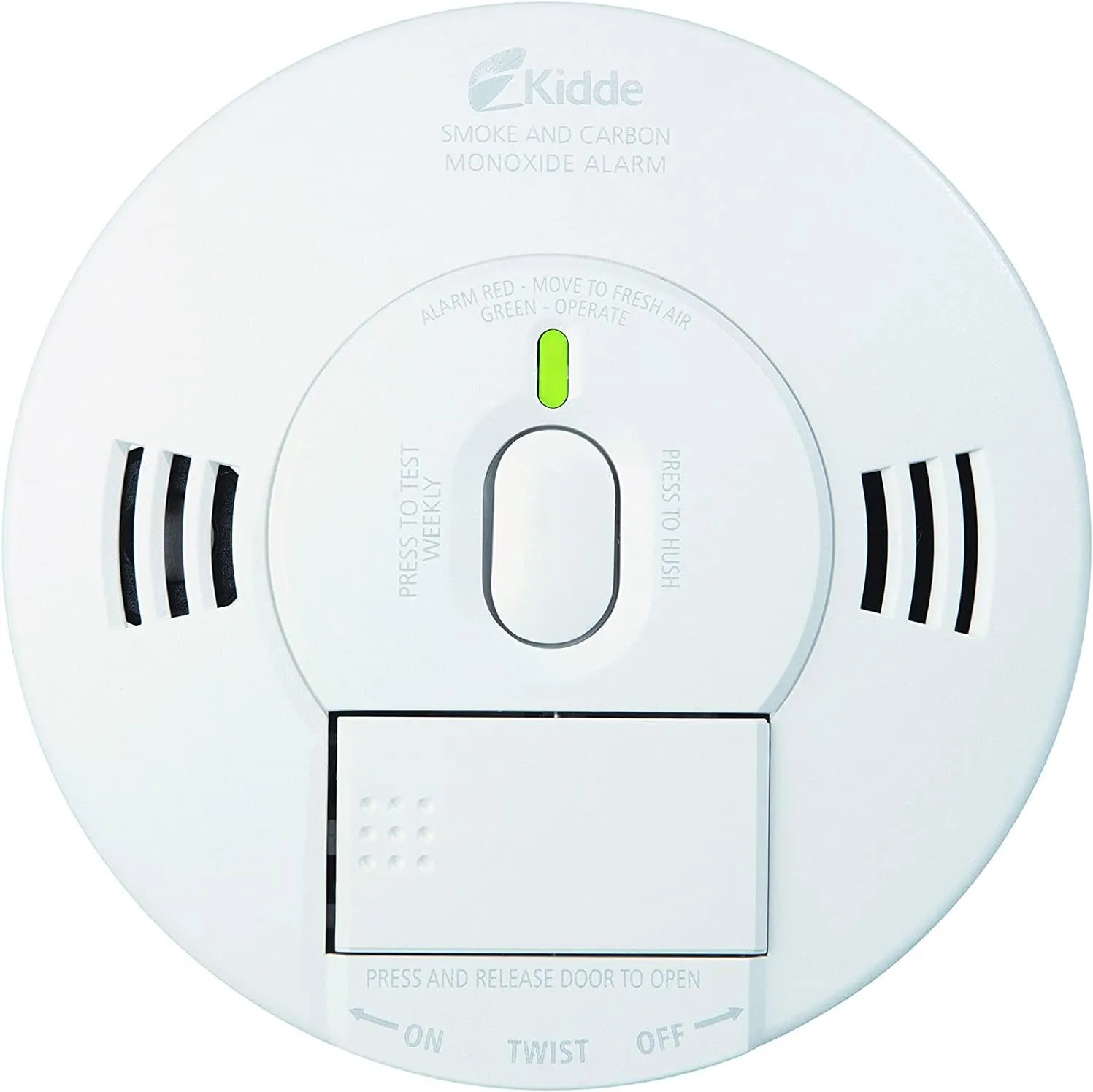
Best Pack Options Kidde Smoke & Carbon Monoxide Detector
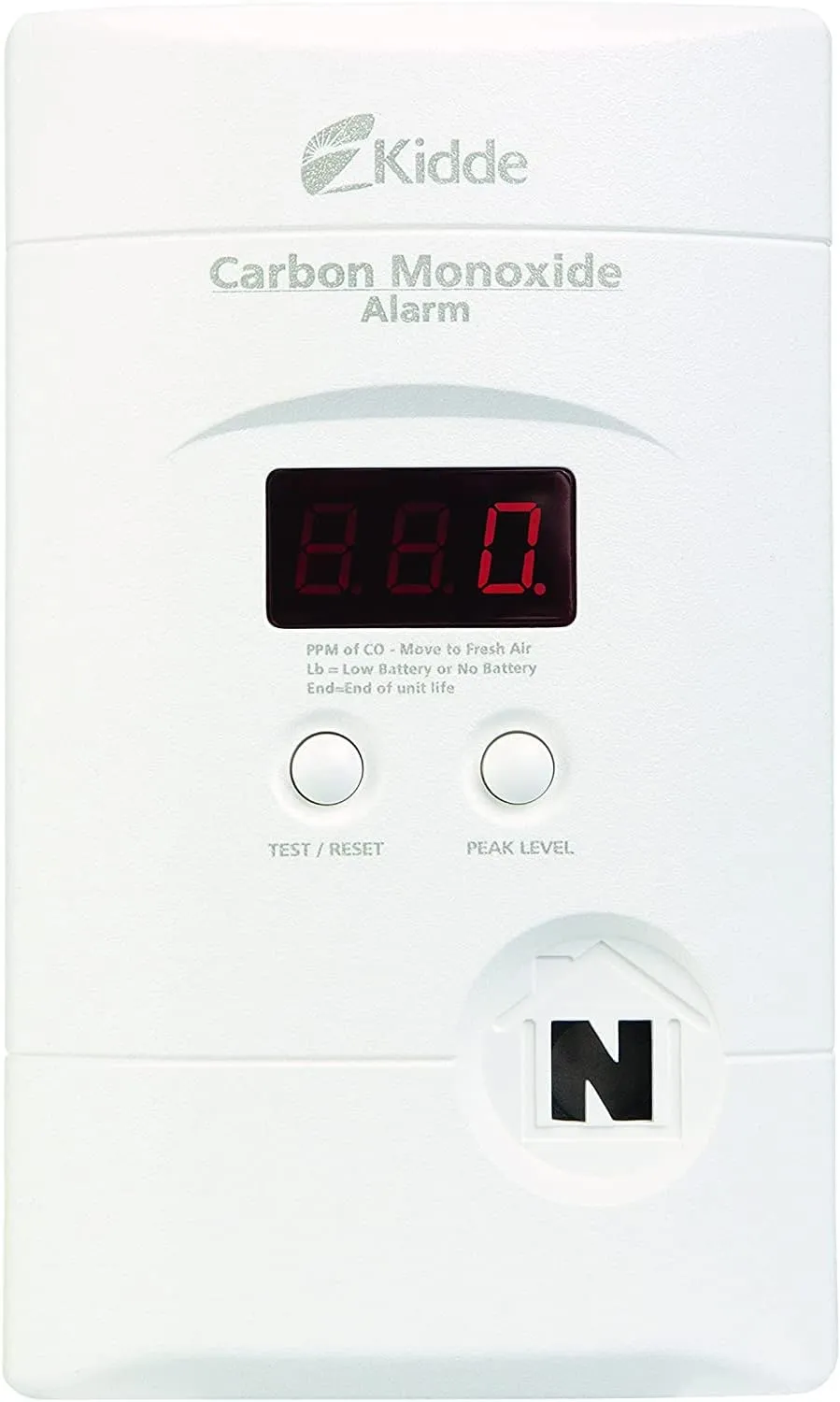
Best Plug-In Kidde Nighthawk Carbon Monoxide Detector
Top 7 Carbon Monoxide Detectors
- Best Visual Alerts: First Alert Combination Smoke and Carbon Monoxide Detector
- Best Pack Options: Kidde Smoke & Carbon Monoxide Detector
- Best Plug-In Detector: Kidde Nighthawk Carbon Monoxide Detector
- Best Lifespan: X-Sense Smoke and Carbon Monoxide Detector
- Best Smart Detector: Google Nest Protect Smoke Detector and Carbon Monoxide Detector
- Best Compact: First Alert CO710 Carbon Monoxide Detector
- Best Portable: GZAIR Travel Carbon Monoxide Detector
Compare Top Carbon-Monoxide Detectors
Best visual alerts.
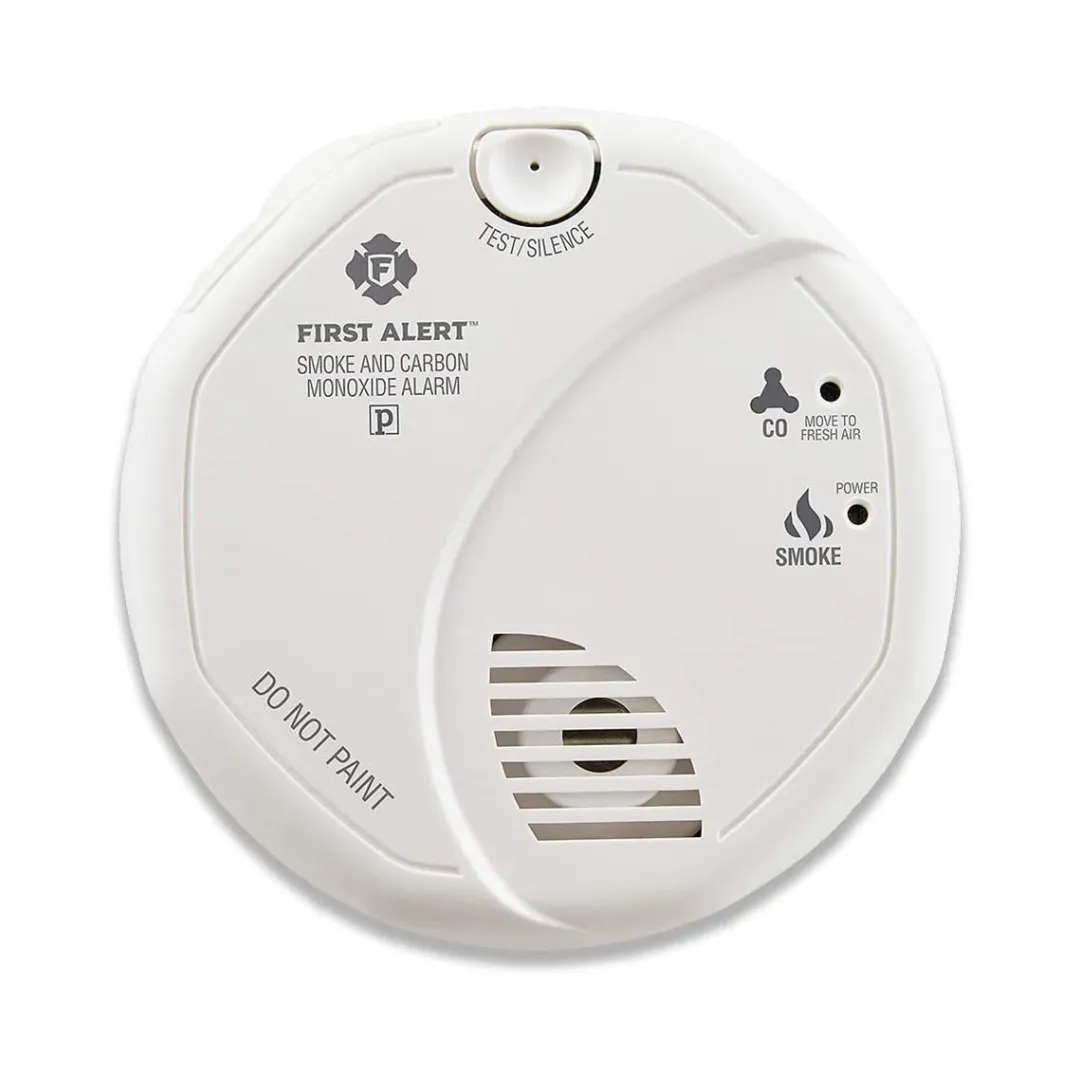
First Alert Combination Smoke and Carbon Monoxide Detector
Prices taken at time of publishing.
- $48.55 at Amazon
What Customers Are Saying
Customer reviews we found said that this detector was easy to install, had a loud alarm, and offered a lot of features. Those who were disappointed with the product said that it malfunctioned after a few months of use. “ If you sleep through this, you’re probably dead and don’t know it! The installation was easy; just the wood panel at my place held it securely. It replaced another brand that was supposed to last ten years. Well, it didn’t, and rather than upgrade through them, I passed and bought this unit. It is loud, and I am hard of hearing. I think you will be satisfied with the installation and the easy-to-replace AA batteries .” —R. Elliott via Amazon “We bought this smoke detector two years ago. It has just given off the three chirps, which indicates it is malfunctioning and needs to be replaced. The average life span of smoke detectors is 10 years, so this severely missed the mark. At least it let us know it was failing.” — Natalie De Moss via Amazon
Best Pack Options
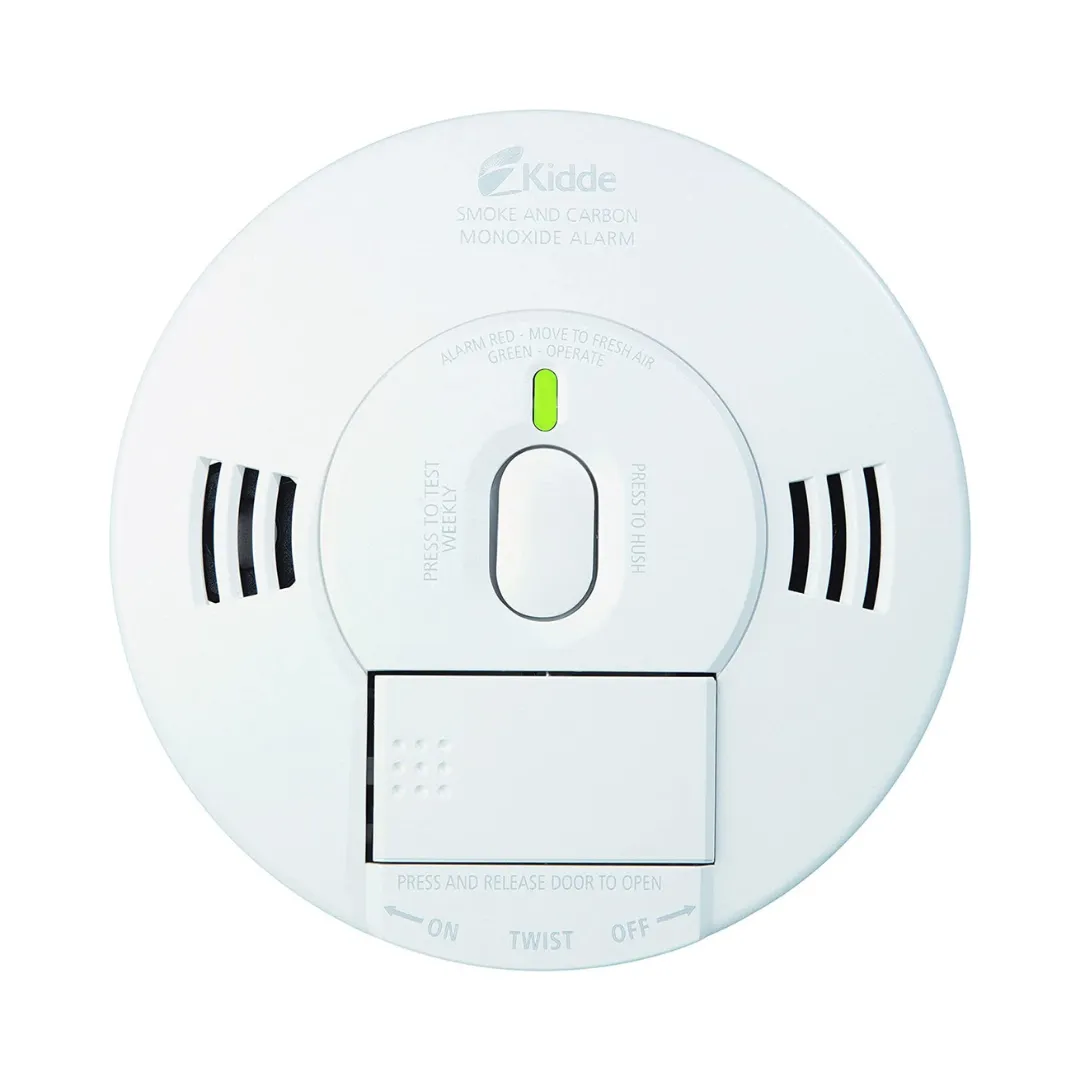
Kidde Smoke & Carbon Monoxide Detector
- $110 at Amazon
Customers praised this device’s low noise level, long-lasting battery life and ease of installation. We also noted that those who didn’t enjoy their purchase said that they were missing parts, and others said they had an issue with false alarms going off consistently. “They say you need to replace your smoke/CO detectors every 10 years. Our old detectors were in need of changing. We purchased these because we got a better value. These are hardwired and battery backup detectors. These also talk – if there is a fire, it will say fire, and if there is CO, it will say CO. You will know what the problem is when it goes off.” —CM Turner via Amazon “ Worked fine for a while, occasional false alarms, but was able to hush swiftly. However, I’m now trying to sell my house. As we were moving out, the alarms started sounding off for smoke and CO detection 24/7. Unable to turn them off with hush/test button, they are hardwired, so removing the battery was not an option. I had to turn off the breaker just to keep my sanity and that of the handymen working on the house. I will now have to fork out more money to get new ones .” —llbm via Amazon
Best Plug-In Detector
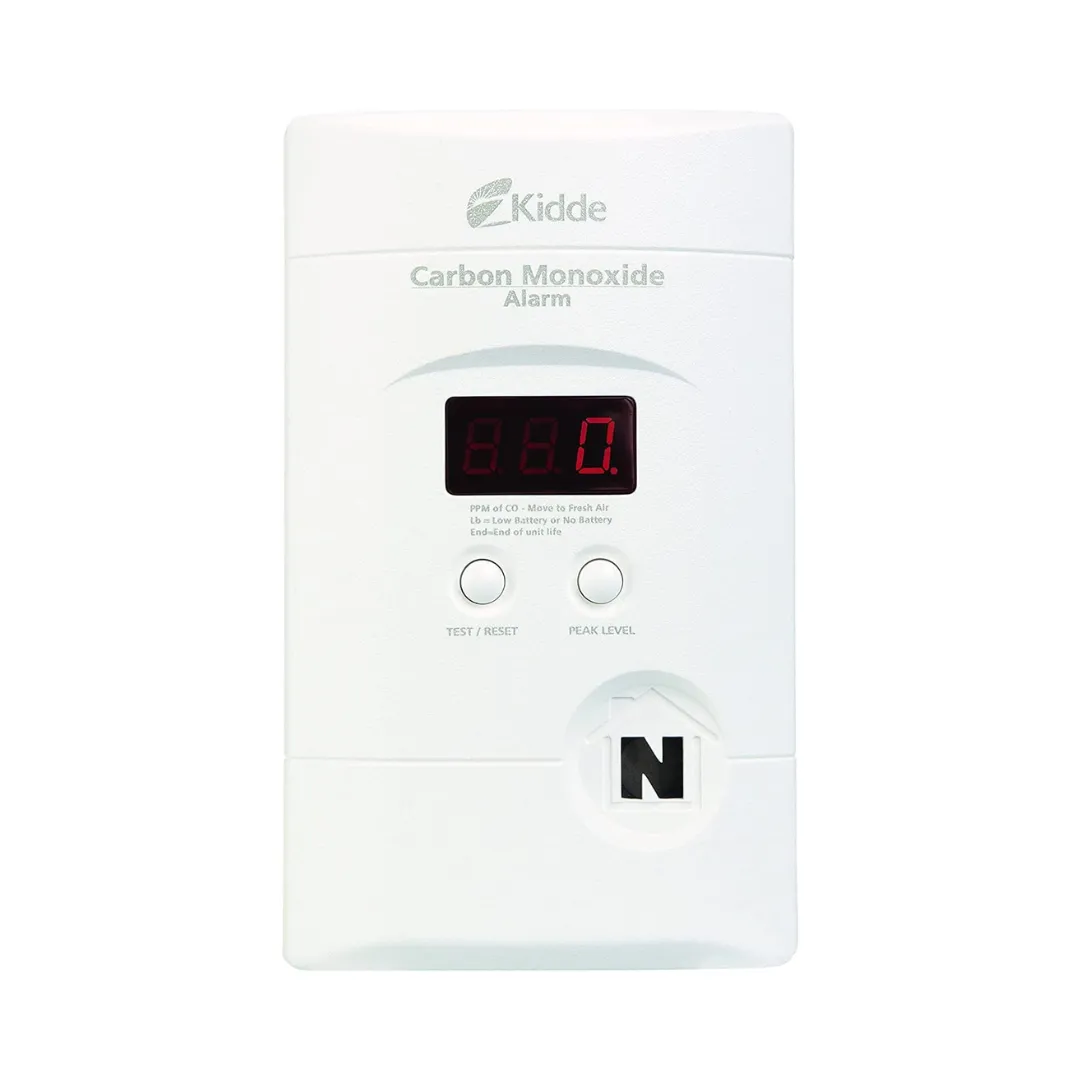
Kidde Nighthawk Carbon Monoxide Detector
- $35.9 at Amazon
Our research showed that customers who left poitive reviews for this carbon monoxide detector said that it was easy to install and provided peace of mind. However, some reviewers had difficulty utilizing the manufacturer’s limited warranty.
“A bright LED is much better than the dim LCD displays. You can read it from across the room or in the garage. The default display is the CO level, the main data you are monitoring. Unlike other brands you don’t have to find and press a button to read the CO level. So you can monitor it for a trend before the level reaches the threshold that sets off an alarm. The others have temperature as the default display. I don’t buy one of these because I want a thermometer.” —Ted via Amazon
“I purchased the unit from Amazon in December 2021. It says 10-year warranty. It was beeping this morning, readings were at zero, so I figured it was the battery. Changing the battery didn’t help, plus the old battery was tested and was still good. The unit shouldn’t be malfunctioning after a year and change. I put a unit from the living room into the bedroom, and the CO readings are fine, so it’s the unit.” —Audrey Q. via Amazon
Best Lifespan
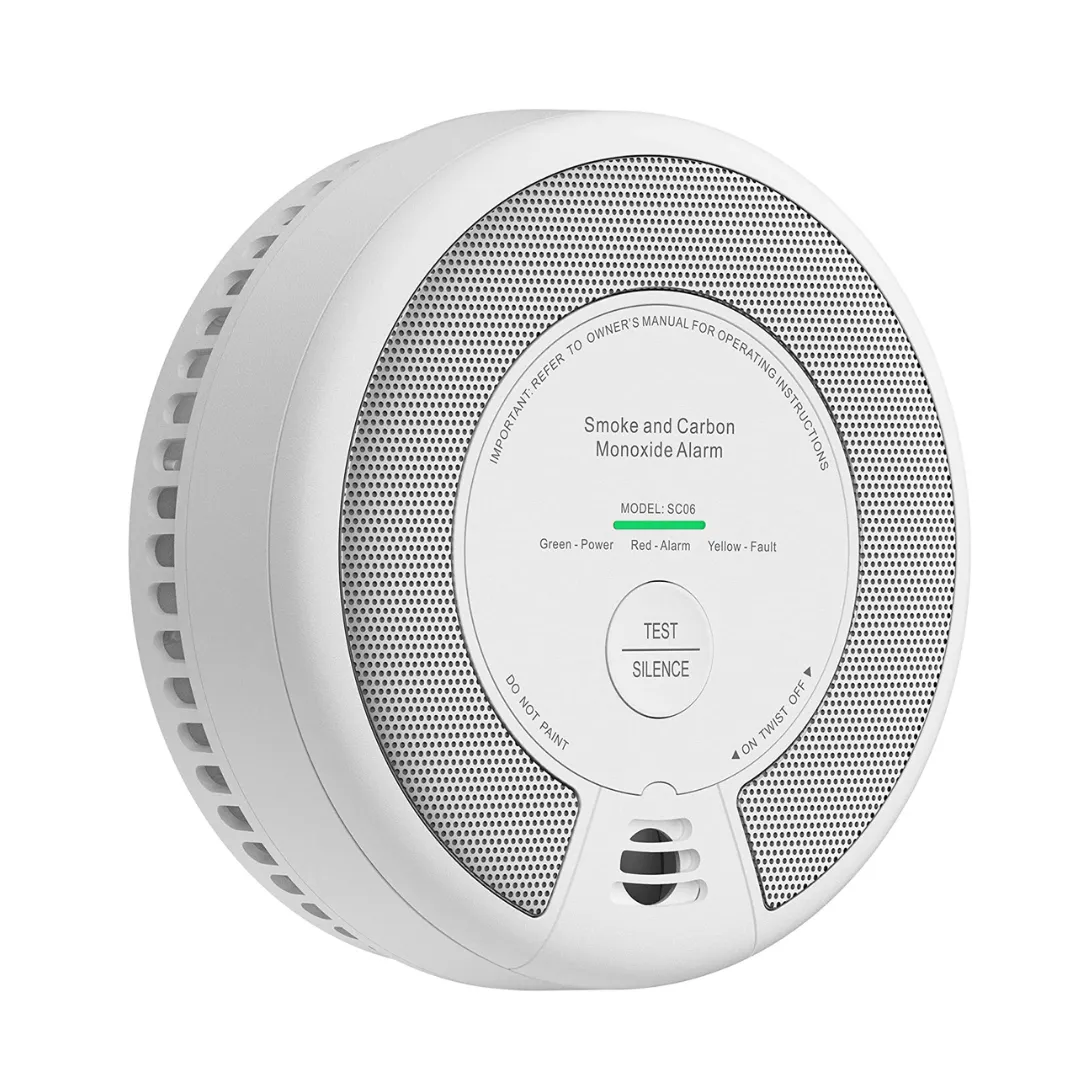
X-Sense Smoke and Carbon Monoxide Detector
- $29.99 at Amazon
Most reviewers we found were satisfied with the detector, saying that it was well-made and a good value. A lot of customers appreciated the light indicator that was paired with the alarm. Those who were unsatisfied with their purchase said that mounting the device to a wall.
“These CO and smoke detectors are easy to install, and they really look nice compared to the 20-year-old ones we replaced them with. While testing them, there are distinct beeps for smoke and for CO. The 10-year battery is a great feature as well. I have bought enough to replace all of my old ones. —Kansas. via Amazon “Even though this unit is not wired, I would expect that many (if not most) customers will be replacing wired detectors. Not having mounting holes that line up with a standard ceiling electrical box if a very poor design. I had to drill holes into very dry wallboard, and while the units are up, I am concerned about durability over many removals and re-installs for the frequent recommended cleaning.” —Jim Rogers via Amazon
Best Smart Detector

Google Nest Protect Smoke Detector and Carbon Monoxide Detector
- $119.01 at Amazon
Several customers we found said that they loved the design, light feature, and motion detection of this device. We also noted that some of those who were unsatisfied with their purchase said that it was more difficult to install than basic devices because of the smartphone setup.
“I got this for the area where my child’s room is. With transitioning them to their own area, this gives me comfort way more than the normal detectors. I love that I can check status whenever and set up was very easy. Worth it!” — Ben via Amazon
“Installation was a nightmare. It turns out the install program crashes constantly on iOS. The only thing you can do is delete all Nest messages inside the app (seriously) and then it will only crash one in five times as opposed to 19 in 20 times. One installed detector refused to add itself to the network. It got fixed with the help of excellent user support, but it was a wasted hour.” — ITM via Amazon
Best Compact
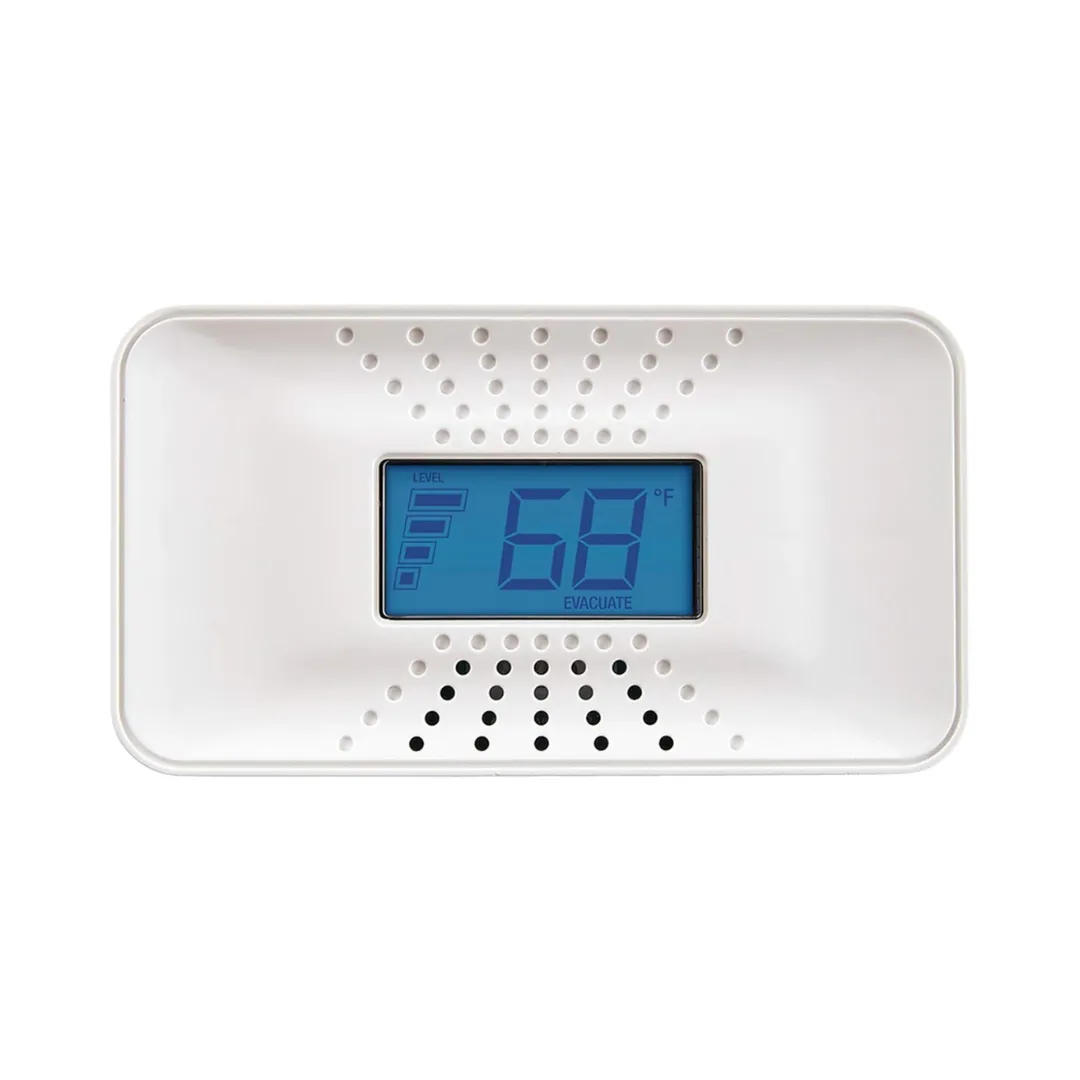
First Alert CO710 Carbon Monoxide Detector
- $40.41 at Amazon
We noted that customers who gave this product positive reviews liked that it had easy installation, and was perfect for small spaces. Several others liked that it had a 10-year battery. However, some reviewers did feel that the display was not large enough, and others found it difficult to display PPM numbers.
“Easy install. Nice appearance, reasonable size and even displays temperature.” —J. Samuelson via Amazon
“If you push the button a few times, you can access the memory, but it does actively display parts PPM. only temperature. This feature is the main reason I purchased this one. The info leads to this being a setting, but the instructions only cover checking the memory.” —Mathew Habicht via Amazon
Best Portable
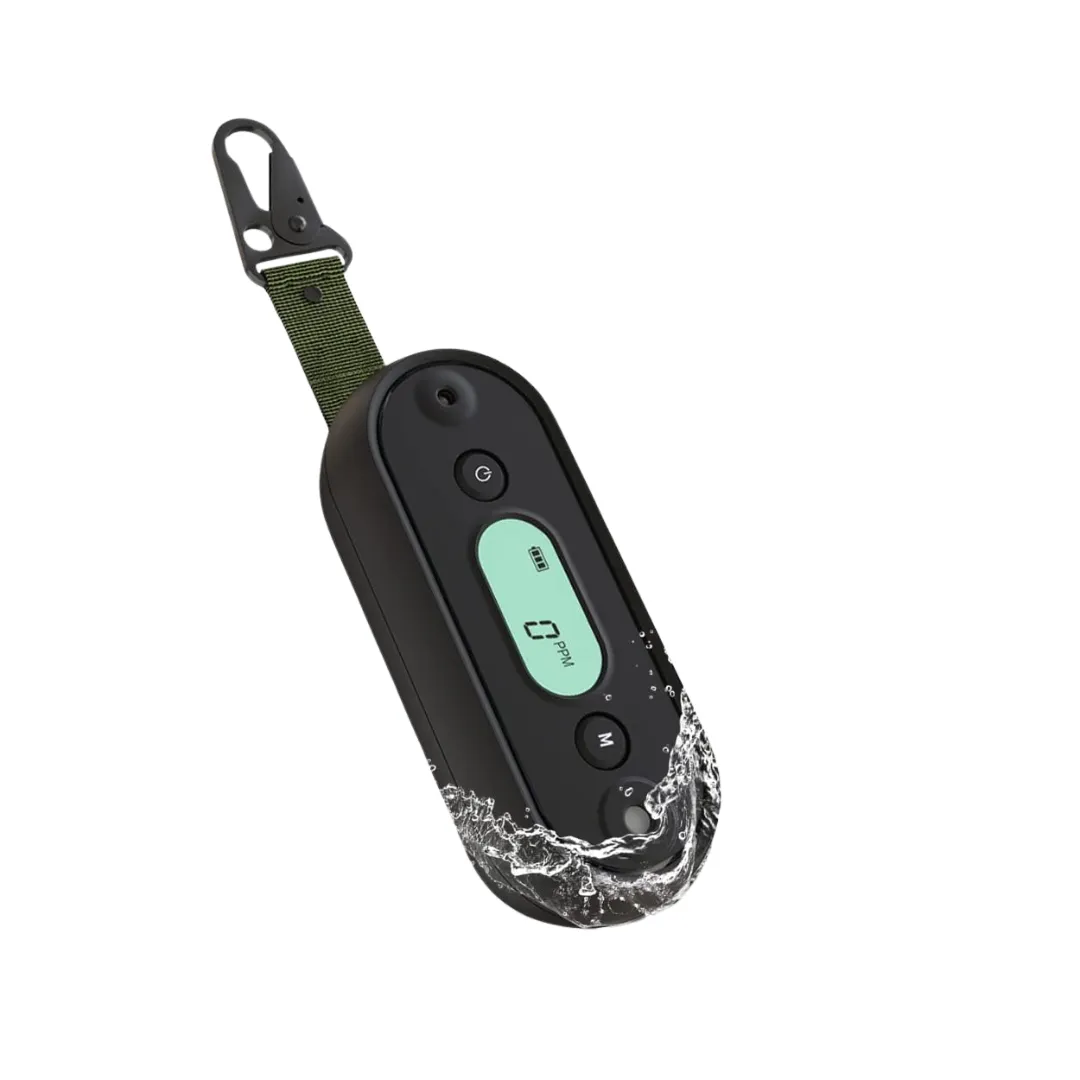
GZAIR Travel Carbon Monoxide Detector
- $116 at Amazon
Our research showed that several reviewers who liked this carbon monoxide detector were impressed with its easy portability and straightforward setup. Others were impressed with its vibration alert system when CO was detected. However, there were some reviewers who felt that swapping the battery was challenging and that it didn’t always reset properly after sensing exposure.
“This is a great device that is good for travel. My wife hears horror stories of people dying in resorts from carbon monoxide poisoning, so you bet we have to travel with one of these things. The buttons and controls are simple, and easy to use. It is not easy to accidentally turn on in a bag of luggage. The waterproof and durable features are great!” — Jake & Kait via Amazon
“ Also, after my test readings the unit failed to completely reset to 0 (It also has a peak value memory, that was fine). It sat around 16 on the first time and 10 on the second test. This was even though I was in known clean air. To get it back to 0 I had to turn it off and on again and let it go through it’s calibration cycle. But the important part was that it did register and alarm.” — DoverNH via Amazon
What Are the Biggest Factors When Buying a Carbon Monoxide Detector?
Not every carbon monoxide detector is the same, and the best model for your home will depend on what features are most important to you. Some things you should keep an eye on are the power source of the device, its functionality, alert volume and display, and interconnectivity. Read our buying guide below for more information about carbon monoxide detectors.
Power Source
Carbon monoxide detectors are either battery-operated, plug-in, or hardwired.
- Battery: These detectors work even if your power goes out because they run on standard AA batteries or AAA batteries. However, the batteries only last about a year before they need to be replaced. The device will usually chirp to tell you when you have low battery. Occasionally, battery-operated detectors will use lithium batteries, which don’t need to be changed since they last for the entire lifespan of the detector.
- Plug-in: Plug-in models plug into an outlet. They usually come with a battery backup to continue working during a power outage.
- Hardwired: This type of detector is hardwired to your home’s circuitry. Similar to plug-in models, hardwired carbon monoxide models don’t work during power outages unless they have a battery backup.
Most smoke alarms detect more than just carbon monoxide. The most common second function you’ll find in a carbon monoxide detector is smoke and fire detection , but you can also find devices that detect natural gas.
Some detectors have a digital display that allows you to determine if there’s any carbon monoxide in your home, even if it’s a small amount that won’t hurt you. If your carbon monoxide detector doesn’t have a digital display, it’ll likely beep when the level of carbon monoxide in the air reaches a dangerous level.
Alert Volume
The CO detector should be loud enough to wake you up and to be heard from every part of the home, particularly in sleeping areas whenever there is a detection of CO poisoning. Most detectors have a CO alarm that’s at least 85 decibels. However, the alarm will be quieter from across the home, which is why it’s important to have more than one installed. Some alarms also include voice alerts notifications that describe what the specific alarm is.
Interconnectivity
As previously mentioned, you’ll need to install several carbon monoxide detectors in your home if it’s relatively large. This will help you hear the alarm from anywhere in your home and ensure that you’re getting accurate carbon monoxide readings throughout your home. If you purchase several of the same model, you’ll be able to connect the devices to ensure that if one detects carbon monoxide, all of them will beep to alert you.
The sensors in your detector will typically wear out after five to 10 years. Consider replacing your device around this timeframe.
What Could Cause a Carbon Monoxide Leak?
There are numerous things in and around your home that could lead to a carbon monoxide leak, making it even more essential to stay well-equipped with a high-quality, working carbon monoxide detector. Here are some of the biggest reasons why a carbon monoxide leak could occur.
- Faulty or poorly maintained appliances : Gas-powered furnaces, water heaters, stoves, ovens, fireplaces, and other fuel-burning appliances can release carbon monoxide if they are malfunctioning or not properly maintained. The most frequent cause is due to issues with ventilation, burner problems, or blocked exhaust flues.
- Inadequate ventilation : Proper ventilation is crucial for removing combustion byproducts, including carbon monoxide, from indoor spaces. If a home’s ventilation system is not functioning correctly or if there are obstructions in vents, CO can build up indoors.
- Cracked or damaged heat exchangers : In gas furnaces, heat exchangers are designed to separate combustion gases from the heated air circulated through the home. If the heat exchanger is cracked or damaged, it can allow carbon monoxide to mix with the indoor air.
- Blocked chimneys or flues : Chimneys and flues are responsible for venting exhaust gases safely to the outside of your home. If they become blocked or clogged with debris, it can cause a backdraft, allowing carbon monoxide to enter the living spaces.
- Using outdoor equipment inside : Using generators, grills, or other gasoline-powered equipment indoors or in enclosed spaces can produce high levels of CO. These items should always be used outdoors in well-ventilated areas.
- Vehicle exhaust in attached garages : When a vehicle is left running in an attached garage, carbon monoxide can seep into the living areas of the house. It is essential to open the garage door before starting the car and to avoid running vehicles inside the garage.
Frequently Asked Questions About Carbon Monoxide Detectors
Who is at risk of carbon monoxide poisoning.
If you have a carbon monoxide leak in your home, infants, young children, the elderly, and people with chronic heart disease, anemia, or respiratory problems are at a higher risk of carbon monoxide poisoning.
What are the symptoms of carbon monoxide poisoning?
Symptoms of carbon monoxide poisoning look similar to those of the flu. You may experience the following if you’re exposed to high CO levels.
- Upset stomach
- Confusion/disorientation
Am I supposed to test my carbon monoxide detector?
Yes. You should test your detector at least once a month. Most models will have a button on them that you can press. When you press that button, the device should sound the same alarm that would go off if carbon monoxide is detected.
Where should I put my carbon monoxide detectors?
You should have a carbon monoxide detector on every floor of your home and 15 – 20 feet from your furnace or another fuel-burning heat source. If you want more protection, you can place a carbon monoxide detector outside of every bedroom.
Why Trust The This Old House Reviews Team
This Old House has empowered homeowners for more than four decades with top-notch home improvement content in the form of television programs, print media, and digital content on its website and social media platforms. The This Old House Reviews Team focuses on creating in-depth product and service review content to help inform your purchasing decision for just about any item or resource that you might need for your home. The This Old House Reviews Team has written over 1,000 reviews on products in the home space, from cordless drills to kitchen trash cans, lawn mowers, and dining room decorations.
We recommend products in each review using an intensive research process, spending hours combing through the best available models on Amazon. For a product to make our list of top picks, it must hold a solid sales record on Amazon, have consistently positive customer reviews, and offer unique features, among other factors. After narrowing down our list of recommendations, we conduct additional research and sometimes in-person testing to ensure that the products meet our standards. Once we conclude the research phase, we craft a well-rounded, user-friendly article that includes our recommended products and additional information to help homeowners like you make the right purchase.
To share feedback or ask a question about this article, send a note to our Reviews Team at [email protected] .
Next Up In Home Safety
- How To Repair Damage After a House Fire
- How to Harden Your Home Against Wildfire
- Understanding Radon Testing
- Understanding Asbestos Safety
- Understanding Low-Level CO Monitors
- Understanding Smoke and Carbon Monoxide Detectors
Get the latest This Old House news, trusted tips, tricks, and DIY Smarts projects from our experts–straight to your inbox.
Advertisement
Supported by
Fact-Checking Claims About Tim Walz’s Record
Republicans have leveled inaccurate or misleading attacks on Mr. Walz’s response to protests in the summer of 2020, his positions on immigration and his role in the redesign of Minnesota’s flag.
- Share full article

By Linda Qiu
Since Gov. Tim Walz of Minnesota was announced as the Democratic nominee for vice president, the Trump campaign and its allies have gone on the attack.
Mr. Walz, a former teacher and football coach from Nebraska who served in the National Guard, was elected to the U.S. House of Representatives in 2006 and then as Minnesota’s governor in 2018. His branding of former President Donald J. Trump as “weird” this year caught on among Democrats and helped catapult him into the national spotlight and to the top of Vice President Kamala Harris’s list of potential running mates.
The Republican accusations, which include questions over his military service , seem intended at undercutting a re-energized campaign after President Biden stepped aside and Ms. Harris emerged as his replacement at the top of the ticket. Mr. Trump and his allies have criticized, sometimes inaccurately, Mr. Walz’s handling of protests in his state, his immigration policies, his comments about a ladder factory and the redesign of his state’s flag.
Here’s a fact check of some claims.
What Was Said
“Because if we remember the rioting in the summer of 2020, Tim Walz was the guy who let rioters burn down Minneapolis.” — Senator JD Vance of Ohio, the Republican nominee for vice president, during a rally on Wednesday in Philadelphia
This is exaggerated. Mr. Walz has faced criticism for not quickly activating the National Guard to quell civil unrest in Minneapolis in the summer of 2020 after the murder of George Floyd by a police officer. But claims that he did not respond at all, or that the city burned down, are hyperbolic.
Mr. Floyd was murdered on May 25, 2020, and demonstrators took to the streets the next day . The protests intensified, with some vandalizing vehicles and setting fires. More than 700 state troopers and officers with the Minnesota Department of Natural Resources’ mobile response team were deployed on May 26 to help the city’s police officers, according to a 2022 independent assessment by the state’s Department of Public Safety of the response to the unrest.
But the report noted that issues with communication delayed the deployment of the state National Guard.
The mayor, Jacob Frey, asked Mr. Walz to activate the National Guard the night of May 27. An aide to Mr. Frey texted a colleague around 8 p.m. that Mr. Walz was “hesitating,” documents obtained by the local news media show . The Trump campaign cited these records as evidence of Mr. Walz’s refusal to act.
Mr. Walz has argued that he did not believe Mr. Frey “knew what he was asking for,” and that the mayor did not specify the number of troops, their mission or their abilities.
The city’s police department submitted a written request the night of May 27 for 600 guardsmen. State officials said that the request was not specific enough and that they were waiting for more detail before approving the request, but that city officials were not aware that more detail was needed, according to the 2022 report.
Mr. Frey sent a formal request for troops the morning of May 28, and Mr. Walz activated the National Guard shortly afterward — two days after protests had begun. The Guard tweeted at about 4 p.m. local time that it was ready to respond to the governor’s request.
By that time, one of the city’s police precincts had already been damaged by fire. The Trump campaign also noted that a police officer testified in 2020 that she had heard “thirdhand” that Mr. Walz had said to “give up the precinct”; at the time, a spokesman for Mr. Walz disputed that characterization.
It is also worth noting that Mr. Trump, in a June 2020 phone call with governors, praised Mr. Walz’s response: “Tim Walz. Again, I was very happy with the last couple of days, Tim. You called up big numbers and the big numbers knocked them out so fast.”
“I know him a little bit. I helped him during the riots because his house was surrounded by people that were waving an American flag — doesn’t sound like very bad people. He called me and he was very concerned, very, very concerned that it was going to get out of control. They only had one guard, I guess, it was at the mansion or his house in some form. And he called me. And I said what do you want me to do about it? I was in the White House. He said if you would put out the word that I’m a good person. And I did. I put out the word.” — Mr. Trump in an interview on Fox News on Wednesday
This is misleading. Mr. Trump’s version of events is wrong on several details, and Mr. Walz’s own account noticeably differs.
On April 17, 2020 — more than a month before George Floyd’s murder — hundreds of demonstrators gathered in front of Mr. Walz’s residence to protest a stay-at-home order the governor had imposed because of the coronavirus pandemic.
That morning, Mr. Trump had written on social media, “LIBERATE MINNESOTA!,” along with calls to “liberate” other states under lockdown orders.
That day, Mr. Walz said he had tried unsuccessfully to call Mr. Trump and Vice President Mike Pence to ask “what they think we could have done differently” to respond to the spread of the virus.
Three days later, on April 20, Mr. Trump wrote that he had received a “very nice call” from Mr. Walz and that “good things are happening.”
In a news conference that day, Mr. Walz said that he had a “very good and long conversation” with Mr. Trump on April 18 — after the protesters had left — about the need for more personal protective equipment and testing abilities.
In an interview with Politico in September 2021 published this week, Mr. Walz said that Mr. Trump’s tweet had “brought armed people to my house” and that Mr. Trump had never responded when he asked what “liberate Minnesota” meant.
“Tim Walz went on TV to talk about trying to help illegal aliens climb over the border wall. Tim Walz championed government-issued IDs, driver’s licenses for illegal aliens, which results in countless motorists being killed each and every year. Tim Walz championed free health care for illegal aliens, which will bankrupt America.” — Stephen Miller, a former Trump administration official, in an interview on Fox News on Tuesday
This is exaggerated. Mr. Miller distorted comments Mr. Walz made regarding a border wall. He is correct that Mr. Walz signed legislation allowing unauthorized immigrants to obtain driver’s licenses and giving them publicly subsidized health care coverage through a state program for low-income individuals. But while Mr. Walz championed eligibility expansion, it is unclear whether he supported the health care expansion.
In 2023, Mr. Walz signed legislation expanding driver’s license eligibility to all residents of the state, regardless of immigration status. In a news release , he said he was a “longtime supporter of the bill” and expressed pride at the measure, saying it would make roads safer.
That May, Mr. Walz also signed a budget deal into law that, among other provisions, allowed unauthorized immigrants to enroll in MinnesotaCare , the state’s program for low-income residents. Mr. Walz’s budget had proposed expanding eligibility only to undocumented immigrants under 19, and a local publication reported that he opposed allowing undocumented adults to also have access to the program. His news release at the time did not mention the expansion. Additionally, MinnesotaCare provides subsidized, but not always free insurance. The health care program is funded in part by the state, and the expansion, backed by state money , would not dip into federal coffers and “bankrupt” the country.
Mr. Miller’s comment about Mr. Walz helping immigrants “climb over the border wall” distorts Mr. Walz’s remarks. In an interview last week on CNN , Mr. Walz said that the “United States needs to control its border” but argued that Mr. Trump was “not interested in solving the problem.”
“I always say, let me know how high it is,” he said, wryly expressing the ineffectiveness of a border wall. “If it’s 25 feet, then I’ll invest in the 30-foot ladder factory. That’s not how you stop this.”
He continued, “You stop this using electronics, you stop it using more border control agents, and you stop it by having a legal system that allows for that tradition of allowing folks to come here, just like my relatives did to come here, be able to work and establish the American dream. He’s not interested in that. He wants to demonize.”
“Don’t forget he tried to redesign the Minnesota state flag to look like the Somali national flag. You just can’t get further out there in America.” — Representative Andy Biggs, Republican of Arizona, in an interview on a right-wing streaming platform on Wednesday
False. Minnesota adopted a new flag on May 11, after a monthslong redesign effort and thousands of public submissions. Mr. Walz had little to do with the design, which pays tribute to various facets of the state — not Somalia.
Prompted by criticism that the state’s old flag was offensive to Native Americans and bore too many similarities to other state flags, Minnesota legislators passed a measure in 2023 establishing a commission to redesign the state’s emblems. Mr. Walz signed that legislation into law. The commission received more than 2,000 submissions from the public through October 2023 and decided on a design in December.
The commission — not Mr. Walz — chose and modified a design by Andrew Prekker of Luverne, Minn. Mr. Prekker, who does part-time work in graphic design, said in an interview on local news that he had researched his concept and tried to create imagery that “represented everyone” in the state. Mr. Prekker told PolitiFact that his flag had nothing to do with Somalia.
The new flag has a white eight-point star (representing the North Star, which is the state’s motto, and the many cultures of the state) splashed on a dark blue background (representing the night sky and the shape of the state) on the left and a bright blue field on the right (representing the state’s 11,000 lakes and 6,000 rivers and streams), according to the commission’s final report.
The flag of Somalia features a white five-pointed star on a blue field.
An earlier version of this article misidentified a Minnesota agency that deployed a mobile response team to help quell unrest in Minneapolis after the murder of George Floyd by a police officer. It was the Minnesota Department of Natural Resources, not the Department of National Resources.
An earlier version of this article misstated the damage to one of Minneapolis’s police precincts. It was damaged by fire but not burned to the ground.
How we handle corrections
Linda Qiu is a reporter who specializes in fact-checking statements made by politicians and public figures. She has been reporting and fact-checking public figures for nearly a decade. More about Linda Qiu
Keep Up With the 2024 Election
The presidential election is 80 days away . Here’s our guide to the run-up to Election Day.

Tracking the Polls . The state of the race, according to the latest polling data.

Election Calendar. Take a look at key dates and voting deadlines.
Swing State Ratings. The presidential race is likely to be decided by these states.

Candidates’ Careers. How Trump, Vance, Harris and Walz got here.

Harris on the Issues. Where Harris stands on immigration, abortion and more.

Trump’s 2025 Plans. Trump is preparing to radically reshape the government.

Download the free Kindle app and start reading Kindle books instantly on your smartphone, tablet, or computer - no Kindle device required .
Read instantly on your browser with Kindle for Web.
Using your mobile phone camera - scan the code below and download the Kindle app.

Image Unavailable

- To view this video download Flash Player
BRONTE & FRANK GO TO MOSCOW (Children's Traveltivity Guide) Hardcover – January 1, 2011
- Print length 50 pages
- Language English
- Publisher Worthy Hen Productions LLC
- Publication date January 1, 2011
- ISBN-10 0615381383
- ISBN-13 978-0615381381
- See all details

Product details
- Publisher : Worthy Hen Productions LLC (January 1, 2011)
- Language : English
- Hardcover : 50 pages
- ISBN-10 : 0615381383
- ISBN-13 : 978-0615381381
- Item Weight : 13 ounces
Customer reviews
- 5 star 4 star 3 star 2 star 1 star 5 star 50% 50% 0% 0% 0% 50%
- 5 star 4 star 3 star 2 star 1 star 4 star 50% 50% 0% 0% 0% 50%
- 5 star 4 star 3 star 2 star 1 star 3 star 50% 50% 0% 0% 0% 0%
- 5 star 4 star 3 star 2 star 1 star 2 star 50% 50% 0% 0% 0% 0%
- 5 star 4 star 3 star 2 star 1 star 1 star 50% 50% 0% 0% 0% 0%
Customer Reviews, including Product Star Ratings help customers to learn more about the product and decide whether it is the right product for them.
To calculate the overall star rating and percentage breakdown by star, we don’t use a simple average. Instead, our system considers things like how recent a review is and if the reviewer bought the item on Amazon. It also analyzed reviews to verify trustworthiness.
- Sort reviews by Top reviews Most recent Top reviews
Top reviews from the United States
There was a problem filtering reviews right now. please try again later..
- Amazon Newsletter
- About Amazon
- Accessibility
- Sustainability
- Press Center
- Investor Relations
- Amazon Devices
- Amazon Science
- Sell on Amazon
- Sell apps on Amazon
- Supply to Amazon
- Protect & Build Your Brand
- Become an Affiliate
- Become a Delivery Driver
- Start a Package Delivery Business
- Advertise Your Products
- Self-Publish with Us
- Become an Amazon Hub Partner
- › See More Ways to Make Money
- Amazon Visa
- Amazon Store Card
- Amazon Secured Card
- Amazon Business Card
- Shop with Points
- Credit Card Marketplace
- Reload Your Balance
- Amazon Currency Converter
- Your Account
- Your Orders
- Shipping Rates & Policies
- Amazon Prime
- Returns & Replacements
- Manage Your Content and Devices
- Recalls and Product Safety Alerts
- Registry & Gift List
- Conditions of Use
- Privacy Notice
- Consumer Health Data Privacy Disclosure
- Your Ads Privacy Choices

IMAGES
COMMENTS
Portable carbon monoxide detectors can be a life-saving travel accessory. Here are the best options to pack for your next vacation.
X-Sense Carbon Monoxide Detector, Replaceable Battery Powered CO Alarm with Digital Display, Portable Carbon Monoxide Detector for Travel, XC0C-SR, 1-Pack 8 50+ bought in past month $1999 Join Prime to buy this item at $15.99 FREE delivery Thu, Aug 22 on $35 of items shipped by Amazon
Our readers share the best portable carbon monoxide detector to take with you so you can relax and enjoy your trip without worry!
These are the best travel carbon monoxide detectors you can buy during the Amazon Prime Day sale.
Carbon Monoxide Detectors,Portable CO Detector,Travel Carbon Monoxide Alarm,CO Monitor with Sensitive CO Sensor,Battery Powered,LCD Digital Display,Sound Warning,Complies with UL 2034 Standards. 2. $1199. Join Prime to buy this item at $9.99. FREE delivery Tue, Aug 20 on $35 of items shipped by Amazon.
11 Best Portable Carbon Monoxide… Carbon Monoxide is a silent killer that often catches people unawares while they're asleep or on a long drive. If you're someone always on the go, it's important to have the best portable carbon monoxide detector for travel installed in your vehicle.
The best handheld carbon monoxide detector is UEi Test Instruments CO71A Carbon Monoxide Detector. It is your go-to place to get a handheld CO detector for both residential and industrial CO use. This is the best handheld multipurpose carbon monoxide detector for the on-the-go with state-of-the-art audio and visual alarms for CO detection.
Travel Carbon Monoxide Detectors Portable with Alarm Standable [3-in-1] CO Detector | Humidity |Temperature Mini Pocket Size Co Gas Monitor Air Quality for Trip Camp RV Car (HD09, Gray) Visit the GRAY RHINO Store 4.2 113 ratings 300+ bought in past month $3699 FREE Returns Coupon: Apply 20% coupon Shop items | Terms
Next time you book a hotel room, rent a vacation home, or travel to see family and friends, make sure to follow our carbon monoxide detector travel tips and pack this life saving, portable device in your bags.
A portable travel carbon monoxide detector is a must-have and must-pack travel accessory. News reports of vacationers killed while sleeping due to Carbon Monoxide poisoning are rare. But they do happen even in luxury hotel rooms, vacation rental homes, and villas. Carbon monoxide poisoning can even happen at home.
The First Alert CO710 Carbon Monoxide Alarm with 10-Year Sealed Battery presents itself as an immediate fix for homeowners and travelers alike. Forgoing hardwired installation, this traveling carbon monoxide alarm can be moved from room to room or be used on the go. No larger than the size of most cellphones, the traveling carbon monoxide ...
Bottom Line. The risk of carbon monoxide or other harmful gases while traveling is extremely low and definitely shouldn't be something that keeps you from traveling or away from specific countries or regions. Having a portable carbon monoxide detector has provided me with additional peace of mind, knowing that even if the hotel or vacation ...
From portable door stop alarms to carbon monoxide detectors, the 10 devices every solo traveler needs. As carefree as travel may appear on social media feeds, the realities can be sobering. Lost ...
If you're looking to purchase a portable carbon monoxide detector for travel, I salute you! You are way ahead of the game my friend.
Find out the risks of carbon monoxide poisoning and whether or not you should travel with a CO detector at a hotel, campground or Airbnb.
About this item 5-Year electrochemical sensor, accurately detects the real-time CO level. IP67 Waterproof Rated. Shock-proof - Passes 20 ft drop test. Battery life of up to 2 years. 9V Lithium battery. Detects Carbon Monoxide from 0-1000 ppm with a 1 ppm resolution. Visual, audio, and vibration alarms when preset levels are reached. Portable and lightweight design with lanyard. One-year ...
A travel carbon monoxide (CO) detector is a portable device designed to monitor and alert users to the presence of this colorless, odorless, and potentially deadly gas when away from home. CO is produced by the incomplete combustion of fuels like natural gas, propane, wood, and gasoline, making it a risk in many travel accommodations and transportation.
Carbon monoxide can be life-threatening if it's found in your home. Our team has written this review on the best carbon monoxide detectors to protect you.
koio.co Cashback Mile/Point Reward Comparison by Cashback Monitor: ...
Answer 1 of 5: Can anyone help? I wish to take this train in April next year. At the moment it runs 3 days/nights a week. From 11th December it goes down to 1 day a week (Friday). My question - is it likely to increase frequency by April? Thanks
Vnukovo Vnukovo District is an administrative district of Western Administrative Okrug, and one of the 125 raions of Moscow, Russia. Most of the district is occupied by Vnukovo International Airport, a small adjacent residential area, and a separate residential micro-district.
3-in-1 Portable Carbon Monoxide Detector, Professional Rechargeable Real-Time Travel CO Monitor 120HR Standby, Premium Reliable CO Detector with Loud Alarm for Air Safety (Grey/Courage)
Pyaterochka Pyaterochka is a supermarket in Vnukovo District, Western Administrative Okrug, Moscow, Moscow Oblast. Pyaterochka is situated close to the shopping ...
Portable Carbon Monoxide Detector for Travel Powered by Battery, 5.3" Mini Pocket Size CO Gas Detector with Alarm, Air Quality Monitor with Lanyard for Basement Trip Camp RV Car (White) 106 100+ bought in past month $1999 Save 20% with coupon FREE delivery Wed, Aug 21 on $35 of items shipped by Amazon
Republicans have leveled inaccurate or misleading attacks on Mr. Walz's response to protests in the summer of 2020, his positions on immigration and his role in the redesign of Minnesota's flag.
Check National Rail live trains real time status and departure boards for all train stations. Get train times, station and platform details before departure.
BRONTE & FRANK GO TO MOSCOW (Children's Traveltivity Guide) [Megan Worthy] on Amazon.com. *FREE* shipping on qualifying offers. BRONTE & FRANK GO TO MOSCOW (Children's Traveltivity Guide)